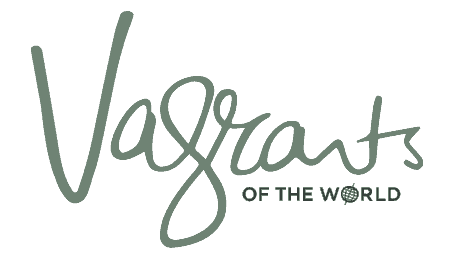

6 Best Places to Travel in the Swiss Alps (2024)
By: Author Kate O'Malley
Posted on Last updated: January 4, 2024
Home >> Europe >> Switzerland >> 6 Best Places to Travel in the Swiss Alps (2024)
Traveling to Switzerland for the first time or on a Swiss Alps adventure? Discover incredible spots in the Swiss Alps!
The allure of a hiking, skiing, and camping itinerary in Switzerland’s stunning Alps attracts millions of visitors yearly.
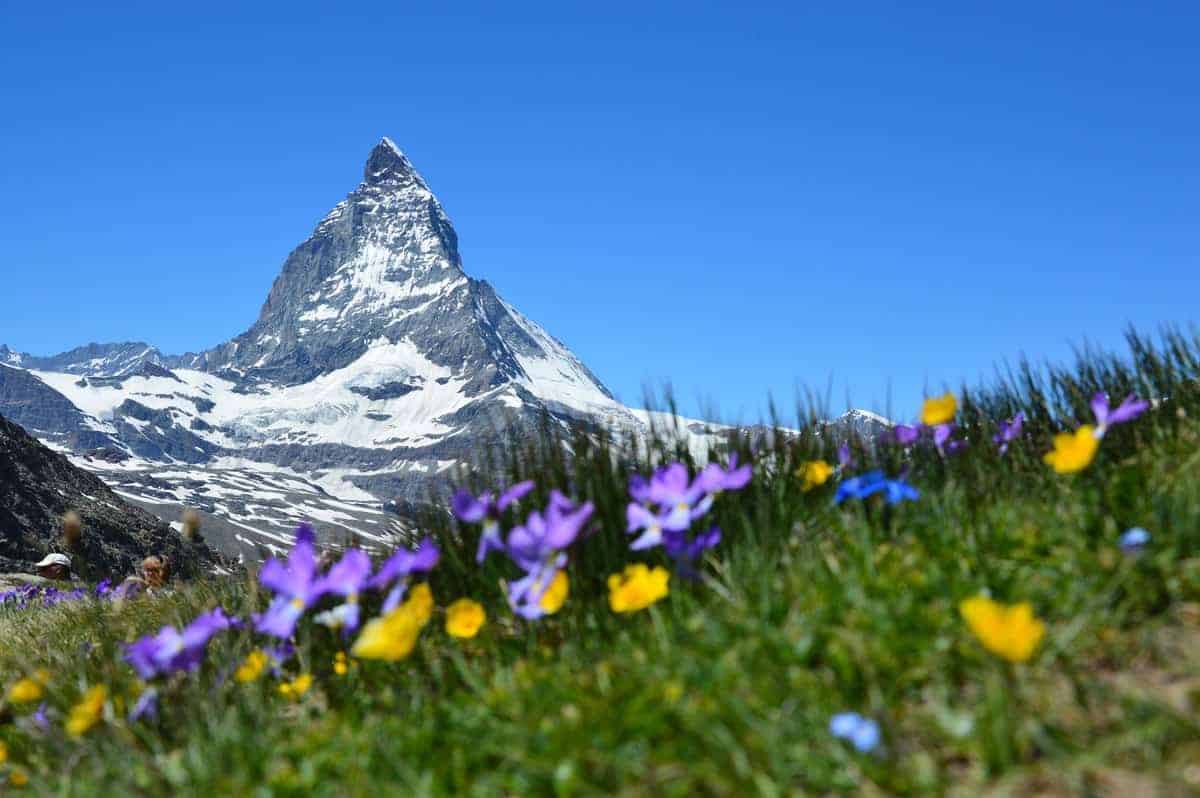
Table of Contents
The Swiss Alps
Switzerland is relatively small, but in spite of this, it is bursting at the seams with natural attractions and boasts some of the most beautiful destinations in the world.
With more than two hundred peaks higher than 3,000 meters above sea level, many of the best places to visit in Switzerland are dominated by glaciers and soaring alps.
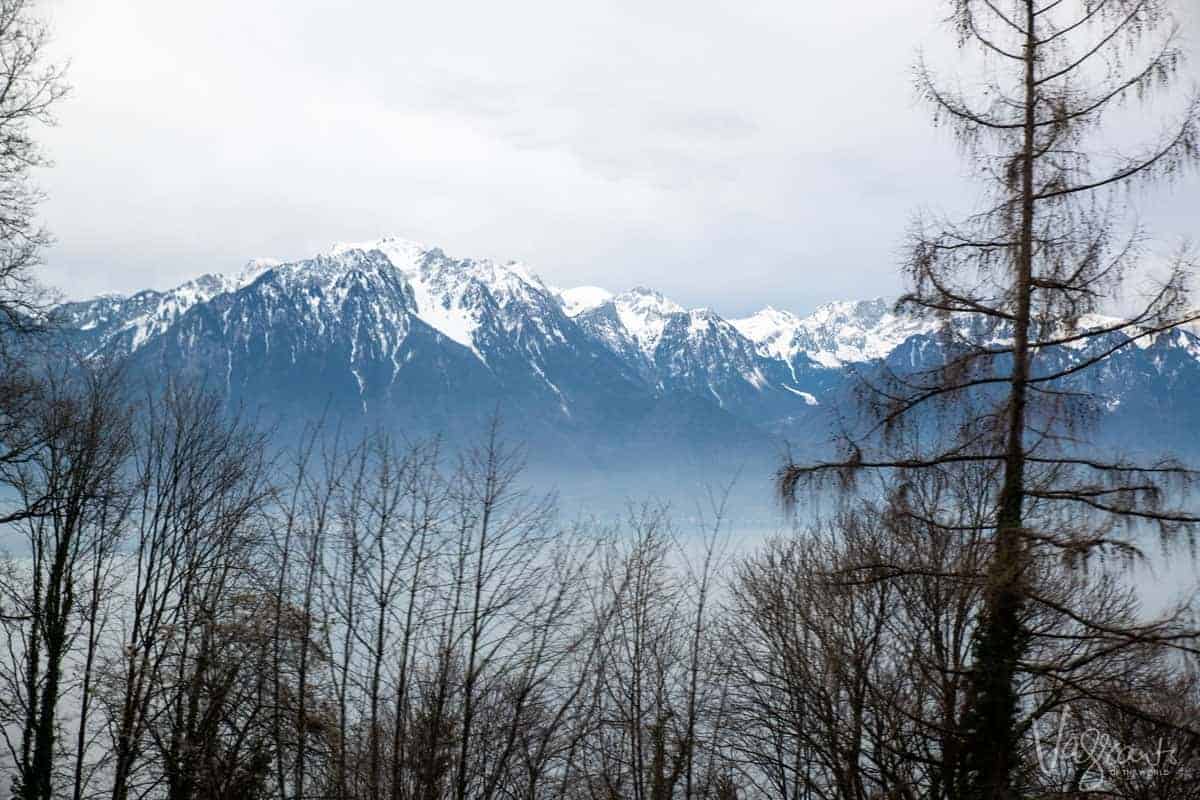
Discover picturesque alpine landscapes offering stunning vistas: crystal-clear lakes, ancient castles, and breathtaking mountain peaks in all directions.
You can also discover much of the country’s cultural heritage when traveling to the Swiss Alps.
From the most beautiful towns in the Swiss Alps to national parks and iconic Swiss landscapes. Here are a few of the most beautiful places to visit in Switzerland.
When is the best time to visit Europe? See our guide on the best time of year to visit Europe based on what you want to see and do.
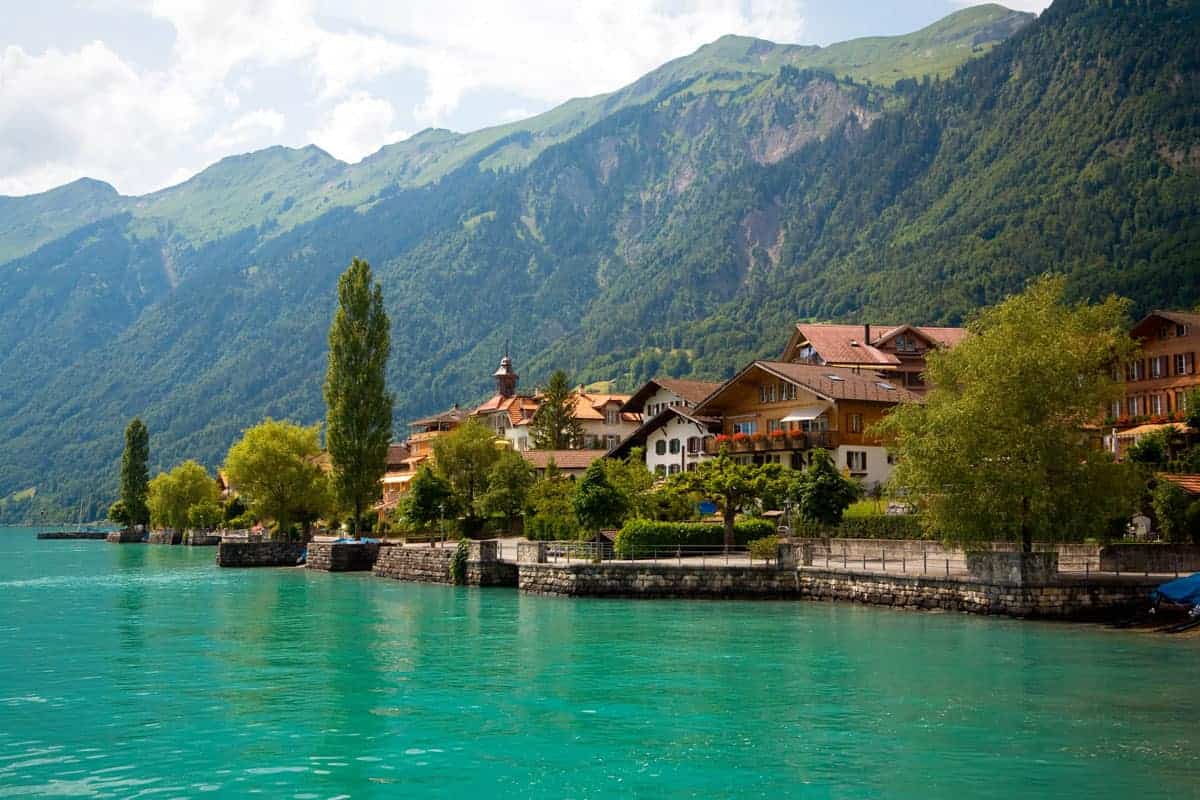
1) Matterhorn and Zermatt
The Matterhorn, a mountain rising to 4,478 meters, straddles Switzerland and Italy, flaunting a near-perfect pyramid shape. It’s among Europe’s highest peaks, and is also a stunning icon in the Swiss Alps.
At the base of the legendary Matterhorn is the village of Zermatt. The mountain resort attracts tourists year-round from all over the world. Zermatt offers a host of stunning vantage points from which to admire and photograph the Matterhorn, which is a site unlike any other. The alpine playground also provides a host of things to do any time of year.
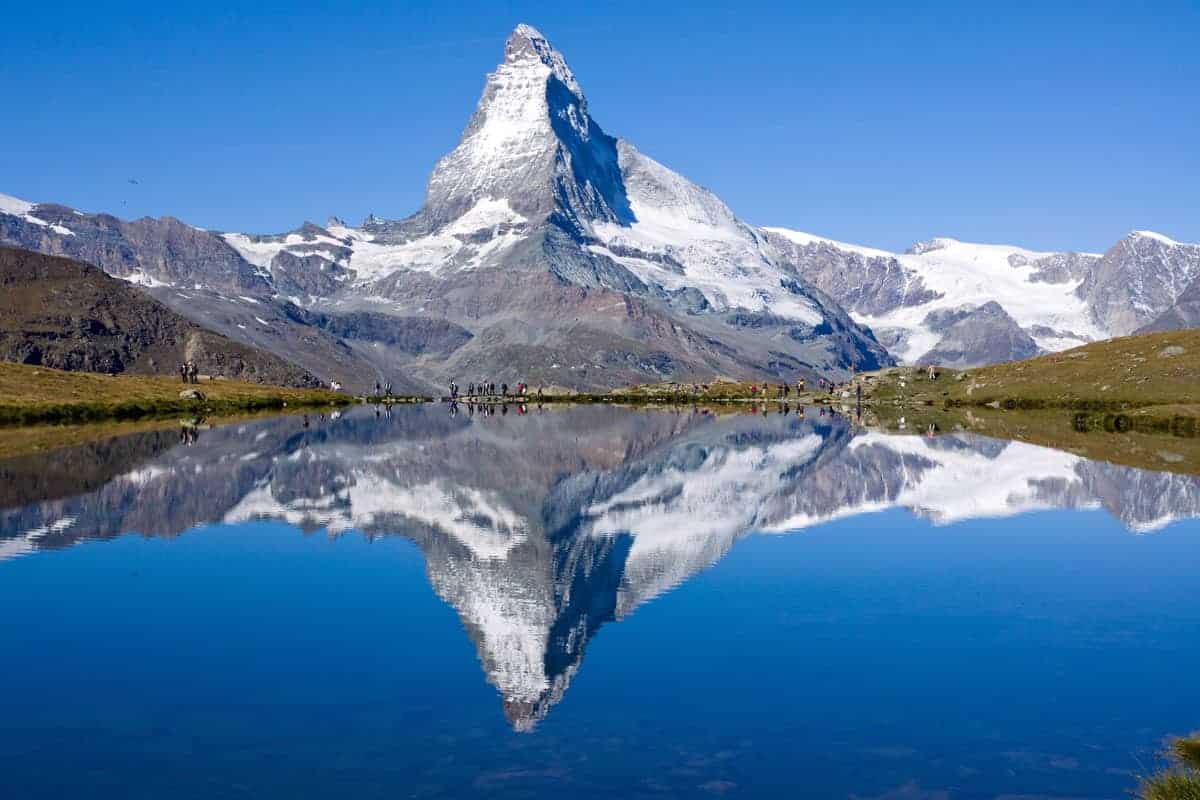
Discover stories of triumph and tragedy at the Zermatlantis Matterhorn Museum and Mountaineers’ Cemetery . There are also numerous outdoor activities to enjoy in the area. You can explore a glacier, ski mid-summer, hike some of Switzerland’s most breathtaking trails, or climb one of Europe’s highest mountains.
Discover a range of travel options, including aerial tramways, funiculars, and Europe’s highest open-air rack railway, within the Swiss Alps. These innovations enable everyone to experience the iconic peaks, making the Alps accessible beyond just avid explorers.
There are many ways to experience Zermatt – though the most exciting that we recommend is through the eyes of a Matterhorn helicopter tour!
Add a River Cruise to Your Swiss Itinerary: A river cruise down the Rhine and Moselle between Paris and Zurich is a great addition to your Swiss itinerary.
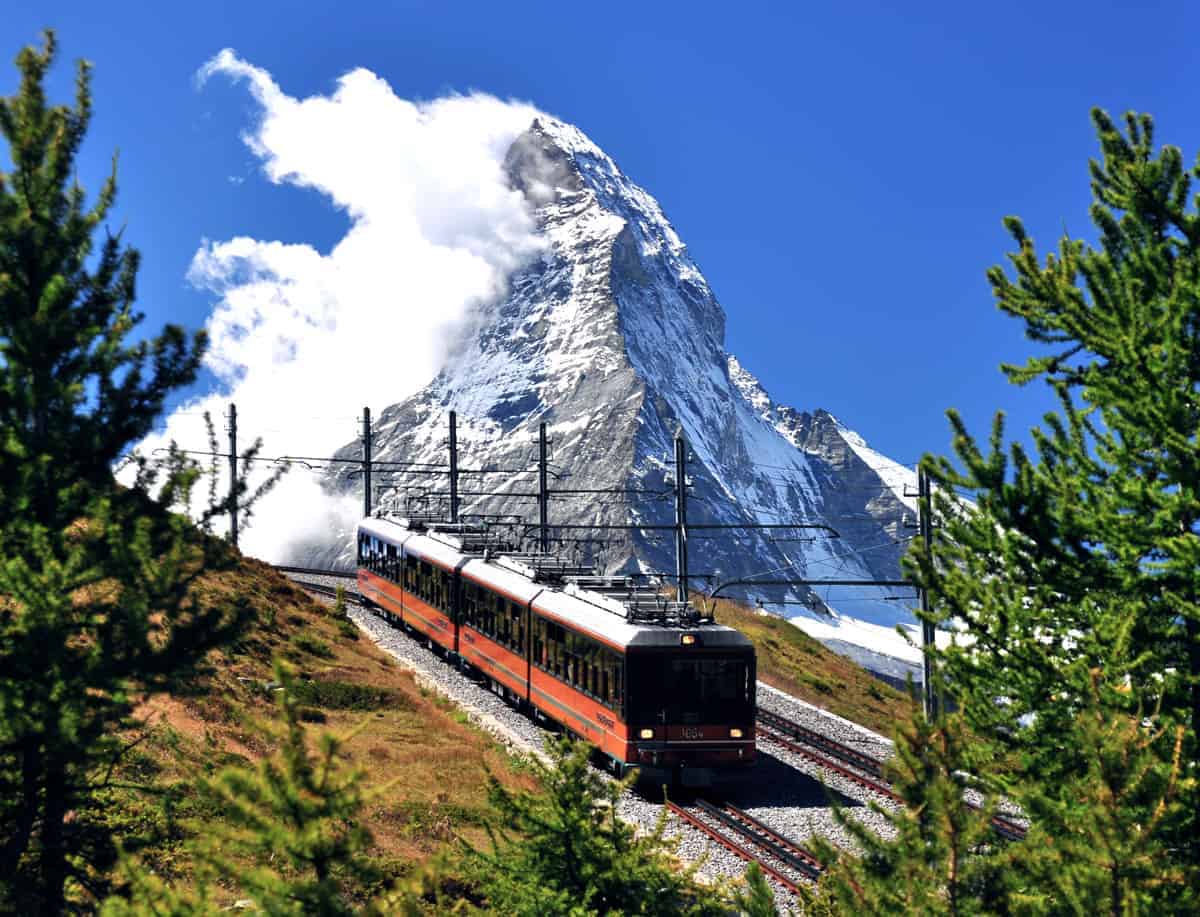
One of the most popular Matterhorn day trips from Zermatt. Experience the heights of the Alps and marvel at man’s incredible engineering achievement as you climb a glacier from Zermatt up to Gornergrat 3,089 metres above sea level on the cogwheel train.
Enjoy magnificent views over the most famous peaks of the Swiss Alps – Rothorn, Klein, and the world-famous Matterhorn from the year-round viewing platform. Throughout the ride, you will pass some of the most beautiful views in Switzerland with the Matterhorn continually in view.
Tickets are valid for one day; prices start at CHF 90 pp. See here for full tour details and inclusions .
2) Jungfrau Region
At an altitude of 3,454 meters, the Jungfrau region is one of the most exceptional alpine wonderlands in the world. Nestled in a UNESCO World Heritage site between the Mönch and Jungfrau mountains, this is another top Swiss destination. Explore amazing hiking trails around Jungfrau, and nearby spots like Wengen, Murren, Grindelwald, and Lauterbrunnen .
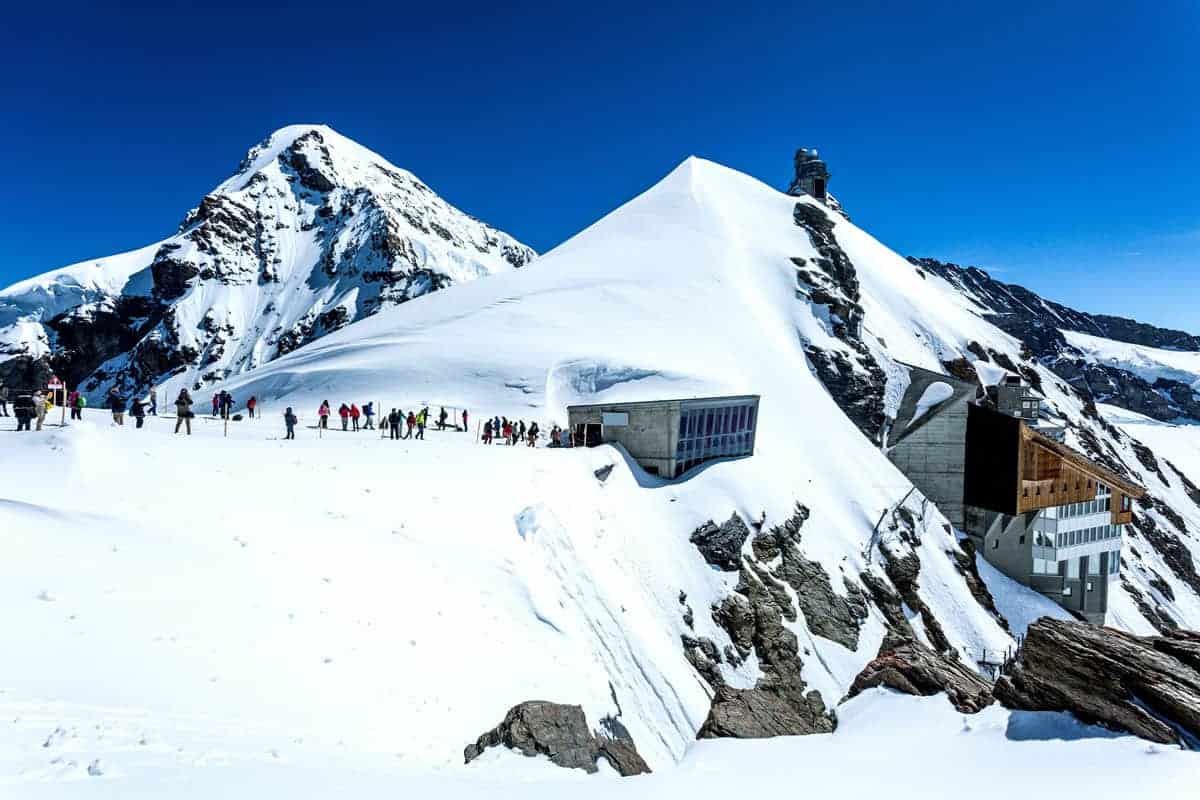
The biggest highlight of the Jungfrau region is getting to the top.
For over a hundred years, the Jungfrau railway has ascended to Europe’s highest-altitude railway station. The steep nine-kilometer journey from Kleine Scheidegg includes a seven-kilometer tunnel completed in 1912. Mid-tunnel stops provide breathtaking vistas of the Alpine glacial marvels through mountain-built windows.
Marvel at the breathtaking views of the Aletsch Glacier extending into Italy, France, and Germany. You can also delve into an enchanting frozen realm at the Ice Palace .
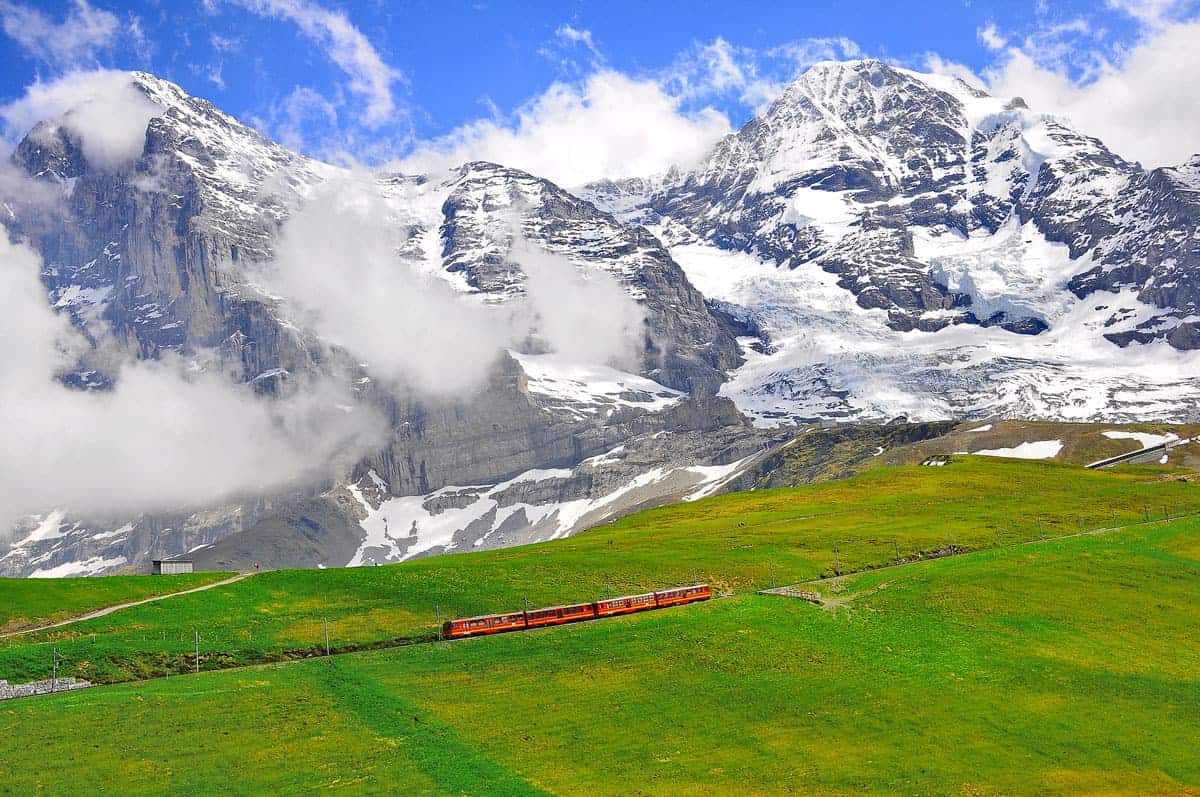
Visit Jungfraujoch from Zurich on an all-inclusive day trip. Travel the Brünig Pass and the shores of Lake Brienz to the Bernese Oberland to meet the cog train. Visit the Sphinx Observation Terrace and Plateau for the most striking vistas of the Aletsch Glacier and stroll through the tunnels of the Ice Palace in the heart of the glacier. Get full tour details here .
3) The Swiss National Park
The Swiss National Park, located in the Western Rhaetian Alps is part of the worldwide UNESCO Biosphere Reserve.
Covering over 170 square kilometres; the park has over 80 kilometres of hiking paths and nature trails. The first national park was established in the Alps over a century ago, although thankfully, little has changed.
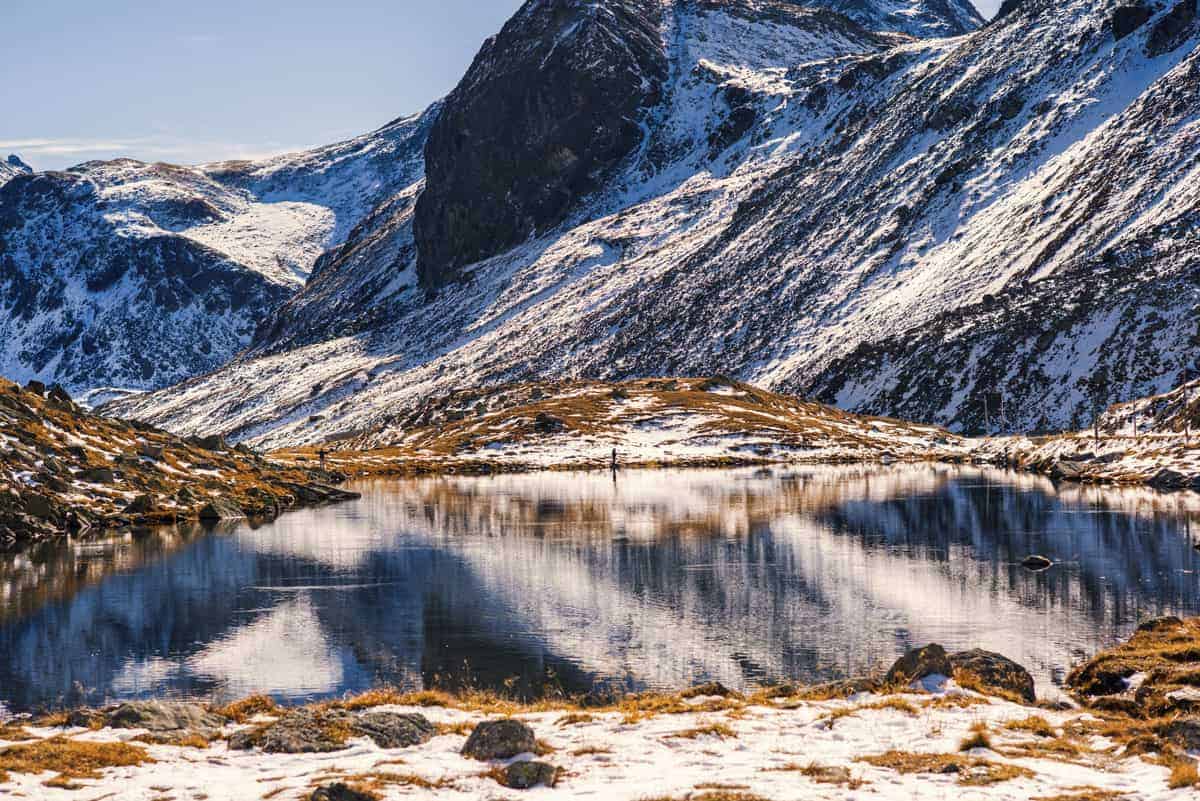
A pristine wilderness of forests, lakes, and alpine mountains, the park is also home to an abundance of wildlife.
The marked trails, mandatory to follow, showcase unique rock formations and pristine forests found nowhere else. Have your binoculars ready for glimpses of chamois, marmots, red deer, and ibex—the park’s prominent wildlife and some of the best fauna to see when traveling in the Swiss Alps.
There are a total of twenty-one hiking routes through the park. The park visitor centre in Zernez has park maps and guides. You can also book a guided hike for around CHF 35. The park closes in winter during the time of year that is part of wildlife conservation and protection practices.
The Monte Carlo of Switzerland. Lugano, in southern Switzerland’s Italian speaking Ticino region, will have you thinking you landed in the Mediterranean.
The stunning scenery and relaxed vibe of Lugano City attract celebrities and travelers alike. It nestles by a glacial lake, surrounded by the San Salvatore and Brè Mountains
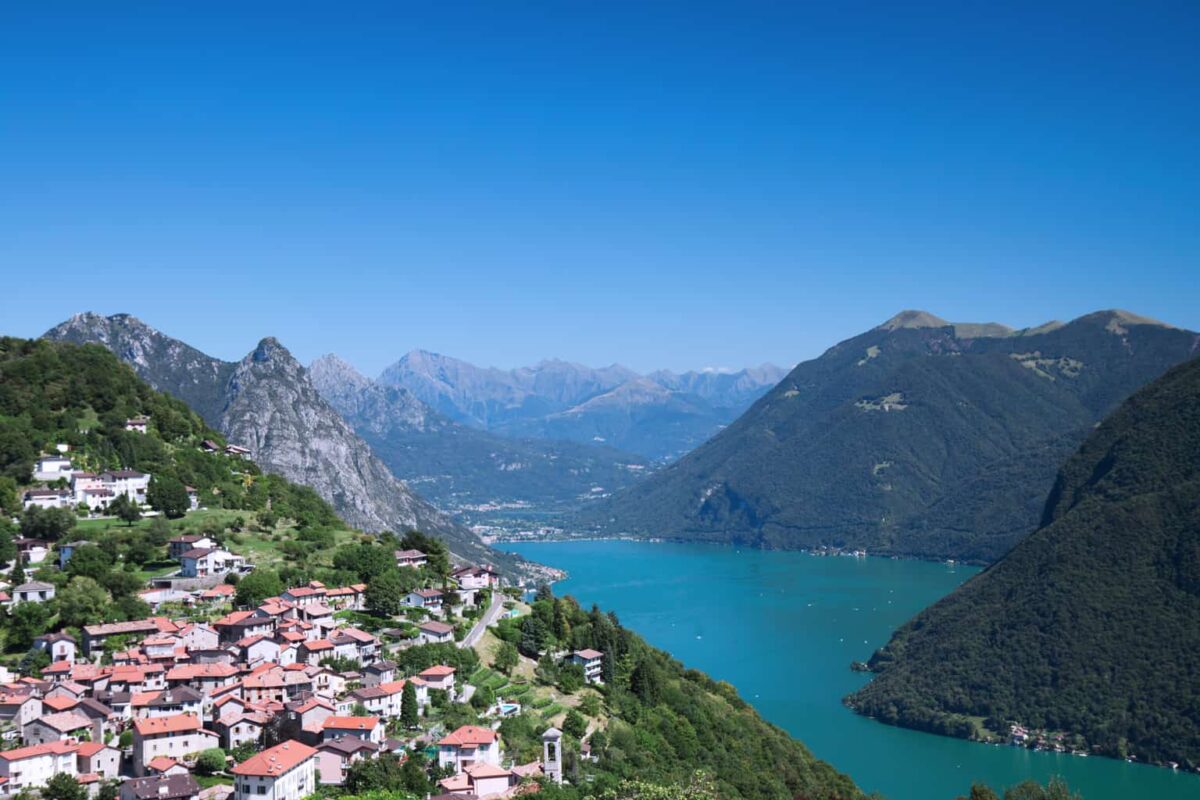
The main square, Piazza della Riforma has all the charming character you expect from any of Italy’s most enchanting cities and towns flanked with pastel coloured Italianate architecture.
Discover the allure of Piazza della Riforma, adorned with pastel Italianate buildings, at Lugano’s heart. Alongside chic shopping streets and vibrant lakeside eateries, Lugano boasts an especially renowned status as one of Switzerland’s scenic cities.
5) Interlaken
Explore Interlaken, the adventure hub in the heart of the Swiss Alps! Nestled between Lake Thun and Lake Brienz, this stunning town presently offers thrilling activities like hiking, day sledding , and paragliding .
You can also discover the beauty of Lake Thun in Interlaken, boasting deep blue waters embraced by surrounding mountains. Don’t miss the chance to cruise on its captivating expanse! Explore the stunning scenery with a boat ride.
During the summer, unwind along the lakeside or indulge in a refreshing swim in its crystal-clear waters. For thrill-seekers, it’s undoubtedly an ideal spot for windsurfing and sailing adventures!
As a key stop on the Golden Pass Train Line , Interlaken connects you to Switzerland’s top attractions. Experience the essence of travel in the Swiss Alps from this vibrant town!
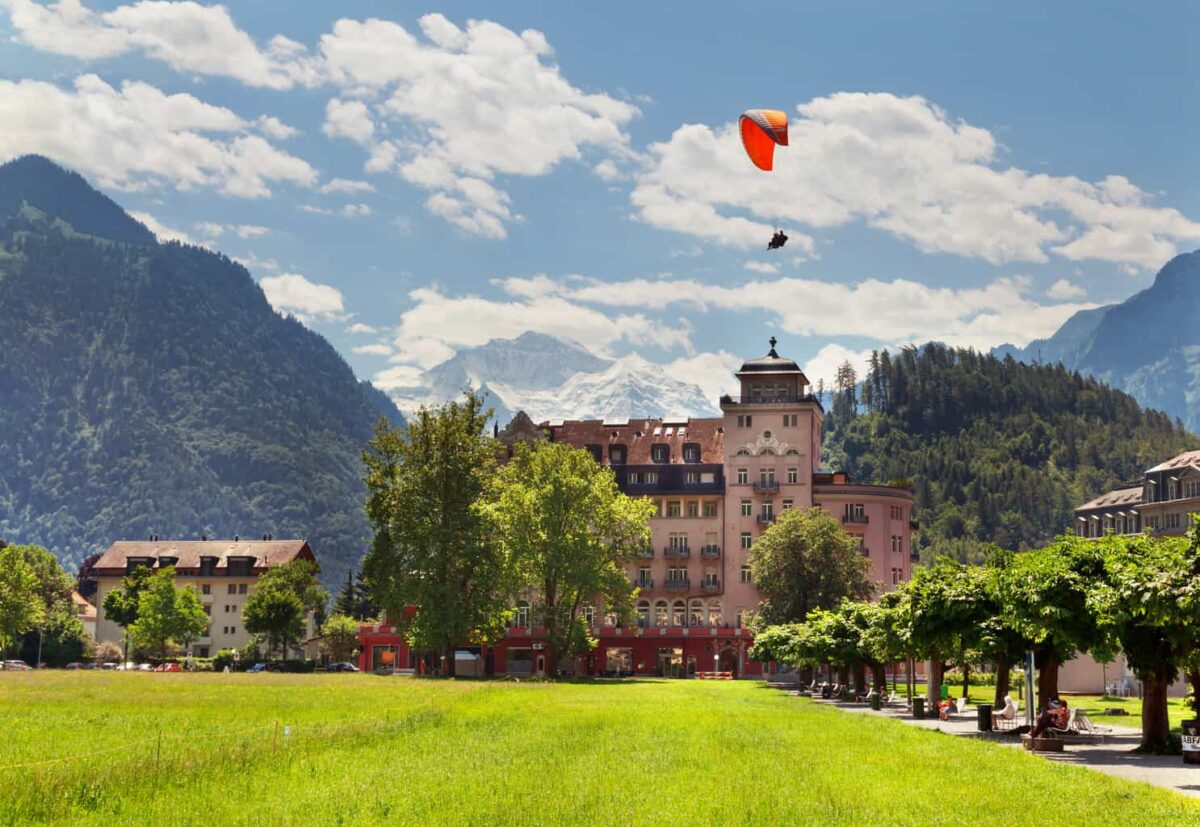
Enjoy the vistas of Interlaken from above on a tandem paraglide. Enjoy the views of the mountains and lakes on a tandem flight with a skilled pilot. See here for full activity details .
Lucerne is a beloved Swiss destination and is a surprisingly effortless day trip from Zurich . It offers historical charm, stunning landscapes, and upscale shopping. The German-speaking city sits by Lake Lucerne, surrounded by Mount Rigi and Pilatus panoramas.
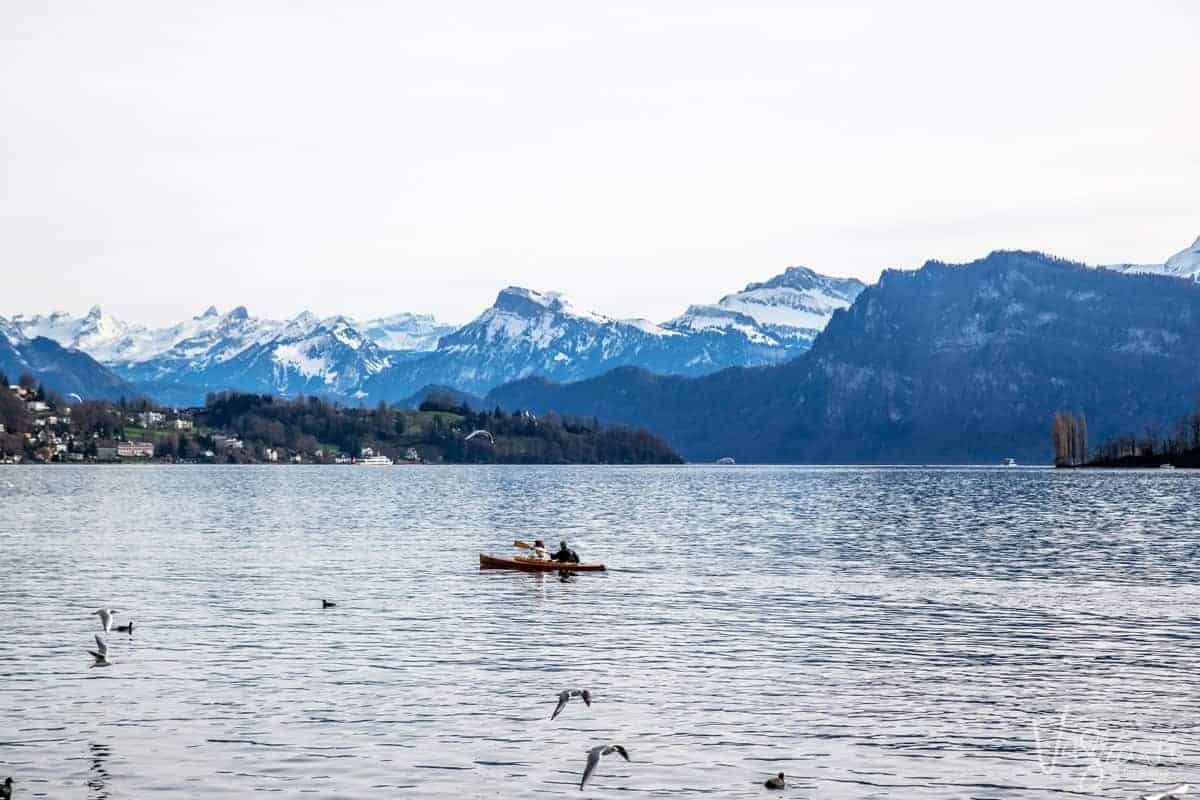
In Lucerne, the gateway to central Switzerland, you have a world of options. In Lucerne, the gateway to central Switzerland, a world of options awaits. Enjoy a leisurely steamship cruise or explore the heights of Pilatus or Rigi. Wander through the car-free Altstadt (Old Town) and indulge in luxury shopping at its upscale stores.
We have put together an excellent 2 Days in Lucerne Itinerary to help you plan your stay.
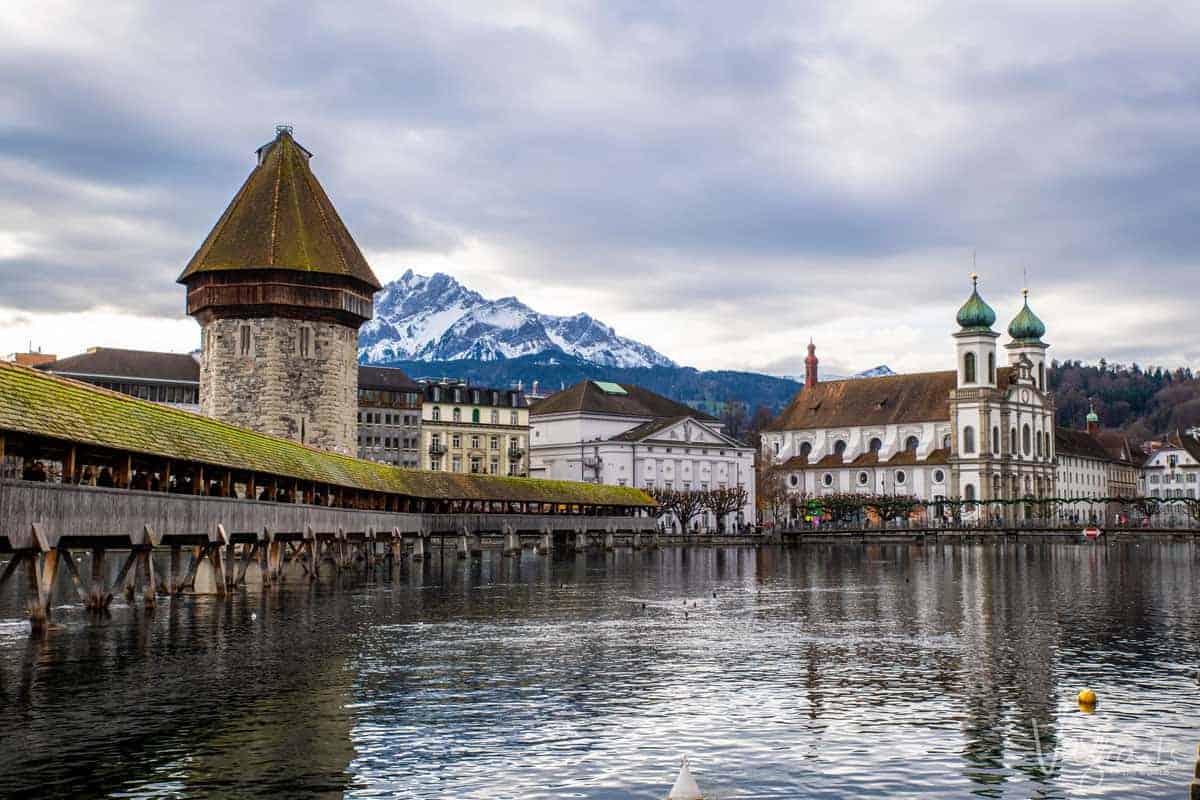
In sum, Lucerne is a top spot in Switzerland for a reason—it’s stunning all year round! Nestled at the start of the Alps, it’s perfect for exploring Central Switzerland. Plus, its proximity to Zurich makes it an ideal stop, even for a short visit.
Enjoy breathtaking views on a ride to the top of Mt. Pilatus by aerial cable car to enjoy an easy hike through the Alpine scenery on this 5.5 hr tour.
Brave the world’s steepest cogwheel railway as you descend the mountain. Cruise back to Lucerne by boat enjoying views from lake Lucerne. Get full tour details here .
The 10 Most Beautiful Towns You Have to Visit in the Alps

Spanning eight countries, including Switzerland , France , Italy and Germany , the Alps are Europe’s highest mountain range. The towns nestled between the peaks and the lakes of the region are all distinctive, from Montreux with its musical heritage to Aosta with its Roman roots. Here’s our pick of the best towns in the Alps.
Did you know you can now travel with Culture Trip? Book now and join one of our premium small-group tours to discover the world like never before.
1. Interlaken, Switzerland
Architectural Landmark
Interlaken is located in the Bernese Oberland region of the Swiss Alps. The town became a popular destination for artists during the 19th century and is captured in the landscape works of Franz Niklaus König and other Swiss artists. Today, it is frequently visited by backpackers and travellers who come for outdoor pursuits such as skydiving and paragliding. The town also boasts a number of Victorian hotels, such as the Hotel Royal St George, a former monastery, and Hotel Victoria-Jungfrau, which are both listed as Swiss heritage sites of national significance.
2. Lucerne, Switzerland

Become a Culture Tripper!
Sign up to our newsletter to save up to 500$ on our unique trips..
See privacy policy .
4. Zermatt, Switzerland

English explorer Edward Whymper brought this town to international attention when he conquered the Matterhorn, Switzerland’s highest peak, in the mid-19th century. Zermatt provides incomparable views of the Alps, and the river Matter Vispa trickling through it only adds to the charm of this small town. There are a number of cable cars and chair lifts for skiers, and for those who have a head for heights, the Gornergrat Bahn – the highest open-air railway in Europe – runs to the summit of the Gornergrat. Almost all the cars in the town are electric, making Zermatt very eco-friendly. Other culturally significant attractions include the rock carvings and prehistoric grinding stone at Hubelwäng.
5. Aosta, Italy
Historical Landmark
Among the beautiful towns in the Alps, lies the Italian town of Aosta, in the Aosta Valley. The town is situated near the Italian entrance to the Mont Blanc Tunnel. The town has Roman roots and was once of ancient military importance due to its location. Evidence of its conflicted history is still visible in the walls of the Roman-era Augusta Prætoria Salassorum, which are preserved in almost perfect condition. A Roman theatre, an arch dedicated to Augustus, and an ancient cathedral further reveal the town’s unique culture and development. This a must-visit town for any history buff.
6. Cortina d'Ampezzo, Italy
Nestled on the Boite River, in the heart of the southern Alps, is the town of Cortina d’Ampezzo. Travellers come from all corners of the earth for this town’s ski amenities, boutique accommodation and scenery. In the 19th century, Cortina d’Ampezzo was a centre for crafts and produced many handmade wood, glass and copper items, leading to a growth in tourism. Important cultural institutions include the town’s Modern Art Museum, the Palaeontology Museum and the Ethnographic Museum. A famous historical landmark in the town is its basilica, constructed between 1769 and 1775. The town’s location has also provided the perfect backdrop for a number of films, such as The Pink Panther (1963) and For Your Eyes Only (1981). Cortina d’Ampezzo also has a thriving music scene, with the annual Dino Ciani Festival and Academy attracting international music lovers. You’ll spend a few days here during our Dolomites Hiking Tour , led by an expert Local Insider.
7. St Moritz, Switzerland

Found in the Engadin valley in Switzerland, St Moritz is another notable sporting town. And if you’re wondering where the Swiss Alps are at their most striking, this place is definitely up there, with unbeatable views of Europe’s majestic mountain range. The Winter Olympics have been held twice in St Moritz, first in 1928 and again in 1948. The town has since held many more sporting events, such as sailing and windsurfing competitions. The town also boasts one of the world’s oldest natural bob runs, which spans 1,722m (5,649ft) and is made from just snow and water. St Moritz is regarded as one of the most exclusive ski resorts in the world and has attracted jet-setters worldwide. It has also been featured in films, such as the opening scenes of Alfred Hitchcock’s The Man Who Knew Too Much (1956).
8. Chambéry, France
Chambéry is positioned in the valley between the Bauges and the Chartreuse Mountains on the Leysse River, in the Rhône-Alpes region in southeastern France. It is one of the best French Alps towns for rail travel, connecting France and Italy. Chambéry is the capital of the Savoy region, and the Château de Chambéry is evidence of this rich past; the first counts of Savoy settled here in 1285. Another important landmark is the striking Fontaine des Éléphants, built in 1838 to honour Benoît de Boigne’s work in India, where he created an army to resist the British Empire and amassed enormous landholdings. The four life-size elephants converge at the base of a column in the shape of the Savoyan cross and are topped by a statue of de Boigne.
9. Annecy, France

In the Haute-Savoie part of the Rhône-Alpes region of France, on the northern side of Lake Annecy, lies the town of Annecy . Annecy started as the capital of the county of Geneva before it was integrated into the House of Savoy. It was also a key location during the counter-reformation. Nowadays, the town hosts the Annecy International Animated Film Festival, which was established in 1960. The Rencontres Internationales d’Annecy Cinéma and Architecture has also been held here since 1999. The surrounding wooded mountains include La Tournette, Le Parmelan and Le Mont Veyrier and provide the town’s wonderful scenery. As a result, Annecy is one of the world’s favourite locations for paragliding, and a number of competitions have been held there. Landmarks in the town include the castle Palais de l’Isle, which is now a history museum, and the Château d’Annecy.
10. Bressanone, Italy
Bressanone, or Brixen, is the third-largest city and the oldest town in the region of South Tyrol in Italy. Located north of Bolzano, the town has a wealth of historical and cultural sites, such as its 10th-century cathedral. Rodenegg Castle is also located nearby, boasting a number of exquisite frescoes. The town is situated at the confluence of the Eisack and Rienz rivers and is home to a major skiing resort known as the Plose. There is also a Pharmacy Museum, which has been run by the Peer family since 1787. With its gorgeous Christmas markets, orchards and vineyards, this Alpine town has a lot to fall in love with.

KEEN TO EXPLORE THE WORLD?
Connect with like-minded people on our premium trips curated by local insiders and with care for the world
Since you are here, we would like to share our vision for the future of travel - and the direction Culture Trip is moving in.
Culture Trip launched in 2011 with a simple yet passionate mission: to inspire people to go beyond their boundaries and experience what makes a place, its people and its culture special and meaningful — and this is still in our DNA today. We are proud that, for more than a decade, millions like you have trusted our award-winning recommendations by people who deeply understand what makes certain places and communities so special.
Increasingly we believe the world needs more meaningful, real-life connections between curious travellers keen to explore the world in a more responsible way. That is why we have intensively curated a collection of premium small-group trips as an invitation to meet and connect with new, like-minded people for once-in-a-lifetime experiences in three categories: Culture Trips, Rail Trips and Private Trips. Our Trips are suitable for both solo travelers, couples and friends who want to explore the world together.
Culture Trips are deeply immersive 5 to 16 days itineraries, that combine authentic local experiences, exciting activities and 4-5* accommodation to look forward to at the end of each day. Our Rail Trips are our most planet-friendly itineraries that invite you to take the scenic route, relax whilst getting under the skin of a destination. Our Private Trips are fully tailored itineraries, curated by our Travel Experts specifically for you, your friends or your family.
We know that many of you worry about the environmental impact of travel and are looking for ways of expanding horizons in ways that do minimal harm - and may even bring benefits. We are committed to go as far as possible in curating our trips with care for the planet. That is why all of our trips are flightless in destination, fully carbon offset - and we have ambitious plans to be net zero in the very near future.

See & Do
Music and movies in the mountains of klosters.

Where to Go When Heading Off-Piste in Crans-Montana

Places to Stay
The best hotels to book in switzerland.

Caprices Festival: Bringing the Party Back to the Swiss Alps

How to Spend 5 Wonderful Days Exploring Geneva

The Best Hotels in Wengen, Switzerland

The Best Hotels in Gstaad, Switzerland

The Best Hotels to Book in Andermatt for Every Traveller

The Best Hotels in Grindelwald, Switzerland, for Every Traveller

Guides & Tips
Experience the ultimate date night with a romantic floating picnic.

How to Cross Switzerland's Charles Kuonen Suspension Bridge

Food & Drink
A culinary tour of geneva’s food and drink scene.
- Post ID: 375151
- Sponsored? No
- View Payload
- All Destinations
- Bustling Cities
- Beautiful Towns
- Charming Villages
- Culinary Experiences
- Historical Monuments
- Zoos, Parks and Aquariums
- Image Gallery
- Comparative Analyses
- Hiking Time Calculator
- Travel Information
- Frequently Asked Questions
- Affiliate Disclaimer
- Favorite Resources
- Privacy Policy
Swiss Alps – The Ultimate Guide
- April 22, 2021 November 20, 2023
- Mountains , Valleys
Last Updated on November 20, 2023 by Darla Uhl
Switzerland is a highly mountainous country located in Central Europe. The Swiss Alps cover roughly 60% of the country’s area. In this article, we will answer the following questions – where are the Swiss Alps? What is it exactly, and how did it emerge? Lastly, we will enumerate and discuss the various Western and Eastern Alpine Regions.
Where are the Alps?
The Alps are the most extensive and highest mountain range in Europe covering 1,200 kilometers. There are eight countries in Europe that have mountains in this range – France, Switzerland, Monaco, Italy, Liechtenstein, Austria, Germany, and Slovenia. This stretches from Nice in France all the way to Vienna in Austria.

The Alps are further divided into two – the Eastern Alps and the Western Alps. You can think of the line dividing it along Lake Constance – Chur, Switzerland, Splügen, and Lake Como.
In Switzerland, this means that the Alps in Valais and Ticino are west and the ones in Grisons ( Graubünden ) are largely in the east.
Where are the Swiss Alps?
The Swiss Alps extend from both Valais in the West to Graubünden in the East. Of this, the most important blocks are the Alps in Valais, Bern, Appenzell, Glarus, Ticino, and Grisons ( Graubünden ). The Mont Blanc massif in Valais is shared with France and Italy. And the Bernina Range is shared with Northern Italy. The rest of the ranges, particularly in Bern, Appenzell, and Glarus are not shared with the neighboring countries.
The highest peaks in the entire Alpine region lie in the Swiss Alps, particularly in the Pennine Alps in Canton Valais. Here are the highest ten mountains. All mountains are in Valais, with the exception of Finsteraarhorn which Valais shares with Bern.
Top 10 Highest Mountains in Switzerland
Jungfrau and Mönch , two of the most well-known mountains in Switzerland, are the 16th and 17th highest mountains respectively. Piz Bernina , the highest peak in the Bernina Range in Grisons, ranks 20th on the list of the highest mountains.

The Swiss Alps are, in terms of farming, the summer pastures used by cows, sheep, and goats. It is higher in altitude compared to the spring pastures.
How did the Alps emerge?

In a nutshell, the history of the Alps is not yet 100% clear. But we do know that in the course of the earth’s 4,500 million years, the earth has constantly changed based on various environmental factors. Mountains, flats, and seas form and disappear over the years. Continental plates move, drift apart, or collide. We see this time and again through numerous earthquakes and volcanic eruptions. We see glaciers recede, ice shelves break off, and more. The general assumption is that plate tectonics have contributed to the emergence of the Alps.
Plates drift a few centimeters per year. It can be measured with instruments, but normal people would hardly notice it. The Alps are actually considered a young mountainous range. By young, the definition would be 70 million years.
This is the rough timeline of how the Swiss Alps emerged :
- Triassic Period – 210 million years ago – The huge continent of Europe and Africa (Pangaea) does not have a lot of mountainous regions. It is mostly flat and keeps on getting flooded by the sea.
- Jurassic Period – 150 million years ago – The continent breaks into two – Europe and Africa. Between the two is an ocean called Tethys. Through the separation of the two continents, the plates slowly move and the flat regions slowly rise to the early Alps. This was referred to as Alpine Tethys .
- Cretaceous Period – 90 million years ago – The continents keep on coming closer together. The first continental collision took place.
- Paleocene and Eocene – The main collisional phase occurred in the formation of the Alps. It was when the Adriatic plate was thrust over the European crust.
- Present – the plate collision still occurs yearly but in a very minuscule range causing some areas to be uplifted.
As discussed earlier, the Swiss Alps can be divided into the western and eastern sides. Here we will have a look at the various alpine regions.
The Western Swiss Alps
The Western Swiss Alps cover much of the mountains in Valais and Bernese Oberland. These are high four- and three-thousand peaks and are known worldwide. Here are the alpine regions in the Western Swiss Alps:
Aletsch Glacier

At 23 kilometers, Aletsch Glacier is the largest in the Swiss Alps. Since 2001, it has been part of the UNESCO World Heritage. It is located in the Jungfrau-Aletsch-Bietschhorn region. Riederalp and Bettmeralp lie on a sunny terrace 2,000 meters above sea level.
In winter, four ski resorts lie in the Aletsch region: Fiescheralp, Bettmeralp, Riederalp , and Belalp. They are all accessible with cable cars.
Hasli Valley

The Hasli Valley is a family-friendly resort with fantastic views of the Engelhörner, Wellhorn, and Wetterhorn. There are numerous gorgeous spots in and near this valley – the Aare Gorge , Rosenlaui , and Reichenbach Falls . In winter, it has 60 kilometers of ski slopes, 25 kilometers of hiking trails, and many more.
Crans-Montana

Crans-Montana is located on a high sunny terrace around 1,495 meters above sea level. The region consists of five sections: Randogne, Montana, Chermignon, Lens, and Icogne. They have tons of spa hotels and good infrastructure (Congress and Culture Centers, Golf Areas). It is one of the biggest tourist areas in Valais.
The winter ski resort of Crans-Montana has easy slopes in the lower sections. The upper section towards Plaine More Glacier is more difficult.
Emmen Valley

The Emmen Valley with the Emme River, 170 valleys, and hills is quite idyllic. The region is also famous due to its cheese. Due to the riches the locals obtained from their cheese exports, they built beautiful, traditional houses. Worth visiting aside from the mountains is the old city of Burgdorf and its castle.

Entlebuch has endless moorlands and forests all seemingly wild and forgotten. In 2002, it received the UNESCO Biosphere Reserve label. It is now called the “UNESCO Biosphere Entlebuch” – Switzerland’s first biosphere reserve – spanning an area of over 400 square kilometers.
Frutigen Niedersimmental

The Frutigen-Niedersimmental administrative district covers several mountainous regions in Bernese Oberland. Although the areas are largely developed for tourists, most visitors are the Swiss themselves. Foreign tourists tend to skip this region, even though they have lots of awesome spots and a charming Chalet village. Popular to visit are Adelboden (a traditional Swiss mountain village 1,353 meters above sea level), Blausee in the Kander Valley, and the town of Spiez .
The ski resort of Adelboden-Lenk encompasses 170 kilometers of prepared slopes, 3 fun parks, 15 kilometers of cross-country skiing slopes, 40 kilometers of winter trails, and 3 sledding routes.
Less popular but still beautiful is the Diemtig Valley . It is a quiet valley with just a few ski lifts and cable cars. It is a place to visit if you want peace and quiet.

Goms is in the uppermost region of the Rhône valley. It has been inhabited since the Stone Age. During the Roman period, it was also part of the province of Rhaetia. The Walser folk who have lived here started migrating in the 13th and 14 centuries to other valleys in Switzerland, and neighboring countries of France, Italy, and Austria.
The Church of St. Maria is a Swiss heritage site of national significance. Furthermore, several villages in Goms are part of the Inventory of Swiss Heritage Sites – Biel, Ritzingen, Selkingen, Niederwald, Gluringen, and Reckingen.
Gstaad and Saanenland
Gstaad, similar to St. Moritz, is also a luxury spa resort in the Swiss Alps. It has lots of prominent luxury hotels, boutiques, and restaurants. The village is car-free and visitors from all over the world love strolling here and discovering the boutiques. The region also hosts numerous world events such as the Swiss Open (tennis), Hublot Polo Gold Cup, the Snowbike Festival, International Week – Hot Air Ballooning, and many more.
Jungfrau Region

The Jungfrau Region is world-known mostly due to Jungfraujoch . Labeled as “Top of Europe” at 3,463 above sea level, Jungfraujoch is actually a saddle between Jungfrau (at 4,158 m above sea level) and Mönch (at 4,110 m above sea level). This place is located in Bernese Oberland.
For more detailed information regarding the Jungfrau region and Jungfraujoch, check out our article Jungfraujoch – When is the Best Time to Visit?
Les Portes du Soleil

South of Lake Geneva is the Swiss and French region of Les Portes du Soleil. In this region, they have hot springs and one of the largest ski regions in the world. With 209 lifts and 650 kilometers, Les Portes du Soleil is huge. The village of Champéry is also charming.
Leukerbad is a thermal spa town 1,402 meters above sea level. 65 warm springs can be found in various baths throughout this town. The village is car-free as well.
Lötschental Valley

Lötschental is the largest valley on the northern side of the Rhône Valley, in the canton Valais. It extends around 27 kilometers and is quite remote. In fact, it was cut off from the outside world until the beginning of the twentieth century. Occasionally, it still gets cut off from the rest of the country in winter due to too much snow. It is also a Walser village where women sometimes still wear their traditional costumes.
The ski area is Lauchernalp from 1,419 to 3,119 meters with intermediate to difficult slopes.

Verbier used to be a farming village in the municipality of Bagnes, Valais. After the connecting road to Verbier was built, it started to change dramatically. In 1949, the first ski lift was added. Afterward, around 90 more followed.
Nowadays, Verbier is a premier backcountry ski resort, not only in Switzerland but also worldwide. Verbier is known for steep slopes, varied conditions, and resort culture. The place also has welcomed prominent visitors. The British, Swedish, and Belgian Royal families have already holidayed in this place.
Val d’Anniviers

Val d’Anniviers is a Swiss valley in Canton Valais. It lies south of the Rhône Valley. It is home to six municipalities, Ayer, Chandolin, Grimentz , Saint-Jean, Saint-Luc, Vissoie, Vercorin, and Zinal.
The villages are remote and reachable via winding roads. But the area is so peaceful and gorgeous.
Val d’Hérens
Val d’Hérens is a valley formed by the Hérens glacier. This valley is home to a couple of high mountains – Dent Blanche (4,358 meters), Dent d’Herens (4,174 meters), Mont Collon (3,637 meters), and Mont Blanc de Cheilon (3,870 meters).

The “Swiss Greenland”, inhabited for over 4,000 years, Saas-Fee is surrounded by tall mountains and glaciers. The train brings guests to Alallin 3,000 meters above sea level.
The ski area has 13 mountains that are at least 4,000 meters high, 140 kilometers of prepared slopes, 1 snow park, 6 kilometers of slopes, 1 sledding, and 52 kilometers of winter trails.
Simmen Valley

Simmen Valley near Lake Thun until Lenk is not as touristy as other Swiss Alpine regions. Nevertheless, some places are well-known such as Stockhorn, Mittagfluh, and Rinderberg. Lenk is also a popular spa town with a modern Wellness center.
Sibe Brünne , as shown above, is a magical waterfall and the source of the River Simme.

In the last few years, the Canton of Uri has started to gain popularity due to the recent developments in Andermatt. Real Estate businessman Samih Sawiris and the Orascom Projects decided to invest in Andermatt. The place itself is quite special in that it is the historical center cross of the north-south and east-west traverses of Switzerland.
In winter, the area boasts over 100 kilometers of prepared slopes in Skiarena Andermatt-Sedrun. This Andermatt Swiss Alps ski area covers Andermatt, Sedrun, and Oberalp.
In case you want to visit Andermatt, I highly recommend checking out Schöllenen Gorge nearby. It is one of the most beautiful gorges in Switzerland.

Zermatt offers a postcard view of the southwest Matterhorn from the steps of the Church of Saint Mauritius or the Kirchbrücke Bridge. Around the village are larch forests, 38 4,000-meter mountain peaks, and the most beautiful mountain in the world – Matterhorn . To name two of the most important mountains, we have Monte Rosa at 4,634 meters (the highest mountain in Switzerland) and Dom in the Mischabel group at 4,545 meters.
The Eastern Swiss Alps
The Eastern Swiss Alps cover the mountain resorts in Grisons ( Graubünden ), Appenzell, Glarus, and St. Gallen. Most prominent among the resorts are St. Moritz in Engadine and Davos. Some regions are quieter and laid-back. Others are world-known, chic, and expensive.
Here are the alpine regions in the Eastern Swiss Alps:

Appenzell is a region known for its somewhat “rocky” mountains, hills, and lakes. The Alpstein region and the 2,502-meter-high Säntis are both worth checking out. On Säntis, you can enjoy the views of six countries, Lake Constance (Bodensee in German), and the Alps. Appenzell is also known for its tasty Appenzeller Cheese . You can even drop by the Cheese Factory which is open daily to visitors.
Check out our articles covering some interesting places in Appenzell :
- Is Appenzell Worth Visiting?
- Aescher: Famous Restaurant at the Cliff Edge of Ebenalp
- 12 Best Things To Do in Appenzell Region, Switzerland
- Kronberg: 5 Best Things To Do (With Epic Hiking Trails)

Arosa is located at the end of the Schanfigg Valley. It has a lake in the center of the city and is surrounded by forests. Arosa rescued three bears and these now live in the 2.8-hectare Arosa Bear Sanctuary . Furthermore, they have alongside the visitor platform also a playground, a minigolf, and an Experience Trail.
Since 2013, Arosa has been connected to the ski area of Lenzerheide. The Arosa-Lenzerheide ski area has a total of 225 kilometers of ski slopes with 43 cable cars between them. It is the largest contiguous ski area in Graubünden.
Bergell / Val Bregaglia

Val Bregaglia is a valley in Graubünden quite near the Italian border and the Italian town Chiavenna. It can be reached via Maloja Pass. The valley is absolutely gorgeous with the Sciora mountain range as a backdrop. The village of Soglio was once named the most beautiful village in Switzerland. Countless artists have come here for inspiration – Alberto Giacometti, Giovanni Segantini, and Clara Porges.

Davos is a town in Canton Graubünden. It is a popular ski resort, hosts the World Economic Forum, and has one of the best tourist infrastructures in the Alps. They can accommodate up to 24,000 guests. The five ski areas in Davos include Jakobshorn, Pischa, Schatzalp-Strela, Rinerhorn, and Klosters Parsenn.
Schatzalp is 300 meters above Davos. It is a slow ski resort with all-natural snow, a luxury hotel, a botanic garden with over 5,000 summer plants, and summer toboggan. Parsenn is the largest and most modern of Davos’ five mountains.
You can also get from Klosters to Gotschna/Parsenn by cable car. Madrisa in nearby Klosters and Rinerhorn are child-friendly.
Sertig Dörfli is a Walser Village at 1,861 meters above sea level surrounded by beautiful forests and mountain peaks.

Engadine is one of the most beautiful regions in Graubünden. Or possibly even in Switzerland. It has a mixture of natural and historical wonders. You can have unforgettable holidays here and the list of things to do is quite long. This region has locals who can speak Romansh, German, and Italian.
In Upper Engadine, you will find from Maloja to S-chanf soft mountains and the river Inn. Four lakes emerged in Engadine upon the Bernina Glacier receding. In no other place in Switzerland, you will see a series of lakes near each other surrounded by mountains between 3,000 and 4,000 meters high. The following places are in Upper Engadine: Maloja, Sils , Silvaplana, Surlej, Champfèr, St. Moritz , Celerina , Pontresina , Samedan, Bever , and the Plaiv villages (La Punt, Zuoz, Madulain, S-chanf, Chapella, Susauna, Cinuos-chel). Locals speak a dialect called Putèr.
The Punt Ota bridge is used as the demarcation line to separate the Lower Engadine from the Upper Engadine.
In Lower Engadine, they speak another dialect called Vallader. The houses also tend to have a harmonic image with a small water well in the middle of the village. The valley has a mild climate and most houses are decorated with pretty flowers. Plants and vegetation would be similar to the neighboring South Tyrol, Donau, and the Mediterranean. The grounds are rich in mineral water, which led to the development of thermal and wellness baths. The following places are in Lower Engadine: Zernez, Brail, Susch, Lavin, Scuol, Guarda, Bos-cha, Ardez, Ftan, Tarasp, Sent, Vnà, Ramosch, Seraplana, Raschvella, Tschlin, Strada, and Martina.
St. Moritz , Pontresina , Guarda , and Scuol are among the more popular destinations in Engadine.
Check out our articles covering some interesting places in Engadine :
- 6 Best Villages in Lower Engadine, Switzerland
- Discovering Celerina, an Engadin Gem
- Relaxing Walk Around Lake St. Moritz, Switzerland
- Guarda: Explore This Fairytale Village in Engadine, Switzerland
- Visiting Pontresina, Switzerland: 8 Best Things To Do
- 9 Best Things To Do In Sils, Switzerland
- 8 Best Things to Do in Silvaplana Switzerland
Flims, Laax, Falera

Flims Laax Falera is marketed such that Flims is the summer region and Laax is the winter region. Flims, as seen in the image above, is a well-known summer destination owing to the beautiful Caumasee . Laax, on the other hand, is a huge ski region with 235 kilometers of prepared slopes with 5 snow-secure valley runs, 29 facilities, 4 snowparks, and the largest half-pipe for snowboarders.

Glarus has narrow, winding roads leading to unspoiled natural landscapes. Some important side valleys include Sernftal and Klöntal. Some places to visit in Glarus include Elm and Braunwald.
Check out our articles covering some interesting places in Glarus :
- 10 Best Things To Do in Glarus Region, Switzerland
- Winter Hiking and Skiing in Braunwald
- Visiting Braunwald Mountain in Summer
- Awesome Things To Do in Elm, Glarus – Revealed
- Beautiful Lake Obersee in Glarus, Switzerland

Heidiland is an important tourist area in Switzerland, popular with Asian tourists due to the cartoon Heidi . Maienfeld is the center of this tourist spot, but it also covers other areas such as Pizol, Lake Walen, Bad Ragaz, Flumserberg, and more.
Check out our articles covering Heidiland :
- Stunning Location of Heidi in Maienfeld, Switzerland
- Discover Sargans Castle in Switzerland
Lenzerheide-Valbella

Lenzerheide is a mountain resort in Canton Grisons (Graubünden) at the foot of Parpaner Rothorn. It lies between Chur and Tiefencastel.
Since 2013, Lenzerheide has been connected to the ski area of Arosa. Check out the short video of freeride skiing in Lenzerheide from MySwitzerland and see how beautiful it is:
The Arosa-Lenzerheide ski area has a total of 225 kilometers of ski slopes with 43 cable cars between them. It is the largest contiguous ski area in Graubünden.
You can also check out our article covering Heidsee in Lenzerheide:
- The Best Things to Do in Heidsee, Lenzerheide

Samnaun is located in the eastern end of Switzerland right beside Austria. It is a municipality located in Engadine. It shares its ski region with Ischgl in Austria.

Surselva , meaning above the forest, is the name of the valley of the Anterior Rhine. The Surselva region covers the villages of Brigels, Ilanz, Disentis/Mustér, Lumnezia, Obersaxen, Vals, Safiental, Medel, Tujetsch, Sumvitg, Trun, Laax, Falera, and Sagogn. The villages of Obsersaxen and Vals can trace their roots to the Walser people.
Laax and Falera are also part of the Flims, Laax, Falera ski region.

Toggenburg in Canton St. Gallen is a region that corresponds to the upper valley of the river Thur. It is surrounded by the mountains of Säntis, Churfirsten, and Speer. The highest village is Wildhaus. Other villages are Lichtensteig, Kirchberg, and Wattwil.

Val Surses ( Oberhalbstein in German) lies between Tiefencastel and Julierpass. The river Julia flows through it. The Surses community is the second-biggest area in Canton Graubünden after Scuol and after Glarus Süd the third-biggest in Switzerland. Its locals speak the dialect of Surmeiran . It covers the following places: Salouf, Riom-Parsonz, Cunter, Savognin, Marmorera, and Bivio.
In Winter, Savognin and Bivio together have 120 kilometers of prepared slopes. Check out our article Savognin – Family Ski Destination in Graubünden if you want to head over to Savognin with your little ones.
Switzerland is quite a mountainous country. And visiting the Swiss Alps is not as easy as it looks due to the sheer number of choices. But each region will have its own character. Some tourists might want to visit well-known choices like Jungfraujoch, Zermatt, Verbier, or St. Moritz. Whereas other tourists might want to visit lesser-known but nonetheless beautiful destinations like Goms or Brigels.
In any case, I hope this list of various mountains in the Swiss Alps has helped you to plan your visit to Switzerland.
- Burri, Klaus. “Schweiz Suisse Svizzera Svizra. Geografische Betrachtungen.”
- Veser, Thomas, Urs Fitze, and Martin Arnold. Merian Schweiz.
Related Posts
- Most Beautiful Villages In Graubünden
- Mountains Close to Interlaken Worth Visiting
- Closest Mountains To Geneva in Switzerland
- Closest Mountains To Visit From Lucerne
- Closest Mountains To Visit From Zurich
- Jungfraujoch – When is the Best Time to Visit?
- Jungfraujoch vs. Titlis: Which one is better?
- St. Moritz or Zermatt: Which One Is More Impressive?
- 8 Best Day Trips from St. Moritz
Darla Uhl is the owner of TouringSwitzerland.com. Her home is in the German-speaking part of Switzerland. Having lived almost 20 years in Switzerland, she's traveled extensively all over the country.
Darla's favorite regions to visit in Switzerland include Engadin, Lake Geneva, Bernese Oberland, Ticino, and Valais. She loves spending time with her family, hiking, visiting museums, and reading books.
- Darla Uhl https://www.touringswitzerland.com/author/tswriter/ Aathal Dinosaur Museum and Trinity the T-Rex
- Darla Uhl https://www.touringswitzerland.com/author/tswriter/ Feet First: Exploring the Appenzell Barefoot Trail
- Darla Uhl https://www.touringswitzerland.com/author/tswriter/ Spielzeug Welten (Toy Worlds) Museum Basel Review
- Darla Uhl https://www.touringswitzerland.com/author/tswriter/ The Peaceful Village of Bellwald, Switzerland
The Swiss Alps Travel Guide
Book your individual trip , stress-free with local travel experts
- roughguides.com
- Switzerland
- Travel guide
- Local Experts
- Travel Advice
- Accommodation
South of Bern and Luzern , and east of Lake Geneva, lies the grand Alpine heart of Switzerland, a massively impressive region of classic Swiss scenery – high peaks, sheer valleys and cool lakes – that makes for great summer hiking and world-class winter sports.
Mürren and up to the Schilthorn
The Bernese Oberland, centred on the Jungfrau Region , is the most accessible and touristed area, but beyond this first great wall of peaks is another even more daunting range on the Italian border in which the Matterhorn is the star attraction.
Tailor-made travel itineraries for Switzerland, created by local experts

8 days / from 2700 USD
Special Golden Round Trip to Switzerland (small group or private)
Stay active on Switzerland's mountains with hikes and cable cars before indulging in delicious Swiss cheese and wines around Lausanne and Geneva. Is there a better way to get a taste of Switzerland than to actually taste it? Pricing is based on a small group tour, enquire for a private tour!
_listing_1640555873127.jpeg)
11 days / from 3564 USD
Unforgettable Switzerland
Discover Switzerland's real natural paradise. Enjoy 11 relaxed days of picturesque scenery, breathtaking views, romantic towns, eternal ice and snow, rural villages and historic buildings. Visit Zurich, Lucerne, Interlaken, Geneva and many other highlights.

7 days / from 2700 USD
Lakes and mountains for the whole family in Italy & Switzerland
Spend your first 3 nights at Lake Como in Italy, discovering the area by boat or foot, before heading to Zermatt in Switzerland. Zermatt with its peaceful nature is the ideal backdrop for strolls, hikes and other activities with the whole family.
Tailor-made trips for Switzerland
Interlaken is centred on its long main street, Höheweg, which is lined with cafés and hotels and has a train station at each end, though the best way to arrive is by boat. The town lies on a neck of land between two of Switzerland’s loveliest lakes, and it exists chiefly to amuse the trippers on their way to the mountains.
Interlaken Ost station is the terminus for both main-line trains and those into the mountains coming from Luzern. You could get out at Brienz and do the last stretch to Interlaken Ost by boat. Likewise, from the Bern/Zürich direction, you could take a boat from Thun to Interlaken West.
Eating, drinking and nightlife
In the evenings most backpackers congregate at one of the busier hostel bars: Balmer’s is the most popular and has cheap beer; Funny Farm (Hauptstr. 36, Matten) is a maverick hostel attracting party-goers with DJs at its Club Caverne till 1.30am ( caverne.ch ).
Extreme sports
Interlaken is a real hub for extreme sports; paragliders spiral above, landing right in the town centre. If you decide to splash out on an adventure, Skywings (033 266 8228, skywings.ch ) will take you paragliding for Fr.160; agencies such as Alpin Raft (Hauptstr. 7, Matten; 033 823 41 00, alpinraft.com ) can arrange everything from rafting to ice climbing or canyon jumping, and can be booked direct or through hostels.
The cable car from Stechelberg leaps the valley’s west wall to reach the little-visited hamlet of Gimmelwald , continuing to the car-free village of Mürren . It’s worth the journey for the views: from here, the valley floor is 800m straight down, and a dazzling panorama of snowy peaks fills the sky.
Mürren is also accessible from Lauterbrunnen by taking a cable car to Grütschalp and a spectacular little cliff-edge train from there. It’s easy to do a loop by cable car and train. A cable car continues from Mürren on a breathtaking ride (20min) to the 2970m peak of the Schilthorn ( schilthorn.ch ), where you can enjoy exceptional panoramas and sip cocktails in the revolving Piz Gloria restaurant, famed as Blofeld’s hideout in the Bond film On Her Majesty’s Secret Service .
Top image: Zermatt in front of the Matterhorn. Winter in Switzerland © Bernsten/Shutterstock
Discover more places in Switzerland

The Rough Guides to Switzerland and related travel guides
In-depth, easy-to-use travel guides filled with expert advice.

Find even more inspiration here

Planning your own trip? Prepare for your trip
Use Rough Guides' trusted partners for great rates
written by Rough Guides Editors
updated 26.04.2021
Ready to travel and discover Switzerland?
Get support from our local experts for stress-free planning & worry-free travels.
- Where to stay
- Travel advice
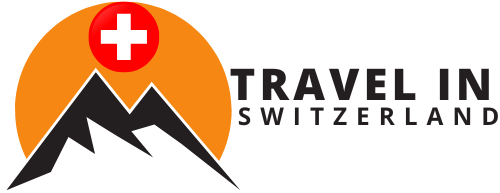
Travel in Switzerland

Swiss Alps: An Ultimate Travel Guide
Are you looking for an incredible travel destination with stunning natural beauty and a diverse range of activities? Look no further than the Swiss Alps. With breathtaking mountain ranges, picturesque villages, and thrilling outdoor adventures, the Swiss Alps offer something for everyone. In this ultimate travel guide, we’ll explore the best places to visit, things to do, and tips for planning your trip to the Swiss Alps.
Geographical Overview of the Swiss Alps
The Swiss Alps are a mountain range located in Switzerland and neighboring countries, including Italy, Austria, France, and Liechtenstein. The Alps cover a significant portion of Switzerland, with over 200 peaks reaching heights of over 3,000 meters (9,800 feet) above sea level. Some of the most famous peaks include the Matterhorn, the Eiger, and the Jungfrau.
Best Time to Visit the Swiss Alps
The Swiss Alps are a year-round destination, with each season offering unique experiences. Summer (June to August) is the peak tourist season, with warm weather and plenty of outdoor activities. Winter (December to February) is the peak ski season, with excellent snow conditions and festive holiday events. Spring (March to May) and fall (September to November) offer milder temperatures and fewer crowds.
Top Destinations in the Swiss Alps
- Zermatt Located at the base of the Matterhorn, Zermatt is one of the most popular ski destinations in the Swiss Alps. The village is car-free, making it a peaceful and relaxing destination. In addition to skiing and snowboarding, visitors can enjoy hiking, mountain biking, and paragliding in the summer.
- Interlaken Interlaken is a picturesque town located between two lakes in the heart of the Swiss Alps. It is a popular destination for outdoor enthusiasts, with activities ranging from skydiving and bungee jumping to hiking and skiing. Visitors can also take a scenic train ride to the Jungfraujoch, the highest train station in Europe.
- St. Moritz St. Moritz is a luxurious resort town known for its glamorous clientele and winter sports. It hosted the Winter Olympics twice and is home to the famous Cresta Run toboggan track. In the summer, visitors can enjoy hiking, mountain biking, and water sports on Lake St. Moritz.
- Grindelwald Grindelwald is a charming village surrounded by the iconic mountain peaks of Eiger, Mönch, and Jungfrau. It is a popular destination for skiing and snowboarding in the winter and hiking and mountaineering in the summer. Visitors can also take a cable car to the top of the First mountain for stunning views of the surrounding area.
- Davos-Klosters Davos-Klosters is a year-round destination that offers a variety of activities, including skiing, snowboarding, hiking, and mountain biking. It is also home to the World Economic Forum, which takes place annually in January. Visitors can explore the local culture by visiting the Kirchner Museum or taking a horse-drawn carriage ride through the town.
Outdoor Activities in the Swiss Alps

- Skiing and Snowboarding The Swiss Alps are world-renowned for their skiing and snowboarding opportunities, with over 200 ski resorts throughout the region. Some of the most popular resorts include Verbier, Zermatt, and St. Moritz.
- Hiking and Trekking In the summer months, the Swiss Alps offer an extensive network of hiking and trekking trails, ranging from easy walks to challenging multi-day treks. Some of the most popular routes include the Haute Route, the Via Alpina, and the Eiger Trail.
- Mountaineering The Swiss Alps are home to some of the most iconic peaks in the world, including the Matterhorn and the Eiger. Experienced climbers can tackle these challenging mountains with the help of local guides and mountaineering schools.
- Paragliding For a thrilling aerial adventure, visitors can try paragliding in the Swiss Alps. Some of the best paragliding spots include Grindelwald, Interlaken, and Zermatt.
- White Water Rafting The Swiss Alps offer excellent white water rafting opportunities, with rapids ranging from class II to class V. Some of the best rivers for rafting include the Lütschine, the Saane, and the Rhone.
- Mountain Biking The Swiss Alps offer a vast network of mountain biking trails, ranging from easy rides to technical downhill courses. Some of the best trails include the Arosa Lenzerheide Bike Park, the Davos Klosters Bike Park, and the Verbier Bike Park.
- Golfing For a more relaxed outdoor activity, visitors can enjoy golfing in the Swiss Alps. The region offers several world-class golf courses, including the Golf Club Crans-sur-Sierre, the Golf Club Engadin, and the Golf Club Montreux.
Accommodations in the Swiss Alps
- Hotels and Resorts The Swiss Alps offer a wide range of hotels and resorts, from budget-friendly options to luxurious five-star properties. Some of the most famous hotels include the Gstaad Palace, the Kulm Hotel St. Moritz, and the Carlton Hotel St. Moritz.
- Chalets and Apartments For a more authentic Alpine experience, visitors can stay in a traditional chalet or apartment. These accommodations offer more privacy and space than hotels and are often equipped with full kitchens and other amenities.
- Hostels and Camping For budget travelers, hostels and camping sites are available throughout the Swiss Alps. Hostels offer shared dormitories and private rooms at affordable prices, while camping sites provide a more outdoor-oriented experience with beautiful scenery and fresh air.
- Airbnb and Vacation Rentals For travelers who prefer a more independent experience, Airbnb and vacation rentals are available in the Swiss Alps. These options offer a range of unique and charming accommodations, from cozy mountain cabins to modern apartments with stunning views.
Food and Drink in the Swiss Alps
- Cheese Switzerland is known for its delicious cheese, and the Swiss Alps are the perfect place to try some of the best varieties. Some of the most famous cheeses include Gruyère, Emmental, and Appenzeller.
- Chocolate Switzerland is also famous for its chocolate, with several chocolate factories located in the Swiss Alps. Visitors can take tours and tastings at factories such as Lindt, Toblerone, and Cailler.
- Wine Although Switzerland is not as well-known for its wine as some other European countries, it still produces some excellent varieties. The Valais region in the Swiss Alps is particularly renowned for its wine production.
- Fondue and Raclette Fondue and raclette are two traditional Swiss dishes that are popular in the Swiss Alps. Fondue is a melted cheese dish that is usually served with bread, while raclette is a melted cheese dish that is usually served with potatoes and other accompaniments.
The Swiss Alps offer a wide range of activities, accommodations, and culinary experiences for visitors to enjoy. Whether you are an outdoor enthusiast or prefer a more relaxed vacation, the Swiss Alps have something for everyone. From skiing and hiking to cheese and chocolate, a trip to the Swiss Alps is a truly unforgettable experience.
- What is the best time to visit the Swiss Alps? The Swiss Alps can be visited year-round, but the best time to visit depends on your interests. Winter sports are best enjoyed from December to March, while summer activities are available from June to September.
- Do I need a visa to visit the Swiss Alps? Visa requirements for the Swiss Alps depend on your nationality. Visitors from most countries can enter Switzerland for up to 90 days without a visa.
- What is the currency in Switzerland? The currency in Switzerland is the Swiss franc (CHF).
- What is the official language of Switzerland? Switzerland has four official languages: German, French, Italian, and Romansh.
- Are the Swiss Alps expensive to visit? The cost of visiting the Swiss Alps can vary depending on your travel style and budget. Switzerland is generally considered to be a more expensive destination, but there are options for budget travelers.
Related Articles
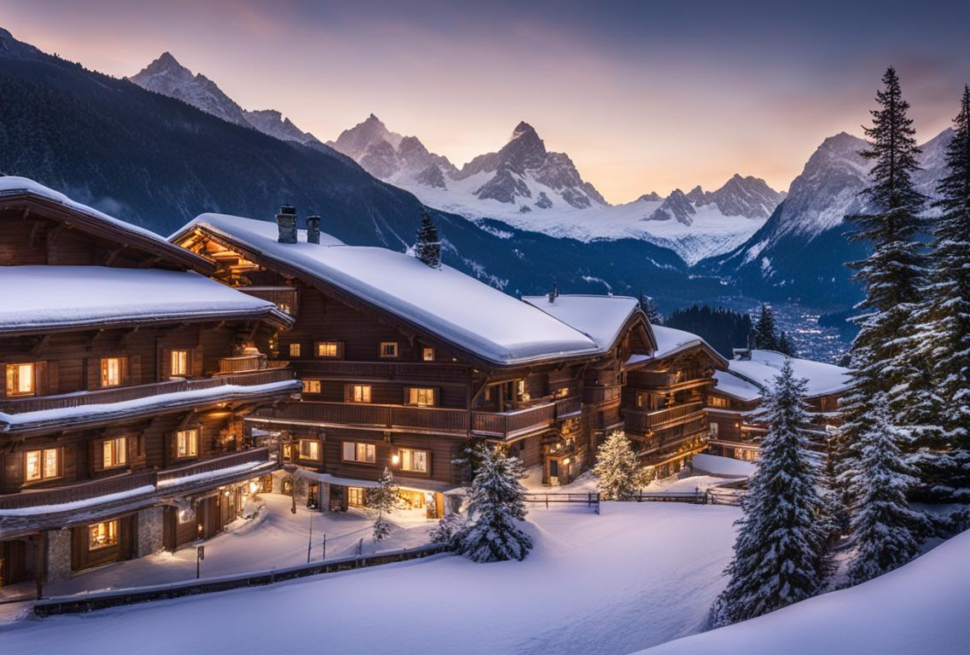
Swiss Winter: Travel Guide

Discovering Luzern: Best Attractions and Experiences
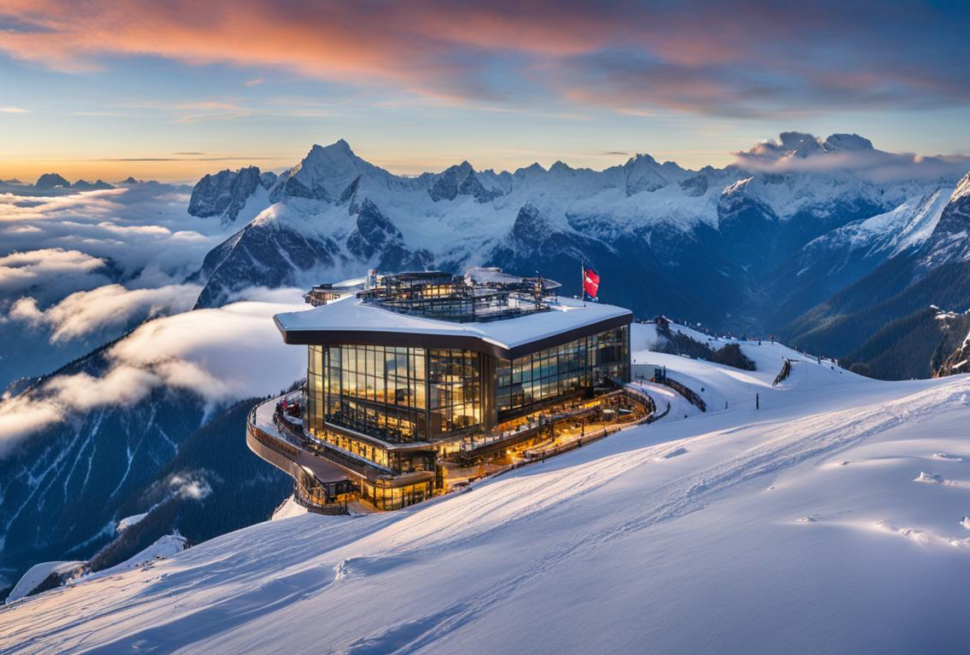
10-Day Trip to Switzerland: Optimize your Travel Experience
Leave a reply cancel reply.
Your email address will not be published. Required fields are marked *
Save my name, email, and website in this browser for the next time I comment.
The 11 most incredible places to visit in Switzerland: be inspired

Nov 24, 2023 • 8 min read
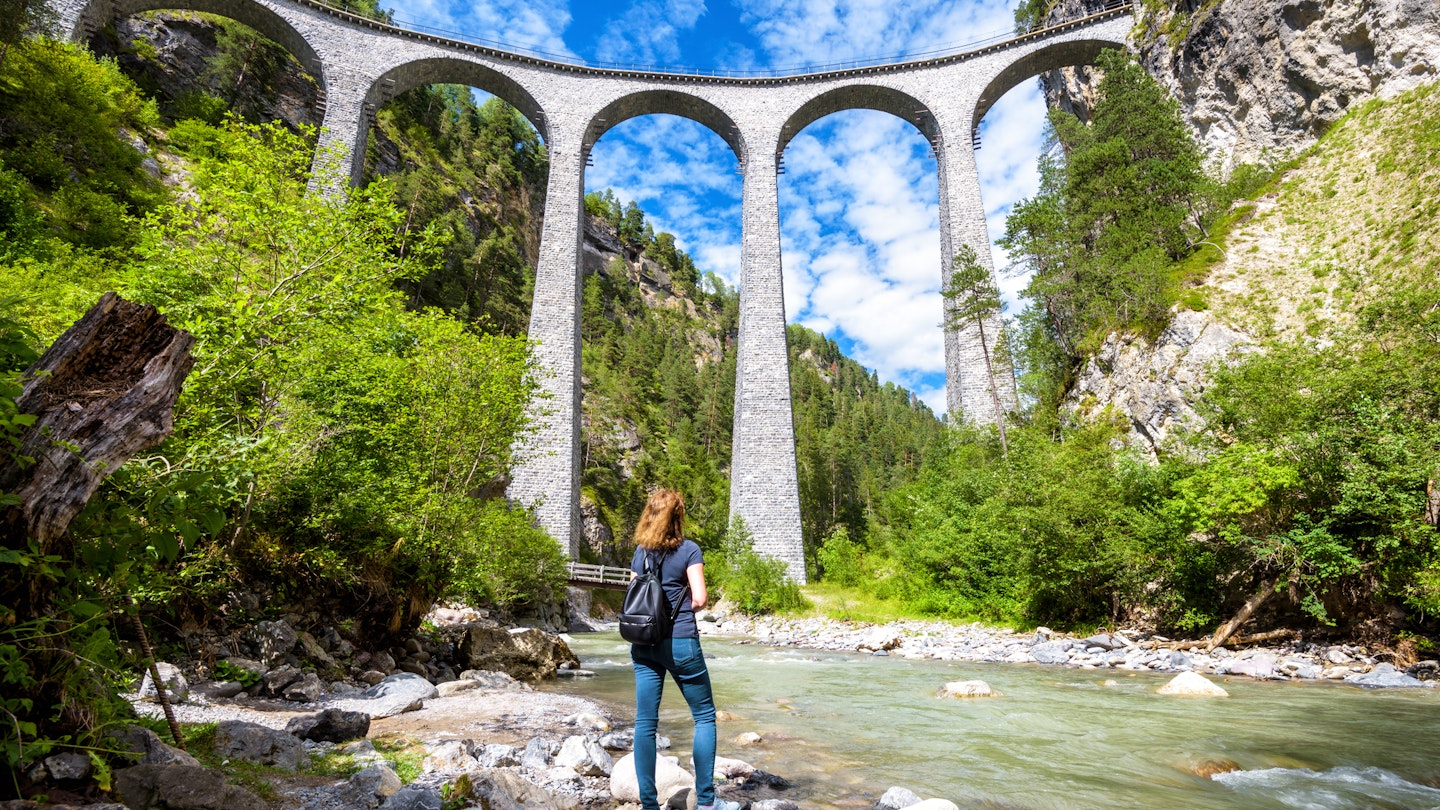
Switzerland, it really is this stunningly beautiful © scaliger / Getty Images
Nowhere is perfect, but let’s face it, Switzerland gets pretty darned close.
The Alps ripple across 60% of the country, and the landscapes and towns look like they have been dreamed up by a particularly imaginative child. We’re talking glacier-capped peaks, crash-bang waterfalls, turreted castles of the fairy-tale kind and lakes in the most surreal shade of turquoise blue. Red trains curl up mountains to improbable heights and clanging cowbells ring out across hilly meadows that you can skip down with Heidi-like glee.
Even the culture-filled cities have magnificent backdrops of vineyards, lakes or rivers, and the mountains are never more than a whisper away. As natural beauty goes, Switzerland is off the charts. That makes it a joy to travel around , whether by train, bus or car. Here are the 11 best places to visit in Switzerland.

1. Jungfrau
Best for outdoor activities
The idyllic Jungfrau region is the icing on the Alpine cake of Switzerland’s Bernese Oberland . Sky-high peaks, glaciers and thundering falls elicit gasps of wonder wherever you go. Grazing the 4,000m (13,123ft) mark are Switzerland’s "big three:" Eiger (Ogre), Mönch (Monk) and Jungfrau (Virgin), enshrined in mountaineering legend.
Take a once-in-a-lifetime ride up to the everlasting snow at Europe’s highest train station, 3,454m (11,332ft) Jungfraujoch . Hike, ski, sled and zip-line among mountains of myth in Grindelwald , enjoy waterfalls galore in Lauterbrunnen and tackle every kind of extreme sport imaginable in Interlaken (skydiving, ice climbing, glacial bungee jumping – you name it). The Jungfrau region is the great outdoors on a blockbuster scale.
Planning tip: Rush this region and you’ll regret it. Allow a week or more to dive in deep if you have the time. It's worth it.
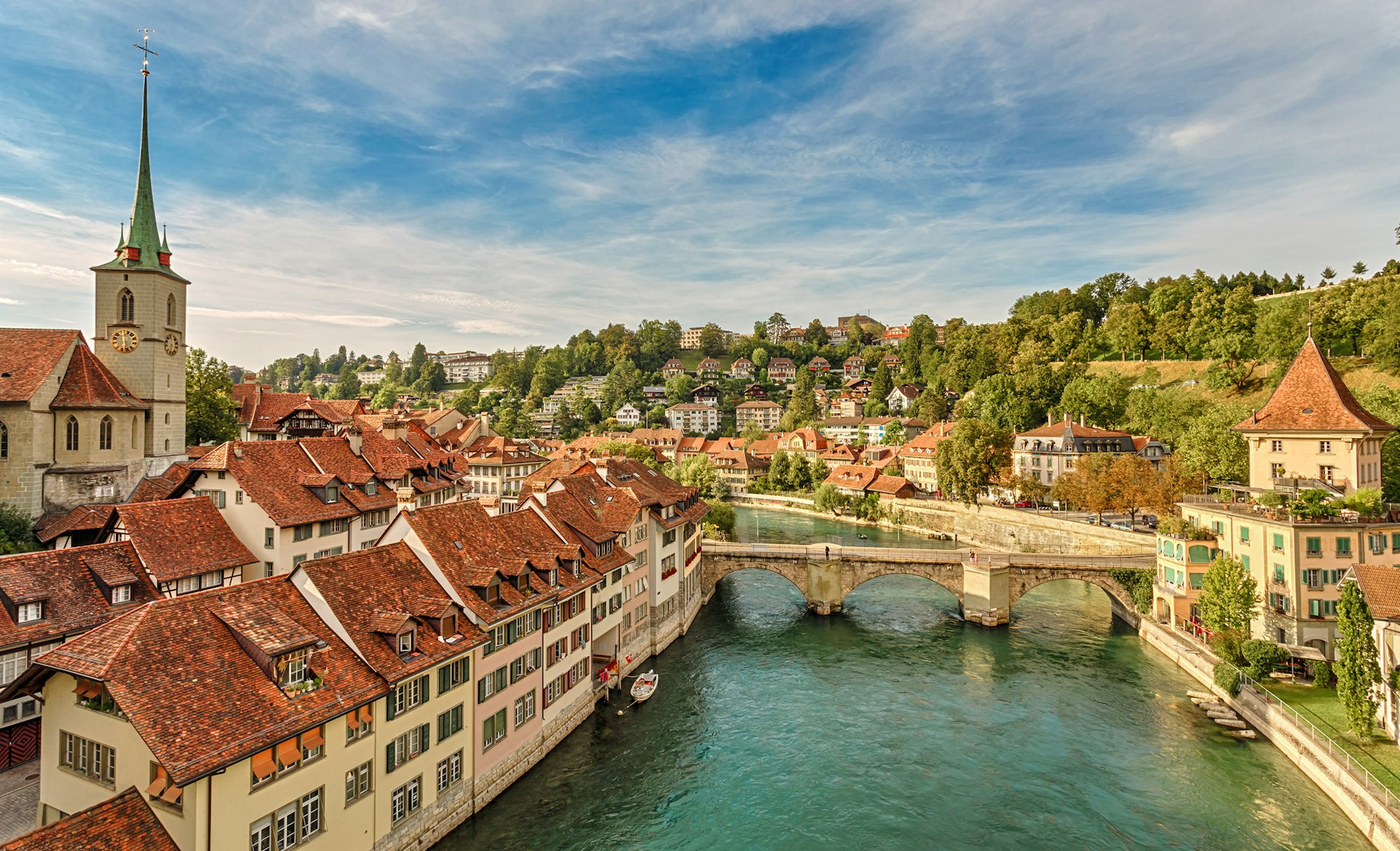
Best for stepping back in time
Bern often pops up in those I-can’t-believe-it’s-the-capital trivia questions, but frankly, Switzerland’s first city deserves more love. The cobbled, flag-bedecked medieval Old Town is a UNESCO World Heritage treat, with 6km (3.7 miles) of covered arcades, cellar shops and bars, fantastical folk figures topping 16th-century fountains and the eye-grabbing Zytglogge . Framed by wooded hills and split in two by the turquoise Aare River, this red-roofed city looks good from pretty much every angle. It’s pure storybook stuff for kids, too, with its giant who snacks on children (the Kindlifresserbrunnen ) and resident bears .
Sights-wise, you’ll be drawn to big-hitters like the Einstein-Haus (where the genius and Nobel laureate developed his theory of relativity), the Kunsthaus (with its outstanding fine arts collection) and Renzo Piano’s wavy Zentrum Paul Klee (Bern’s answer to the Guggenheim).
In summer, the action’s on the water with swimming, tubing, rafting and paddleboarding along the Aare River.
3. Geneva and Lake Geneva
Best for a cosmopolitan city experience
In Switzerland’s western crook, crescent-shaped Lake Geneva (Lac Léman to Francophones) is a joy to behold with its mountain backdrop, spirit-lifting views, vineyards and shoreline necklaced with handsome cities and castle-crowned towns.
Marked by its rainbow-kissed Jet d’Eau fountain and Mont Blanc peeping up on the horizon, Geneva wraps around the lake’s southern shore. The worldly city makes an excellent launchpad for exploring with big-hitting museums and galleries to absorb, botanical gardens to stroll, lidos to swim at, Old Town cafes to hang out in and bright-yellow mouettes ferrying locals across the water – surely one of the world’s most scenic commutes.
Planning tip: It’s a quick boat or train hop to Lausanne , which can culturally give Geneva a run for its money, especially with its Plateforme 10 arts district , the lovely terraced vineyards of the Lavaux wine region (a UNESCO World Heritage site) and flower-draped Montreux , host to one of the world’s most famous jazz festivals, with the picture-perfect Château de Chillon right on its doorstep.
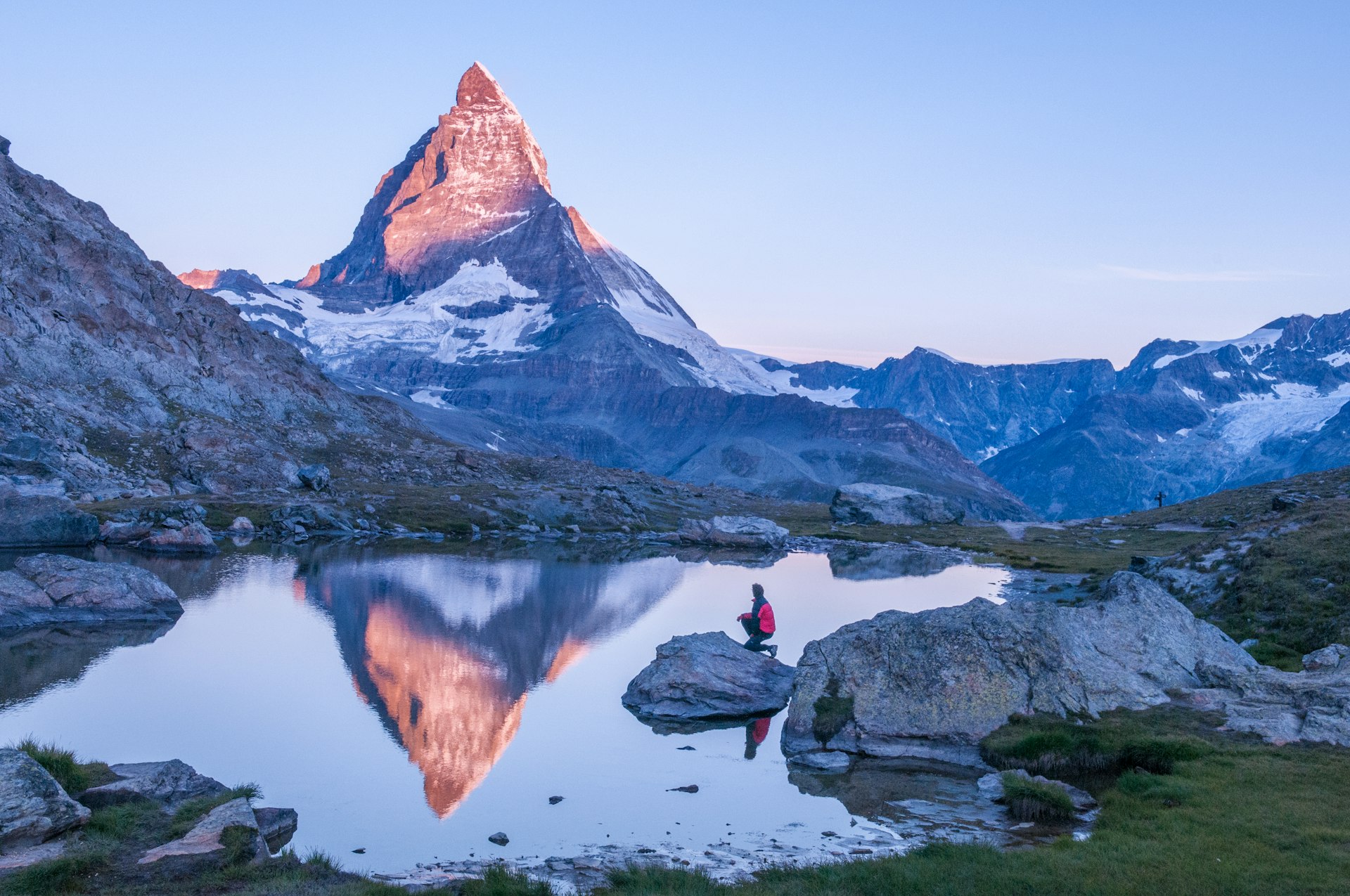
Best for hiking, skiing and rock-climbing
No peak has more pulling power than the 4,478m (14,692ft) Matterhorn, a terrific, gnarled fang of rock that flings up above the seductive, timber chalet-filled Alpine resort of Zermatt . It's Switzerland’s mountain icon, so beloved by the nation that it inspired the pyramid shape of Toblerone chocolate.
Zermatt is more than a one-mountain wonder. Climbers have been rocking up here since the mid-19th-century, and it’s still a magnet for challenging summit ascents today. Otherwise, come to hike, ski and gaze over a sea of glaciers and 4,000m (13,123ft) peaks at Matterhorn Glacier Paradise .
5. Swiss National Park
Best for wildlife (and wildflowers) spotting
Switzerland has just one national park? Yes, we know it’s a shock, but trust us it’s a good one. Snuggled away in a remote corner of the country’s southeast on the border with Italy, the 172-sq-km (66-sq-mile) Swiss National Park is the Alps in overdrive: a nature-gone-wild spectacle of high moors, forests, wildflower-freckled pastures, waterfalls, jewel-colored lakes and mountains as high as the sky, where ibex, chamois, marmots, deer and golden eagles roam and fly free.
Planning tip: Start off on the right foot with the inside scoop on walking trails and ranger-led guided hikes at the visitor center in Zernez.
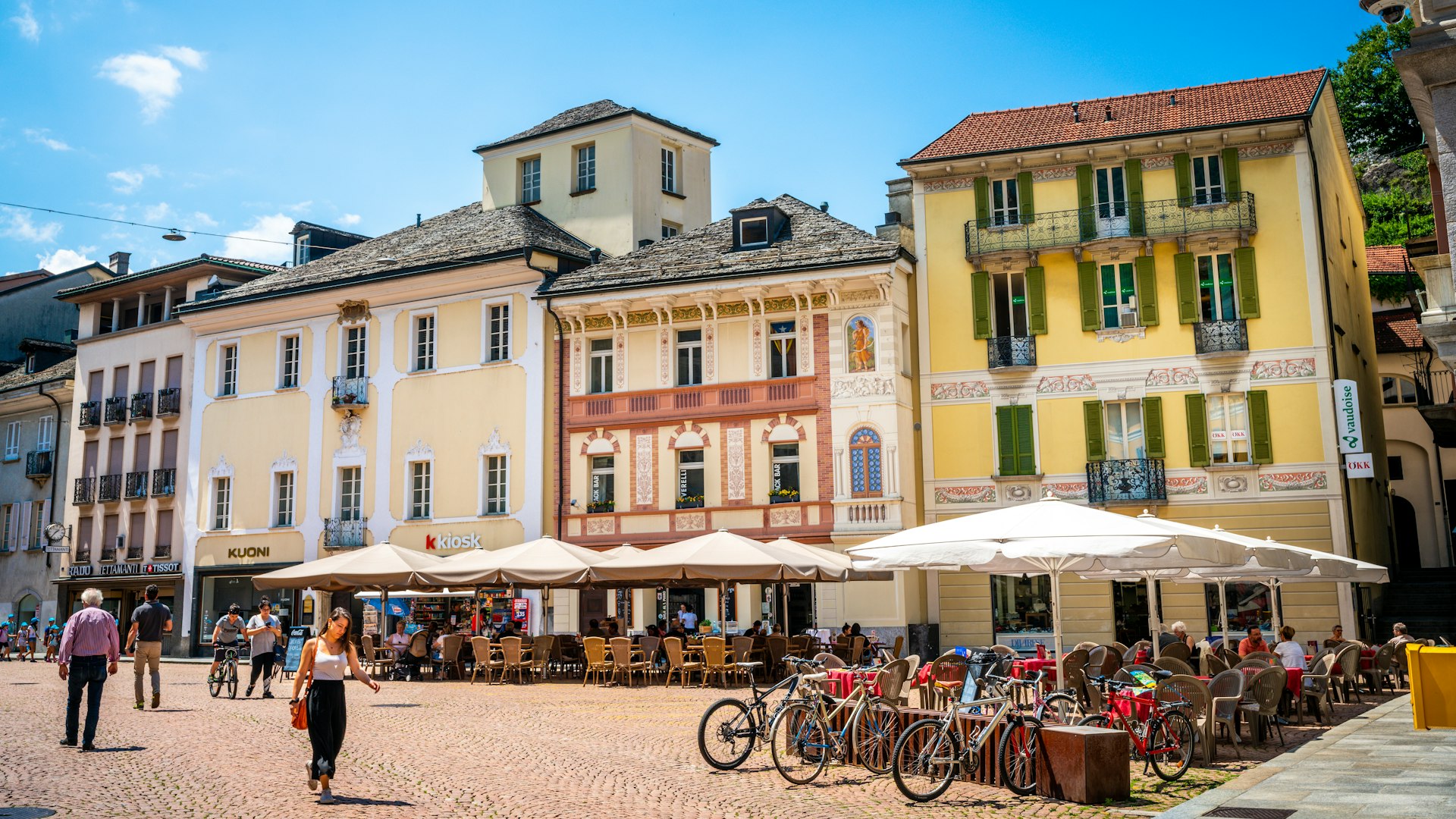
6. Bellinzona
Best for piazza dining
With medieval castles rising high and the Alps rearing beyond, good-looking Bellinzona in Ticino is a taste of the best of Italy's best food and culture in Switzerland. You’ll find a generous splash of Italian flair in its historic center, woven with flower-draped alleys, Renaissance churches and cafe-rimmed piazzas that brim with life, laughter, clinking glasses and the out-of-tune toll of countless campaniles.
Planning tip: Top of any wish list is seeing the castles, among them hilltop Castelgrande , which can be drawn out into a full day’s activity (bring water and comfortable shoes).
7. Jura Mountains and Lac de Neuchâtel
Best for road tripping
In the dark forested hills along the French-Swiss border, the Jura Mountains are a natural wonder. This peaceful region has a beauty all its own: meadows of green, ancient forests, rocky outcrops overlooking a trio of lakes against an Alpine backdrop and slow-paced villages and valleys little changed in centuries.
Begin with a road trip . Kick off at the Jura Vaudois Nature Park for hikes with dress-circle views of Lake Geneva and Gruyère cheese tastings at rustic Alpine huts. Swing north to Lac de Joux, the watchmaking village of Le Sentier, and Vallorbe, honeycombed with Switzerland’s biggest (and most impressive) limestone caves.
Tag on a trip to Lac de Neuchâtel and you can bathe in the thermal waters of Yverdon-les-Bains, tiptoe off the map in the lushly rolling Val-de-Travers (birthplace of absinthe) and the crescent-moon canyon of Creux du Van . Cultured Neuchâtel is a fitting climax with its fantasy of a lavishly turreted château.

8. Lake Lucerne
Best for sunset promenades
Reclining on the shores of its glittering namesake lake , Lucerne is a walkable, medieval dream of a city that has a magic you can’t quite put your finger on. It will grab you when you are strolling along the promenade as the sun sets in a blaze of gold and pinks or as you cruise across its waters to mountains of myth: 2,132m (6,995ft) Mt Pilatus, where Wagner raved about the Alpine panorama and Queen Victoria trotted on horseback, and 1,797m (5,896ft) Rigi, with a light so sublime Turner painted it in three different moods.
The little city punches far above its weight culturally with its iconic medieval Kapellbrücke bridge leaping across the Reuss River and the Jean Nouvel–designed KKL arts center and Sammlung Rosengart harboring a prized private collection of Picassos. Ambling past the belle époque hotels lining its shores, the same views that captivated Goethe, Queen Victoria and Wagner in the 19th century will hold you in their thrall.
Planning tip: With more time on your hands, you can really get out on the lake. Cruise across fjord-like, mountain-rimmed Lake Uri for a taste of Switzerland’s geographical and spiritual heartland. Boats ply the glassy turquoise waters to Rütli , birthplace of the Swiss nation.
9. Appenzell and northeastern Switzerland
Best for a bucolic Swiss experience
Northeastern Switzerland might not have the in-your-face drama of higher realms of the Alps, but it nevertheless delights in its own serene, deeply rural way with dairy country unraveling to meet the mountains and half-timbered, gaily muralled towns all fit for a postcard. This pocket-sized region is perfect for a family vacation with a hit of culture and gentle adventure.
Begin in St Gallen, with a spin round its World Heritage Stiftsbibliothek (Abbey Library), a literary marvel and a feast of rococo art and architecture. Move on to folksy, ridiculously pretty Appenzell, popping into the Schaukäserei to sample regional cheeses.
Muscling further south into the Alps, head on up to Säntis at 2,501m (8,205ft) for views embracing six countries and then go to Werdenberg , a tiny speck of a medieval hamlet home to Switzerland’s oldest timber chalets.
Planning Tip: Close by is Vaduz , Liechtenstein ’s princely, castle-topped capital on the banks of the Rhine.
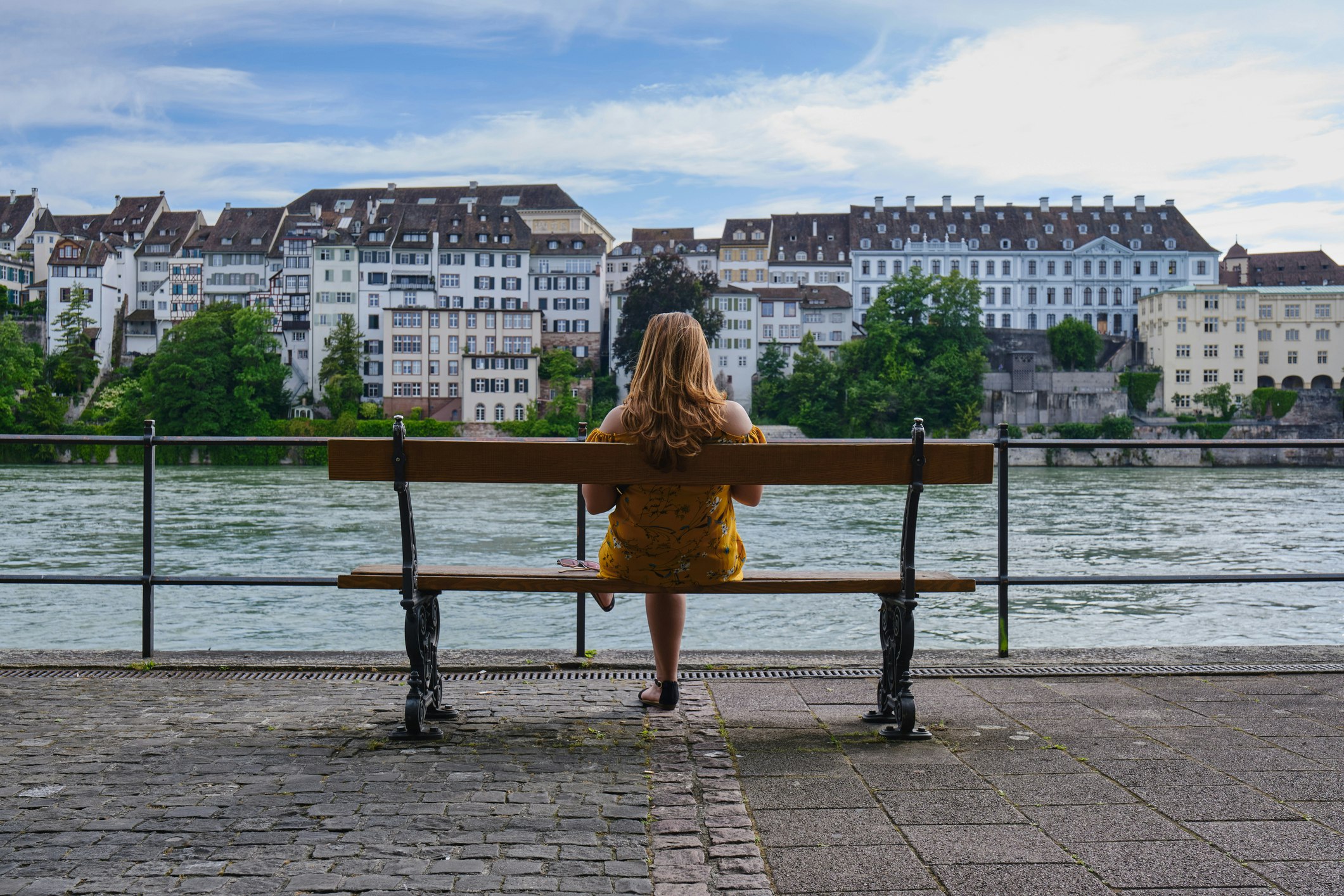
Best under-the-radar city experience
Popularity-wise, poor old Basel barely gets a look. But that’s a mistake. Straddling the Rhine, this city has everything going for it: world-class art in some of the country’s best galleries, a hot food scene, avant-garde buildings bearing the hallmark of Pritzker Prize–winning architects and an upbeat cafe culture.
Allow several days for a satisfying romp of the center, where must-sees include the Kunstmuseum and its fine arts collection, the Renzo Piano-designed Fondation Beyeler and the Frank Gehry-designed Vitra Design Museum .
Planning tip: Basel endears itself most to those who look beyond the trophy sights, with sundown drinks by the river or a wild swim in the Rhine. Rent a Wickelfisch (a fish-shaped waterproof bag) at the tourist office, strip to your swimming suit and go with the flow, floating downstream past the city’s landmarks.
Best place to live
Regularly landing at the top in quality-of-living surveys, urban dynamo Zürich never seems to miss a beat: from cool waterside bars on the banks of the Limmat River to its alley-woven Old Town, where the twin-spired Romanesque Grossmünster shines with Augusto Giacometti’s rainbow of stained glass. Le Corbusier’s boldly colored architectural creations and the edgily post-industrial Züri-West neighborhood notch Zürich's culture cred up even further.
Planning tip: In mid-August, Zürich throws one of Switzerland’s wildest parties: the techno-pumping Street Parade.
This article was first published September 2021 and updated November 2023
Explore related stories
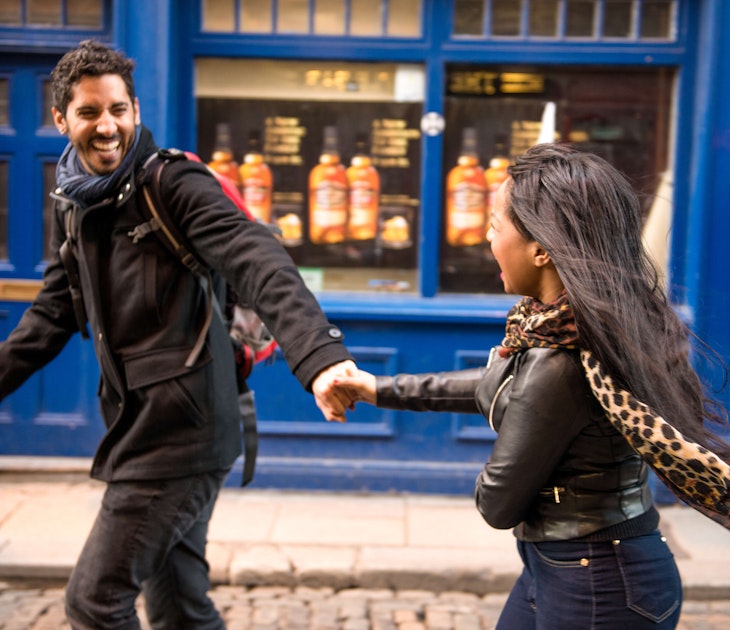
Destination Practicalities
Mar 30, 2024 • 4 min read
Who wouldn't jump at the chance to visit the Emerald Isle? Here’s how to check if you need a visa before setting off on your Irish adventure.
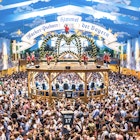
Feb 23, 2024 • 5 min read
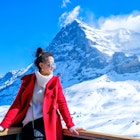
Jan 29, 2024 • 5 min read
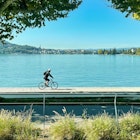
Jan 24, 2024 • 7 min read

Jan 19, 2024 • 11 min read

Jan 5, 2024 • 20 min read
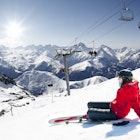
Dec 6, 2023 • 11 min read
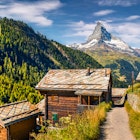
Aug 8, 2023 • 4 min read
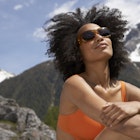
Jun 9, 2023 • 7 min read
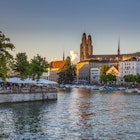
May 4, 2023 • 6 min read
in Switzerland
Trip to Switzerland: Uncover the Best Places to Visit in The Swiss Alps
Updated: Feb 16
A 10-Day Itinerary off the Beaten Track:
Embark on a trip to Switzerland, where you'll venture through the Swiss Alps to discover some of the country's most stunning destinations. This 10-day journey will lead you off the beaten path, allowing you to explore charming Swiss towns and immerse yourself in the natural beauty and rich culture of the region. This adventure in the Swiss Alps is unique, as it offers insider tips from the locals, making it a departure from the typical tourist experience when visiting Switzerland.
Day 1: Arrival in Zurich and Journey to Tschiertschen
Begin your trip to Switzerland at Zurich Airport, setting off on your journey through the Swiss Alps. The scenic drive to Tschiertschen offers breathtaking landscapes, serving as a perfect introduction to the Swiss Alps of Switzerland. Be sure to stop in Bilten along the way to visit the Läderach Chocolate Experience , where you have the opportunity to make your own chocolate. After this delightful experience, continue your journey to Amden and visit the spectacular Aussichtspunkt Chapf . Park your car in Arvenbüel and walk the remaining 1.1km to enjoy panoramic views of the fjord-like Lake Walensee, a stunning natural wonder that encapsulates the scenic beauty of Switzerland.
Day 2: Exploring Tschiertschen
Explore the traditional Swiss village of Tschiertschen, renowned as one of the best places to visit in Switzerland. For accommodation, choose between the Alpina Lodge, a quaint lodge-style typical Swiss house ideal for budget travelers, and the luxurious Alpina Mountain Resort, perfect for those seeking more upscale amenities. Conveniently, both are managed by the same team, allowing guests of the lodge to enjoy the restaurant and spa facilities of the hotel. Tschiertschen is arguably the most quintessentially Swiss village in the country. As you wander its streets, visit local farm shops, and soak in the atmosphere, you'll be captivated by the breathtaking mountain views. A trip up to Gürgaletsch Mountain via the lift is a must-do, offering an opportunity to witness the diverse flora and fauna of the Swiss Alps.
Day 3: Journey to Bergün
Travel to Bergün, a picturesque destination in the Swiss Alps Switzerland, and be sure to visit the impressive Landwasser Viaduct (parking right on the main street) just before you arrive. This architectural marvel is a highlight of any trip to Switzerland. In Bergün, make a point to stop by the unique Bio Bergün farm shop, housed in an old train wagon and operating on a trust basis. Here, you'll find some of the best burger meat and local sausages (called Salsiz) in the region. Afterward, take time to explore Bergün's traditional houses and narrow streets. The town also offers a variety of simple local hikes, allowing you to further enjoy the natural beauty of the Swiss Alps.
Day 4: Drive to Engadine Valley Adventures
Visiting the Engadine Valley is an essential part of any Swiss Alps Switzerland itinerary. The Engadine is one of the highest inhabited valleys in Europe. For your stay, consider either Sylvaplana or Pontresina, each offering its unique charm. In Sylvaplana, we recommend Conrad's Mountain Lodge , known for its incredibly long-form pizzas and exceptionally friendly staff. Sylvaplana is a compact and quiet town, providing a serene escape, while Pontresina tends to be a bit more tourist-oriented with a lively atmosphere.
Both towns are hubs for outdoor activities such as biking and paragliding, adding an adventurous edge to your trip to Switzerland. Whether you choose the tranquillity of Sylvaplana or Pontresina, you'll find ample opportunities to explore the stunning natural beauty and rich cultural heritage of the Engadine Valley. To finish the day, visit famous St. Moritz and stroll through the town or hike into Val Roseg , one of the many side valleys in the Engadine. If you are pressed for time, stop for a quick photo at the San Gian church in Celerina (10 minutes), take a walk around Lake St. Moritz (1-2 hours, park your car here ), or explore Lake Silvaplana (1-2 hours, park your car here ). Insider Tip: Before your stay, check if your accommodation provides you with the Engadine card for free at participating hotels. This card allows you to use all public transport and many mountain railways for free.
Day 5: Muottas Muragl and Morteratsch Glacier
After a restful night in the Engadine, start your day with a ride on the mountain rail to Muottas Muragl, where you'll be greeted with a scenic view over the Engadine Valley. Up there, you'll find a large playground, perfect for families, and you have the option to either hike back down to Pontresina or return via the mountain rail. The breathtaking view from Muottas Muragl is truly worth the trip, offering a panoramic perspective of the valley's beauty.
In the afternoon, make your way to the Morteratsch Glacier. The hike from the parking area to the glacier takes you through a valley filled with typical Engadine pine trees, alongside a meandering river, leading up to the glacier itself.
Day 6: The Charm of Locarno and Ascona
Depart from the Engadine Valley and head towards Locarno and Ascona, two of the most enchanting towns in Switzerland. Each showcases a beautiful blend of Swiss and Italian cultures, with vibrant art scenes and stunning lakeside settings, making them among the best places to visit in Switzerland. The choice of where to stay is almost inconsequential, as both Ascona and Locarno offer their own unique charm and are equally captivating.
During your journey, don't miss the opportunity to stop at Bellinzona to explore its three UNESCO World Heritage castles. Whether you visit one or all, these castles provide a glimpse into the rich history and architectural splendor of the region.
Day 7: Verzasca Dam and Ponte dei Salti
Today, as you drive up the Verzasca Valley towards the famous Verzasca Dam, take in the sights of the traditional Ticino stone houses that dot the landscape, each telling a story of the region's rich architectural heritage. Known for its role in the opening scene of the James Bond film 'GoldenEye,' the dam offers a thrilling bungee jumping experience for the adventurous at heart.
Continue your journey to the picturesque Ponte dei Salti, a historic stone bridge that spans a crystal-clear river. Here, you can enjoy a hike around the area, exploring the natural beauty and serene surroundings. The hike near Ponte dei Salti is a great way to immerse yourself in the stunning landscape and discover the unique charm of this part of Switzerland.
To conclude your day, relax in one of the local osterias and savor a regional polenta dish. My personal favorites are Osteria Grotto Contrattempi and Ristorante Grotto Broggini, both offering a delightful taste of local cuisine.
Day 8: More of Locarno/Ascona and Lugano
Extend your stay in the area for an additional day to further explore its enchanting surroundings. Start your day with a relaxing boat trip from Ascona to the beautiful Isole di Brissago. These islands, nestled in the middle of the lake, provide a serene and picturesque setting, ideal for a leisurely exploration.
After visiting the islands, enjoy a scenic walk along the lakeshore from Ascona to Locarno.
Upon arrival in Locarno, take the Locarno–Madonna del Sasso funicular. This cable car ride ascends to a vantage point offering an amazing view over the town and Lake Maggiore. The panoramic vista from Madonna del Sasso is truly breathtaking. Don't miss the opportunity to visit the Madonna del Sasso itself, a revered Marian Pontifical shrine.

Day 9: Drive to Lucerne
Conclude your trip to Switzerland with a drive to Lucerne, journeying through the stunning Swiss Alps. If the weather permits, opt for the scenic route over the St. Gotthard Pass instead of taking the tunnel. Once in Luzern, explore the city's famous landmarks, including the iconic Chapel Bridge and the vibrant old town. If time allows, enjoy a short cruise on Lake Lucerne, a perfect way to experience the beauty of the area from the water.
If you're able to extend your stay in Luzern by an additional day, I highly recommend taking the mountain railway from Alpnachstad to Mount Pilatus for a breathtaking view over Lake Lucerne. This excursion offers stunning panoramic vistas and an unforgettable experience.
Alternatively, take the train and bus to Obbürgen, Abzw. Trogen , and from there, hike to the Hammetschwand Elevator, an extraordinary elevator that ascends Bürgenstock mountain. During your walk, you'll pass by the Instagram-famous Hotel Villa Honegg, known for its infinity pool. Be sure to capture a photo from this spot – it's a view that's truly picturesque and embodies the beauty of Switzerland.
Day 10: Conclude your trip to Switzerland - Return to Zurich
This 10-day itinerary provides a perfect blend of adventure, relaxation, and cultural immersion in Switzerland. Experience the thrilling landscapes of the Swiss Alps and the serene beauty of Lake Lucerne, with each day bringing new discoveries and unforgettable moments. This journey through Switzerland showcases the exceptional diversity and allure of the country.
As you conclude this tour, you will have explored some of the most beautiful Swiss small towns and cities, each offering its unique charm and character. From picturesque mountain villages to vibrant lakeside towns, this trip encompasses the very best of Switzerland, leaving you with a comprehensive and deeply satisfying experience of Swiss culture, nature, and heritage.
- Destinations
Recent Posts
Cocktails & Conversations: A Guide to the Best Summertime Bars in Lausanne
Discover the 6 Top Car-Free Villages in Switzerland for Quiet Getaways
The Best Cities to Visit in Switzerland

What are we about?
Summertime in Switzerland: Discover tips, tricks, and lifestyle hacks from locals to fully enjoy the Swiss summer.
Stay updated with the latest news and exclusive insights. Subscribe now and don't miss out!
Thanks for submitting!
Best Towns In The Swiss Alps (Must-Visit For Scenic Views)
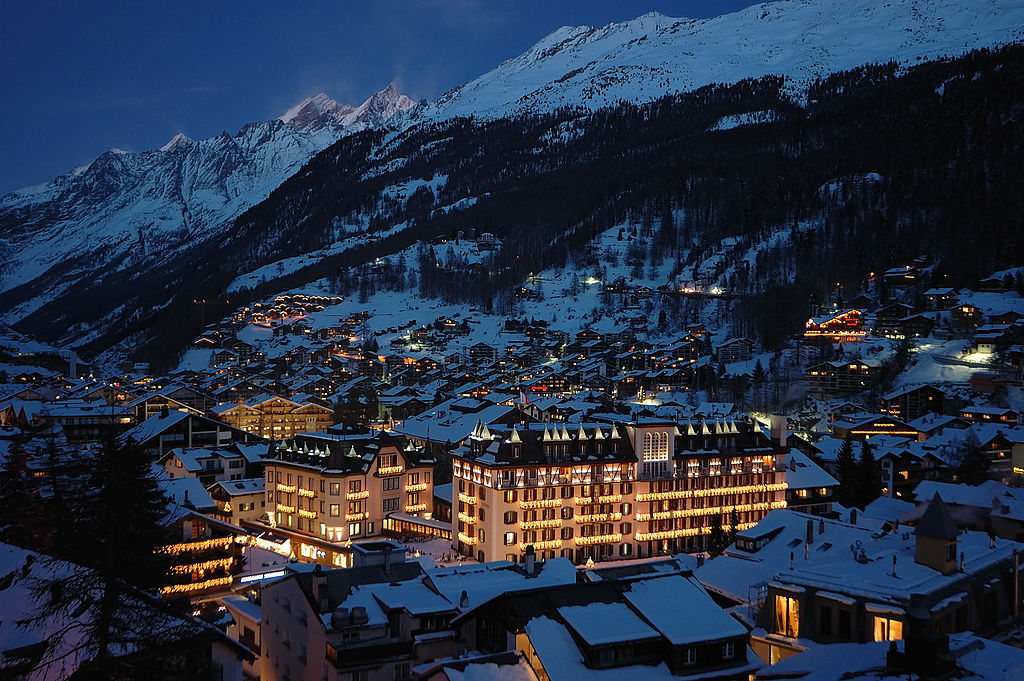
Zurich and other larger cities in Switzerland are well worth a visit for sightseeing, shopping, museums, and exciting nightlife. However, for the most complete cultural and picturesque Swiss experience, visiting a few of the Alpine nation’s small villages is a must-do. Dozens of small towns dot the Swiss countryside oozing charm and surrounded by unforgettable views.
You’ll get an up-close look at medieval architecture, the ski resort culture, and post-card-perfect scenery while feeling as though you stepped into a Tolkien novel. Don’t leave Switzerland without visiting at least one of the following fairytale towns in Switzerland.
Table of Contents
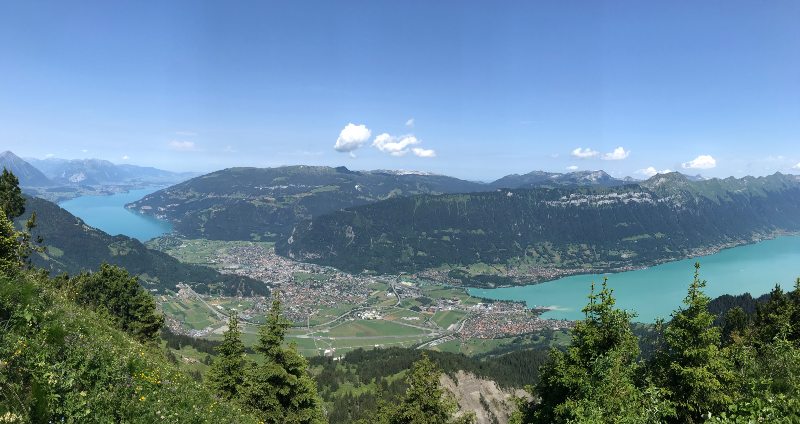
Situated at the northwest end of its eponymous lake, Thun is considered the gateway to the Bernese Oberland. In addition to stunning views of the Aare River and Lake Thun, one of Switzerland’s largest and loveliest lakes, the town boasts a dazzling white 12th-century castle.
The castle itself is reason enough to visit the town of Thun. Located less than a mile from the lake, its five floors feature a historical museum with exhibits that highlight the region’s rich and fascinating history. From the castle’s corner towers, you’ll have marvelous views of the Alps and the lake. The Knight’s Hall is still intact in the mostly-original dungeon and hosts concerts and public events.
While exploring Thun’s famous castle is a must-do, you’ll want to stroll along the town’s cobblestone streets and ancient raised promenade to admire the row of traditional houses and browse the shops on different levels.
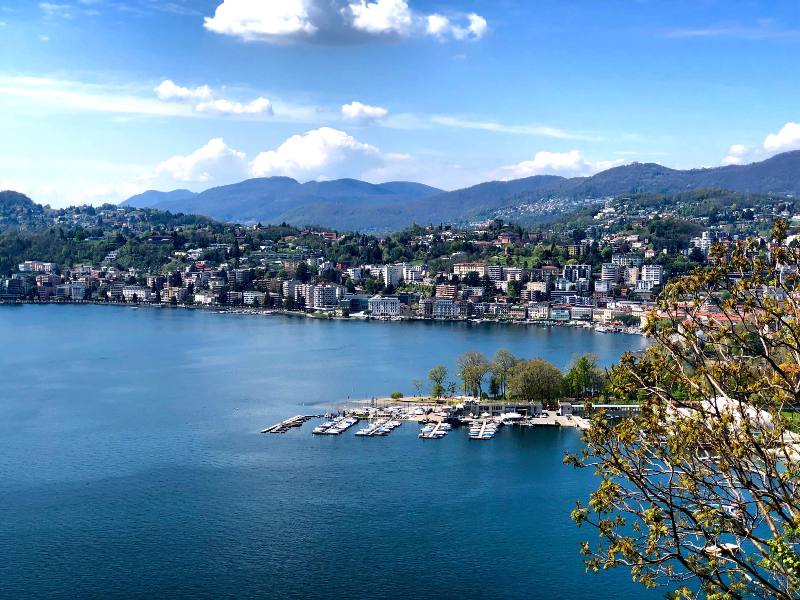
Lugano is the largest town in the Ticino region and is visited for its more temperate climate and Mediterranean flair. It has all the appearance of a world-class city and is Switzerland’s third most financial and conference center. Even so, it has all the eminence of a small town with quaint villas and flower-laden parks.
The town is situated on lovely Lake Lugano’s northern side with splendid views of numerous surrounding peaks. Monte San Salvatore and Monte Brè are the closest mountains. From here, you’ll have a panorama of the lake, the town, and the alpine scenery.
Lugano’s historic town center is traffic-free and features Mediterranean-style squares and arcades lined with Italianate Lombardy-style architecture. Located right on the shores of the lake, the Parco Civico is a magical place with subtropical foliage like olive and palm trees. The lakeside promenade will lead you to beautiful Belevedere Gardens filled with camellias, magnolias, and modern works of art.

Lucerne is located in the mostly German-speaking part of central Switzerland on the banks of Lake Lucerne. The town has stunning lake views along with views of Mt. Pilatus and Mt. Titlis.
Since the town straddles the Reuss River, it boasts several historic and modern bridges. One of the most memorable landmarks is the Chapel Bridge built from wood in the 14th century. It’s thought to be one of Europe’s oldest covered bridges and features 17th-century paintings that tell the story of the city’s history.
Lucerne’s Old Town is traffic-free and beckons visitors to stroll the streets to admire the medieval architecture and browse the Swiss authentic shops and stop by the inviting cafes.
Visiting Lucerne is a must-do day trip while in Zurich, Switzerland’s largest city. It’s only a 45-minute ride away by train.
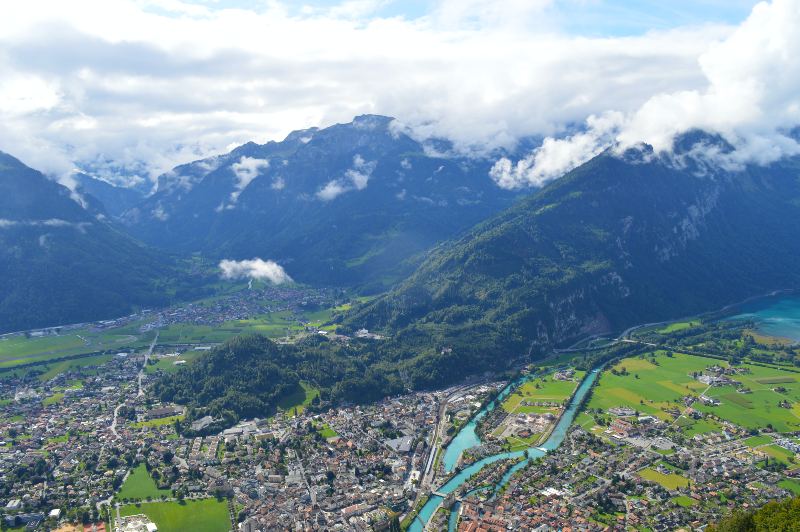
Interlaken is a popular tourist town located in the Bernese Oberland region. Its sparkling lakes and snow-capped peaks were the inspiration for artists during the 19th century, and the town’s beauty is captured in the works of Swiss artists such as Franz Niklaus König.
Today, Interlaken is frequented by backpackers and outdoor adventurers such as watersports and winter sports from windsurfing and kayaking to skiing and tobogganing. Because of its position, Interlaken has become a popular paragliding spot. Thrill-seeking paragliders fill the sky to take in glorious views of the lakes and mountains.
Interlaken is also the gateway to Switzerland’s Jungfrau region where you can climb aboard the Jungfraujoch Express to reach what’s called the “Top of Europe” at an altitude of over 11,332 feet.
Travelers who come to Interlaken can stay in one of a number of Victorian hotels that are listed as Swiss heritage sites of national significance.

Sometimes called the “Swiss Riviera,” Montreux is situated on the shores of Lake Geneva in Switzerland’s French-speaking region. It’s a pretty town with stunning historic architecture and a vibe that attracts artists, writers, and musicians. Home to the famous Montreux Jazz Festival , its storied musical history dates back to 1946 when the September Musical was founded. You’ll see a statue of him in town.
Then in 1991, Freddie Mercury made his final recording at the Queen Studio. Shania Twain used to call Montreux home, and Deep Purple recorded their iconic album Machine Head here.
In addition to a host of cultural attractions and events, Montreux has lots of opportunities for outdoor adventures all year long. You can go skiing and snowboarding in winter and hiking and biking through the vineyards of Lavaux in summer.
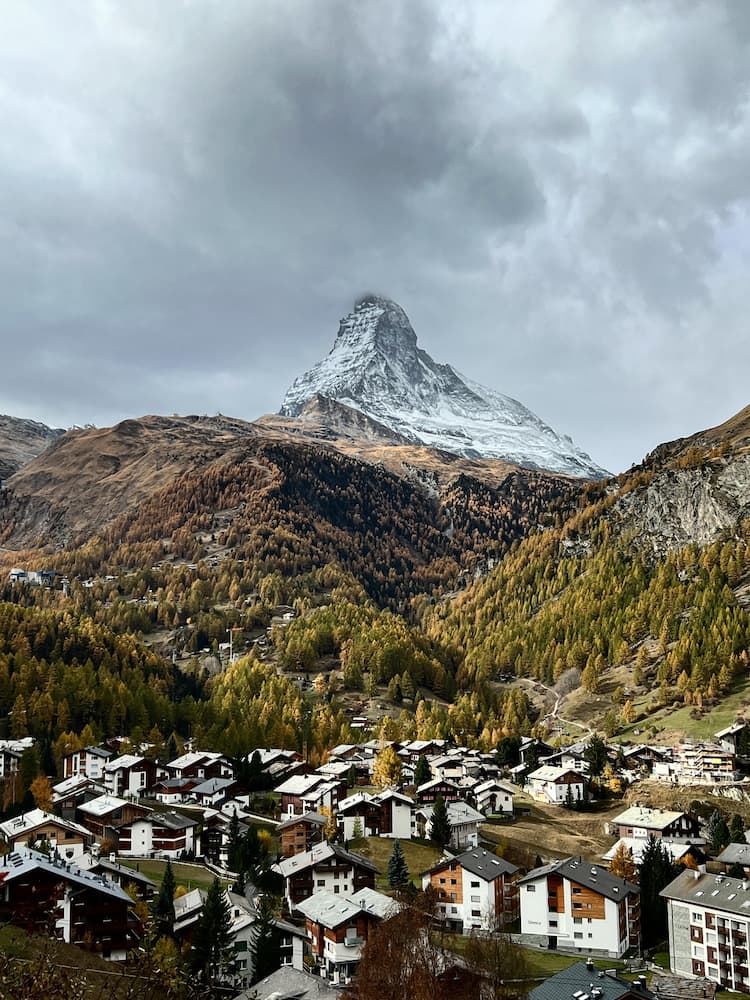
Zermatt is best known for the Matterhorn —brought to international attention when English explorer Edward Whymper conquered climbing the jutting peak in the mid-19th century. It’s also home to a world-famous skiing resort, one of the highest in Europe with skiing all year long.
Combining the charm of an Alpine village with the infrastructure of a modern town, Zermatt was founded on mountaineering. You can learn all about it at the Matterhorn Museum. Other historically significant attractions include the rock carvings and Hubelwäng’s prehistoric grinding stone.
There are countless things to do in Zermatt , many of which involve cable cars, chair lifts and mountain trains like the Gormergrat Bahn, Europe’s highest open-air railway. The views of the Alps are incomparable and the Matter Vispa river adds to the beauty. Its location on the border between Switzerland and Italy imparts a defining international flair to this small town that you’ll notice in the cafes and all around town.

Like many Swiss towns, Brig has a grand old historic quarter. Located in the Upper Valais, its history is linked to Simplon Pass, a thrilling alpine pass that begins just outside the town’s gates. During the 19th century, Napoleon built the first manmade road in Switzerland through the pass to move his armies.
You’ll find Stockalper Palace, an old baroque castle built between 1658 and 1678 in the historic quarter along with stately homes, hotels, and inns. The Bahnhofstrasse is lined with interesting shops to browse.
Brig is also a popular holiday destination for the Swiss and has a lot of amazing activities to offer for travelers. It’s near the best hiking and ski regions and has its own thermal baths. The exhilarating Brigerbad Baths is one of Switzerland’s largest open-air thermal centers . The town is also situated along the route of the Glacier Express, a scenic railway that connects Zermatt and St. Moritz via Andermatt.
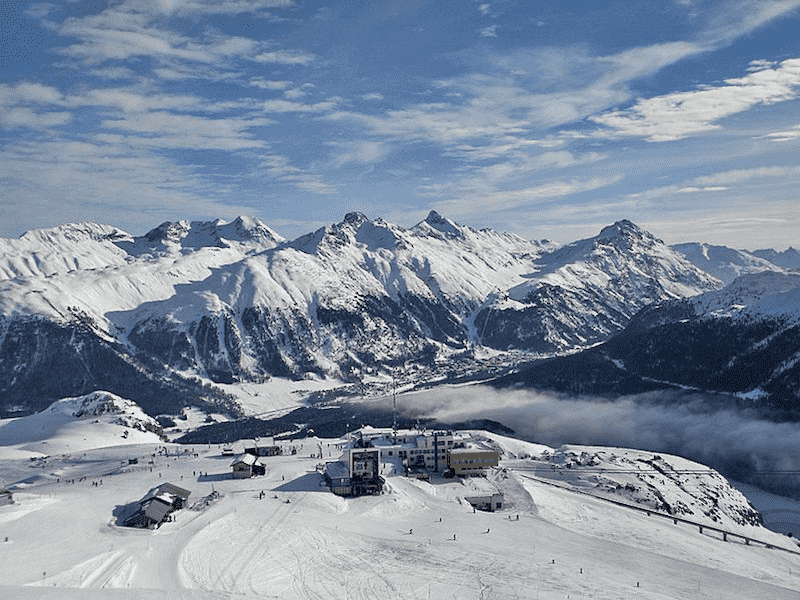
St Moritz is a luxury resort town in Switzerland’s gorgeous Engadin Valley and home to one of the world’s most exclusive ski resorts. A notable sporting town, it hosted the Winter Olympics in 1928 and 1948, is home to the Cresta Run world champion bobsled race, and has an outdoor Olympic ice rink. Cricket, polo, and even horse racing are held on the town’s frozen lake. Other sporting events held here include sailing and windsurfing competitions.
Thanks to an elevation of 1,856 meters (6,089 ft), St. Moritz gets plenty of sunshine all year long. The sun became an emblem for the town in 1930. The altitude also makes for some dizzying views.
St Moritz also has mineral springs that were discovered 3,000 years ago. This helped establish the town as a summer spa.
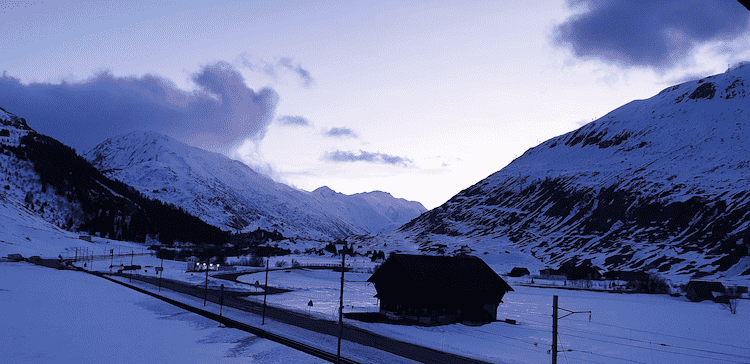
Andermatt is a small town located in the heart of the Alps at the center of the Gothard Massif. A traditional, rustic ski village, it’s situated in a valley where eight mountain passes come together. The town is very picturesque and an excellent destination for winter sports. It’s known for the fluffiest fresh powder and the high altitude ensures plenty of it. Winter sports enthusiasts come to Andermatt for off-piste skiing. The ski lifts run from the village to Natschen and Gemsstock.
Visitors also come to Andermatt in the summer for hiking, mountain biking, and fishing. Explore Andermatt and the surrounding scenic panoramas on foot, in a horse-drawn post coach, or with a slow train ride aboard the Glacier Express.
Andermatt has some excellent eateries that serve classic Swiss dishes and some of the best places to enjoy a traditional fondue.

The small town of Gimmelwald (often confused with the better-known Grindelwald) is a hidden gem in the Bernese Alps. There are no roads to Gimmelwald and its remote location is only accessible by foot or by cable car.
The traffic-free sleepy farm village is so small there isn’t a school. The children have to travel to Lauterbrunnen to attend school. There are no glamorous ski resorts or fancy restaurants in Gimmelwald. Instead, you’ll feel happily stuck in the past amid quaint timber homes and creaky old hotels.
Perched high on a cliff, Gimmelwald has some of the best views in the Alps with towering peaks and valleys with alpine meadows.
Frequently Asked Questions
How do you get to the swiss alps.
Visitors coming from outside of Switzerland can take a flight to the nearest cities of Zurich, Geneva Bern, and Basel. Once inside Switzerland, the country’s excellent train system will get you there. You can also hire a car.
Which Swiss city is closest to the Alps?
Thun is the closest Swiss city to the Alps.
What is the nearest Swiss Alps town to Zurich?
At 52.6 km, Lucerne is the nearest Swiss Alps town to Zurich.
Leave a Reply Cancel reply
Your email address will not be published. Required fields are marked *
Get Our Free Swiss Tips Guide
Popular destinations, important pages, on social media, travel planning, certified swiss travel expert.

Protect Your Trip »
Best places to visit in switzerland.
Switzerland is known around the world for its chocolate, cheese, charming towns and scenic landscapes . Everywhere you turn, you're treated to a little bit of history and a little bit of nature's beauty, as well as plenty of mouthwatering cuisine in between. U.S. News considered factors like sights, culture, accessibility and variety of things to do, plus traveler and expert input, to calculate the best places to visit in Switzerland. Peruse the list below, and vote for your favorite spots.
Appenzell District
Jungfrau region.

Interlaken's unique location between two lakes – Lake Brienz and Lake Thun – makes it a breathtaking spot for a vacation. Here, you can spend hours hiking various trails, taking in the castle-studded shores of Lake Thun on a boat cruise or gazing at the surrounding mountains from the Harder Kulm observation deck (accessible via a funicular). To see more of the region's stunning scenery, go for a ride on the Schynige Platte Railway or sign up for a paragliding or skydiving excursion.

Travelers looking to ski or snowboard in the Swiss Alps should head to Zermatt. This small, car-free town in the middle of the Alps is famous for housing one of the world's most famous attractions — the Matterhorn (a peak so popular that it inspired a Disneyland ride) — and Switzerland's highest ski resort. Novice and expert skiers and snowboarders can spend the bulk of their vacation hitting the slopes, which showcase incredible mountain views. After shredding powder, visitors can ride the Gornergrat train, pick up a slab of homemade chocolate from a local shop or savor cheese fondue at a traditional Swiss restaurant.

Picturesque Lucerne sits on Lake Lucerne in central Switzerland, framed by snowcapped mountains and medieval buildings. This beautiful city's old town is home to historic attractions, lively town squares, boutique shops and old churches. Top attractions include the Musegg Wall and its towers (the preserved fortifications date back to the 13th century) and Europe's oldest wooden covered bridge, the must-see Chapel Bridge, which was originally built in the 1330s. Those looking for a once-in-a-lifetime adventure can also ride a cable car to Mount Pilatus for stunning views of Lake Lucerne and plenty of activities at the top.

This lakefront city on the Swiss-Italian border offers visitors a unique travel experience. Because Lugano shares waters with neighboring Italy, the city features a mix of Swiss and Mediterranean influences in everything from its cuisine to its architecture. Plus, Lugano boasts unforgettable panoramas. Visit Monte San Salvatore and Monte Brè, both of which you can reach by funicular, for bird's-eye views of Lake Lugano and the city. Or, spend a few hours hiking the Olive Grove Trail or strolling the gardens of Ciani Park. If you'd rather lounge on a beach, head to Lido di Lugano.

Zurich is a cosmopolitan financial center, a foodie haven and a romantic European city that appeals to all types of travelers. A vacation here should include spending time admiring Lake Zurich, exploring the trendy bars and Michelin-starred restaurants, meandering through Lindenhof park and exploring the city's distinct neighborhoods. Join well-heeled shoppers (or just admire the window displays) on Bahnhofstrasse, a world-famous exclusive retail boulevard. While here, be sure to sample the famous dark chocolate Champagne truffles from specialty chocolatier Teuscher.

Visit the medieval town of Gruyères if you want to feel as if you've stepped back in time during your next trip. Its good looks (think: car-free cobblestone streets, fountain-filled squares and a 13th-century castle) create an old-world ambiance you're bound to love. Plus, the town is world-renowned for its Gruyère cheese, which you can sample and learn more about at a local cheese dairy or cellar. Sampling chocolate is also a must-do here, so be sure to check out a chocolate factory or attend a chocolate workshop while in town.

Like its neighbor Lugano, Locarno is located in the Ticino region near the Italian border. This quiet, small town is surrounded by stunning scenery (it sits on the shores of Lake Maggiore in the foothills of the Alps), and since it's the warmest destination in Switzerland, you'll have plenty of opportunities to get outdoors and explore. Be sure to stroll through the picture-perfect main square, Piazza Grande, where the city hosts several summer festivals, and trek to Madonna del Sasso, considered sacred among Roman Catholics. Then, head to the Verzasca river valley to swim or bungee jump.

Appenzell captures the essence of Switzerland with rolling hills, a car-free village and well-preserved customs. Visitors can take in the scenic landscape of the Appenzell District (located in the northeastern part of the country) by taking a cable car to the oft-photographed Aescher guest house, picturesquely built into the rock face, or hiking the region's "experience trails" like the Gonten Barefoot Trail and Appenzeller Kapellenweg, which weaves past 11 chapels. Meanwhile, the tiny village of Appenzell boasts quaint, frescoed shops and Museum Appenzell, which highlights the region's traditional crafts, folk music and art.

You'd be hard-pressed to find a small town that boasts more charm and incredible scenery than Brienz. Located in the stunning Bernese Oberland region, Brienz sits on the northeastern shore of Lake Brienz, which features gorgeous turquoise water and is flanked by towering evergreen mountains. Some of the best ways to soak up the awe-inspiring setting include strolling picture-perfect Brunngasse (often proclaimed the most beautiful street in Europe), riding the Brienz Rothorn Bahn (which traverses a steam rack railway) and taking a boat tour to lake attractions like Giessbach Falls.

Set along the banks of crystal-clear Lake Geneva in western Switzerland, this city is known for its incredible views and as the headquarters of the Red Cross and the United Nations. Geneva is also home to some iconic sights, including the Jet d'Eau (one of the world's tallest water fountains) and an old town with cobblestone streets and picturesque squares. While exploring the latter, be sure to check out the Saint Pierre Cathedral, which features Roman, Gothic and neoclassical details.

The capital of Switzerland, Bern sometimes gets overlooked for flashier Swiss cities like Zurich and Geneva. But Bern holds many charms, including an old town (a UNESCO World Heritage Site) featuring the iconic Zytglogge clock tower, Renaissance-style fountains and a Gothic cathedral with the highest spire in Switzerland. The city also boasts many museums – several dedicated to Albert Einstein, who lived in Bern when developing his theory of relativity. Head to Gurten mountain – which you can reach by funicular, by bike or on foot – for sweeping views of the city below.

As the largest ski area in central Switzerland, Engelberg is a winter playground, with a long, snowy season for downhill and cross-country skiing, snowboarding and sledding. But don't sleep on a summertime visit here; warmer months allow for a bevy of fun family activities like a toboggan run, 300-plus miles of hiking trails and water activities on Trübsee lake. Regardless of when you visit, you won't want to miss the TITLIS Rotair, a revolving cable car that takes riders up Mount Titlis, and the other cable lifts that stop at a glacier cave, a panoramic restaurant, and the TITLIS Cliff Walk.

Considered "the birthplace of Alpine winter tourism," St. Moritz welcomes travelers with world-class skiing, swanky hotels, renowned après-ski offerings and top-notch restaurants. In addition to offering downhill skiing trails so highly regarded that the town has hosted the Olympics twice, St. Moritz features excellent spots for cross-country skiing, sledding and winter hikes. Come summertime, the area invites outdoor lovers to golf, bike, hike or enjoy water sports and swimming in the surrounding lakes.

The Jungfrau Region is the perfect place for first-timers wanting to experience the otherworldly splendor that is the Swiss Alps. But be forewarned: The destination is sky high. Popular attractions like the Jungfraujoch (which features Europe's highest train station), the Grindelwald-First cable car and the First Cliff Walk Presented by Tissot sit at the top of towering peaks. The innovative Eiger Express gondola offers even faster transport to the top (just 15 minutes from Grindelwald). For those who'd rather stick closer to Earth's surface, prioritize a hike on a lower-level valley path and a visit to the Pfingstegg toboggan.

Tourists may not be as familiar with Montreux as they are with its Lake Geneva neighbors, which makes this Swiss town such an undiscovered gem. Quaint Montreux features a waterfront promenade dotted with flowers and trees, a medieval castle and a charming old town, not to mention a statue commemorating Freddie Mercury (Queen recorded multiple albums here from 1978 to 1995). Montreux is also surrounded by vineyards and hosts a popular open-air jazz festival every summer, while the holiday season brings the festive Montreux Noël market.

Located less than 5 miles from Montreux, Vevey is another Lake Geneva gem. This town's picturesque promenade along the lake is filled with flowers and features a sculpture of Charlie Chaplin, who spent the last 25 years of his life in Vevey. The Alimentarium, a nutrition-focused museum, also adorns the shoreline with its beautiful sandstone building, which once served as the headquarters to Nestlé (the company is still based in Vevey). After admiring the town, visitors can take a cog railway to the scenic Les Pléiades vantage point for its stunning views and the astronomy-centric Astropléiades trail.

The second-largest city on Lake Geneva, Lausanne is characterized by its renowned Gothic cathedral and surrounding hilly terrain. The stunning lake views and colorful city center don't hurt, either. Travelers can take in Lausanne's lively atmosphere by checking out the city's cafes, admiring the old town's beautiful architecture and perusing the exhibits at the Olympic Museum. No visit would be complete without venturing outside the city to nearby Lavaux, where you can enjoy wine from vineyards that are so scenic and well-preserved (some date back to the 11th century), the area was deemed a UNESCO World Heritage Site.
Vote to Add these Destinations to the Rankings

Swiss National Park

Stein am Rhein

Swiss Grand Canyon
You may be interested in.

Best Places to Visit in Europe for 2023-2024
Best places to visit in france.

Best Places to Visit in Italy

Best Places to Visit in Spain

Best Places to Visit in Germany

Best National Parks in the World for 2024
If you make a purchase from our site, we may earn a commission. This does not affect the quality or independence of our editorial content.
Recommended
The 50 Best Hotels in the USA 2024
Christina Maggitas February 6, 2024

The 32 Most Famous Landmarks in the World
Gwen Pratesi|Timothy J. Forster February 1, 2024

9 Top All-Inclusive Resorts in Florida for 2024
Gwen Pratesi|Amanda Norcross January 5, 2024

24 Top All-Inclusive Resorts in the U.S. for 2024
Erin Evans January 4, 2024

26 Top Adults-Only All-Inclusive Resorts for 2024
Zach Watson December 28, 2023

Solo Vacations: The 36 Best Places to Travel Alone in 2024
Lyn Mettler|Erin Vasta December 22, 2023

26 Cheap Beach Vacations for Travelers on a Budget
Kyle McCarthy|Sharael Kolberg December 4, 2023

The 50 Most Beautiful White Sand Beaches in the World
Holly Johnson December 1, 2023

The 26 Best Zoos in the U.S.
Rachael Hood November 16, 2023

44 Cheap Tropical Vacations That Feel Expensive
Holly Johnson|Alissa Grisler November 10, 2023

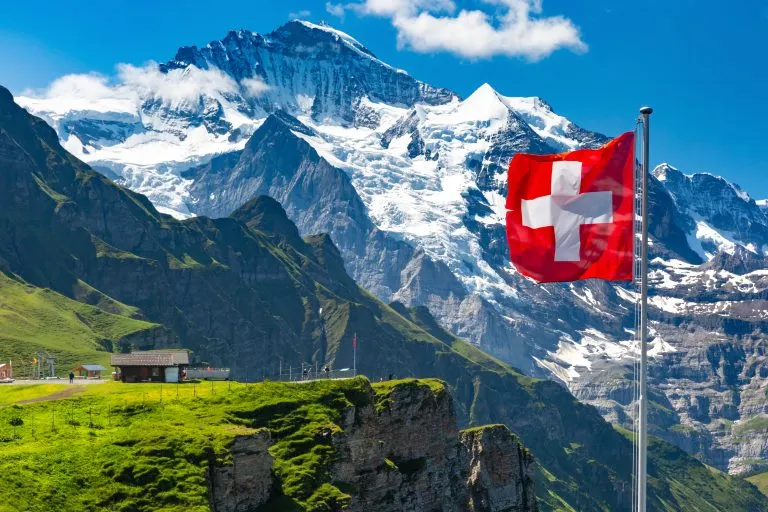
17 Spectacular Places to Visit in Switzerland (+ Map!)
Nestled in central Europe and dominated by the Alps, the best places to visit in Switzerland are downright sublime.
When it comes to jaw-dropping landscapes, quaint small towns, and enchanting cities that perfectly blend the past, present, and future, nowhere does it quite like Switzerland.
Many people (us included) put off planning trips to Switzerland’s beautiful corners for years because of its deserved reputation for high prices–but the best Swiss travel destinations are so incredible that, while expensive, you never doubt that you’re getting your money’s worth.
To help get you excited about planning your bucket list Switzerland vacation, we’ve worked with several other travel bloggers to round up the most magnificent places in Switzerland to visit!
Whether your dream Swiss trip involves Alpine hiking, lake swimming, skiing, or simply eating lots of fondue while overlooking the mountains, there’s an incredible getaway in Switzerland here for you.
Here are some of the most beautiful places to visit in Switzerland!
Table of Contents
Stunning Cities to Visit in Switzerland
Beautiful small villages + mountain towns in switzerland, more of the best places to visit in switzerland, map of the most beautiful places in switzerland to visit.
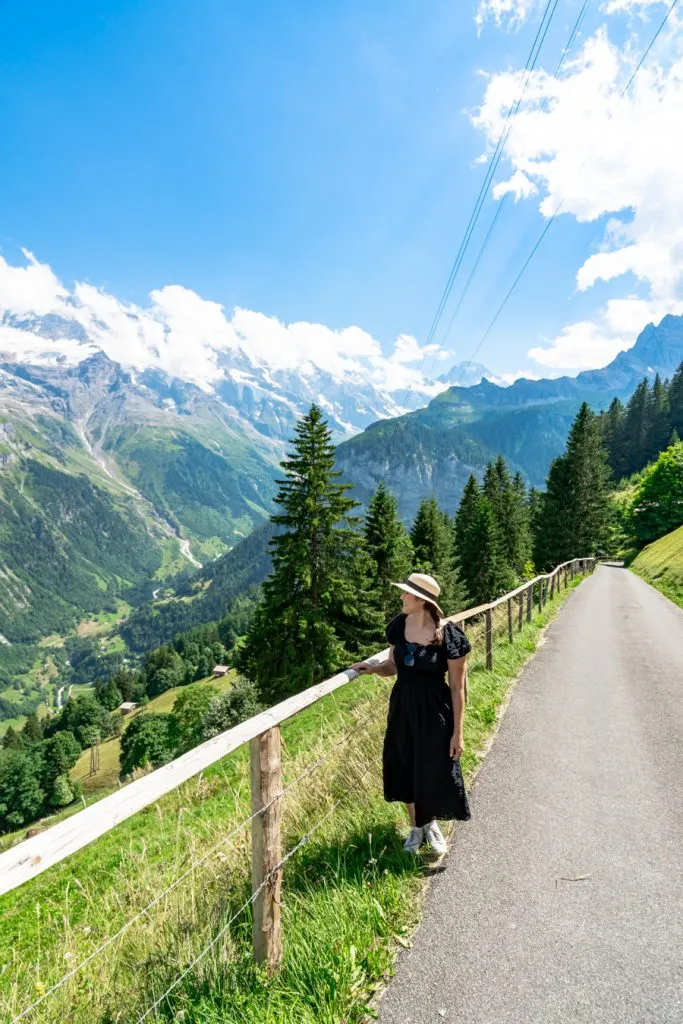
Some links in this post may be affiliate links. If you make a purchase through one of these links, we may earn a small commission at no extra cost to you. Please see our disclosure policy for more detail.
From Rachel of Rachel’s Ruminations
Basel is a lovely little city with a historical core that is just perfect for strolling and soaking up the atmosphere.
The houses are simple and charming, some dating to the Middle Ages.
Art dots the streets: fountains, decorative sculpture, and painting on the centuries-old buildings as well as amusing modern art, like the dragon sculpture that breathes actual smoke!
“Reaction ferries” – no motor or sails – carry passengers across the Rhine between the two halves of the city.
If you like to see historical sights, the Romanesque and Gothic Basel Cathedral is one of the best sights in Basel , and climbing the spire to see the view is also worth the effort.
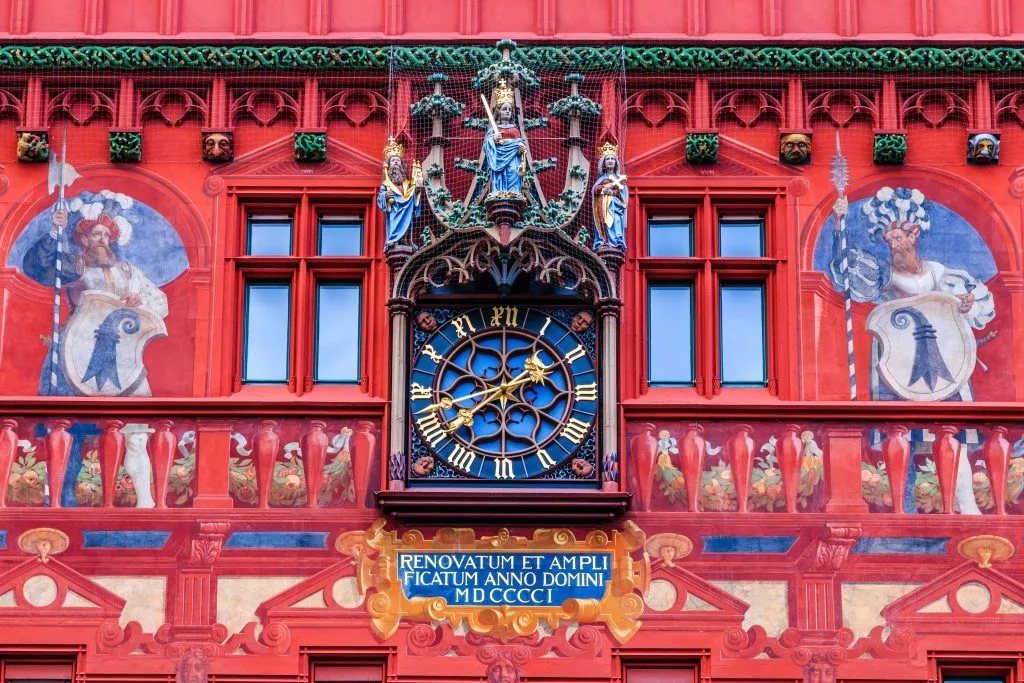
Three of the original city gates still stand, restored to their medieval glory, and the bright red Rathaus (city hall) is quite a sight too.
The more modern Tinguely fountain is an amusing cross between a fountain and a kinetic sculpture.
The Foundation Beyeler, on the edge of town, houses a truly exceptional collection of modern masterpieces by major artists such as Rothko, Picasso, Monet, and Mondrian. It’s just outside of town but easy to reach.
Basel is a year-round destination, but summer is the best season for enjoying the outdoor attractions and architecture.
However, December brings a different charm: Basel is home to what is widely considered to be the best Christmas market in Switzerland!
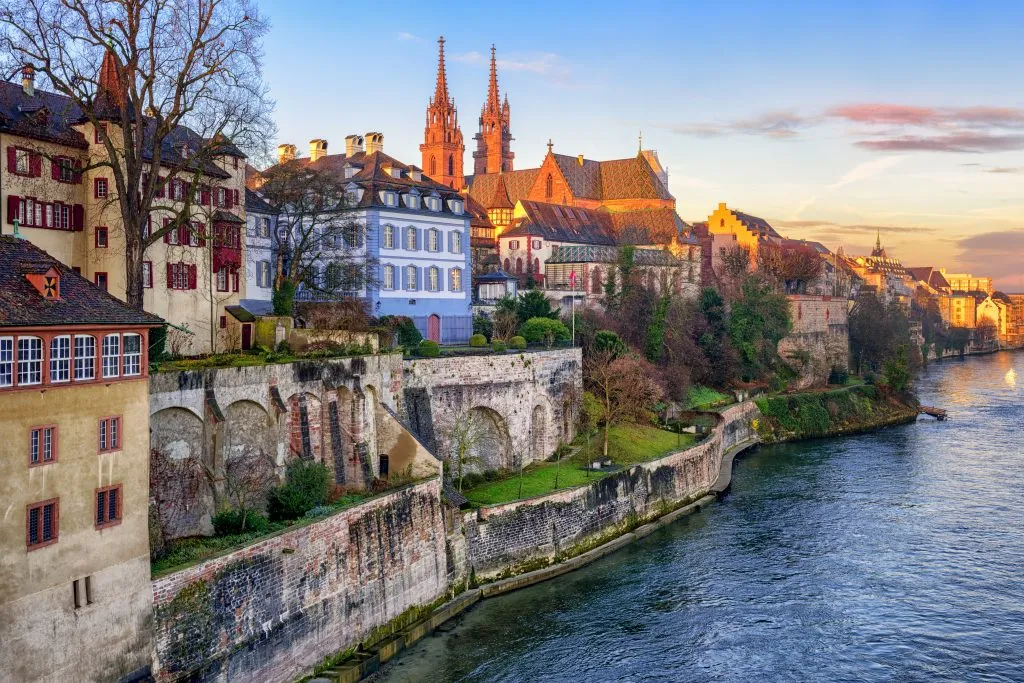
From Caroline of Veggie Wayfarer
Snowcapped mountains, half-timbered houses, and a city that seemingly rolls down a hill right into the most pristine lake, upon which steamboats glide to and back from France: this is the storybook city of Lausanne, in the Vaud-region .
Built atop three hills, the very first thing you will want to bring with you is a good pair of walking shoes. Start at the Lausanne Cathedral for some of the best views over the entire city, walk down the famous wooden staircase ( Escaliers du marché ) into the heart of the city at the Place de la Palud , which contains a clutch of restaurants and bars as well as the oldest working fountain of the city.
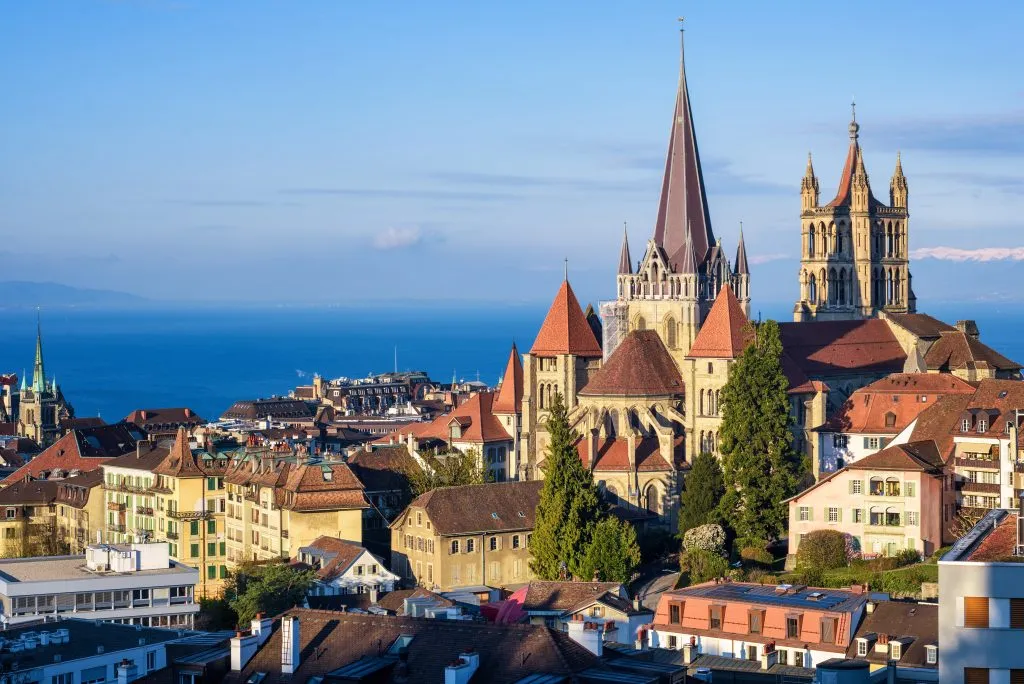
Meander through the tiny streets until you hit Palais de Rumine , a Renaissance palace well worth a visit.
The buzzing Flon district is great for a night on the town, or grab a drink at Brasserie Montbenon if you are looking for a more intimate setting.
Make your way to Lake Geneva at the foot of Lausanne, where you’ll find a variety of watersports on offer throughout the year.
Time permitting, hop of a steam peddler to Chillon Castle.
On the way make a brief stop at the UNESCO Lavaux vineyards, to try a glass of locally-produced wine.
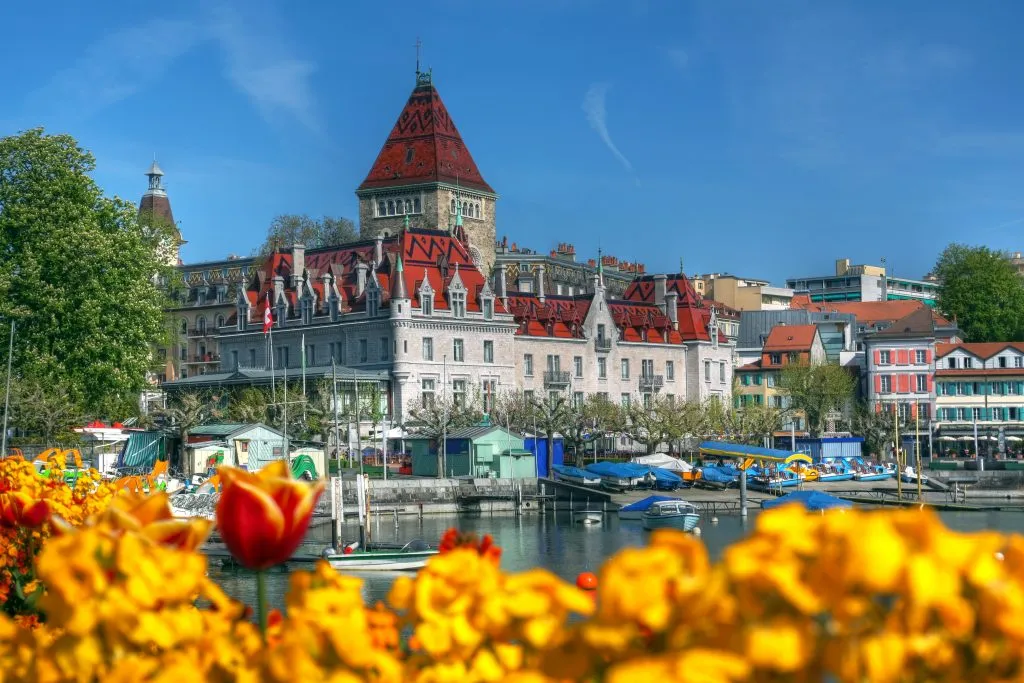
From Zoe of Together In Switzerland
For one of the best places to visit in Switzerland, consider booking your next Swiss getaway in Lugano!
Located in the heart of the Italian-speaking Ticino region, Lugano is beautiful to visit all year round.
However, the best time for Lugano is in the summer , with long warm days and lots of local events in the city.
Since Lugano is well known also for its Lake Lugano, one of the best things to do after exploring and shopping in the city is to get out onto the lake!
You can rent cute red little paddle boats for a minimum of 30 minutes, or else book a larger boat trip that includes sightseeing at some local villages nearby.
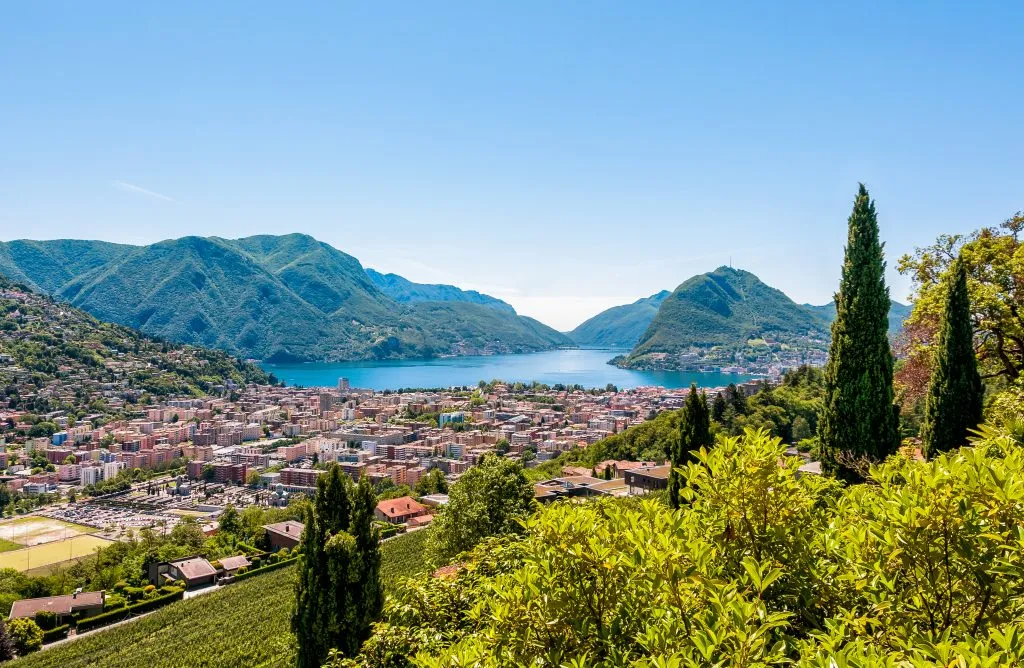
Lugano also is home to two funiculars that you can take up either Mount San Salvatore or Monte Bre.
Both nearby mountains are just above 900 in elevation and both have gorgeous views of the lake and the city of Lugano.
Summer is especially beautiful at each top mountain as they both have a restaurant serving drinks and food late into the night.
From there, you can see the sunset from above as well as watch the city light up in the darkness.
If you’re visiting Switzerland in the summer, it’s also a must to bring your swimsuit to Lugano as you should not leave without swimming in the lake!
There are a few dedicated swimming areas to choose from, such as at Lido Riva Caccia right in the city center.
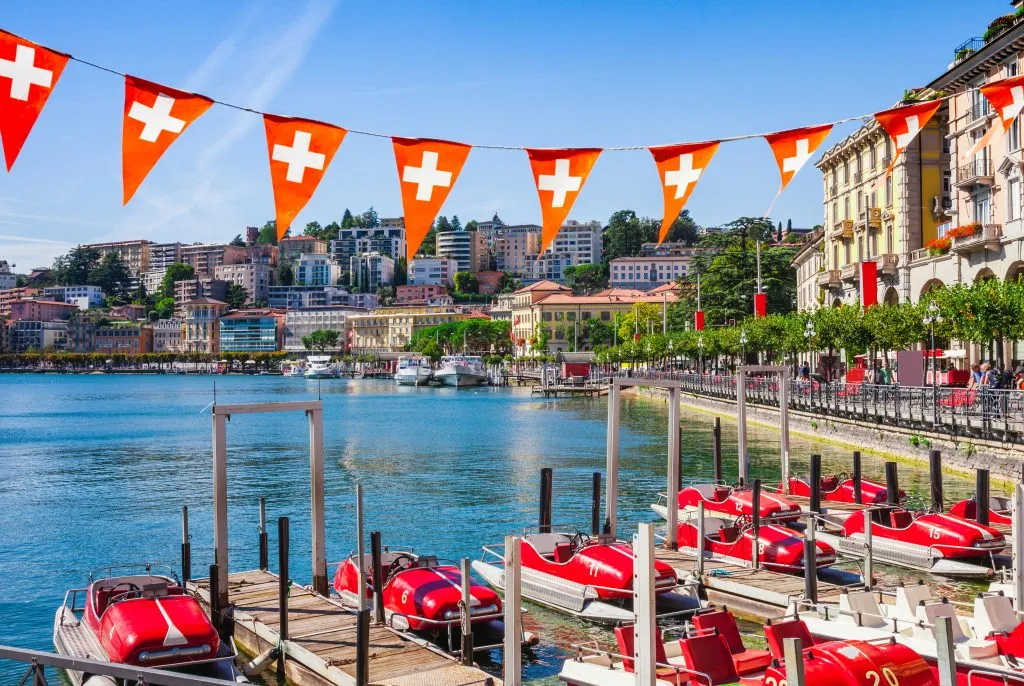
From Kristin of Global Travel Escapades
When looking for the best travel destinations in Switzerland, you won’t want to miss the lakeside city of Geneva.
The city is in the French-speaking region of Switzerland and is located right next to the border of France, not far from Annecy.
In addition to being a beautiful city with lots of French-style architecture, Geneva’s location along Lake Geneva makes it an ideal Swiss city to visit.
The most iconic attraction in Geneva is the Jet d’eau Geneve, a 140m tall water jet in the middle of Lake Geneva.
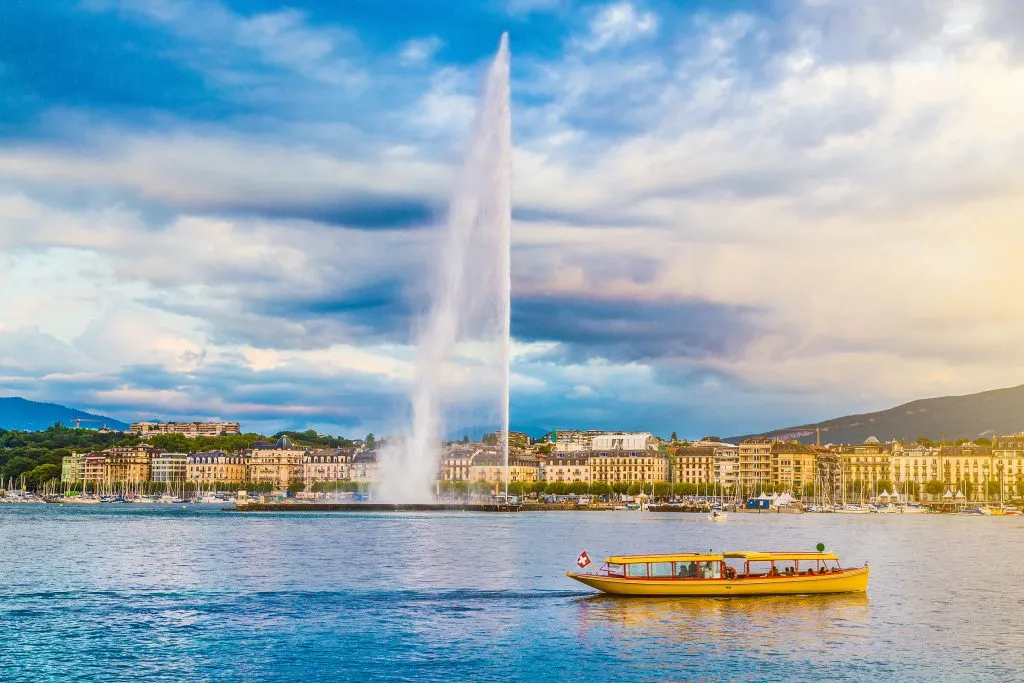
After seeing the fountain, you can walk along the harbor and admire the colorful flower clock in the nearby Jardin Anglais.
The flower clock features over 6,500 flowers that create the watch’s face.
No trip to Geneva would be complete without paying a visit to Palais de Nations.
You’ll see the flag of each country that is part of the United Nations!
So if you’re looking for places to visit in Switzerland, consider Geneva, and make sure you visit during the summer months to minimize your chances of rainy weather!
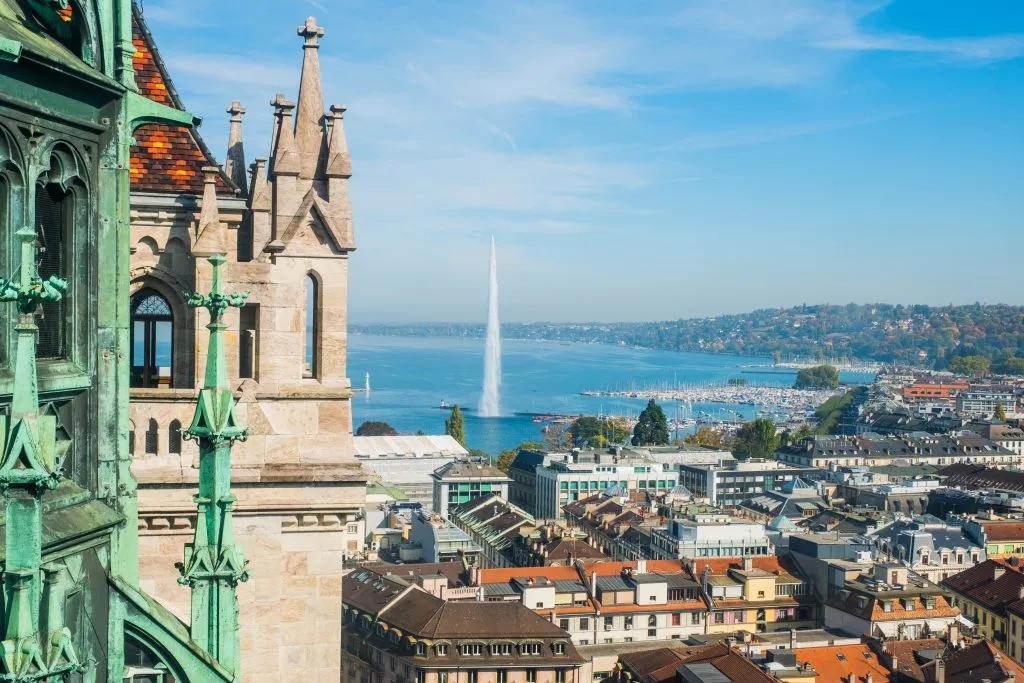
From Dymphe of Dym Abroad
One of the best places to visit in Switzerland is the picturesque city of Lucerne.
Whether you are spending one day in Lucerne or enjoying a longer trip, this German-speaking city nestled along the River Reuss is a beautiful travel destination.
One of the best things to do in Lucerne is to visit the Kapellbrücke, a covered pedestrian wooden bridge that spans the river in the city that dates back to the 14th century.
The Kapellbrücke has unique architecture and there are historic interior paintings that are very interesting to see.
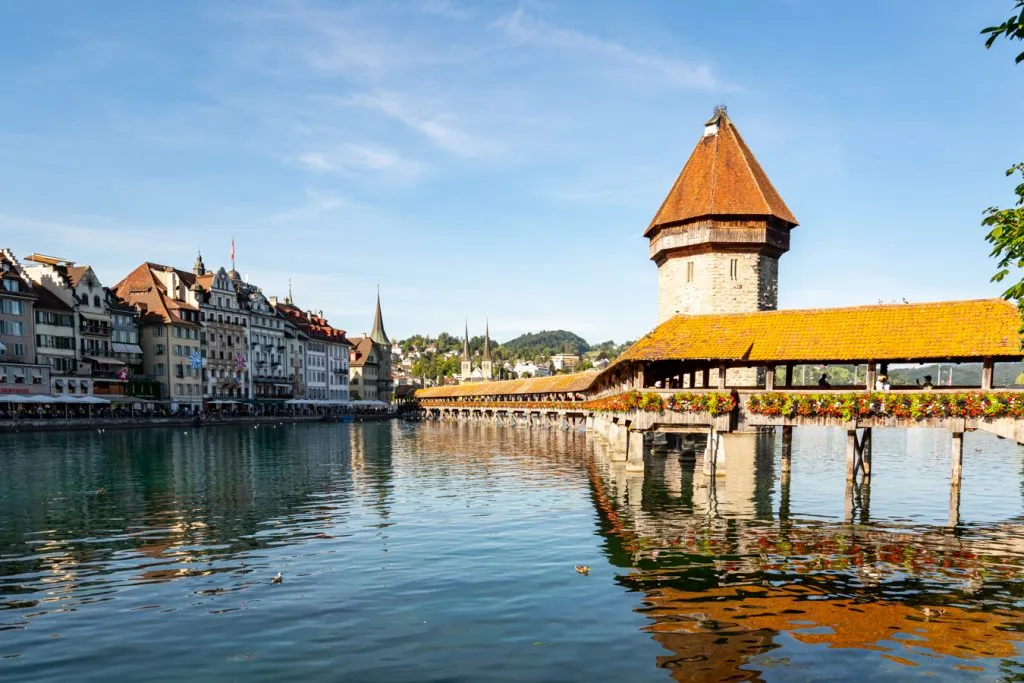
If you like the Kapellbrücke, the Spreuer Bridge is another must-see!
Other top attractions in central Lucerne include climbing the towers along the Musegg Wall for incredible views of the city and Lake Lucerne and visiting the Swiss Museum of Transport .
Another one of the best things to do in Lucerne is to spend time on Lake Lucerne to enjoy spectacular views of the mountains. You can ride the ferry or go swimming in the summer.
While visiting Lucerne, don’t miss the chance to head up to Mount Pilatus , either–not only are the views incredible but getting to the top includes riding the steepest cog railway in the world!
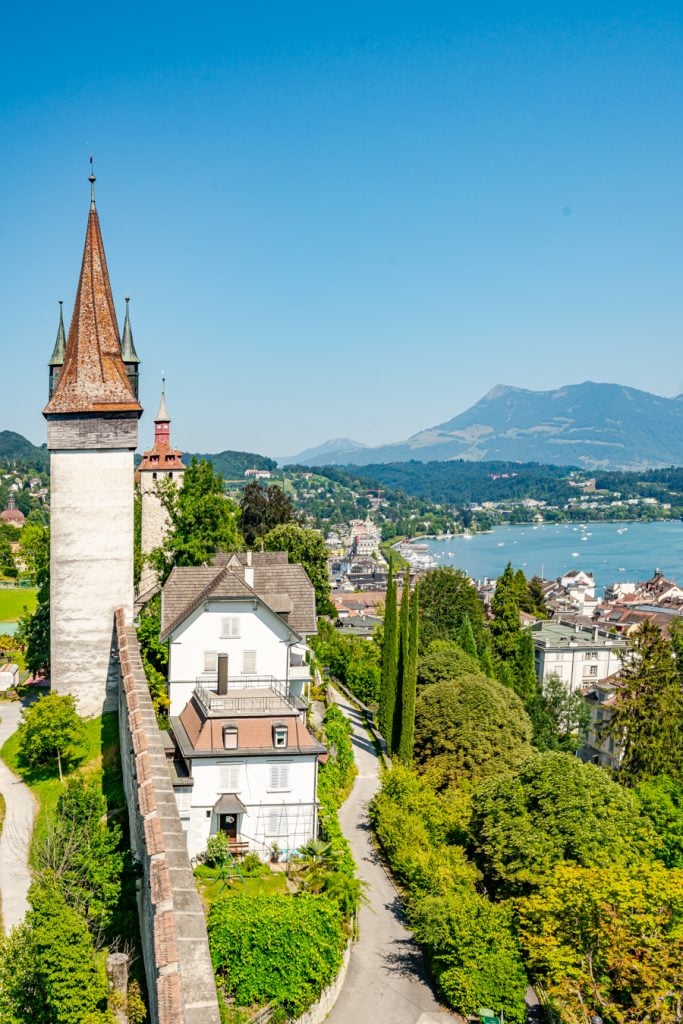
From Sarah of CosmopoliClan
Nestled amidst rolling green hills and hugged by the crystal-clear Aare river, lies the city of Bern.
It’s the political epicenter of Switzerland with the Bundeshaus as the seat of the Swiss Parliament.
Bern’s picturesque Old Town may be compact, this UNESCO World Cultural Heritage Site has a lot offer.
Visiting the Zytglogge, or Clock Tower, is one of the most popular of things to do in Bern .
This landmark featuring a bear parade, golden rooster and time god Chronos as it strikes the hour, seems to come straight out of a story book.
As you stroll the elegant flag-lined streets of Bern, you’ll notice the many colorfully decorated water fountains.
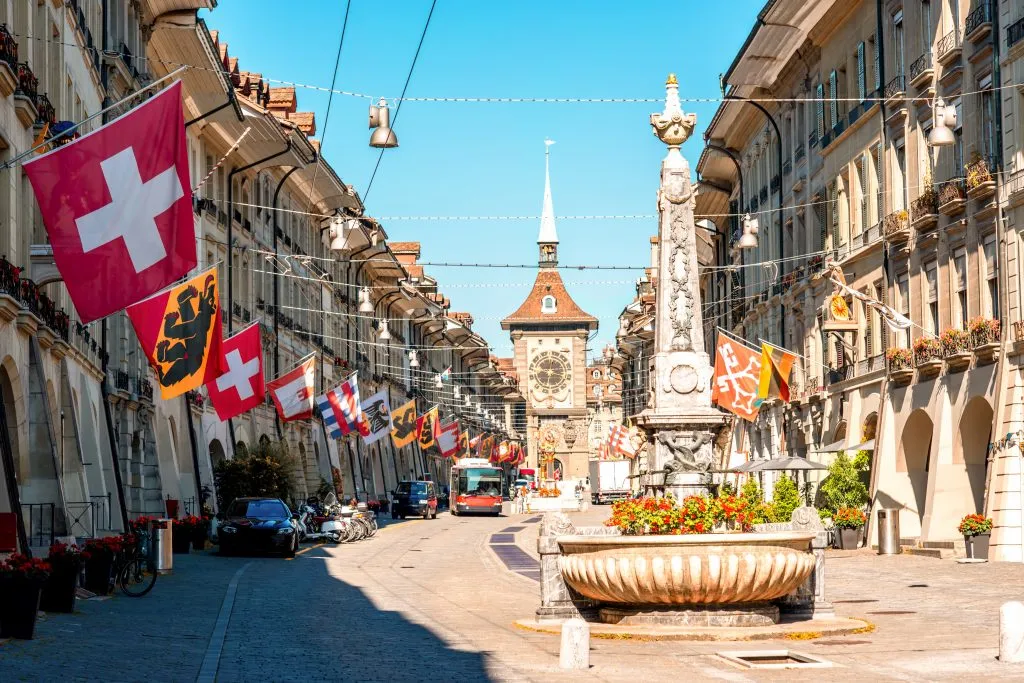
Other architectural highlights are the stately arcades and the vaulted cellars that guarantee a pleasant shopping or dining experience regardless of the weather.
For a wonderful view over the city, climb the 312 steps to the viewing platform of the Bern Minster. This cathedral has the highest spire in all of Switzerland.
Behind it, you’ll find the Mattelift which will take you to the lower-level Matte district with its artistic flair and half-timbered houses.
From there, you can cross the Aare river to the Bärengraben where you can meet some of the city’s most famous residents: the bears.
The legend goes that the Duke who founded Bern would name the city after the first animal he encountered while hunting and that happened to be a bear.
End your visit at the Rosengarten park and take in the most spectacular panoramic view over the Altstadt and the white mountain peaks of the Bernese Oberland.
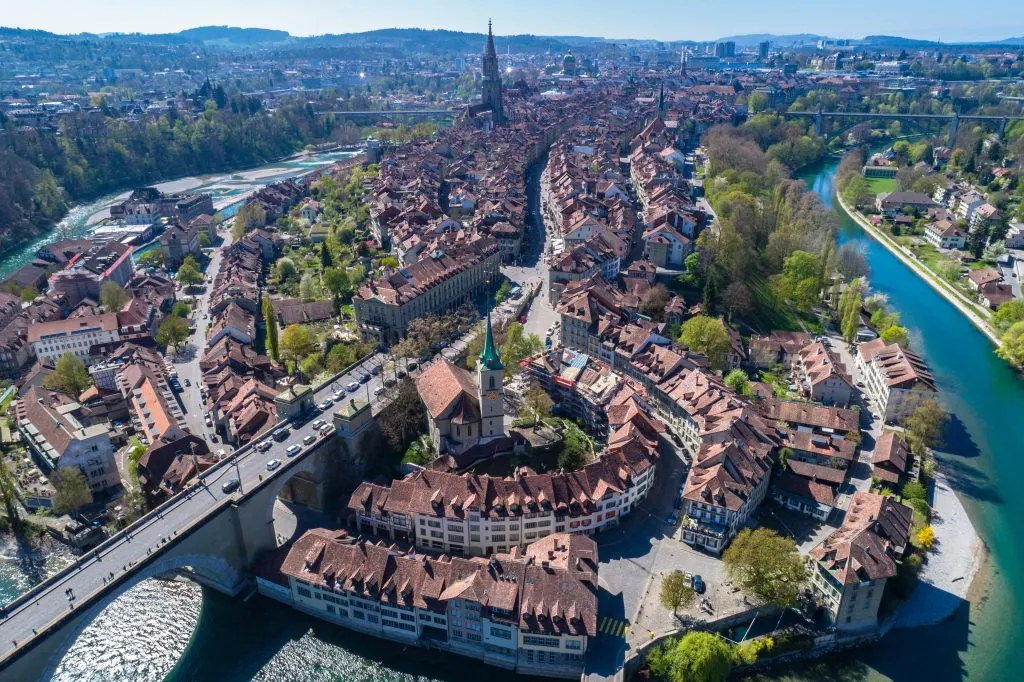
From Emma of Travel on a Time Budget
Zurich is the largest city in Switzerland , with no shortage of things to do.
It’s also a beautiful city, with the Limmat River flowing through the old town and Lake Zurich at one end, surrounded by mountain peaks.
Among the best things to do in Zurich is to spend some time in the historic old town.
This has picturesque cobbled streets and squares to wander through, with beautiful churches, wonderful cafes and restaurants, and a 17th-century renaissance town hall.
Boat trips run along the river and around the lake; the ferry stops at Zurichhorn for the chance to walk around the park and visit the small pretty Chinese Garden with its lake and colorful temples.
Zurich also has a number of fascinating museums to visit.
These include the Swiss National Museum, the Lindt Home of Chocolate Museum , the Rietberg Art Museum, and the FIFA World Cup Museum dedicated to the history of football.
For visitors looking for some relaxation, there is the rooftop thermal pool at the Thermalbad and Spa that provides views out across the city.
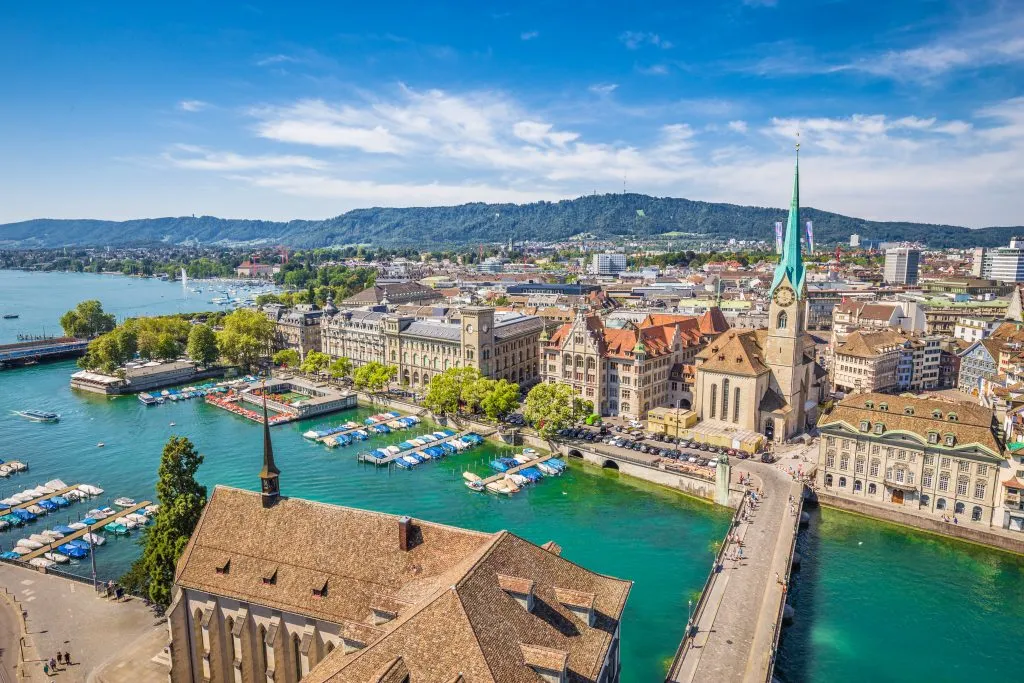
Zurich is a wonderful place to visit at any time of year.
The summer months are perfect for walking around the lake or dipping in the water in one of the city’s lidos.
In the winter, there is skiing in the nearby mountains and ice skating in the city.
The city’s streets are lit up, and there are cozy cafes to pop into to warm up with the local fondue. At Christmas, the city hosts several markets.
Though deservedly famous for being expensive, Zurich has a range of accommodations to suit most Switzerland-friendly budgets.
The Hotel Montana near the main train station is ideal for short city breaks.
For more luxury, The Dolder Grand , with its hilltop setting, complete with an ice rink in winter, is a great option.
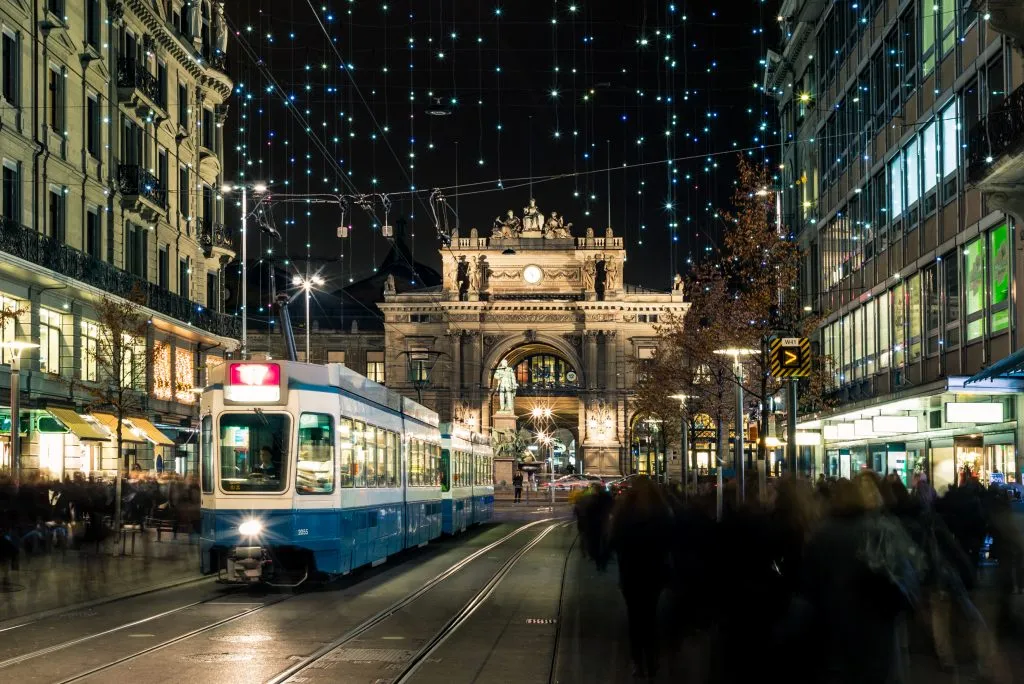
From Megan of Megan & Aram
Interlaken, also known as the “Adventure Capital of Switzerland”, is a gorgeous place that can be visited in any season!
There are so many things you can do regardless of whether you visit in winter or summer… you just need to dress appropriately for the weather.
Go kayaking on beautiful Lake Brienz in all seasons, and relax on the beach after a swim session in the summer.
Interlaken has many fantastic hiking trails to choose from, and some of the most popular ones are Oberburghorn or Hardergrat.
You can take the funicular up the mountain to the Harder Kulm viewpoint, where you can enjoy the stunning views and dine at the Panorama Restaurant.
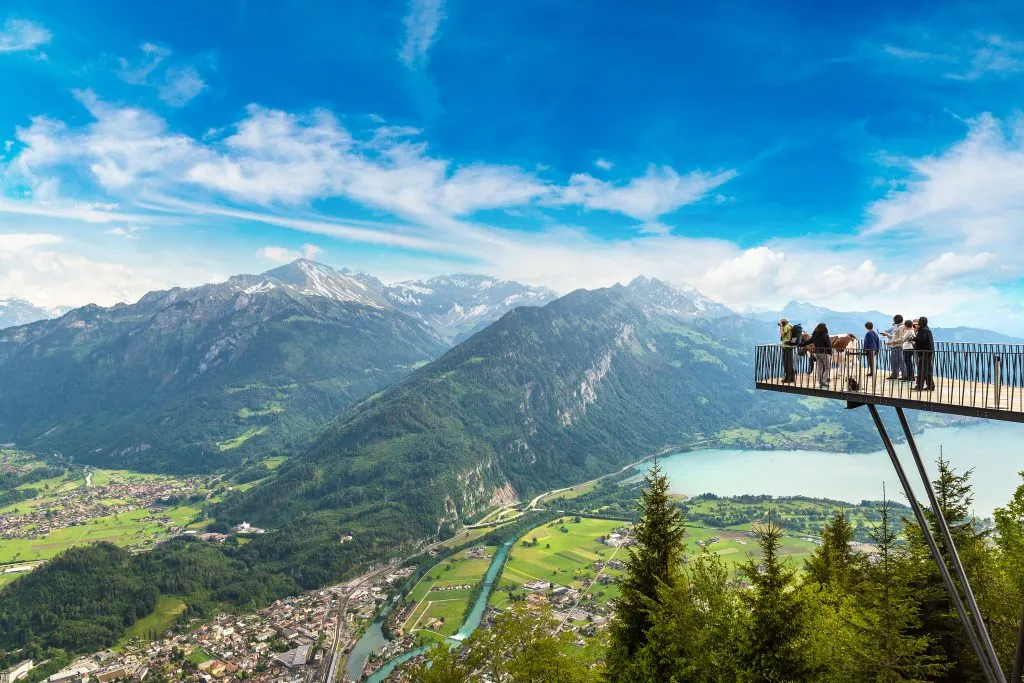
To see the countryside from another perspective, take a hot air balloon ride!
And for even more views, take Europe’s highest railway to Jungfraujoch, where you will get breathtaking views from an elevation of nearly 3,500 m (about 11,500 ft).
You will never get tired of the spectacular scenery no matter how many viewpoints you go to!
Travel back in time by visiting the following fairytale-like places: St. Beatus Caves, a cave system over a kilometer long where legend says St. Beatus ousted a dragon living there in the 6th century; the medieval Thun Castle; or the charming village of Grindelwald.
Interlaken is a must-visit location in Switzerland and should be added to every itinerary!
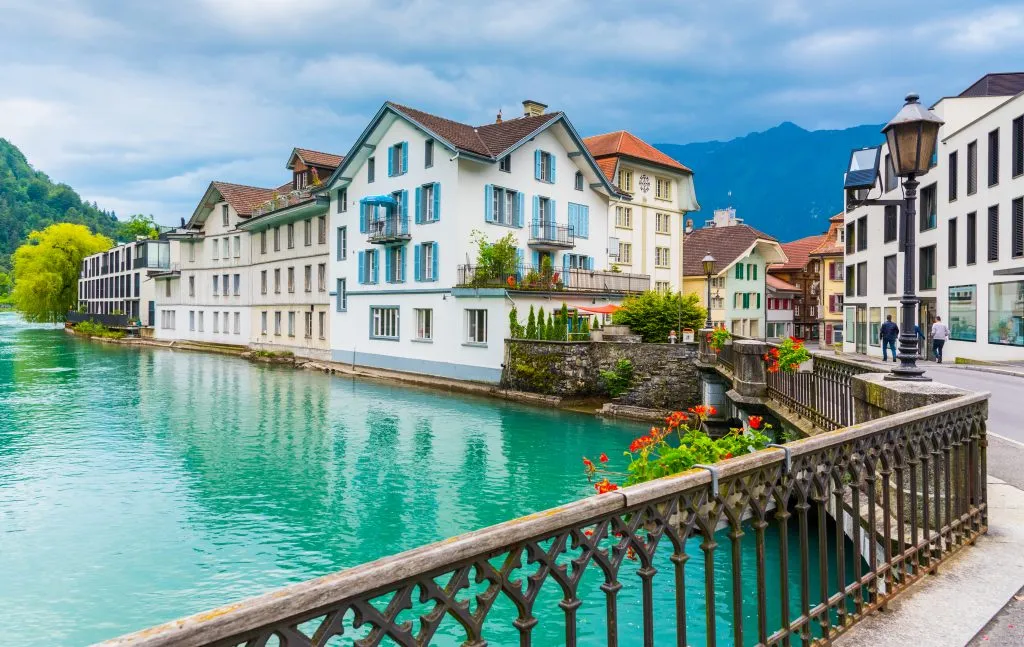
From Paul D’Souza of Paulmarina.com
Mürren is a beautiful, small village in the Bernese Oberland in Switzerland.
Situated at 5400 feet (ca. 1,646 m) above sea level, this car-free village can only be accessed by cable car or mountain train.
Visitors can get there within 10 minutes from Stechelberg with the Schilthornbahn or take the iconic mountain train via Grütschalp to travel to Mürren within 20 minutes.
The views from Mürren are beyond stunning and will enthrall every nature and mountain-loving traveler.
Mürren and the Schilthorn peak came to fame thanks to a James Bond movie. Take the cable car further up to Birg and Schilthorn to discover Bond World and enjoy brunch in the Piz Gloria rotating restaurant.
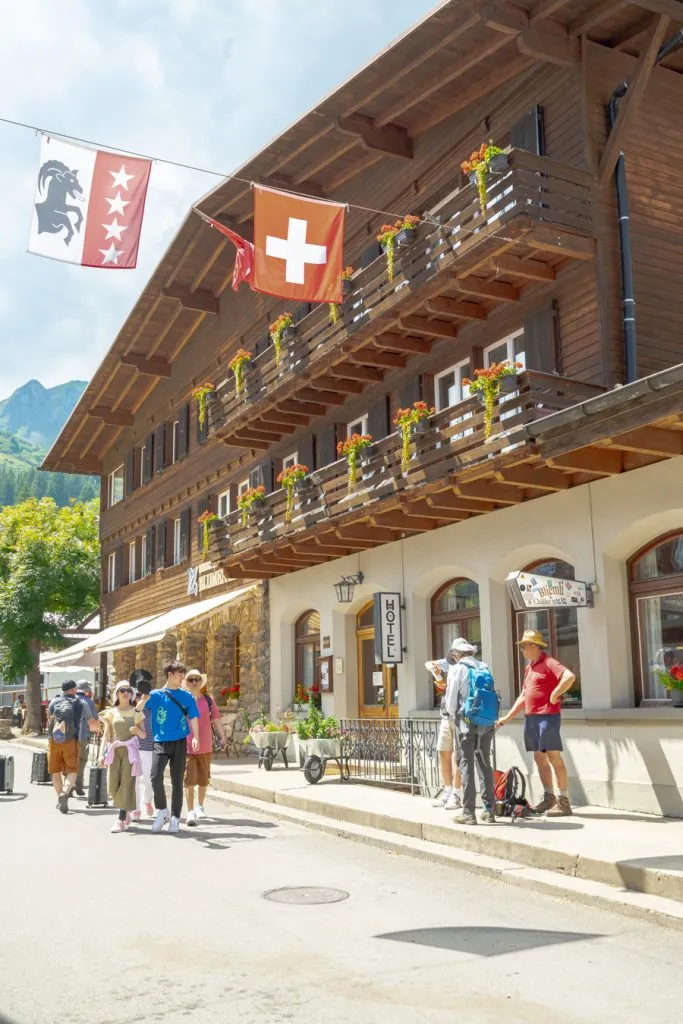
From there you can spot the Mönch, Jungfrau, and Eiger peaks.
Adventure lovers will enjoy the Brig Via Ferrata trail, a rock climbing, zip lining, and tight rope walking trail further down.
Every season is beautiful and has its perks in Mürren, but the warmer months are more suitable to go hiking and paragliding.
Skiing and snowshoe walking are popular winter activities in the area.
A winter wonderland awaits you from December to March with plenty of snow and snow-dusted Swiss mountains.
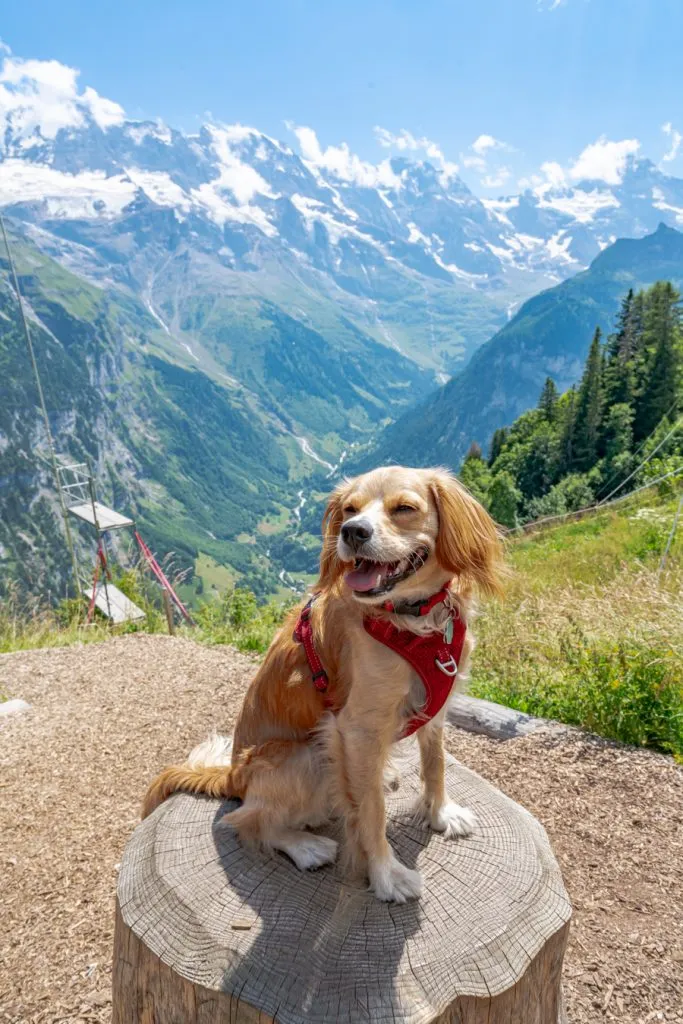
From Dean and Laynni of Routinely Nomadic
Home to the world-famous Matterhorn, Zermatt has long been one of the most popular tourist destinations in Switzerland.
So, yes, it can get very busy. But the fabulous mountain scenery more than makes up for that.
While the iconic Matterhorn dominates the skyline, the town is completely surrounded by impressive mountains and fantastic viewpoints, many of which are accessible by cable car .
Truly a year-round destination, Zermatt is one of the top skiing destinations in Switzerland in the winter, while in summer it attracts outdoor enthusiasts from all over to enjoy mountain biking, rock climbing, paragliding, white-water rafting, and, of course, hiking.
If you have your heart set on seeing the Matterhorn , try to give yourself a few days in Zermatt in order to increase your odds of clear weather.
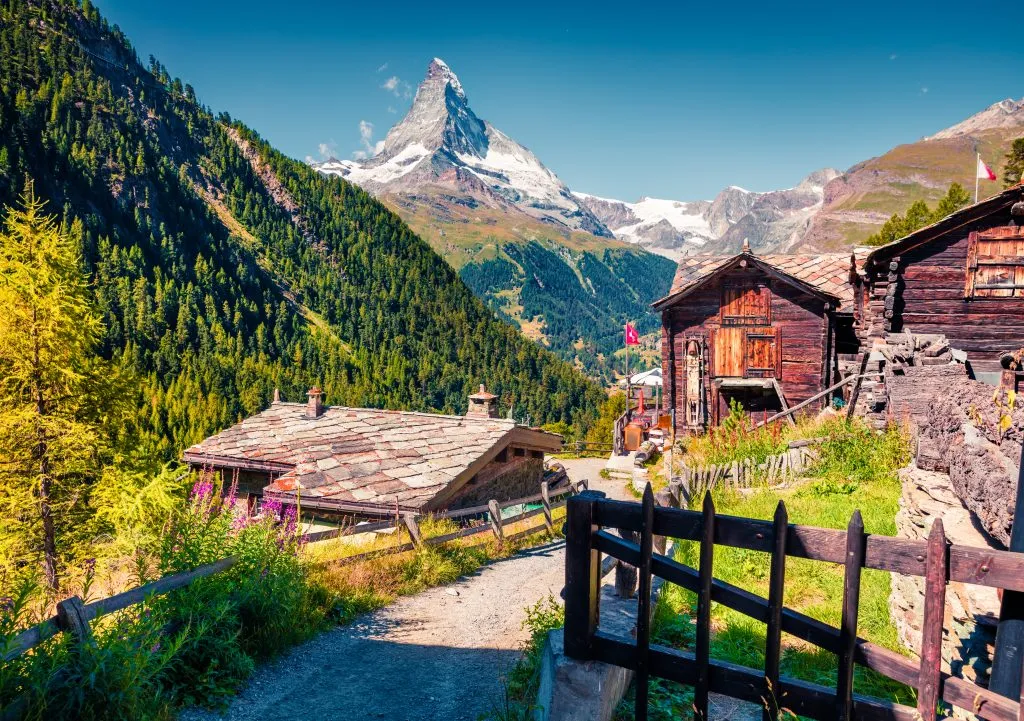
Along with a wide variety of gorgeous day hikes, Zermatt serves as the start or end point of the incredible Walker’s Haute Route , a phenomenal 2-week hut-to-hut trek through the Alps that is arguably the best long-distance hike in Europe.
Secluded at the top of a picturesque valley, Zermatt is closed to vehicles (except for electric hotel and work shuttles), making it a wonderful place to wander on foot.
While long-time visitors to Zermatt lament the ever-growing number of hotels, restaurants, and retail stores, they make it a very easy place to have fun and every new building still conforms to the town’s classic ski town vibe.
Those looking for a luxury stay with amazing Matterhorn views should check out the Europe Hotel & Spa , although there are practically endless Zermatt accommodation options to fit most budgets.
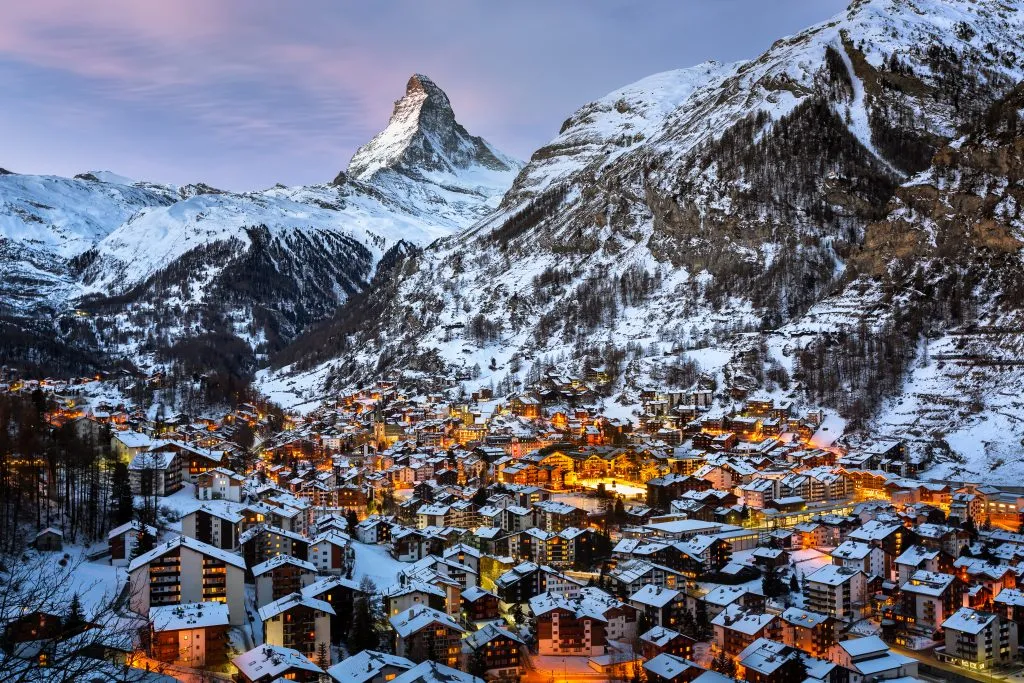
Baden, Switzerland
By Nina of Nina Out and About
Baden is the spa capital of Switzerland, yet most people have never heard of it.
Unlike Bath in the UK, Baden has remained off the beaten paths for tourists, and even most expats who live in Switzerland .
Baden is a small town located in Aargau, about 20 minutes by train from Zurich.
It’s routinely confused with Baden-Baden in Germany (even when you try to buy a ticket to visit). But don’t be fooled: it does exist!
Baden’s claim to fame is the natural springs that have made it a popular spa destination for centuries.
The most well-known is the Friedensquelle (“Peace Spring”), but there are several others to explore as well.
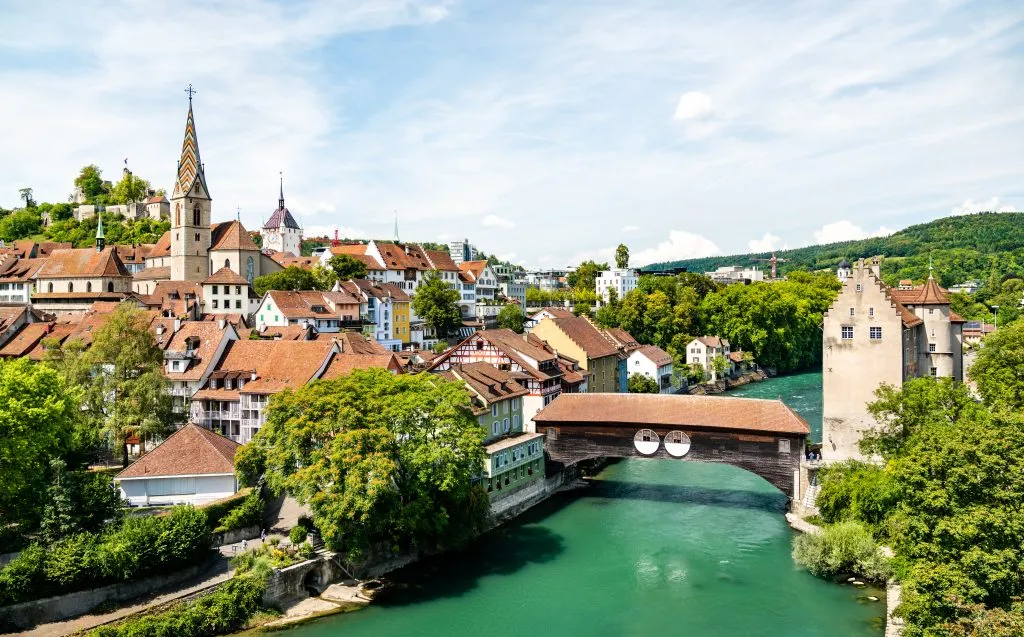
In addition to its spas, Baden is also home to a beautiful old town with plenty of shops and restaurants. There’s also an interesting museum dedicated to the history of the town’s springs.
You can try out the hot springs for free along the riverside.
There’s a bench with a trough of natural hot water that you can put your feet in while you enjoy a hot chocolate or takeaway pastry.
The spa inside has evening and early morning discounted tickets, which will allow you to enjoy the spa when it’s nearly empty.
If you’re looking for a relaxing day trip from Zurich to one of the most underrated places to visit in Switzerland, Baden is the perfect place to head.
The best time to visit Baden is in the spring or summer when the weather is warm and you can enjoy all the town has to offer.
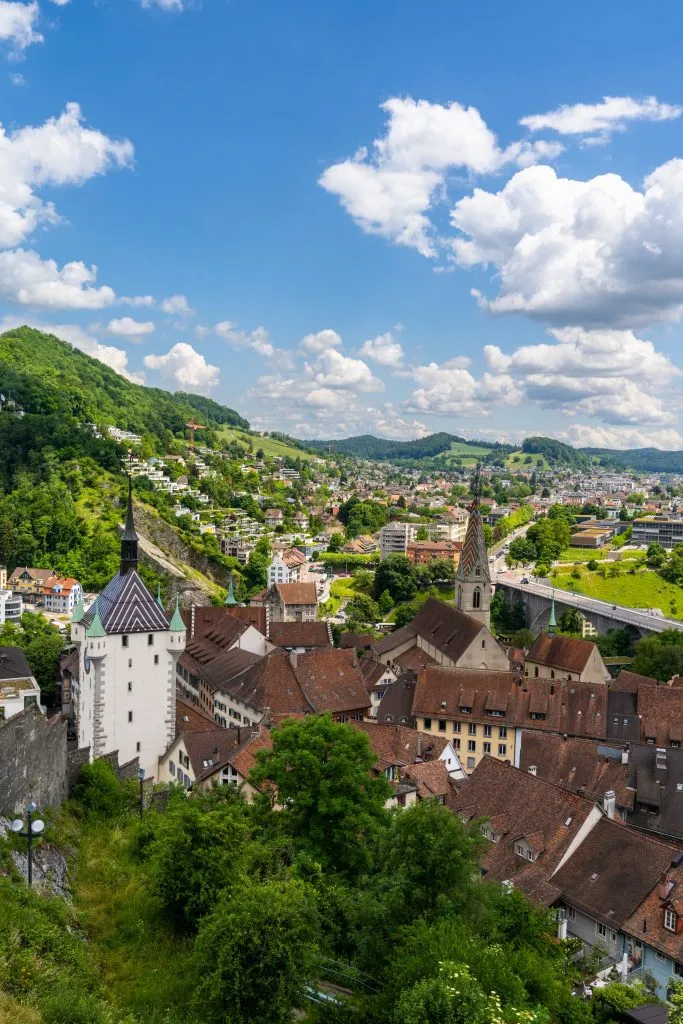
Lauterbrunnen
From Martha of May Cause Wanderlust
Lauterbrunnen is a village at the base of the stunningly beautiful Lauterbrunnen Valley in the Bernese Oberland region, and it is indisputably one of the absolute best places to visit in Switzerland!
It is the epicentre of this bucolic area, which boasts of pretty waterfalls, steep snow-capped mountains and quaint wooden chalets, and there are plenty of things to do in Lauterbrunnen and the surrounding area.
In the village itself, you’re spoiled for choice when it comes to scenery. On either side of the village, there are green hillsides dotted with chalets and sheer cliff faces.
The stunningly delicate and impossibly tall Staubbach Falls seem to be falling on the village – although they are actually just a short walk outside it.
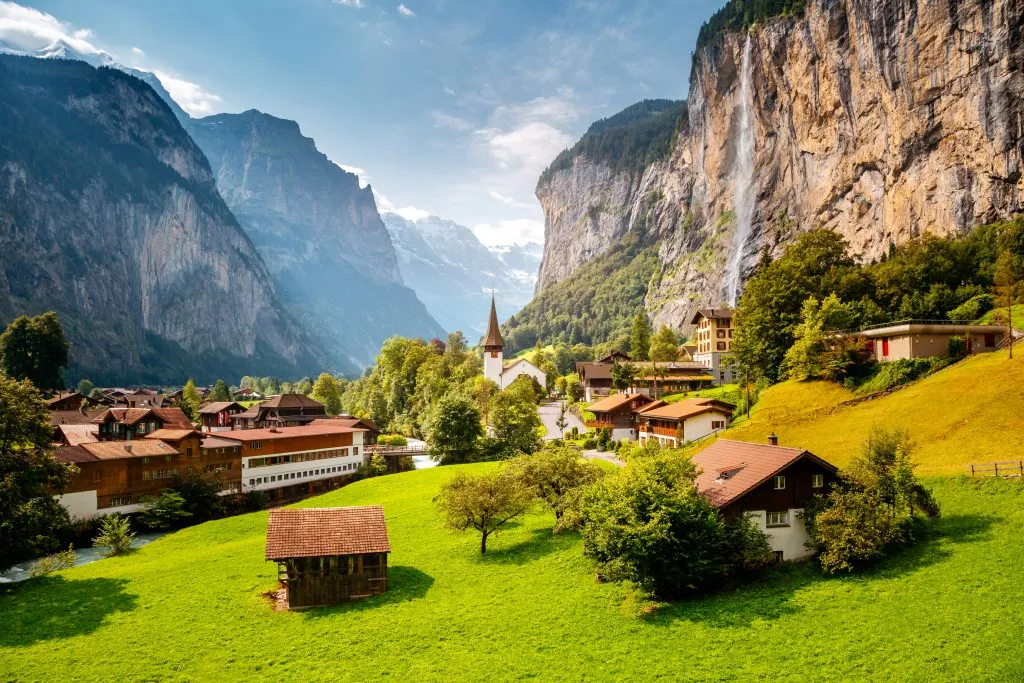
And the best view of all is southward across the village towards Lauterbrunnen Church.
Looking in this direction, you see the pretty church steeple flanked on either side by the steep valley walls and the Staubach Falls, with the snow-capped peaks of the Alps behind them.
It is so picture perfect, it almost doesn’t feel real!
To explore the countryside around Lauterbrunnen, there are hiking and cycling trails, and you can also take trains and/or cable cars to the neighbouring car-free alpine villages of Mürren and Wengen.
You can also take a series of trains from Lauterbrunnen to Jungfraujoch for an up-close look at one of Switzerland’s remarkable glaciers.
For a reasonably affordable stay, with good food and a chance of gorgeous views from your room, check out the Hotel Oberland .
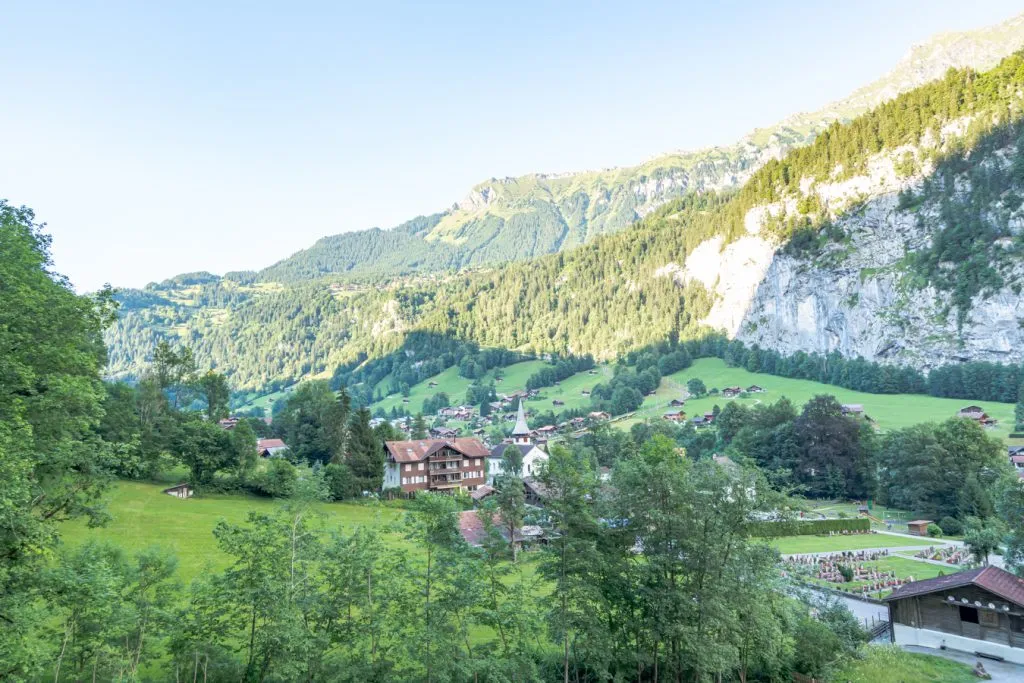
From Marianne of Pasta, Pretzels & Passports
Located approximately 25 kilometres southwest of Lucerne, in the heart of a UNESCO biosphere reserve, lies the picturesque town of Entlebuch.
Covering a 22-square-mile area, the town is home to only 3,300 people.
But don’t let its size fool you! Entlebuch is one of the prettiest towns you will ever see.
And if you enjoy outdoor activities like hiking, biking, climbing, or canoeing, then this town is definitely one of the best places to visit in Switzerland.
Entlebuch offers more than 60 kilometers of well-marked hiking trails.
You can also choose one of the 13 loop trails that wind through gorgeous forests, along clear rivers, and through mountain meadows.
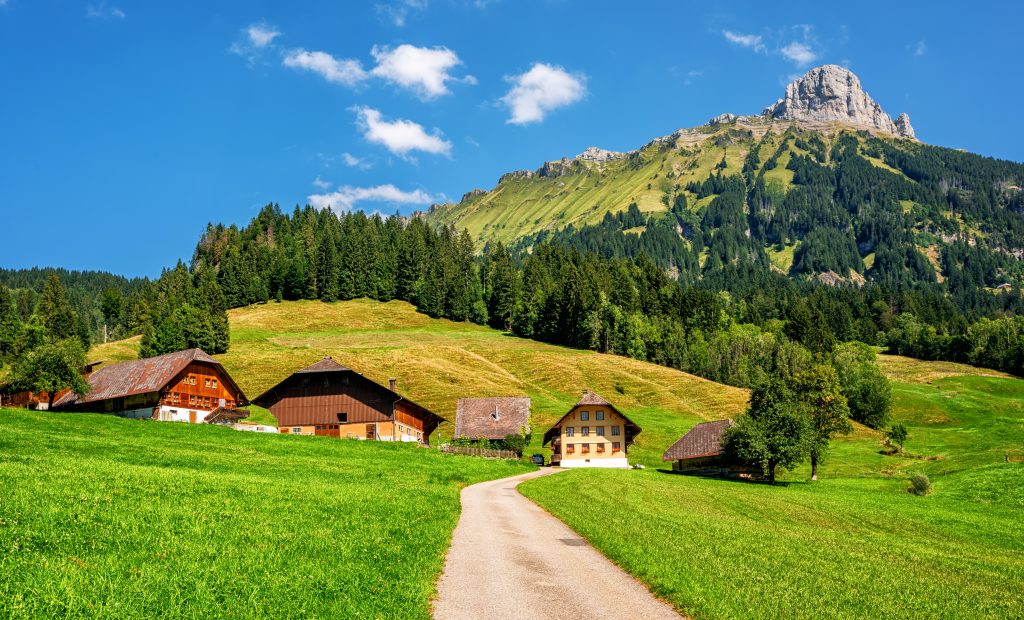
But if you are looking for something truly unique, head over to Stillaub Lama where you can go Lama-Trekking with a guided tour! Enjoy an incredible hike accompanied by llamas.
If canoeing is something that interests you, the Canoe Club in Entlebuch offers canoe rentals or even guided excursions.
Paddle along the scenic Emme (Emmenuferweg) river between Hasle and Entlebuch.
And although summer is an incredible time to visit Entlebuch, if you like winter activities, the town has plenty to offer at that time of the year as well.
From snowshoeing to winter hiking, cross-country and downhill skiing, you won’t find a more scenic location.
And after an exhilarating day of exploring this incredible area, head back to town where you will find several excellent restaurants serving local cuisine.
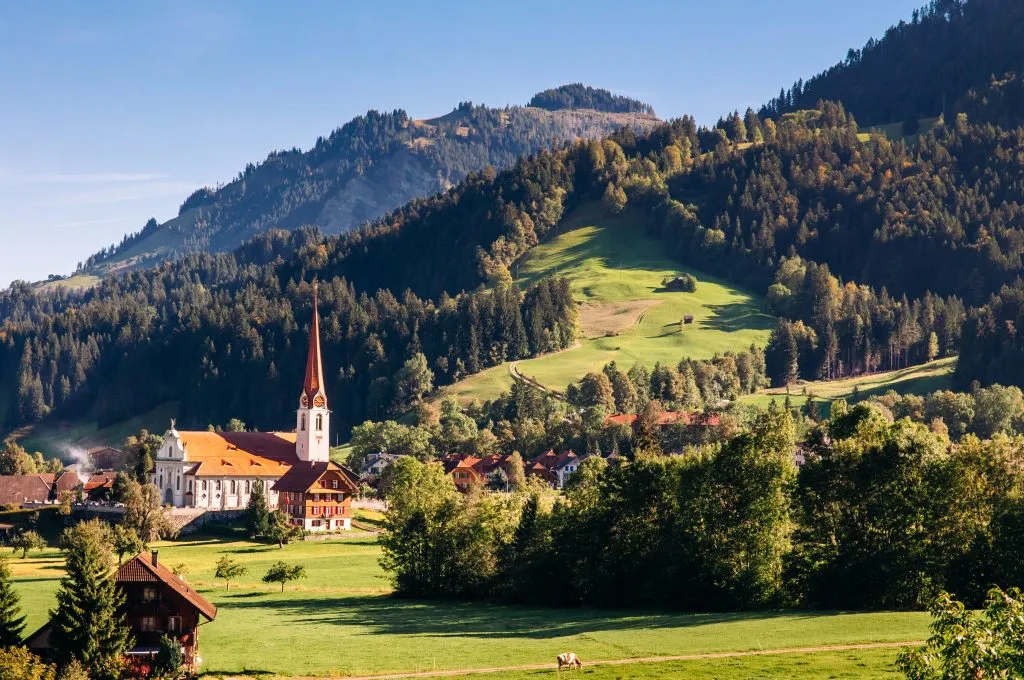
From Trijit of Budget Travel Buff
On the banks of Lake Geneva stands the charming resort city of Montreux, which happens to be one of the most beautiful places to visit in Switzerland.
The town looks out over the entrancing splendor of the surrounding countryside as it lies peacefully tucked away within the Swiss Alps.
The architecture of the historic cities and the ancient castles of Montreux has made it a place worth exploring.
The ideal months to visit Montreux are from April to October, but you’ll also find a charming Swiss Christmas market here in December!
The French-speaking Vaud region of Switzerland, which stretches from Lausanne to Montreux, is the heart of the Swiss Riviera and has a distinct Mediterranean character.
The lakeside resorts provide a surreal view of the lush green landscape, where you can unwind.
It’s one of Switzerland’s most picturesque locations due to its gorgeous lakeside location, expansive vineyards, and mountains, hills, and valleys.
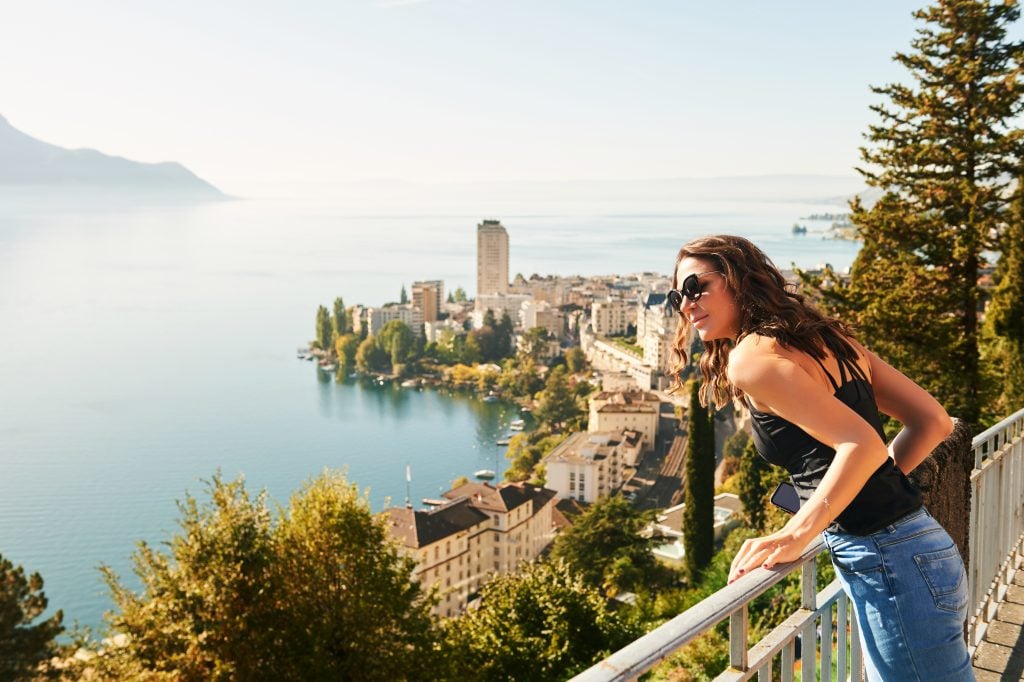
Take a relaxing boat trip on Lake Geneva to take in the beauty of the surrounding landscape and the lakefront villages.
You can visit the Freddie Mercury statue, wander along the Old Town’s streets, and circle the Montreux Lake.
It is unusual to visit Switzerland without trying Swiss chocolate , the country’s most well-known delicacy.
The chocolate train on the Montreux-Berner Oberland Railway is devoted to the world’s most delicate temptation.
The famous Château de Chillon, which is about a 30-minute walk from Montreux, is another reason to visit.
This 13th-century fortress comes from the Middle Ages and features a beautiful view of the lake.
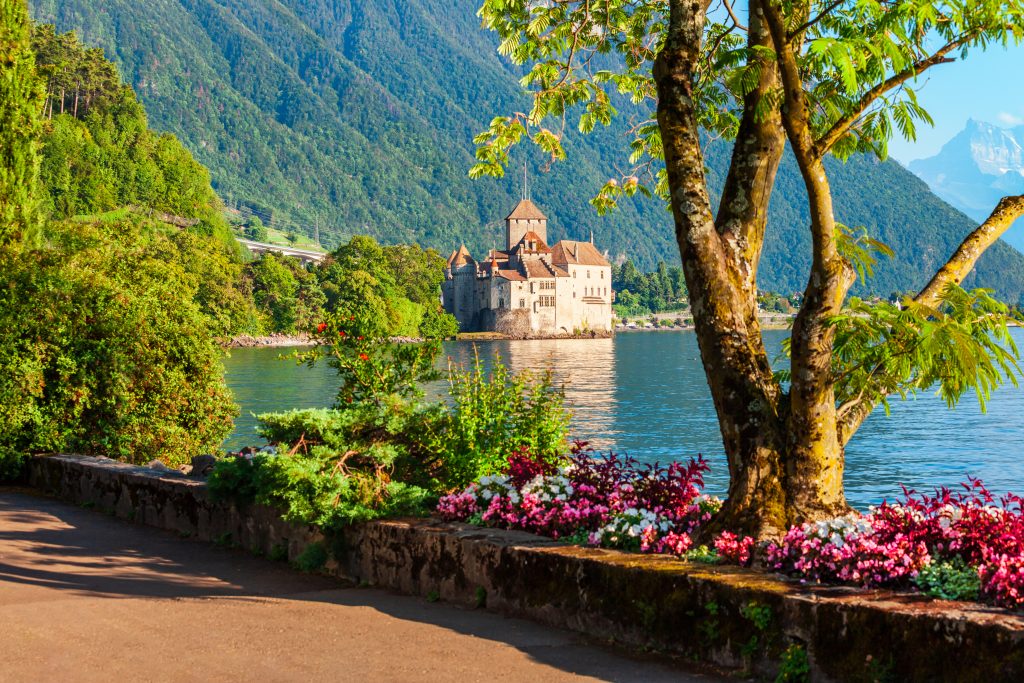
From Michelle C. of Intentional Travelers
When it comes to beautiful places in Switzerland to add to your bucket list, nothing compares to the Alps.
Nendaz, a small ski resort town up in the mountains, is popular for both winter and summer activities.
Arrive via train to Sion, in the valley, and then take a Postbus up to town.
The drive up the winding mountain road is a beautiful initiation to the area with spectacular views.
In the summer and fall, there are great hikes leaving from town so be sure to pack walking shoes !
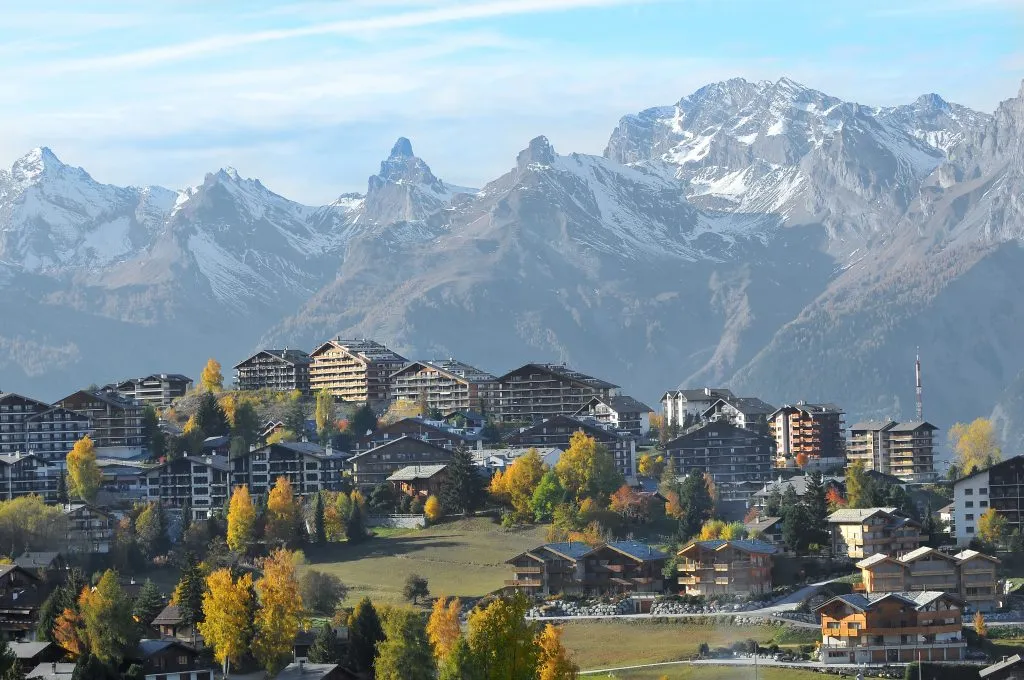
Several of the trails in the region follow along the “ bisses ,” or old waterways, in and out of small villages and farms, through the hills and forests.
The ski lift to Tracouet’s Black Lake provides another panoramic perspective and more hiking trails.
The vacation rental options in Nendaz are abundant, although many of the hotels close in the shoulder season (fall).
Staying in Haute (“high”) Nendaz not far from the Tourist Office is best for easy access to restaurants, grocery stores, bus stops, and the ski lift.
Nendaz can also be a good base for day trips to other excellent Switzerland travel destinations like Sion, Martigny, Zermatt, and even places a little further like Spiez, Interlaken, and Bern.
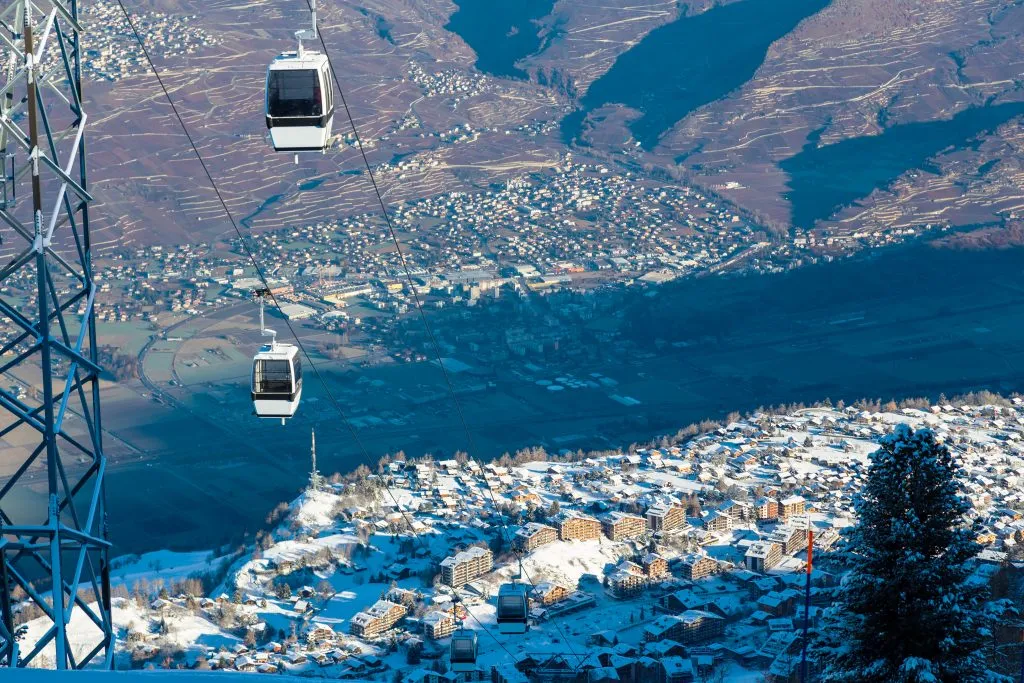
Ascona, Switzerland
From Giorgy of G-Extreme Travel
The small lakeside town of Ascona is located in Ticino, the sunny, warmest, and most charming place in Switzerland.
Indeed, it boasts more than 300 days of sunshine a year and its mild climate makes it a popular destination for tourists from all over the world.
There are always plenty of delightful things to do in Ascona, regardless of the time of year.
From hiking to discovering the holy Monte Verità, and from soaking in the Maggia or Verzasca Valley surrounded by magical waterfalls to visiting historical museums such as Castello san Materno, Galleria Borgo, and Museo Comunale d’Arte Moderna.
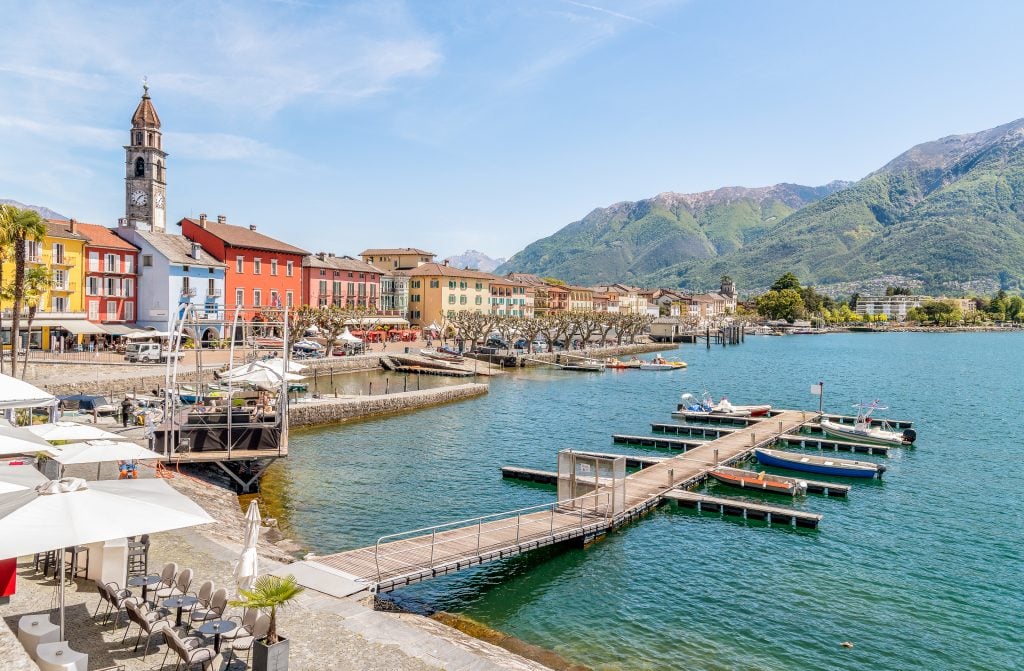
And, of course, the Ascona lido is always tempting in the summer.
Don’t forget to walk along the famous lungolago, where there are plenty of restaurants offering delicious Italian cuisine.
From this promenade, you can take an electric train around Ascona to discover the local attractions.
Or, you can take a boat to Brissago Island in the middle of Lake Maggiore letting you live an exciting story of only Switzerland’s Botanical Garden on the island.
Whether you’re looking for a relaxing vacation or an action-packed getaway, this little hidden gem is an incredible Switzerland travel destination to add to your bucket list!
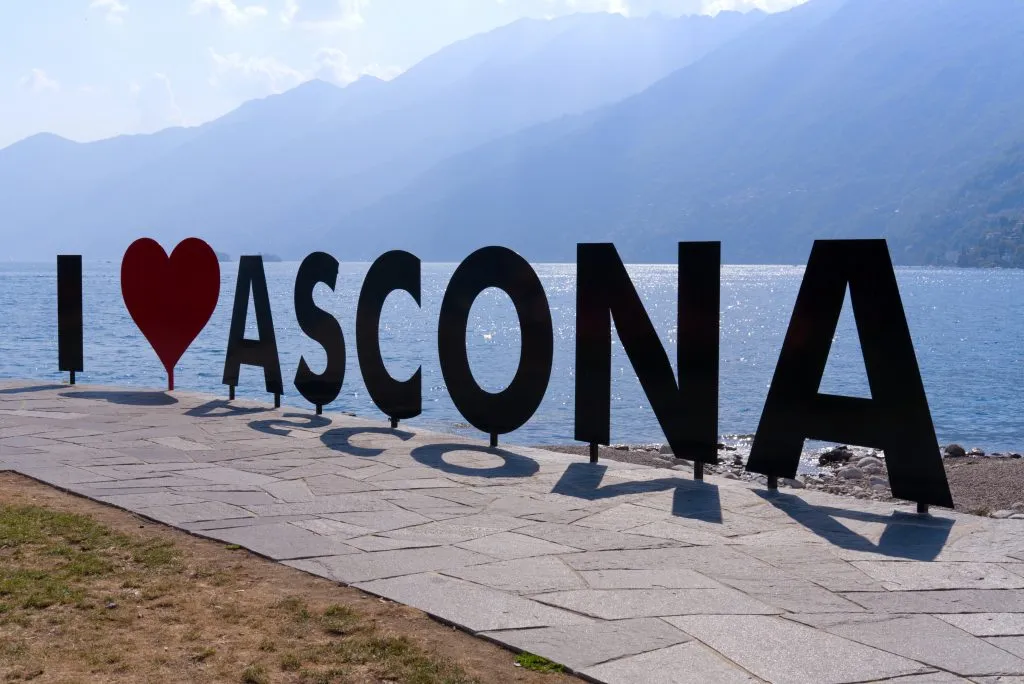

Bernina Express
It’s hard to say whether a train ride counts as a Switzerland travel destination–but then again, trains in Switzerland are a bit more exciting than just about anywhere else.
Famous for being one of the most spectacular train rides in the world, the Bernina Express runs from Chur, Switzerland to Tirano, Italy, covering truly spectacular scenery along the way!
Featuring nearly 200 bridges and more than 50 tunnels along the way, this 4-hour scenic journey definitely belongs on your Switzerland bucket list.
Dramatic views of the Alps, glaciers, the soaring bridges, and more are waiting to be enjoyed through panoramic windows.
Be sure to book this Swiss travel experience in advance–the train is deservedly popular, and gets booked up quickly!
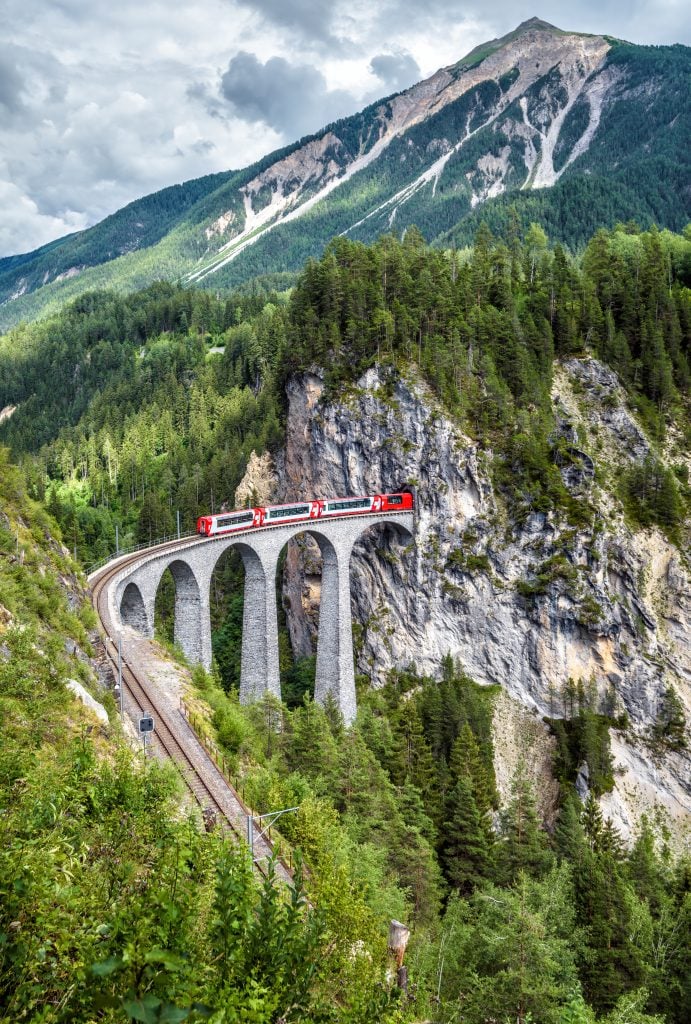
Schynige Platte
From Amela of Stay Wild Travels
If you’re heading to the Jungfrau Region in Switzerland, then visiting the summit of Schynige Platte is a must.
In order to get there, you’ll need to hop on board the Schynige Platte-Bahn, an old-fashioned, historic railway that leaves from the small village of Wilderswill which is not too far from Interlaken.
It chugs slowly up the mountainside and offers fantastic views, which is an incredible experience in itself.
Once you’ve arrived at the summit, you’ll find a plethora of hiking trails, a restaurant and a botanical alpine garden, to name a few.
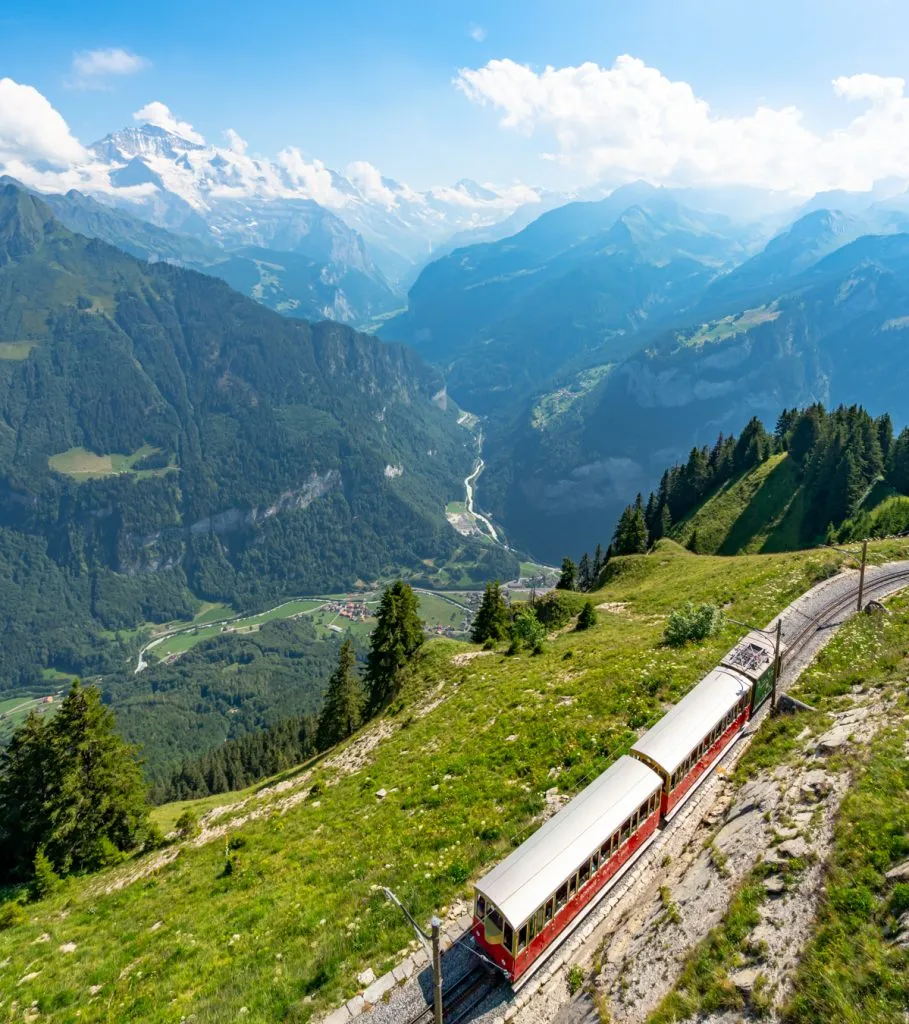
The most popular hiking trail is the Panorama Trail. As the name suggests, this offers unmatched views over the Jungfrau Region, including the three major peaks in the area: Jungfrau, Mönch and Eiger.
You’ll be able to visit Schynige Platte from the end of May to the end of October.
Those looking for a traditional stay among the mountains are in luck, as the restaurant also offers doubles up as a popular hotel .
The rooms are quaint with Swiss décor and offer picture-perfect mountain views.
It’s worth noting that Swiss Travel Pass holders receive a discount on the trip, and Jungfrau Pass holders have a visit included with their card.
Take This Map With You! Click each highlight to pull up the name of the destination. To save this map to “Your Places” on Google Maps, click the star to the right of the title. You’ll then be able to find it under the Maps tab of your Google Maps account! To open the map in a new window, click the button on the top right of the map.
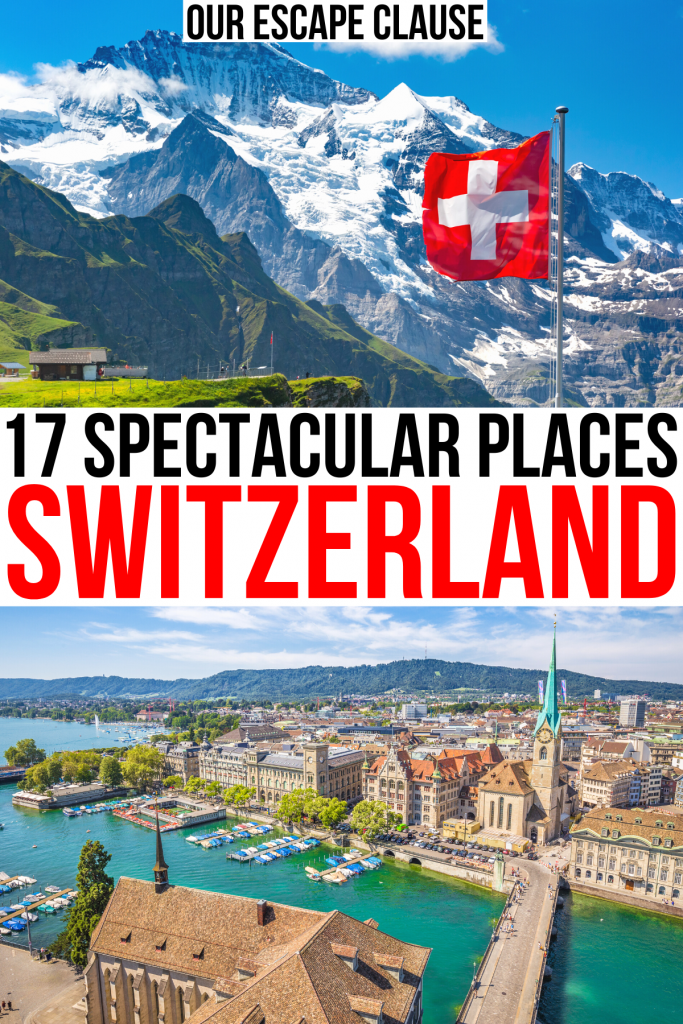
About Kate Storm

In May 2016, I left my suburban life in the USA and became a full-time traveler. Since then, I have visited 50+ countries on 5 continents and lived in Portugal, developing a special love of traveling in Europe (especially Italy) along the way. Today, along with my husband Jeremy and dog Ranger, I’m working toward my eventual goal of splitting my life between Europe and the USA.
2 thoughts on “17 Spectacular Places to Visit in Switzerland (+ Map!)”
One place that should be a must to visit when in Switzerland is the Rheinfall (Rhinefall) near Schaffhausen which also is a beautiful town. It is less then 1 hour from Zurich. PS: A small typo, the river in Lucerne is called Reuss, not Neuss
Thanks, Thomas, I’ll get that fixed. 🙂
And yes, I hear the falls are supposed to be gorgeous!
Leave a Comment Cancel reply
- Skip to primary navigation
- Skip to main content
- Skip to primary sidebar
- Skip to footer
TravelAwaits
Our mission is to serve the 50+ traveler who's ready to cross a few items off their bucket list.
7 Things I Wish I Knew Before Visiting The Swiss Alps

- Destinations
- News and Tips
- Switzerland
- Travel Tips
At Jungfraujoch – Top of Europe, a blizzard raged and the wind was so bitingly cold that my poor gloveless hands were turning into ice. I had packed a thick jacket for this trip to the Jungfrau region of Switzerland, but I didn’t pack anything else suited for winter, like a hat or gloves.
It was summer after all.
I was on a hosted adventure to experience summer in the Swiss Alps near the town of Grindelwald in central Switzerland, so I didn’t think I would need anything beyond a coat for the cold nights.
Yet, even as the sun shone warmly in the valley, I was shivering and freezing in the summer, but winter, storm that raged on top of Jungfrau, one of two major 4,000-footers of the Bernese Alp. The furious snow blocked out most of the Aletsch Glacier view at 11,332 feet above sea level.
Not being prepared for a variety of weather conditions was one of a few mistakes I made when I visited the Jungfrau region for the first time. I am usually adept at researching places before I visit, but I still missed out on some tips that would have made my life a little easier while visiting Switzerland.
Here are 7 things I wish I knew before visiting the Swiss Alps.

1. Bring Layers
The weather in the bucolic valleys of Switzerland vary dramatically from the weather at the top of the mountains and peaks in this region. Because the Swiss Alps straddle the northern European climate and the warmer southern European climate, the weather can be both cool and warm at the same time. In fact, you could experience sunshine in one valley while rain pours down on the other side of the mountain.
When in doubt, it’s better to have that extra jacket and pair of gloves and not need it, rather than to need it and not have it. Bringing heavy winter gear along with shorts and tank tops may mean extra luggage, but don’t underestimate how diverse the weather in Switzerland can be at any time of the year.
Pro Tip: For every 328-foot gain in elevation, the temperature can drop approximately 1.8 degrees. So, if you get on top of the Jungfraujoch , for instance, you’re at 2.14 miles above sea level where the mountain tops are chilly in summer and sometimes covered in thick layers of snow.

2. Be Prepared For Altitude Sickness
Elevation, again, can cause a bit of misery for visitors to Switzerland if they aren’t prepared for the altitude. Switzerland lies at an average elevation of 4,429 feet above sea level, making it one of the highest countries in the world. Switzerland’s highest mountain peak — Dufourspitze — is 15,203 feet.
If you’re not used to high elevations, then altitude sickness can be pretty miserable. According to a study titled “Prevalence of acute mountain sickness in the Swiss Alps,” acute mountain sickness is “not an uncommon disease at moderately high altitude.” It can cause “severe headache, vomiting, dizziness, tachypnoea, and pronounced pulmonary rales.”
One of the ways to combat this sickness is to ask your physician for a prescription called Acetazolamide , or Diamox. This is the common prescription for preventing acute mountain sickness, high altitude pulmonary edema, and high altitude cerebral edema.
You can also get over-the-counter medications to combat altitude sickness, but in my personal experience, they don’t work as well.
Pro Tip: If you are at high altitudes, treat all headaches, dizziness, or vomiting as altitude sickness. Immediately descend to a lower altitude and make sure you are always properly hydrated. If you do plan to climb or summit these high peaks, spend a day or two in one of the nearby towns to slowly acclimate.

3. Tummy Issues Are Common
One of the best things about Switzerland is the food and drink. The Swiss are masters in the arts of chocolate, cheese making, and wine, so be prepared to be tempted by plenty of delicious, rich, and dairy-heavy foods.
While traveling in planes, trains, and automobiles generally causes me to “slow down” in the digestive process — if you know what I mean — the rich and tempting foods made me even more constipated than usual. Other people may have the opposite problem, depending on their body types.
So, if you plan to indulge in all the rich cheese dishes and fondues, the mouthwatering chocolate and hearty sausages, be sure to pack your over-the-counter tummy medications for either issue.
4. Switzerland Is Expensive
You might have heard already that Switzerland is expensive. In fact, Zurich and Geneva are often included in lists touting the most expensive cities in the world.
Yes, certain things are much more expensive in Switzerland, like groceries, clothing, shoe shopping, and going out to dinner or for drinks. In fact, unless you eat fast food, finding a meal for less than 20 CHF ($20.51) is difficult.
Public transportation, tourism excursions, and medical costs are also much higher in cost than other destinations.
That being said, if you have the ability to stock up on light groceries to cover breakfast and lunch, you’ll be able to indulge in the cost-worthy food that restaurants serve here. Just, be aware of the expenses you may face and budget accordingly.

5. Invest In A Rail Pass
Switzerland is home to some of the best public transit in the world, and if you want to see all that this beautiful country has to offer, traveling by train, gondola, and funicular is the way to go. As stated above, Switzerland can be a bit expensive, so buying individual train and gondola tickets can really add up after a while and a rail pass can save you a ton of money.
The Swiss Travel Rail pass from Rail Europe gives you access to the panoramic trains like the Glacier Express, Bernina Express, Luzern–Interlaken Express, GoldenPass Panoramic as well as the Gotthard Panorama Express. Although this is a much better option than buying individual tickets, you can expect to pay a lot for the Swiss Travel Pass, so be prepared for sticker shock.
Ths rail pass also has public transport in more than 90 Swiss towns and cities. It even offers senior passes. The Swiss Travel Pass is sold for 3, 4, 8, and 15 days and allows free entrance to over 480 museums and exhibitions.
6. Buy Your Alcohol In The Stores
Like many other things in Switzerland, going out to drink and buying wine at restaurants is a pricey affair. Skip drinking at the bars and restaurants and just buy your wine and beer at the grocery store to drink at your hotel or rental.
Keep in mind that alcohol hits the body a lot faster and harder in higher elevation, making you a cheap drunk in the mountains.
7. Get A Universal Adapter
If you are traveling around Europe and Switzerland, get the right adapter to charge your electronics. While most of Europe uses the Schuko plug ( type F ), Switzerland is different and uses type J outlets, which are smaller.
Instead of buying both, you can buy a universal travel adaptor. Just make sure it has a type J outlet included.
Check out our most recent Swiss Alps coverage, including:
- How To Spend 3 Perfect Days In Switzerland’s Jungfrau Region
- 5 Beautiful Gondola Rides To Experience In The Swiss Alps
- How To Spend A Long Weekend In Grindelwald, Switzerland

Heide Brandes is an award-winning journalist and travel writer based in Oklahoma. She loves outdoor adventures, exploring different cultures, and finding off-the-wall, bizarre, and wondrous experiences to enjoy. Heide writes for numerous national and international publications and is an award-winning member of the Society for Professional Journalists, North American Travel Journalists Association, and Society of American Travel Writers. Besides traveling and writing, Heide is also a professional Bellydancer, a medieval re-enactor, and a quirky chick who lives in Oklahoma City.
We Are Travel Girls
A Community Created To Inspire, Connect, Educate & Empower Female Travelers
EUROPE , HIKING , SWITZERLAND · October 29, 2021 Last Updated on March 15, 2024
THE ULTIMATE SWISS ALPS HIKING TRIP GUIDE
This post may contain affiliate links. As an Amazon Associate I earn from qualifying purchases. We may receive a small commission when you make a purchase using our link.
Switzerland is home to some of the best hiking trails in the world, making it an ideal destination for a hiking trip. In September I went on a girls’ wellness getaway in Switzerland where we spent eight blissful days hiking through the breathtaking Bernese Alps.
The Bernese Alps are a mountain range of the alps made up of three peaks (Eiger, Mönch, and Jungfrau), located in Western Switzerland, in the canton of Bern. This area of Switzerland offers excellent skiing in the winter and incredible hiking in the summer.
If you want to plan a Swiss Alps hiking trip, this guide has everything you need to know to make it an unforgettable experience!
Where To Stay In Switzerland
The Bernese Alps are stunning and very accessible, making them an ideal destination for a Switzerland hiking trip. We chose the small village of Wengen (population 1,300), as our home base here for the duration of our getaway. Wengen is a car-free mountain town in the Interlaken area that is at the heart of summer hiking, sightseeing, and outdoor activities.
In winter, Wengen transforms into a world-class ski resort famous for the Lauberhorn World Cup Alpine ski races and has excellent skiing terrain suitable for all abilities. The picturesque town of Wengen exudes Swiss mountain charm and offers an array of great hiking trails, as well as good restaurants and upscale rentals and hotels.
We rented our chalet from Wengen Apartments and could not be more pleased with our accommodations. Julie Doyle, the owner, is wonderful and quickly responded to our requests and questions.
We stayed in the Chalet Bärgsunna Penthouse which sits on a hillside overlooking Wengen, just a short walk from the Wengen–Männlichen aerial cableway. This penthouse offered the perfect mix of chic alpine decor with modern amenities and was an excellent home base for our hiking getaway.
We loved the loft where we could do morning yoga and watch movies in the evenings, that three bedrooms had en suite bathrooms, and that every room had an amazing view of the beautiful snow-capped Alps!
If you are planning a group trip to Switzerland, renting a chalet is the way to go, but if you prefer to stay in a hotel, here are some good hotel options in Wengen:
- Sunstar Hotel Wengen – Cute, four-star hotel in the heart of town, with a great breakfast and top-notch service.
- Maya Caprice Boutique Hotel – Four-star boutique hotel in the city center, with incredible views of the Alps.
- Beausite Park Hotel – Guests give this Wengen hotel five stars, it has an indoor pool and incredible views.
- Hotel Edelweiss – Two-star, affordable, highly rated Wengen chalet hotel with a spa.
- Hotel Alpenrose Wengen – Three-star hotel, alpine-style rooms, and suites with beautiful mountain views.
How To Get To Wengen
The closest airport to Wengen is Zurich International Airport (ZRH). I flew Swiss Air direct from Los Angeles to Zurich. From Zurich, it is a two-hour (beautiful!) drive to Lauterbrunnen. Wengen is a car-free town so when you arrive in Lauterbrunnen you can leave your car there at the multi-level parking garage at the Lauterbrunnen Railway Station . Parking is about $20 per day.
Then you take the train up the mountain to Wengen. It is a quick ride and takes less than twenty minutes, and is about $8 for a one-way ticket. The train stops briefly at Wengwald on the way up and then the next stop is Wengen.
The train runs back and forth from Wengen to Lauterbrunnen every thirty minutes so it is very easy to get back and forth to your car if you end up wanting to drive to a different area. From Wengen, you can access a multitude of hikes and you can take the train and cable cars all around the area so you won’t need your car often. We only used our car a couple of times.
What You’ll Need For A Hiking Trip In Switzerland
Before we get to our hiking itinerary we need to discuss the basics of what you need to know and what you will need for a hiking trip in the Bernese Alps.
Subscribe to We Are Travel Girls
Join 8 million+ readers, get travel tips, event invites, trip discounts and more!
8 Day Switzerland Hiking Trip Itinerary
Now for the fun part of the guide. Below is the exact itinerary we used for our eight-day hiking trip in Switzerland, which I have to say was by far my favorite trip I have ever done!
I have been travel blogging for 10 years and have visited almost 60 countries, so this is a big claim, but the Bernese Alps stole my heart, and I plan to return for many more hiking (and skiing trips) in Wengen.
Day 1: Wengen – Männlichen Trail
On our first day in Switzerland, we went on a jog to explore Wengen, had a delicious buffet breakfast (with lots of cheese!) at Sunstar Hotel Wengen , went grocery shopping, then returned to our chalet to get ready for our hike up to Männlichen. (The trailhead for this hike is literally right out the back door of Chalet Bärgsunna Penthouse so it could not have been more convenient).
Männlichen is a 7,687-foot mountain in the Swiss Alps. The town of Wengen sits at the base of Männlichen and its peak can be reached from Wengen by the Wengen–Männlichen aerial cable car, or from the Grindelwald Terminal station using the Grindelwald–Männlichen gondola cableway.
Or you can hike from Wengen to Männlichen which is what we did since this was a hiking trip, after all. The Wengen to Männlichen trail is a 3.6 mile, lightly trafficked, point-to-point hike with a 3,441ft elevation gain. It took us about 2.5 hours.
This hike is rated as moderate but it should definitely be rated as difficult . This was by far the hardest hike we did during our trip, not because it was long or technical, but because you are literally hiking straight up a ski hill with an intense elevation gain.
You can watch my Instagram stories @VanessaRivers where I share our experience climbing this trail, which was challenging but very rewarding. The hike is beautiful, with incredible views looking down at Wengen, and well worth the effort.
When you reach the top of Männlichen you will be exhausted and need a break. Luckily there are a couple of restaurants at the top where you can get food, rest, get warm (if the weather is chilly), and enjoy a much-earned beer before you take the cable car back down to Wengen.
TIP: The last cable car from Männlichen to Wengen is around 5pm so plan your hike accordingly otherwise you will be walking back down the mountain. Also, bring a power bar with you for this hike. The altitude makes you feel weak so it is helpful to refuel halfway, with some carbs and protein.
For dinner we went out to Maya Caprice Boutique Hotel , an upscale (white tablecloth) restaurant with great vegetarian options and an amazing view of the Swiss Alps. I had their pumpkin squash soup and a (giant) vegetable salad with mountain cheese. Both were delicious.
Day 2: Mürren – Gimmelwald Trail & The Mürren Flower Trail
After our intense first day hike, we wanted to have a mellow hiking day so we decided to take a day trip to explore the nearby town of Mürren. From Wengen, you take the train down to Lauterbrunnen, then take the cable car to Grütschalp Railway Station , and from there you take another train up the small mountain village of Mürren (population 450), which costs about $20 each way.
Mürren is incredible! The town is so cute and the landscape around Mürren is breathtaking. It was the most picturesque area we visited in Switzerland and possibly the most charming place I have seen on all my travels.
I think Wengen is a better place to stay for a hiking trip, purely from an accessibility standpoint, but if you don’t mind the trek, spending a few nights in Mürren would be idyllic. If you don’t stay in Mürren, I suggest at least doing a full day trip here.
We arrived in Mürren in the late morning and had breakfast at Cafe Liv which has excellent coffee and yummy vegan pastries. Then we started off on our “hike” from Mürrento to Gimmelwald . I put hike in parenthesis because this trail is more of a walk than an actual hike.
The trail from Mürren to Gimmelwald is a 1.7 mile (mostly downhill) point-to-point trail that is accurately rated as easy . But even though this trail is easy it was still one of my favorite hikes. This walk could not be more beautiful. It was hard not to stop every few seconds to take yet another photo.
During our walk, we passed through the small village of Mürren dotted with flower gardens, cute wood homes, and boutique hotels with colorful shutters, cows and sheep grazing against a backdrop of snow-capped mountains, waterfalls, flower fields, paragliders soaring through the air, meadows, hillsides dotted with chalets and so much green in every direction.
It’s hard to explain how beautiful this walk is. It was so picturesque, so charming, so quintessential Swiss Alps that it honestly didn’t seem real. At the end of the trail, we stopped to have a beer at the Mountain Hostel which is right next to the Gimmelwald cable car, and of course, has an incredible view.
We then took the cable car from Gimmelwald back up to Mürren and did the Mürren Flower Trail which was another easy 1.4 mile point-to-point hike. The flower trail is stunning as well, with mesmerizing views of the Alps in every direction.
One thing I especially loved was all of the playgrounds in this area. Switzerland is a very family-friendly destination . I can’t wait to return with my daughter.
Day 3: Schynige Platte – First
On our third day in Switzerland, we did our longest hike, a 10-mile point-to-point hike from Schynige Platte to First . Schynige Platte is a small mountain ridge and a viewpoint in the Bernese Highlands.
We took the train from Wengen down to Wilderswil Railway Station where we changed trains and then headed up the mountain to Schynige Platte. The journey takes about an hour from Wengen but is well worth it. This was by far my favorite hike I have ever done!
The train drops you off at the base of Berghotel Schynige Platte where you can have breakfast with an incredible view (check out my Instagram Reel ). After breakfast, you’ll head out on the hike which takes you through meadows and across mountain ranges where you will see: wildflowers, meandering streams, cows grazing, snow-capped mountains, and sparkling blue lakes.
This hike is rated as hard (because of the length) but I felt like a moderate hike. The elevation gain is about 3,200 ft over the course of the hike, but the trail itself is not very steep or strenuous, especially compared to the Wengen to Männlichen hike (which was much shorter but exhausting).
What I love about this trail is that you are in the middle of nowhere, hiking along mountain ranges and it is so surreal and peaceful that it makes you grateful to just be alive. I actually had several very stressful things on my plate during this trip and this hike was like medicine for my soul.
I don’t remember feeling anything but pure gratefulness on this trail. It is much easier to live in the moment when you are out in nature, surrounded by raw natural beauty (at least for me). We also only saw a handful of other hikers the entire day which added to the magic of this special trail.
At the halfway point on this hike, you will find yourself at a chalet called Berghaus Männdlenen which is a great spot to stop and use the bathroom and enjoy a cold beer with an amazing view. This chalet is literally in the middle of nowhere, so much so that they have to fly supplies and water for the toilets up to it with a helicopter!
Towards the end of this hike, you will come around a bend and see beautiful lakes with towering, snow-capped mountains as their backdrop. It is such a magical spot and an ideal place to stop and take photos.
This hike ends at the First Cliff Walk , which is a walkway suspended from a rocky mountainside, with incredible peak and valley views, that can also be accessed by gondola from the town of Grindewald.
It’s free to do the cliff walk, which I highly recommend, and then you simply take the gondola down to Grindewald. From Grindewald you have to take a train to Zweilütschinen Railway Station , and from there you take another train back up to Wengen.
Day 4: Männlichen – Kleine Scheidegg – Wengen
On our fourth day in Switzerland, we woke up, went on a jog, did a yoga session, and then set out on an easy hike from Männlichen to Kleine Scheidegg, and then back down to Wengen.
We took the gondola up to the top of Männlichen for this hike and did the Panorama Trail , making our way over to Kleine Scheidegg which is a mountain range that has a small railway station, a couple of shops, and a few cute chalets where you can get drinks and food.
This is a 5-mile hike that is rated as moderate but it is all either flat or downhill and should be rated easy in my opinion. From Kleine Scheidegg you can continue on and hike all the way back down the mountain to Wengen which is a few more miles and a very easy walk on a wide dirt road.
When you are almost back in Wengen you can stop for a celebratory beer and food at Bergrestaurant Allmend which is right along the trail and serves up delicioous cheese raclette (a must-have when you are in Switzerland!) along with gorgeous views of Wengen.
Day 5: Kandersteg – Oeschinensee
On our fifth day in Swizterland, we did the Kandersteg – Oeschinensee Trail around Oeschinen Lake.
Oeschinen Lake is about an hour’s drive from Lauterbrunnen so we took the train from Wengen down to Lauterbrunnen Railway Station then hopped in our rental car for the scenic drive over. At the base of the mountain, you have to take a cable car up to the lake and hiking trails.
Oeschinen Lake is such a beautiful, bright, sparkling blue color that it almost looks fake! The lake is fed through a series of mountain creeks and is rounded by snow-capped mountains, trees, and greenery in every direction.
This hike is a 4.8 mile heavily trafficked , loop trail that is accurately rated as moderate . At the end of the hike, you can stop at the Berghotel Oeschinen which has a restaurant with delicious, healthy options and a large outdoor patio overlooking the lake.
Day 6: Rest/Work Day + Cheese Festival
On our sixth day in Wengen, we took a much-needed rest/work day, caught up on emails, did yoga, and relaxed in our chalet .
In the afternoon we met up with Julie the founder of Wengen Apartments and she took us to the Wengen Cheese Festival , which is held every September in Wengen. It was a small gathering in the heart of the village and it seemed like all the locals were there.
We ate tons of cheese (of course!), drank beer, and listened to a local band play, which was a very fun way to spend a relaxing afternoon in the Swiss Alps!
Speaking of cheese, for an amazing authentic dinner experience in Wengen try Waldhuttli (Forest Hut Wengen). We didn’t get a chance to dine here on our trip, but I heard from locals that it is amazing for raclette and fondue!
Day 7: Männlichen – Kleine Scheidegg – Wengen
On our last day in Wengen, we wanted to do an easy, relaxing hike and we didn’t feel like traveling to get there so we decided to do the Panorama Trail again from Männlichen to Kleine Scheidegg and then on down to Wengen.
It was the perfect way to end the trip because it is such a beautiful, easy hike. It is also a great trail to take photos on, with the late afternoon sunshine perfectly lighting the snow-capped mountains in the distance.
Wengen stole my heart on this trip and I have to admit by this point I was feeling a little sad that it was our last day in the Bernese Alps.
Day 8: Zurich
On our last day in Switzerland, we spent the morning in Wengen, said goodbye to our chalet , then took the train down to Lauterbrunnen where we picked up our rental car from the car park and headed back to Zurich.
In the city, we stayed at the Storchin Zurich Hotel in Old Town. This hotel is in a great location on the water and has a nice rooftop bar with beautiful views.
For dinner, we ate nearby at Hilt , which claims to be “the oldest vegetarian restaurant in the world. You can easily walk to Hilt from Storchin Zurich Hotel. The only problem (for me) was that this restaurant is buffet style and after seven days of hiking and non-stop working out I wanted to eat every single thing I saw (and I pretty much did)!
Since this was a wellness getaway we ended our Switzerland trip with a run around Zurich. This was such a magical trip (honestly my favorite trip to date) so I spent most of the run plotting my return to the Swiss Alps!
What To Wear Hiking In The Swiss Alps
A trip to the Swiss Alps involves looks of walking and hiking so you want to pack accordingly. Here are some of our top picks for what to bring along with you to hike comfortably in in the Swiss Alps.
Hiking Accessories
Be prepared for long hiking days and bring along hiking accessories.
When Should I Visit The Swiss Alps?
If you are planning a ski trip to the Swiss Alps the ideal time to go is obviously the winter and spring months, December through March, when there is good snow coverage.
The most popular time for hiking in Switzerland is the warm summer months, but I suggest visiting in the fall when it is less crowded and more affordable. The beginning of September is arguably the best time to do a hiking trip in Switzerland because the weather is still good and most of the tourists have dispersed.
We went on our girls’ wellness and hiking getaway in Wengen during the second week of September. At first, the weather called for rain all week but we lucked out and got mostly sunny days, and it was actually quite warm. There was one day that it rained while we were staying in Wengen, but we used that as a much-needed rest and workday.
Traveling Internationally As A Vaccinated American
Traveling as a vaccinated American in Europe was actually a great experience. This was my first international trip since the pandemic began so I have to admit I was quite nervous leading up to our departure. I was especially nervous about entry into Switzerland and re-entry into the US, but everything went smoothly.
Switzerland officially re-opened its borders to vaccinated Americans in July 2021, so we planned our hiking trip for September 2021. Leading up to our departure I was worried they would re-instate a 10-day quarantine which would have made our trip impossible but luckily this did not happen.
If you are planning a trip to Switzerland, somewhere else in Europe, or anywhere in the world, be sure to check that the country you want to visit is open to vaccinated travelers from your country and that they do not have a quarantine in place. You also need to check up on this daily leading up to your trip because if we have learned anything about traveling during a pandemic, it is that things change constantly and what is true one day might not be true the next.
It’s important to note that most places in Europe require you to be fully vaccinated. I had to present my vaccination card to board my flight to Switzerland and I had to present it at every restaurant we dined at during our trip.
Switzerland did not require a negative COVID test to enter at the time of our trip, but to re-enter the US I had to present a negative COVID test and my vaccination card. For this trip, I ordered at-home COVID tests from eMed.com . This is the test I used , which (at the time) was approved for re-entry into the US for international travelers.
This at-home test was very simple. You call an eMed doctor and do the test in front of them on your computer, and then in 15 minutes, you have the results. It was $75 for 6 tests and I took two tests with me in case I received a false positive.
It is important to note that the requirements for every country are different and the tests that are accepted seem to change constantly so it is imperative that you do your own research before your trip and ensure you choose a test that is approved based on where you are traveling from and to.
And you must do your own research to understand all the requirements for entry into the country you want to visit and re-entry into the US or wherever you are traveling home to. It’s up to all of us to slow the spread of COVID so please wear a mask and travel responsibly.
Switzerland Hiking Trip Guide Wrap Up
As I bring this guide to a close, I think it is helpful to mention that there is pretty good cell service in the Bernese Alps. I have an international plan with T-Mobile and I had at least a few bars almost everywhere we hiked. So even if you are “out in the middle of nowhere” it still feels very safe. Also, there are chalets along every hiking trail so there are always places to stop if you want to rest and get food or drinks.
Switzerland is a very safe country. Our little group consisted of just three girls for this trip and there was not one time that I didn’t feel safe. There was also not one time that I was “over it” and wanted to go home. Of course, I missed my four-year-old daughter who was at home with her dad, but I was honestly having the time of my life on this trip, thoroughly enjoying some of the most breathtaking scenery in the world, and a part of me wished it would never end.
I hope you’ve found my Switzerland hiking trip guide helpful and I hope it has inspired you to plan a trip to the Bernese Alps! It is an incredible destination and I highly suggest staying in Wengen. If you have questions please let me know in the comments below. Happy travels!
We hope that this article has inspired you to visit Switzerland. If you have any questions or advice to share with our readers, please leave these in the comments below.
Want to share your own travel tips by guest writing for We Are Travel Girls? Go to our Contribute page for guidelines and to submit your article.
Subscribe to get access to our FREE eBook with tips for saving money when you travel!
Read More About Switzerland
- How To Travel The Swiss Alps On A Budget
- Discovering The Magic Of Lausanne
- Hiking For Cheese In Switzerland
- Things To Do In Zermatt Besides Ski
- See The Best Of Switzerland With These 5 Walks
We Are Travel Girls Co-Founder Vanessa Rivers Connect with Vanessa Website | Instagram | Facebook | Pinterest | YouTube
Pin For Later
This article may contain affiliate links, if you purchase something using one of our links we may receive a commission. Please see our Disclosures for more information.
You’ll Also Love
Eddie Menir says
March 2, 2022 at 1:06 am
This is such a great website and amazing photos! Please come to Komodo National Park. I am guide here and love to show you around. So much to see. I did interview so you can see how I tour guide. Thank you.
May 22, 2022 at 8:02 am
do you advise us getting a swiss pass for your proposed itinerary?
Rachel says
September 5, 2022 at 10:30 am
Thank you so much for this detailed blog and itinerary! I was so inspired by it that I’m following most of your itinerary and am currently in wengen! We did the Schynige Platte – First hike today and it was my favorite of all time (and I’m an avid West Coast hiker). The half price swiss train pass has been perfect for our group and we’ve added on some via Ferrata climbs to your suggestions. Really appreciate it!
July 7, 2023 at 1:03 am
We followed this itinerary almost exactly for our recent Switzerland trip and it was PERFECT! Can’t thank you enough for all the details and advice on what to do and where to stay in the area. The trails are beautiful and most are very quiet with few other tourists because they’re a bit more difficult than the super popular tourist routes. That’s exactly what we were looking for. Would love to see an itinerary like this for many other cities. Do you have any travel blogs / bloggers that are dedicated to this type of 3-4 hour day hike itineraries in other places as well? We would love to follow more. Looking at Japan next. Thanks again!
Vanessa Rivers says
July 17, 2023 at 1:53 pm
Hi Kate, so glad you found my itinerary useful for your trip! Unfortunately, we don’t have many hiking trip guides (yet) but I plan to add more as I do them and I am in the process of looking for an ambassador to specialize in writing hiking trip guides. Japan sounds amazing. Do you have any interest in writing about your hiking stories? I’ll email you. – Vanessa Rivers, Co-Founder – We Are Travel Girls
Susan Ashworth says
September 21, 2023 at 10:01 pm
Such a helpful itinerary! I’ve been trying to plan a Switzerland trip and feeling quite overwhelmed. Yours sounds perfect with all the details! Same for the one on Zermatt and the cheese hiking one. I wish you had one for the Swiss National Park area as well since I want to go to that area too! Well done!
October 20, 2023 at 1:38 pm
Hi Susan! Glad you found my guide useful! I loved this trip so much I am actually planning a Swiss Alps Travel Girls Getaway. If you’re interested in joining us email me ( [email protected] ). X,Vanessa Rivers, We Are Travel Girls Co-Founder
Karen Robilotta says
October 10, 2023 at 5:05 pm
Thank you for this amazing guide! I just returned from a month in Europe where I got to visit Zermatt and Lauterbrunnen. Like you, I loved Switzerland so much I am planning my return and plan to use your guide to help organize my next trip. Well done!
October 20, 2023 at 1:33 pm
Thanks Karen! Glad you found the guide useful! Cheers! – Vanessa Rivers, We Are Travel Girls Co-Founder
Leave a Reply Cancel reply
Your email address will not be published. Required fields are marked *
Notify me of follow-up comments by email.
Notify me of new posts by email.
- Travel Girls Getaways
- DESTINATIONS
- TYPE OF TRAVEL
- TRAVEL RESOURCES
- AMBASSADOR PROGRAM
- TRAVEL GIRLS GIVING
Get Access To The Travel Resources Library
Subscribe to receive free access!
- Work With Us
- TESTIMONIALS
- DISCLOSURES
- TERMS OF SERVICE
- PRIVACY POLICY
- ACCESSIBILITY
COPYRIGHT © 2023 WE ARE TRAVEL GIRLS
Exclusive Member of Mediavine Travel
Thanks for visiting nordicvisitor.com! For the very best browsing experience on our website, we urge you to upgrade to the most recent version of your browser . Some of our site features may not function properly on older versions.
- Travel Update
- Search Suggested Results View All Results
- EUR (€)
- GBP (£)
- Self-Drive i
- Privately Guided i
- Guided Small Groups i
- Northern Lights i
- Honeymoon & Romance i
- Ice & Snow Hotels i
- All Travel Styles
- Show all tours
- Best Sellers
- Special Offers
- Scandinavia
- Switzerland
- United Kingdom
- Book With Confidence i
- Why book with us i
- Booking Terms i
- Sustainability Policy i
- Manage Booking
- Privacy policy
Iceland Bíldshöfði 20 110 Reykjavík +354 578 20 80 View Map
Sweden Scotland View Details
11 Must-See Mountains in the Alps
The Alps are home to some of the highest and most magnificent peaks in Europe. And thanks to their location in the heart of Europe, this is one of the most accessible mountain chains in the world.
This means you don’t have to scale snow-capped summits to appreciate their jaw-dropping beauty.
Imagine getting whisked up to altitudes of over 3,000 metres (9,843 feet) in a cable car or mountain railway. Or simply soaking up your surroundings from Alpine towns and villages brimming with old-world charm.
In this guide, discover 11 of the most beautiful mountains in the Alpine region. Plus, get tips on how to see them for yourself.
- Have a multi-country adventure on a self-drive tour of the Alps
Where are the Alps mountains?
In the Alps, mountains stretch for around 1,200 kilometres (746 miles) through 8 European countries. These are France, Germany, Switzerland , Austria, Italy, Liechtenstein, Monaco and Slovenia.
1. Matterhorn
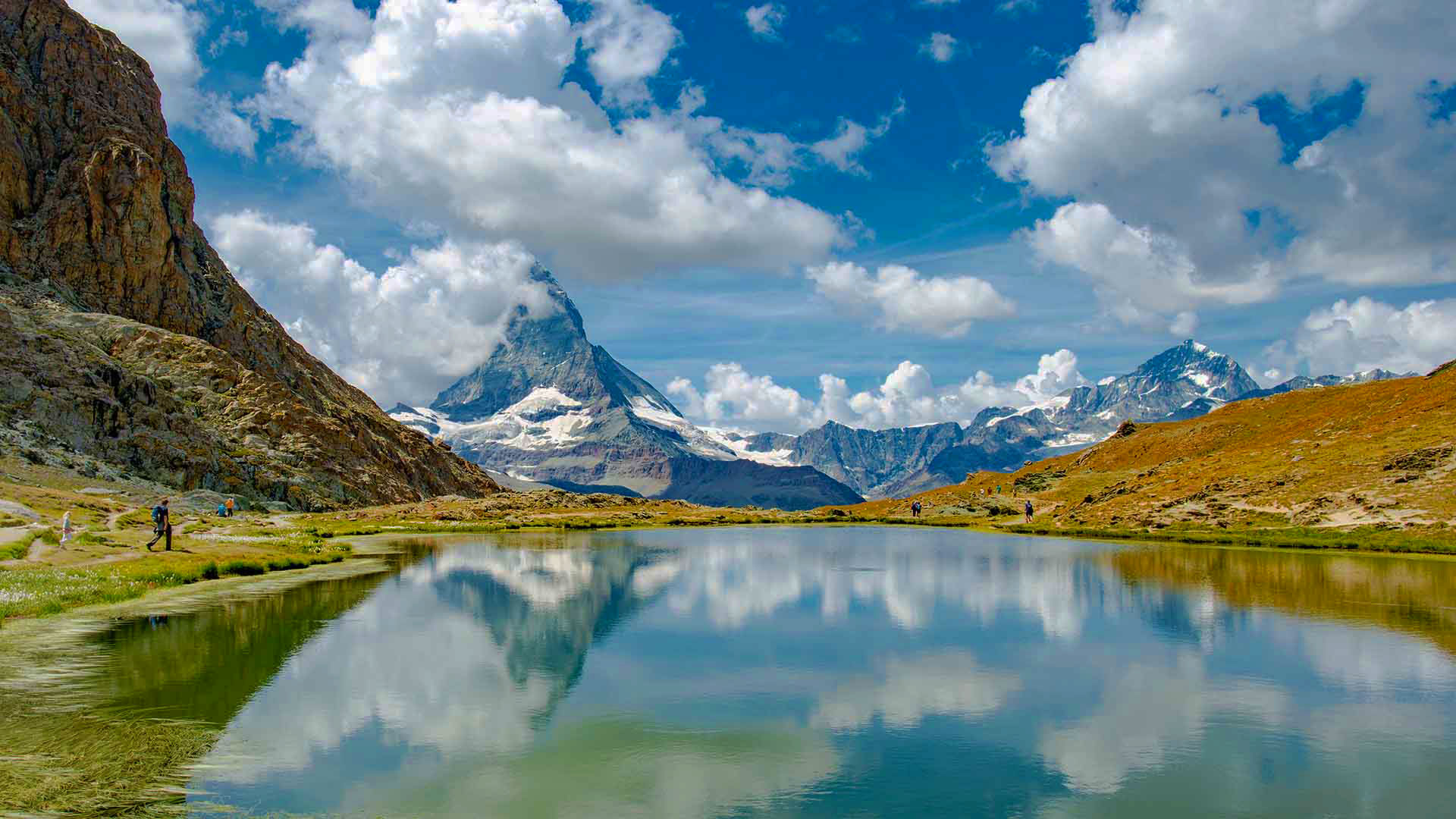
Altitude: 4,478 metres (14,692 feet)
Where better to start than with the Matterhorn? This jagged summit is easily one of the most famous peaks in the Alps. If you’ve tried Toblerone, you probably already know that its steep, rocky sides inspired the shape of this iconic triangular chocolate bar.
Visit Zermatt, and you’ll get striking views of the mountain from the town itself. For a closer look, take a cable car to Sunnegga. From here, you could follow way-marked hikes to beautiful lakes including Stellisee and Leisee.
Or why not ride the historic Gornergrat Railway? Completed in 1898, this electric train will take you from Zermatt up to an altitude of 3,089 metres (10,134 feet). Picture yourself gliding through pine forests and pretty meadows admiring the Matterhorn as you go.
Once you arrive, the scenery only gets better. From the ridge at Gornergrat, you’ll glimpse the mighty Dufourspitze – another must-see mountain – and the dramatic Gorner Glacier.
No matter whether you’re in Zermatt or hiking nearby, with the Matterhorn as your dramatic backdrop, you’ll want your camera handy.
- Related: Switzerland in summer – What to do and where to go
2. Jungfrau
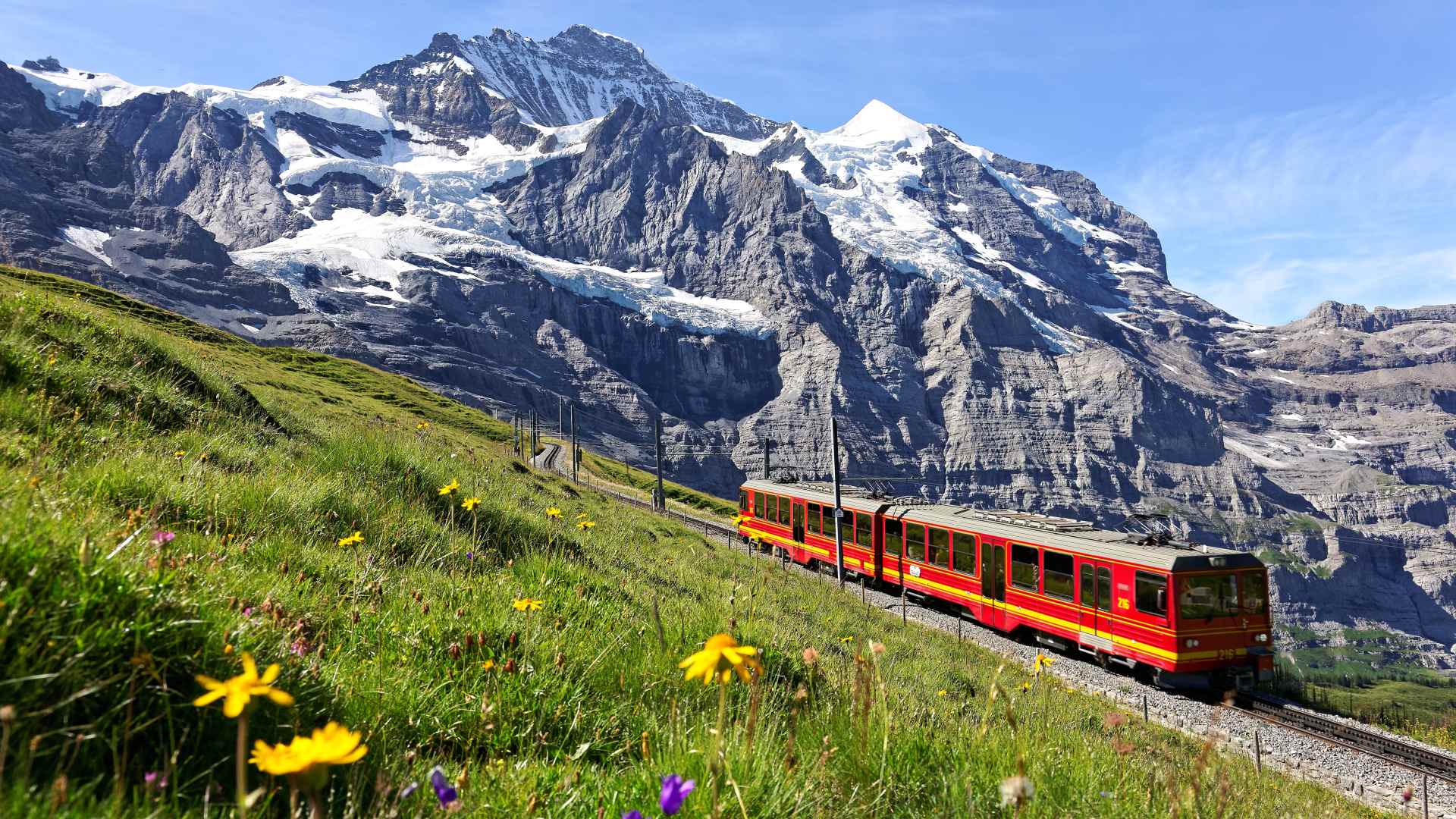
Altitude: 4,158 metres (13,641 feet)
The Jungfrau lies at the heart of the Jungfrau-Aletsch UNESCO World Heritage Site . This is just one of 4 natural UNESCO sites you’ll find in Switzerland.
The best way to get up close to the mountain is by riding Europe’s highest-altitude railway to 3,454 metres (11,332 feet) above sea level.
When you arrive at Jungfraujoch – also known as the "Top of Europe" – you’ll soon discover that this is no ordinary train station. Perched on a ridge below the Jungfrau’s summit, this is surely one of the world's most breathtaking stations.
As well as a viewing platform with a jaw-dropping outlook there’s an ice palace, multimedia experience, restaurants and a Swiss chocolate shop.
- Check out these Swiss travel packages and start planning your trip
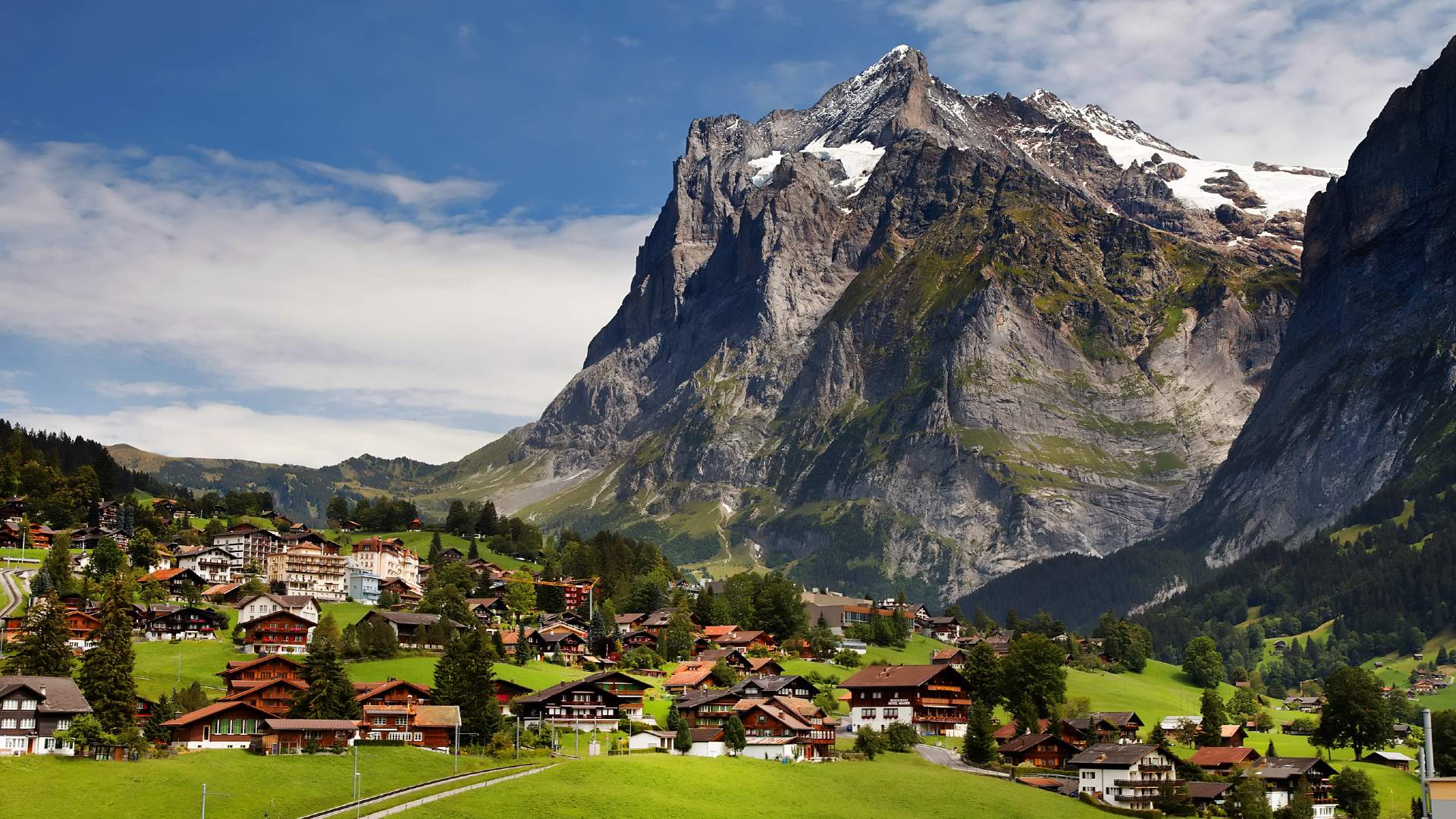
Altitude: 3,967 metres (13,015 feet)
Unlike the neighbouring Jungfrau, there’s no train to take you up the Eiger.
But for skilled mountaineers, there are still a few ways to get to the summit. The toughest of these routes can be found on the mountain’s infamous north face.
To see the Eiger for yourself, venture to the charming village of Grindelwald. Or hop on the train to Kleine Scheidegg, where you can hike below the north face.
As you’ll discover, it’s not just the high altitudes and mountaineering legends that add to the wonder of the place. The Eiger also overlooks the astonishing Aletsch Glacier. This immense river of ice is the largest glacier in the Alps.
4. Dufourspitze
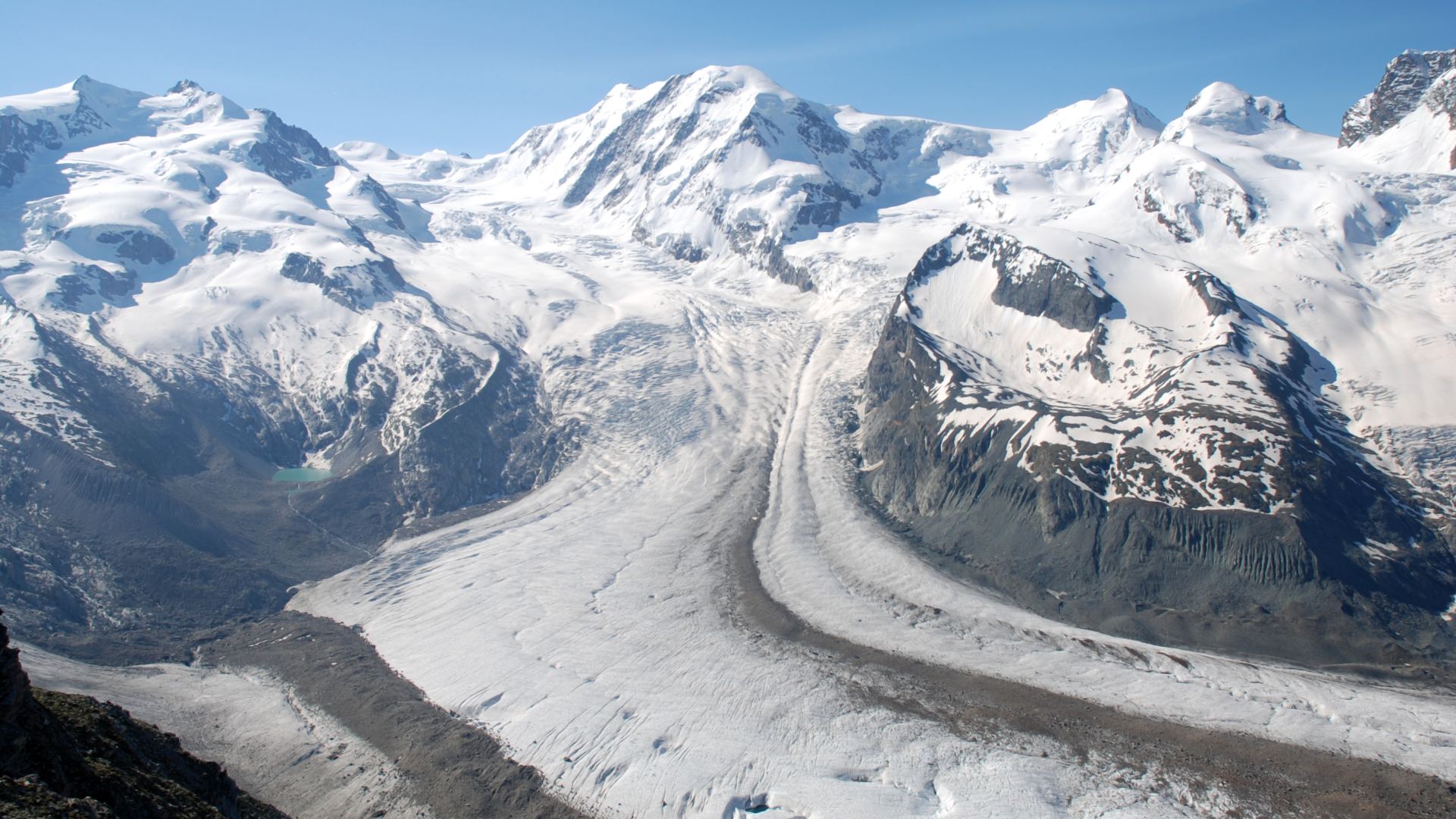
Altitude: 4,634 metres (15,200 feet)
The second tallest summit in the Alps mountain range is the Dufourspitze, located on the Swiss-Italian border.
It’s part of an enormous massif – or group of mountains – called Monte Rosa, which includes some of the highest peaks in the Alps. At 4,634 metres (15,200 feet) tall, Dufourspitze is the loftiest point on the massif.
Fun fact: You might assume the name Monte Rosa means “pink mountain”. But “rosa” actually comes from an old word in the local area meaning “glacier”.
- Related: Fun facts about the Alps
5. Mont Blanc
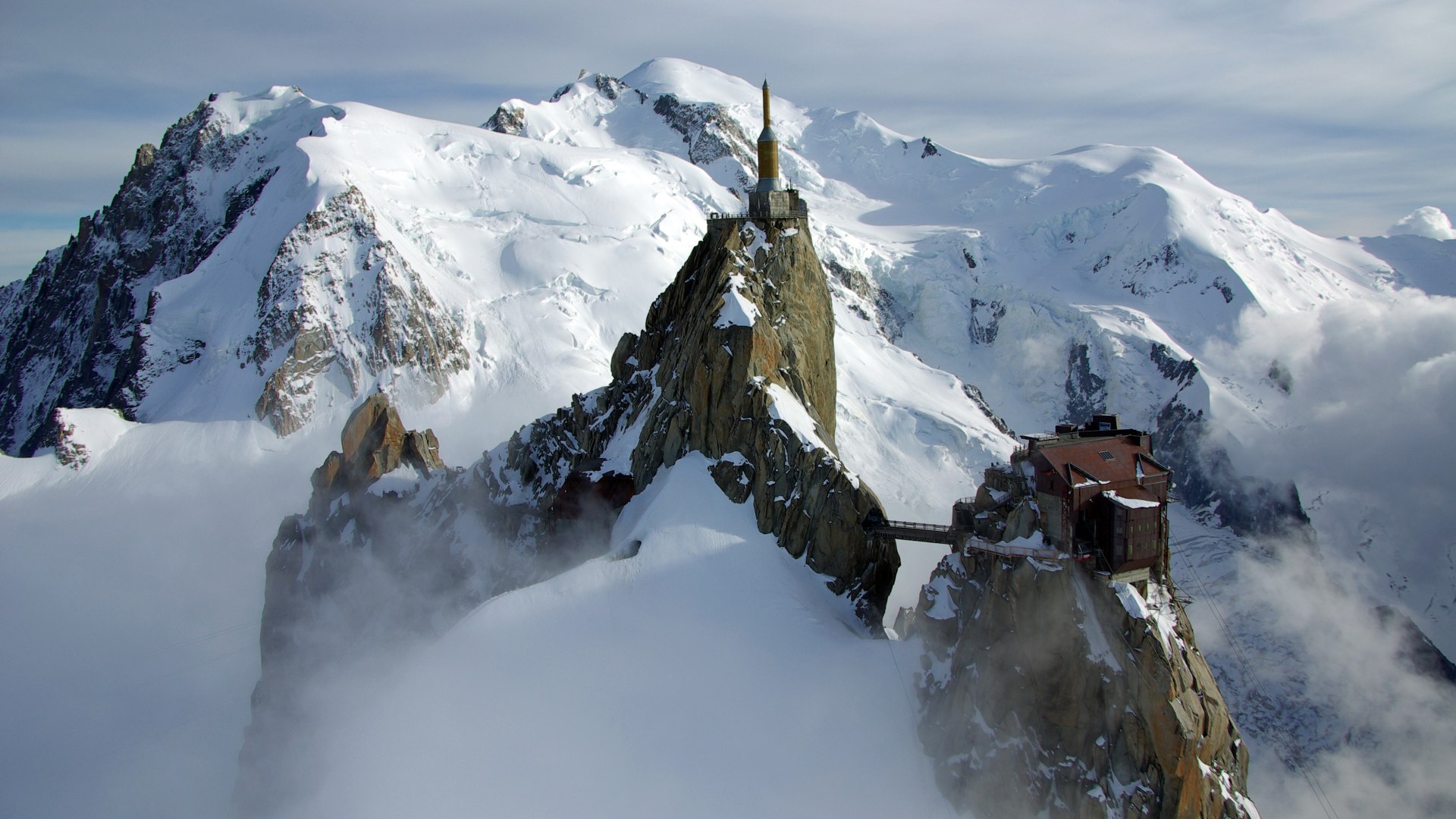
Altitude: 4,806 metres (15,768 feet)
No round-up of Alpine peaks would be complete without Mont Blanc, the highest mountain in the Alps. Straddling the border between France and Italy, and reaching over 4,800 metres (15,748 feet) above sea level, Mont Blanc is an awe-inspiring sight.
For unrivalled views of Mont Blanc, head for the French town of Chamonix. From here, you can take a cable car up to Aiguille du Midi, a nearby summit at an altitude of 3,842 metres (12,605 feet). Panoramas of the French, Italian and Swiss Alps await.
On a clear day, you can also glimpse Mont Blanc from the shores of Lake Geneva.
Fun fact: The whole Mont Blanc range was once called the “Montagne Maudits”, or “Cursed Mountains”, thanks to the local legend that demons and goblins lived there. Nowadays, just a single mountain – Mont Maudit – has that name.
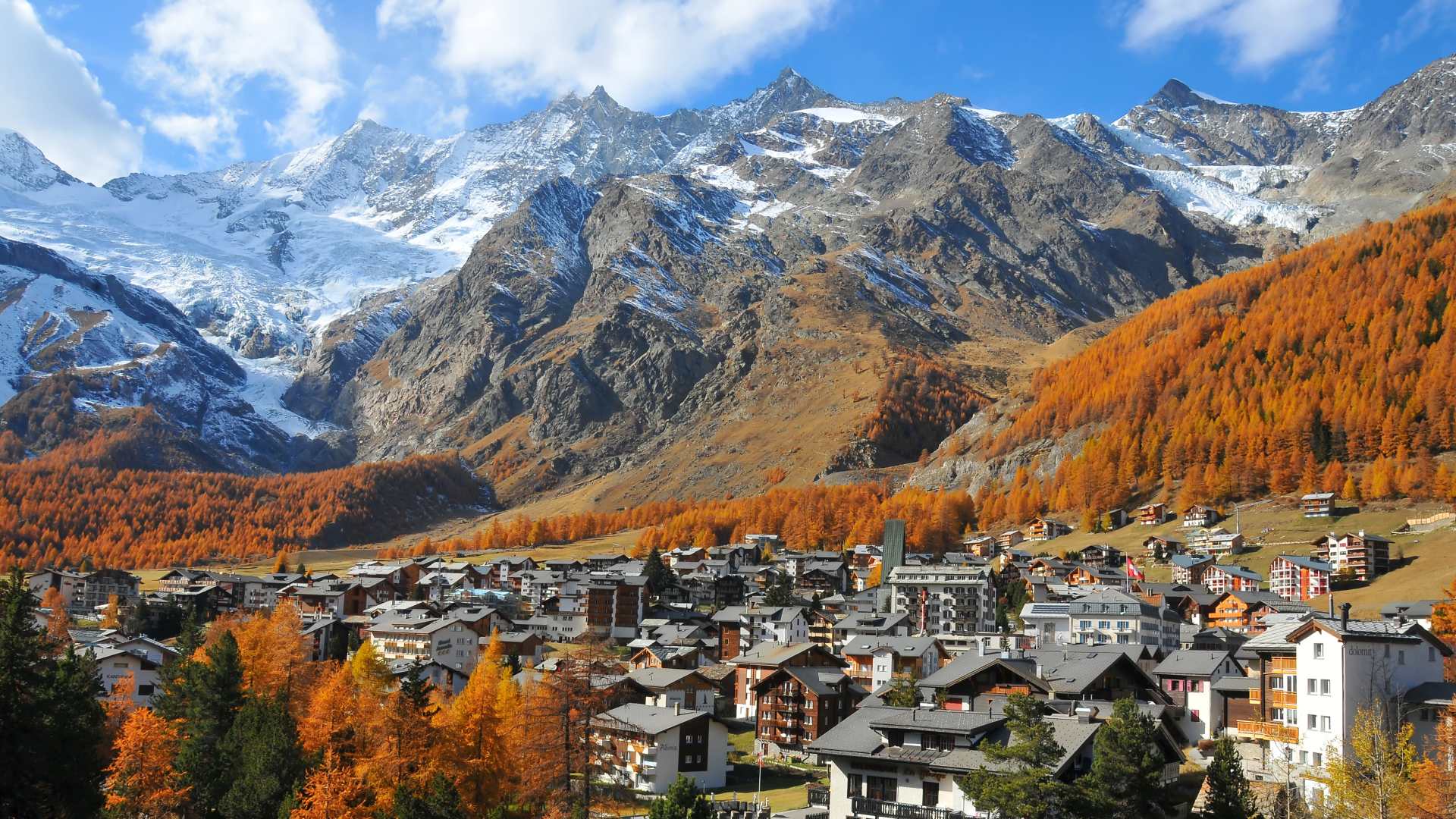
Altitude: 4,545 metres (14,911 feet)
Go south from the Eiger, and you’ll find the Dom. Part of the dramatic Mischabel massif, it’s the third-highest mountain in Europe and the tallest peak in Switzerland not shared with another country.
Head to the historic town and ski resort of Saas-Fee for uninterrupted views of the mountain’s rugged crest.
Fun fact: This is one of the coldest places in Europe where a flowering plant has ever been found. The plant is a type of purple saxifrage that grows in locations like the high Arctic. Despite temperatures dropping below freezing every night, this hardy species survives on the Dom’s summit.
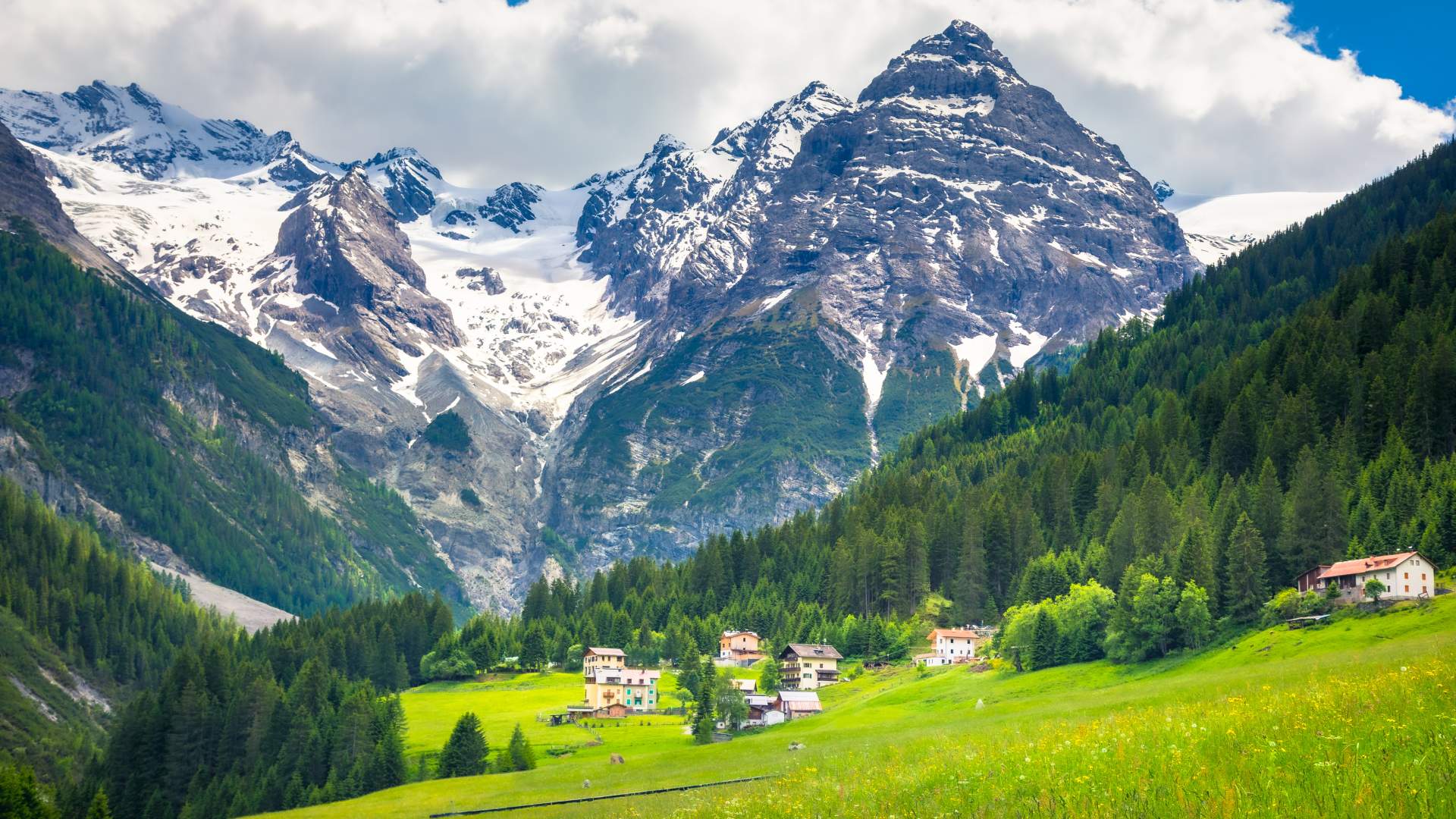
Altitude: 3,905 metres (12,812 feet)
Ortler is a glacier-topped summit in a region of the Italian Alps known as South Tyrol. At 3,905 metres (12,812 feet) above sea level, it rises high above the surrounding mountains. Take a drive over the Stelvio Pass to see its stunning skyline for yourself.
The mountain’s position close to the Italian-Austrian border means there’s plenty of World War I history to uncover in the area.
In fact, during the 1990s, 2 cannons were found near the summit of Ortler. They were used by Austrian soldiers stationed there during the First World War.
8. Tre Cime di Lavaredo
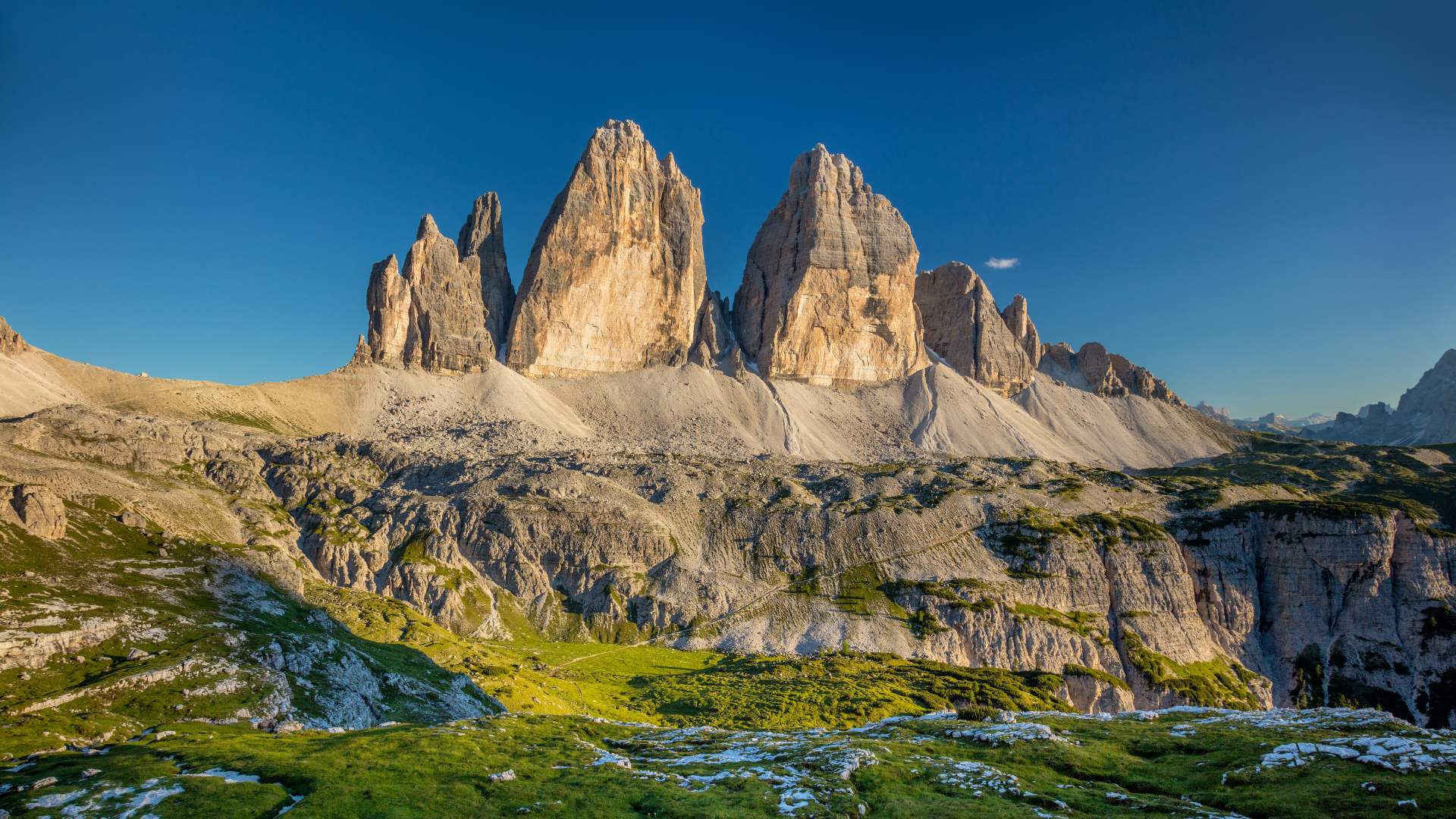
Altitude: 2,999 metres (9,839 feet)
At the eastern end of the Alps mountain range, you’ll find the Dolomites . Despite their lower altitudes, this Italian region is home to some of the most striking peaks you’ll see anywhere in the Alps.
The Tre Cime, or “Three Peaks”, of Lavaredo are probably the most recognisable. You might even have seen these photogenic pillars of rock in travel guides and magazines, or on the likes of Instagram.
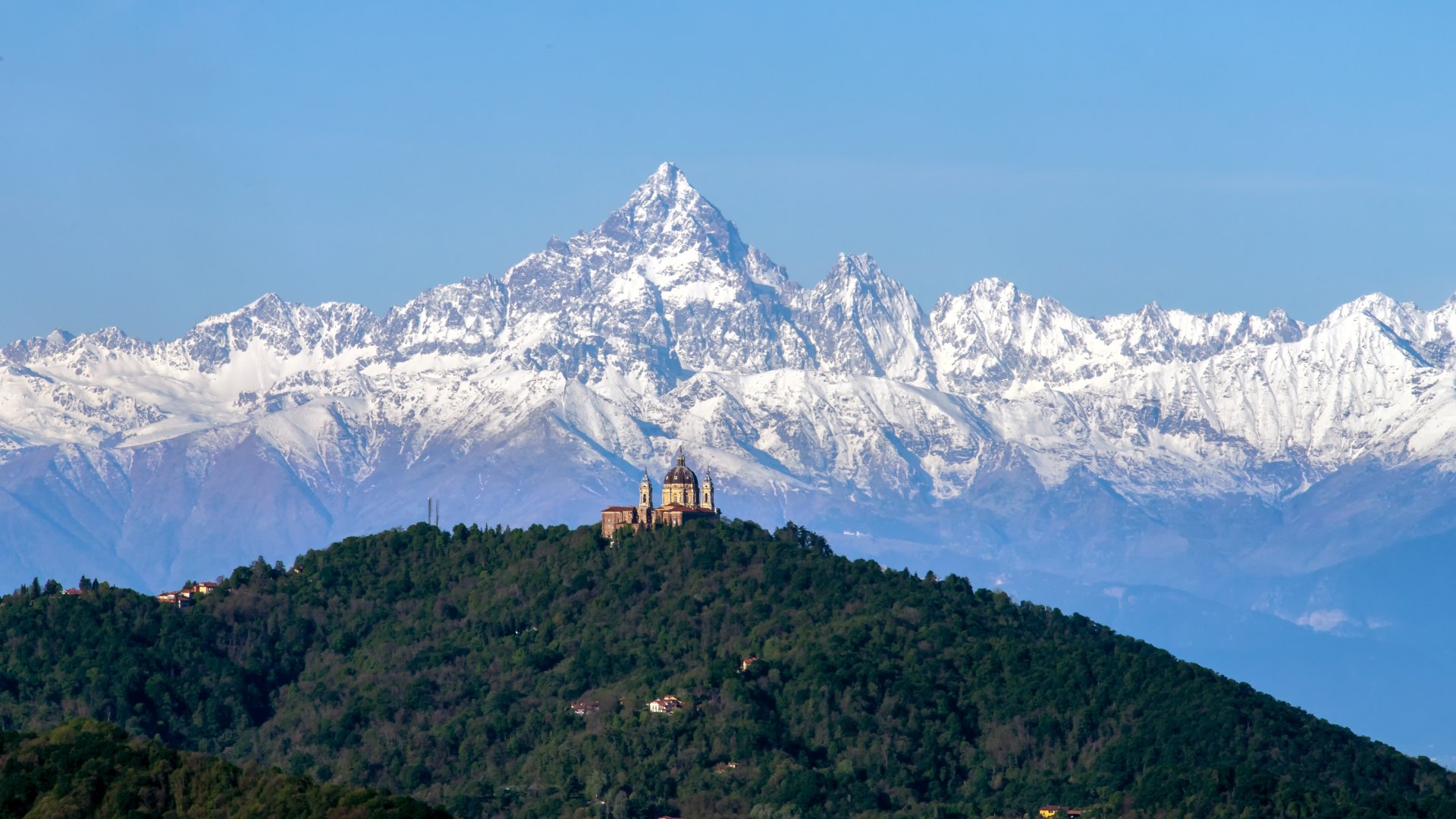
Altitude: 3,841 metres (12,602 feet)
Monviso is one of the most distinctive peaks in the Western Alps. On a clear day, you can often pick it out from hundreds of kilometres away. Look out for its pyramidal shape, towering over the landscape.
Fun fact: If you think Monviso looks familiar, it could be because it’s similar to the Paramount Pictures logo. While Monviso is thought to be one of the mountains that inspired the design, Utah’s Ben Lomond and Artesonraju in the Andes are also contenders.
- Related: Disney movies set in Europe
10. Zugspitze
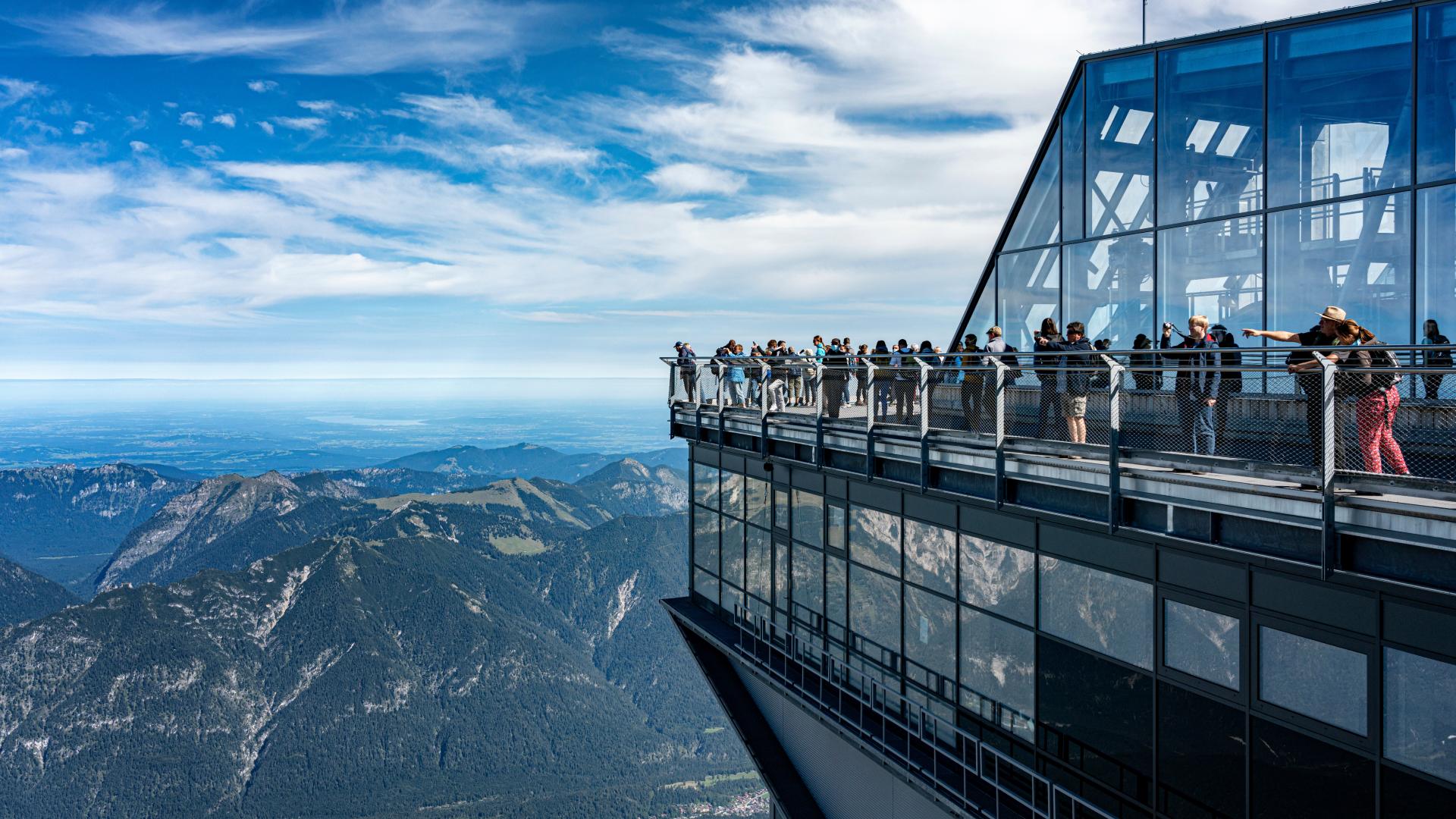
Altitude: 2,962 metres (9,718 feet)
It might be much lower than the highest Alpine peak. But this doesn’t stop the Zugspitze, in Bavaria, from being one of the most interesting mountains in the Alps.
At 2,962 metres (9,718 feet), it’s the tallest mountain in Germany. And because the Zugspitze sits at the northern edge of the Alps mountain system, the views from here are breathtaking. Some days you can see all the way to Munich, and even to the tiny country of Liechtenstein.
Happily, you don’t need to climb the nearly 3,000 metres (9,843 feet) to get to the top. Instead, take a cable car up to the viewing platform, where you’ll glimpse a glacier and the waters of Lake Eibsee.
11. Mount Pilatus
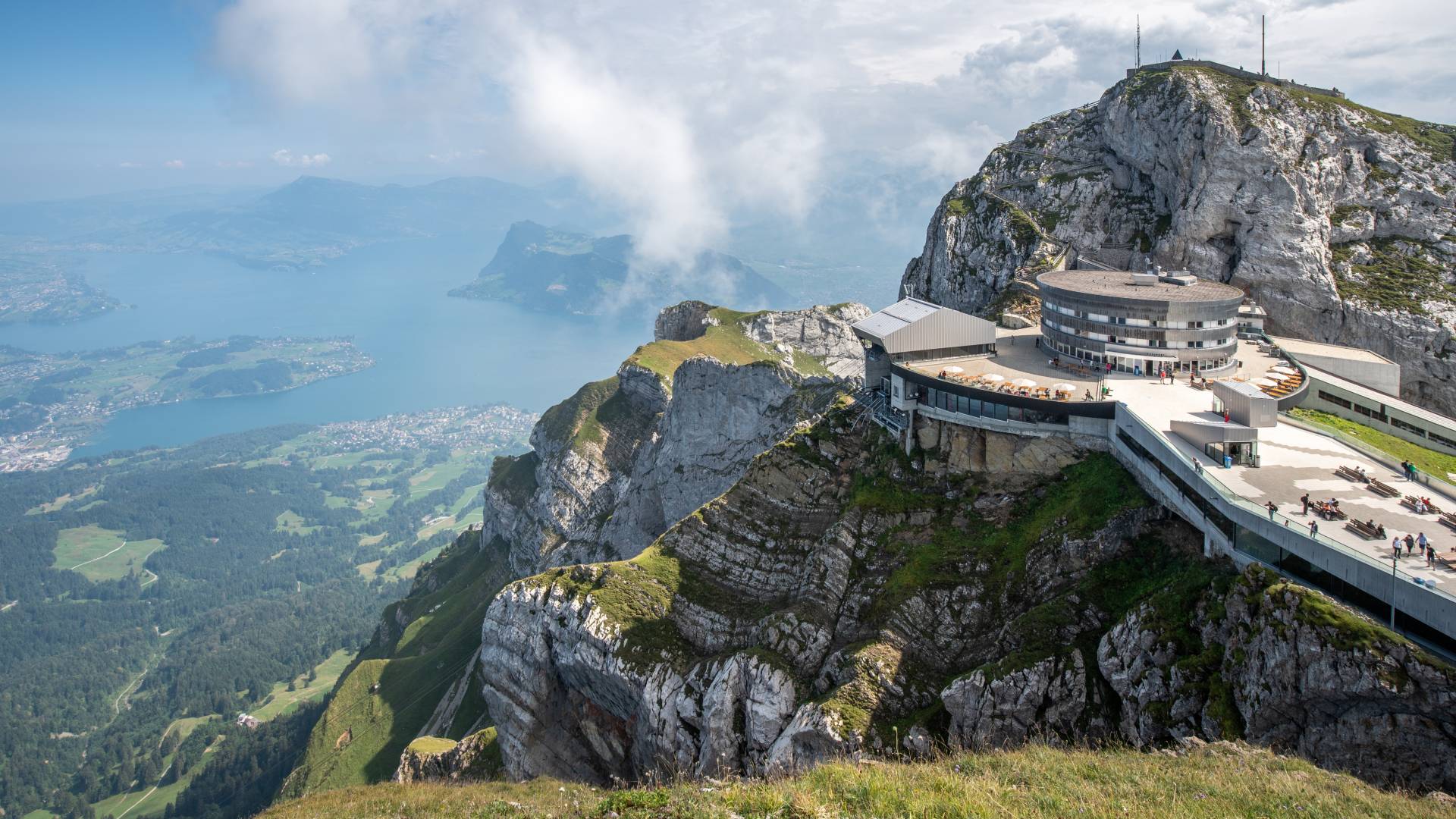
Altitude: 2,128 metres (6,981 feet)
On the northern edge of the Swiss Alps, you’ll find the craggy summit of Mount Pilatus. Venture here on a clear day and you could see as many as 73 surrounding peaks. Not to mention the beautiful blue waters of Lake Lucerne below.
If you’re visiting the medieval city of Lucerne, heading up Mount Pilatus will make for a memorable day trip. Choose between riding a cable car or cogwheel train up the mountain. Or why not take one up and the other down?
No matter how you decide to get to the top, allow plenty of time to enjoy the scenery once you get there. As well as an observation deck and multiple viewpoints, there’s a restaurant where you can try tasty Alpine dishes.
- Prepare for a road trip to remember when you embark on a European self-drive tour
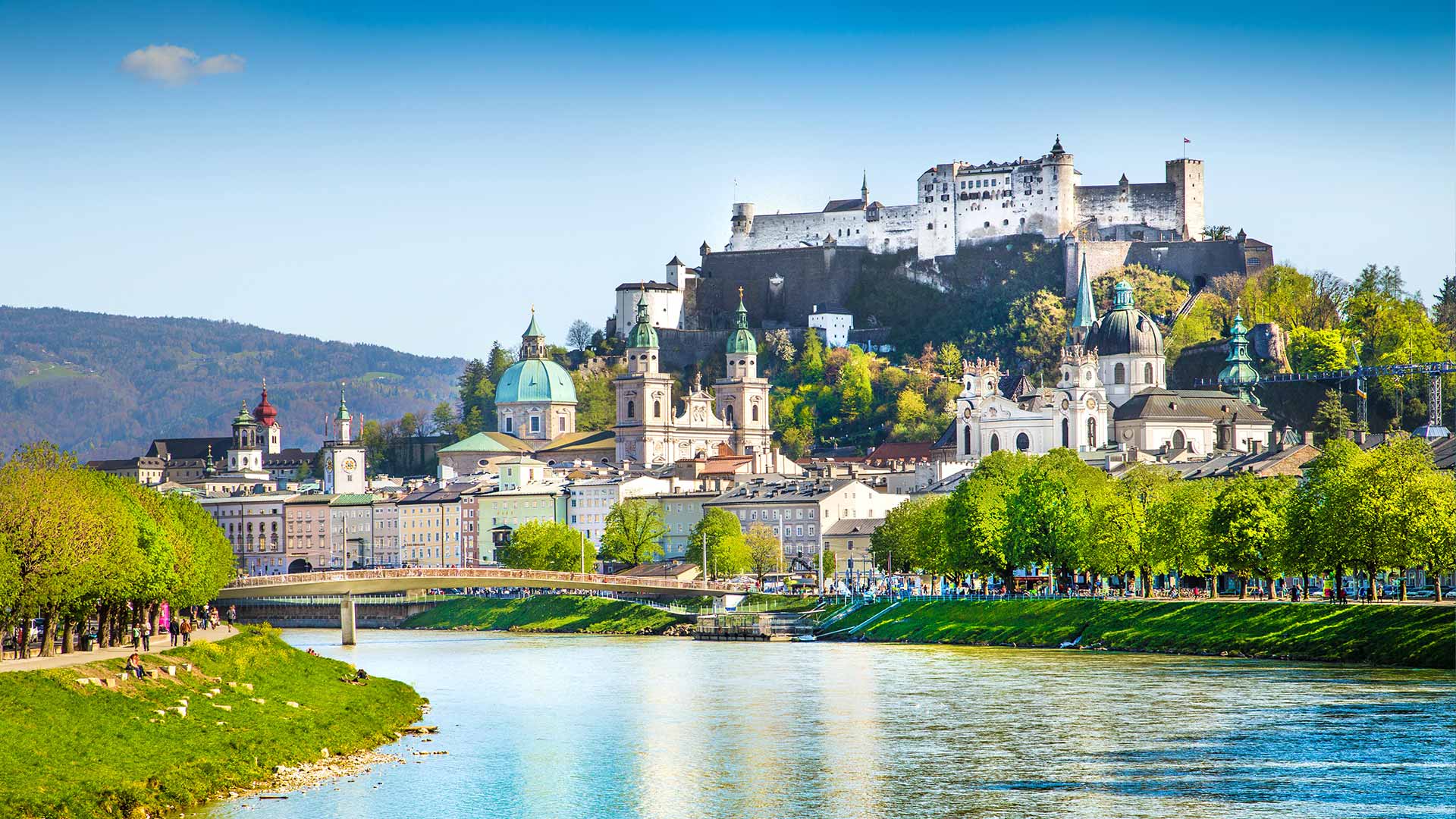
Explore the Alps with Nordic Visitor
When it comes to the Alps, snow-covered mountains are just the beginning. Venture here and you’ll be rewarded with views of turquoise lakes, wildflower meadows and rambling vineyards.
With a population of over 14 million people spread out across 8 nations, there’s lots of culture to soak up as well. You could visit medieval castles, stroll through chalet-style villages, and indulge in hearty Alpine dishes like fondue or raclette.
Choose a self-drive tour of the Alps with Nordic Visitor to experience the best of the region at your own pace. Or, pick an Alps small group tour and a professional guide will take care of the driving while sharing their in-depth knowledge with you along the way.
However you decide to explore, our travel experts will organise everything for you, including your accommodation, local transport, and any excursions.
Contact us to start planning your trip and prepare for an unforgettable Alpine escape.

Born and raised in Scotland, Catherine has a background in trip organisation and design. When not travelling, or writing about travels, you can find her rock climbing and exploring remote corners of Scotland. Her top travel experiences include cycling along India’s Brahmaputra River, wandering the souks of Marrakech, and mountaineering in the Alps.
Getting there
We'd love to give you the same amazing travel experiences as you read about in our blog! To visit the destinations and attractions mentioned in this post - and to discover a few new highlights along the way - check out these recommended Nordic Visitor tours.
GERMANY & AUSTRIA EXPRESS
- USD ($)
- CAD ($)
- AUD ($)
CLASSIC ALPS
Complete alps, related posts, 9 fun facts about the alps.
Blogs , Destinations , Guides , Switzerland , Alps
Switzerland in Summer: What to Do & Where to Go
8 best road trips in europe to add to your wish list, northern europe: best places to go in 2024.

- Australasia
- Central America
- North America
- South America
- Buenos Aires
- Mexico City
- New York City
- Rio de Janeiro
- Overwater bungalows
- Cruise tips
- Sightseeing Passes
- Attractions
- Theme parks
- When to visit where
- Backpacker Indexes
Sign up for our monthly Priceoftravel newsletter
Where to go in Switzerland on a short trip: Alps, lakes, and cities
Switzerland is an extremely popular country for those planning multi-stop tours around Europe, yet very few potential first-time visitors actually know specifically where they want to go. Everyone seems to know that it has the most beautiful views of the Alps and some very impressive cities, but there are actually many misconceptions among casual trip planners, so I’d like to clear most of that up below. The places to visit in Switzerland are not obvious until you’ve been there yourself or done many hours of research, so the list below should be a short cut.
I get hundreds if not thousands of itinerary questions for people who are considering a Eurail trip around Europe , and most people just include the word “Switzerland” among a list of cities like Paris, Rome, and Berlin that they want to visit. So where in Switzerland should you go if you can only make a few stops at most? I’ll answer that question below.
Note: This article was expanded and updated in February, 2024.
Switzerland is about outdoor views rather than city visits
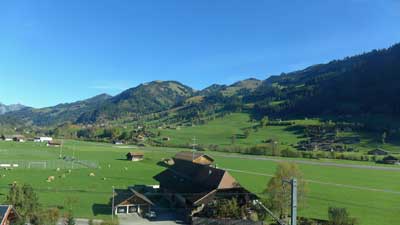
Geneva is a very famous city (though not for tourism reasons) on a lovely lake of the same name, but it’s also notoriously dull and lacking distinction. Rick Steves puts it well by saying that “Geneva is pleasantly situated on a lake, like Buffalo or Cleveland.” The point is, you don’t want to go to Geneva unless you’ve got something specific in mind that you want to see there.
Switzerland's cities in summary
Zurich – The largest city, very expensive, geared towards business travelers. It’s generally a pretty and very well-run city that you would enjoy if you visited, but it’s not nearly as interesting as the likes of Vienna, Munich, or of course Paris.
Geneva – Second largest city, in the French part of the country, no major sights. Again, if you visited you’d be very impressed by it and get some great photos, but it’s not worth your time unless you know someone there. There’s an impressive fountain in the lake and you can usually see it from the train as you go through the city, but it’s not really worth going there and staying more than an hour or so.
Basel – Bordering France and Germany, no major sights. It has the famous art market each year, and aside from that it’s even duller than the ones above. Again, if you visited you’d be impressed, but if you later compared photos with friends who went to the Lauterbrunnen Valley instead, you’d kick yourself for going to Basel.
Lausanne – Near Geneva in the French part of the country, very hilly, and certainly more interesting than Geneva.
Bern – The capital, compact, on a lovely river, some interesting sights and the best Swiss city to get a feel for the culture. Bern is fairly close to Interlaken (which we will discuss below) and it can be a great day trip from there, especially on a day where it is foggy and/or rainy in the mountains (and this happens a LOT).
How much time and which Swiss cities to visit?
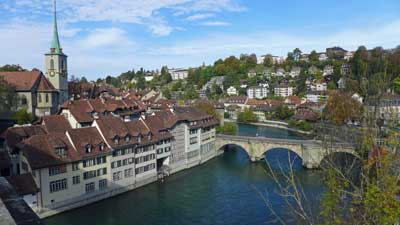
Many people (me included) don’t feel as if they’ve scratched the surface of a new country if they haven’t spent at least a day or two in the largest city. Zurich is certainly pleasant and a useful transit hub so spending one or two nights there wouldn’t be a major mistake. But Zurich isn’t even close to being a city like Paris, Rome, Berlin, Amsterdam, or even Vienna. If you skip it in favor of spending more time in the outdoors, you won’t be missing much.
The 2 Swiss places to focus on for short visits
Interlaken – If you want the best possible Alpine views and activities, head to the Interlaken area, which will be described in detail below.
Lucerne – The traditional Swiss tourist retreat, Lucerne is a small city with interesting culture and sights, that is gorgeously set on a lake with plenty of top activities surrounding it.
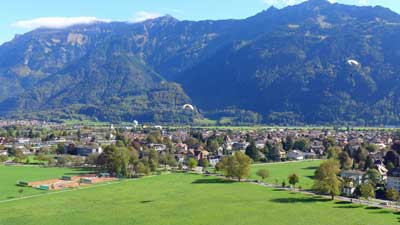
What about Zermatt for Alpine views?
Zermatt is a remote car-free village in southern Switzerland that is famous for being the place to see the Matterhorn mountain. It’s also a busy ski resort area, and aside from that, there isn’t much to see or do here. It’s on a private rail line, so it’s more complicated and usually more expensive to reach than Interlaken.
In other words, unless you’ve irrationally placed “Seeing the Matterhorn in person” on your so-called bucket list, skip Zermatt and head to Interlaken on a shorter visit. You won’t be sorry. If you already have enough time in your visit for the main sights around Interlaken and Lucerne and you want to also see the Matterhorn, then by all means go and you’ll enjoy it. There are quite a few other car-free villages in the Lauterbrunnen Valley near Interlaken, so they are not as novel in Switzerland as one might expect.
A weekend in Switzerland?
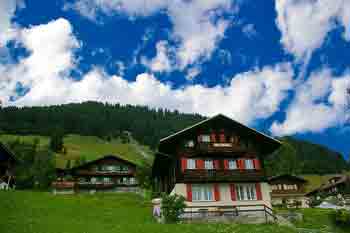
One challenge is that neither has an international airport so you’ll either be flying into Zurich or perhaps Geneva.
Train times from Zurich to Lucerne to Interlaken and back
- Zurich Airport to Lucerne: 1 hour 10 minutes by train
- Lucerne to Interlaken: 2 hours by train
- Interlaken to Zurich Airport: 2 hours 15 minutes by train
As you can see with the travel times above, Zurich Airport to Lucerne is a fairly short trip, but once you add Interlaken into the mix (even if you skip Lucerne) the travel time starts to add up for a weekend visit. With this in mind it’s probably best to just choose one of them and save the other one for another trip.
Lucerne is gorgeous, but the Lauterbrunnen Valley near Interlaken is really the star of the show, so I’d recommend going there first and doing Lucerne on another trip.
What about the Swiss Travel Pass?
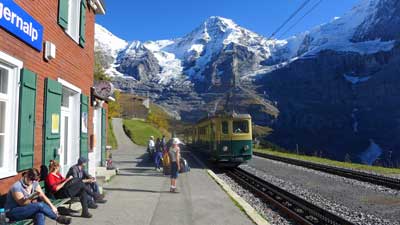
The bottom line is that if you are coming to Switzerland for at least 3 days and you want to take 2 or more of the amazing scenic rail journeys that the country is famous for, the travel pass is probably a good deal. It also provides 50% discounts on the Schilthorn cable car and 25% off the Jungfraujoch mountain railway. Both of those are quite expensive on their own, but extremely worthwhile, so the discount is helpful.
The Half Fare Card is probably a better deal for most people
The Swiss Travel Pass is a good deal for those who are going to be spending at least 2 or 3 days riding the rails and seeing Switzerland that way. But if you are mostly going to be focusing on Interlaken and Lucerne and the mountain sights, the Half Fare Card is the best option. For CHF120 (about US$134) you get the card that is good for 30 days and gives you a 50% discount on all trains, cable cars, mountain railways, and other sights and attractions. If you are doing either Schilthorn or Jungfraujoch, the Half Fare Card practically pays for itself with just one of those.
>>> Buy the Swiss Half Fare Card
Many people have questions about the Swiss Half Fare Card so I will explain it a bit here. You can actually buy half price train tickets for travel within Switzerland any time you want and you will see that option when you go to buy them online. The only thing is you have to have and present a valid Half Fare Card when you get on the train and are asked to see your ticket. In other words, you can buy a half fare train ticket today and buy a Half Fare Card just before you get on that train months in the future, and you are fine.
How and why visit the area around Interlaken
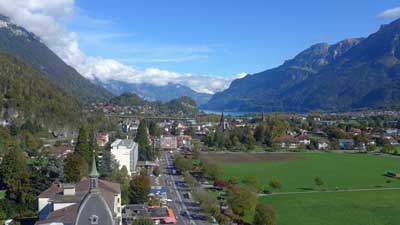
You can see everything discussed below by actually staying in a hotel in Interlaken, but it’s not the Alpine experience that you get if you stay in one of the small villages nearby. You can reach those villages in 20 to 40 minutes from the Interlaken Ost (East) train station, and it’s much easier than it sounds.
The 3 best places to stay to visit the Swiss Alps
Lauterbrunnen – A private train line runs from Interlaken Ost station to the end of its line in Lauterbrunnen. There’s a lovely waterfall here and great hiking trails, but you should probably only stay here if you can’t get to one of the villages mentioned just below. It’s a great little transit hub and it’s definitely gorgeous, so it can be worth a night if you’ve got one to spare.
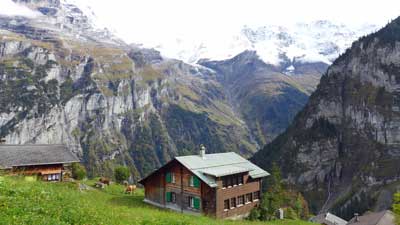
The unforgettable things to see here (if the weather is decent)
Schilthorn observation deck and restaurant.
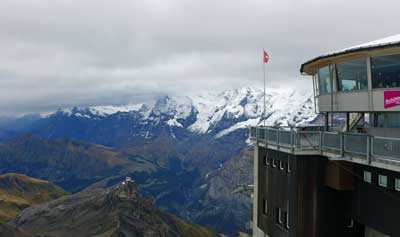
There is a rotating restaurant (with prices similar to normal Swiss restaurants) and a bizarre and anachronistic James Bond attraction based on it being a key location in the 1969 movie On Her Majesty’s Secret Service . The Bond thing is included with the lift, and it’s worth a look.
But the main thing you come here for is the 360-degree view from one of the highest peaks in Europe. Again, the weather here is key, but fortunately all the locals track the visibility on a minute-by-minute basis. If it’s clear up top while you are in the area, it would be a terrible shame to skip it based on the high price. But even if it’s cloudy up top, there are still plenty of wonderful things to see and do in the villages below.
Jungfraujoch observation area

The views from the top are similar to the views from Schilthorn, from the other side of the Lauterbrunnen Valley. Once on top you can have lunch, hike, or even go sledding. It’s also quite expensive at nearly US$200 round-trip unless you have a Swiss Pass or a Eurail Pass for discounts, and it takes most of your day, but you’ll never forget the views from the top.
Harder Kulm mountain and Two Lakes Bridge Observation Deck
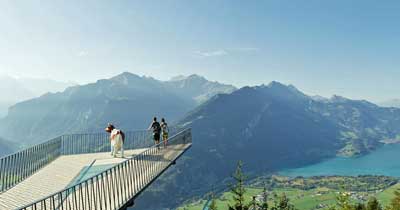
There’s a revolving restaurant about 10 minutes’ walk from the station at the top, which is definitely an unforgettable place for lunch if you’ve got time. It’s not as expensive as you might expect, at least compared to normal restaurants in Switzerland.
The Harder Kulm Railway goes from early April through late November each year. If you are only in Interlaken for one day and/or you are on a strict budget, this is the fastest and best way to get amazing Alpine views in the area.
Getting from Interlaken to Gimmelwald and Mürren
Getting up to these villages sounds complicated and time consuming, but it’s actually fast and easy once you get there. This little guide should help.
Arrive in Interlaken
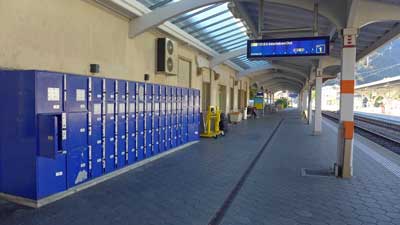
Once you arrive at the Interlaken Ost train station, head for the ticket windows in the office and buy a ticket to your final destination (Lauterbrunnen, Gimmelwald, or Mürren). Eurail passes are good for 25% discounts on the rest of the trip, but not for the whole thing.
From Interlaken Ost to Lauterbrunnen
The private train leaves Interlaken Ost every 30 minutes and arrives in Lauterbrunnen 20 minutes later. If you are staying in Lauterbrunnen then you are probably walking distance from your hotel when you reach the station.
From Lauterbrunnen to Gimmelwald
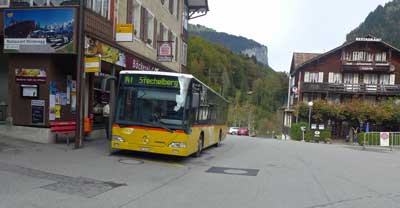
Gimmelwald to Mürren
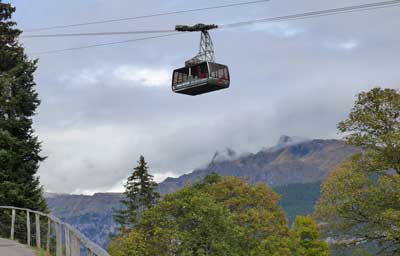
Recommended hotel and hostel in Gimmelwald
I get asked all the time about where to stay in Gimmelwald, so here it is:
Hotel : Esther’s Guesthouse
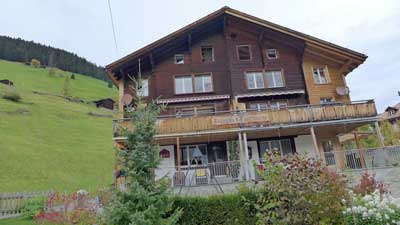
It’s run by Esther, as you might guess, and she is very friendly speaking excellent English. Each room is different and the place feels like a mountain cabin, because it is. She offers an excellent buffet breakfast in the morning, which you have to order the night before. It’s not cheap, but it’s worth it because it’s hearty and there are no other good options nearby.
Book as early as possible because this place is often the first place to sell out in Gimmelwald.
Hostel : Mountain Hostel Gimmelwald
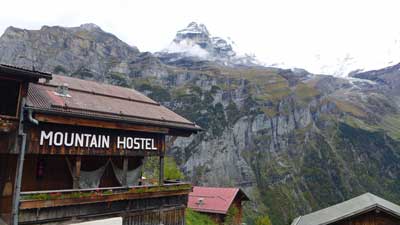
You won’t believe the views from this place, which are the same as from Esther’s except a bit lower and more unobstructed. This place also has a busy bar and restaurant that is basically the only “nightlife” in Gimmelwald. Many hikers get to bed early in this tiny village, but if you want to have a couple drinks and order a pizza or some local options, this is the place to go.
Again, book early because this place is always sold out.
Lucerne and what to do there
Luzern, as it’s spelled locally, is the other traditional holiday destination in Switzerland. Unlike Interlaken, Lucerne actually qualifies as a small city rather than a small resort town, so it’s a very nice contrast and very worthwhile.
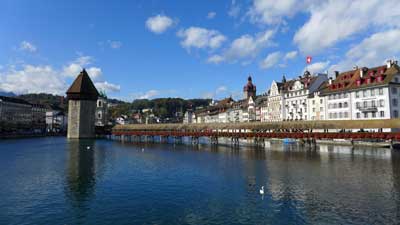
However, unlike Interlaken, the town of Lucerne itself is a great attraction and worth at least a day of exploration. This has always been a rich area so you can expect to find all of the high-end shops and boutiques along the small streets just north of the lake, but there are also many traditional shops and things to see that will appeal to anyone.
Recommended hotel in Lucerne
>> Hotel Des Alpes (3 stars with an amazing location and view)
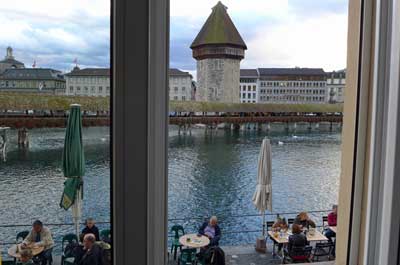
If this place is booked, which is often the case, then book a hotel as close to it as you can find or afford. The whole historic part of town surrounding it is lovely, with restaurants, bars, and high-end shops. There are also a couple of nearby supermarkets where you can buy inexpensive alcohol and picnic supplies to keep other costs down.
Spend a day in Lucerne itself
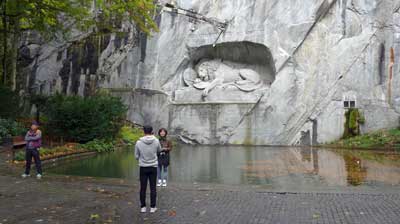
Most of the interesting part of Lucerne is in the area behind those restaurants, and it’s certainly worth doing a self-guided walking tour if not a guided one. Heading farther east you’ll come to another older part of town where the famous lion statue is located. You can’t visit Lucerne without having a look at the lion, and fortunately it’s easy and quick to reach (and it’s free).
Take a lake cruise of some kind
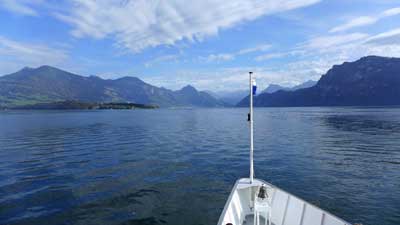
Especially in nice weather, even the short lake tour is lovely, and if you have more time you can jump off at Vitznau and do the scenic hike up Mount Rigi. There are also small lakeside villages that are ideal for a stroll and lunch stop. Long story short, there are dozens of interesting sightseeing options that are available using part of the boat tour, and the views all around are wonderful.
Visit Mount Pilatus
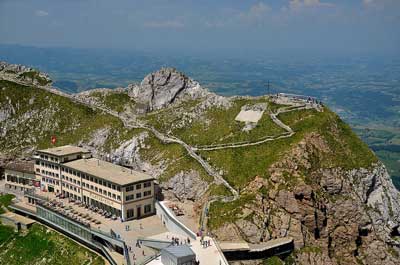
You can take the cogwheel train up and have a more or less flat hike around the summit area, and then take the gondola and cable car back down again. You can do them in the other order, and the cost is the same either way. At around US$65, this is not a cheap hike, but like most everything in Switzerland, the quality is high so it doesn’t feel like a rip-off. You can reach the cable car in 10 minutes on a public trolly bus from Lucerne.
Visit Mount Rigi
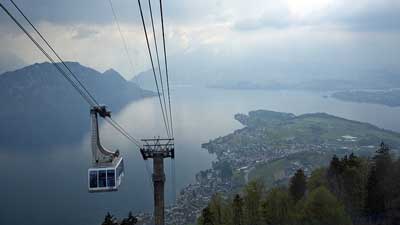
Unlike the other peaks mentioned in this article the Swiss Travel Pass covers both ways to get up and down for free. The others are 50% off with the Swiss Travel Pass or Half Fare Card, except for Jungfraujoch, which is only 25% off with the Swiss Travel Pass and still 50% off with the Half Fare Card.
Visit Mount Titlis
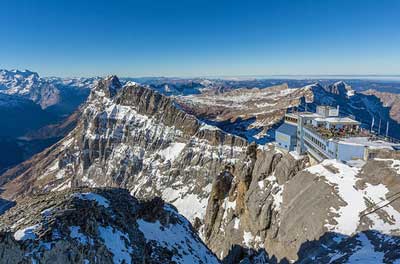
You can reach Titlis by taking a 43-minute train ride from Lucerne to Engelburg and then taking the cable car up from there. As with the others, it’s wise to check the weather immediately before you are going to depart because it can be foggy or cloudy any time of the year, but usually not for whole days at a time.
Additional photo credits
Jungfraujoch by cupweuro on Flickr , Pilatus by Tony Fernandez on Flickr , Rigi by Kosala Bandara on Flickr , Titlis by PaulSchliebs on Flickr
OTHER POPULAR POSTS
Leave a reply cancel reply.
Your email address will not be published. Required fields are marked *
Where to go in Switzerland on a short trip: Alps, lakes, and cities " --> All Comments
Hi Roger, Thank you for all the valuable tips about Swiss Travel Pass and where to stay on a short visit.
This will be our 1st and only trip to Switzerland. We will be flying into Basel airport, April 15 evening and staying in an Airbnb in Egolzwil, Lucern till April 21 flying out of Zurich back to Canada. Can you please suggest realistically what duration of days I should buy the STP for and I would like to see at least 1 of the alps, likely Jungfraujoch.
Any other itinerary suggestions from you would be GREATLY appreciated.
Many thanks Betsy
I’m not really familiar with Egolzwil, but I see it on the map and I’m sure it’s nice. Since you won’t be staying too close to Lucerne or Interlaken I would think that the Swiss Travel Pass would be even more valuable on your trip. In other words, you’ll be riding trains every day just to get to the sights. I’d probably look at the 6-day pass and then probably use it from your first day as I’d think Basel to Egolzwil would be more expensive than Egolzwil to Zurich Airport, although I could be wrong. And depending on what time your flights are, you might just opt for the 8-day version as it’s only 30 CHF more so if you plan on doing a bit of sightseeing on your arrival day and your departure day, it would save money.
Jungfrau only gets a 50% discount with the pass, but most of the trains to get there are included and it’s definitely worth it. You can also easily visit Rigi or the other peaks closer to Lucerne pretty easily. And definitely plan at least two days in the Lauterbrunnen Valley or even three if you include Jungfraujoch. It’s the most dramatic scenery in the area and there are various cable cars and mountain trains that you can take, and most or all of those will be included with the pass. I hope this helps and let me know if you have any other questions. -Roger
Comment* Thank you Roger!
I do have a follow up question, regarding the STP panoramic train routes.
In particular the shorter routes- Lötschberg Mountain Railway the GoldenPass, Voralpen-Express and Emmental route. Are these return trips? Is there a full day route you would recommend instead so we have exposure to other areas in Switzerland? It’s unfortunate the Chocolate scenic route opens only in May.
We have 5 full dates to explore. April 16-20. We will do Schilthorn 1 day and surrounding below valley hiking and 1-2 days in Lauterbrunnen Valley as you suggest and 1 day in Lucerne.
Your comments and suggestions are appreciated.
This article was very useful and direct. If we have 4 nights in Switzerland pre-cruise (3 full days since the first and last days are transit days), would you recommend going straight to Mürren or splitting time 2/2 nights between Lucerne & Murren. We fly mid day into Zurich from the US and the cruise departs from Basel.
I’m glad it was helpful. That’s a tough call. I think two days in the Lauterbrunnen Valley and one day in Lucerne is probably more interesting than 3 days in the valley, so if you don’t mind the extra (also gorgeous) train trip to Lucerne, I would do it that way. That said, there is a lot to do and see around Murren so I’m sure you’d enjoy it if you stayed. The town of Lucerne itself is a real highlight so you can’t go wrong either way. I think if you have the energy and budget to add a day in Lucerne, do it. -Roger
Excellent work and very helpful,thank you.
Il be in Athens this nov and wondering if it’s worth to make a trip/stay to gimmelwald/murren/the peaks end of Nov. Does the cable cars and trains operate all year?
Thanks and Regards, Pradeep
That is a very interesting question. The Schilthorn cable car shuts down for a month or so each autumn for maintenance and this year it looks like it’s going to be 14-November through 9-December, and that includes that portion from the valley floor up to Gimmelwald and Murren. Even the funicular that goes up to Murren from a different place will be shut down from mid October until 9-December. Murren is a fairly large village and it looks like they have a back-up cable car for freight during the scheduled closings. Anyway, it unfortunately is not a good time to visit those villages.
On the other hand, Wengen and Grindelwald are similar villages on the other side of the valley and they are accessible all year round. And the Jungfraujoch railway to the “top of Europe” runs every day of the year, so that is an interesting alternative. Personally I find Gimmelwald the most charming of the villages because it’s so tiny, but they are all gorgeous and amazing so I think you’d enjoy it. I hope that helps. -Roger
Thank you so much. Helps immensely with my planning.
If I take the global train pass, Is the half fare card or swiss travel pass still worth it?
Thinking to cover Italy, France and swiss and hence the question. Il mostly fly into Naples and then by train everywhere else.
Regards, Pradeep
Thanks for the amazing information. I actually been in Switzerland couple of times but only passing by. I used to sky in Tignes, Val D’Isére, 3 Valleys and really want to visit the Dolomiti one day for sure. I haven’t skied for more than 10 years but i want to take my other half and her son which is also ten years old to see the mountains. They not even seen snow before! I’m very tight on schedule and booked for late November, wanted to go to Aguilli du Midi in Chamonix (closed for maintenance) and then Interlaken, Jungfrau and Zermatt on the way back but just don’t have the time. I arrive in Geneva at 11:00 in the morning in a Friday and go home Sunday 16:30 flight to Portugal. So still don’t know if i hire a car and go Interlaken, Jungfrau and Zermatt or train or another itinerary. We are going in this off season so it’s quiet and cheaper. Don’t know about the passes, that’s why if better by car or train. I just want then to feel the mountains, get the Alpine feel and Majestic of the Alps that i miss so much. I just wish i had more time but that’s it, maybe in March we all go skiing! As a conclusion i don’t want then to be really tired but to enjoy these 2.5 days let’s say. Thanks and keep the amazing experiences coming and the help to the community. All the best from Portugal.
I’m glad you have enjoyed the information. As you’ve discovered, this is a tricky situation. Mid October through November is considered the off season in the Swiss mountains and most hotels and restaurants close down during this period. This is because it’s too cold for hiking and most other outdoor activities, and there usually isn’t enough snow for skiing yet. I believe most ski lifts traditionally start in the first week of December each year. I suppose there is a chance of early snow and an early ski season, but probably even a better chance for a late start to the season.
That said, there is snow all year round on the tops of the highest peaks, including Jungfrau. So you can take the Jungfraujoch railway and it will be plenty of snow on top. And there is a decent chance that there will be at least some snow in Murren and Grindelwald. It’s also true that some hotels and restaurants will be open during this period, so if you can get a reservation you should be fine and the crowds will be very small.
I know less about Zermatt and I highly recommend the Lauterbrunnen Valley near Interlaken in general because there is far more to see and do there. I’d take trains, which in Switzerland usually don’t struggle in poor weather, while driving can be tough if you get unlucky. It can be foggy or cloudy at the tops of the peaks any day of the year in Switzerland, and that obviously means November as well. Another nice thing about the Interlaken area is there are things to do in town even if the peaks are cloudy (there is no point in paying a lot to go up Jungfraujoch or Schiltorn if it’s foggy up there), and you can also take a train to Bern in 60 minutes, which is another worthwhile city to visit. I hope this helps at least a bit and let me know if you have any other questions. -Roger
Hello Roger, while doing research on traveling to Switzerland, I found your site and am loving all of the wonderful information. I am in the midst of planning my 50th birthday trip (Dec. 4th) (originally planned for Antarctica but canceled due to covid).
I’m concerned because I see that many places may be close during the dates I would like to travel. My plan was to go 7 days. I would prefer being in Switzerland during my birthday but could travel a little later. I have to be back to the states by Dec. 15th so I have basically a window of November 26 – Dec. 15th. I would love to see maybe a day in Zurich and then the rest of the time exploring all of the natural beauty in Bern, Interlaken and Lucerne. What do you recommend in terms of dates and how to split between my cities of interest. Also, if you suggest leaving one of the cities off, which would it be? Thanks so much for your help!
I’m glad you are finding this information useful and it’s nice to get these kinds of questions again. Generally speaking, many of the smaller hotels and restaurants in the mountain villages close from mid October until mid December, but some of them stay open. They sometimes do cable car maintenance during this period as well, but I don’t think it’s on a fixed schedule. It will be chilly in the mountains in late November, yet the snow season doesn’t typically start until mid December, which is why some places close. I think you’d have plenty to do during those dates even if a couple things were closed. It’s a stunning part of the world and sometimes even nicer when the crowds are smallest.
As I often mention, Zurich isn’t very interesting (and it’s very expensive), so I’d probably leave that off. It’s not even the capital and there are really no must-see attractions. I’d spend 3 nights in Interlaken and 2 or 3 nights in Lucerne. You can see Bern on a day trip from Interlaken or spend a night there. I’m happy to help if you have more questions and let’s hope this will be a safe time to explore Switzerland this year. -Roger
Hi Roger, Your expertise and input is very much appreciated. We are 6 people traveling next August from Dublin. If we fly into Zurich, how long are the train rides to travel to Interlaken, Lucerne, etc. We will have about 6 days. Any help on what the highlights should be? Thank you! Joanne
From the Zurich Airport it’s only about an hour by train to Lucerne. From Lucerne it’s about two hours to Interlaken. With 6 days you’ll be able to see most of the best highlights. I’d go right from the airport to Interlaken and spend 3 days there. Then go back to Lucerne for two or three days. You could also do a side trip to Bern from Interlaken or a side trip to Zurich on your last day or departure day.
That should be a good plan to get you started and I’m happy to answer more questions as your trip comes together. -Roger
What an invaluable support you are providing to clueless tourists like me…thanks so much!
This is my plan and we are 4 adults and 2 kids on this trip.
Flying in Jul
Day 1 Arrive at Zurich – Bern Day 2 Bern Day 3 Bern – Interlaken Day 4 Bern – Zermatt Day 5 Bern – Montreaux Day 6 Bern – Lucerne Day 7 Lucerne – Mt. Pilatus Day 8 Lucerne Day 9 Lucerne – Zurich Day 10 Flyout from Zurich
Pls advise the kind of pass we should buy.
Thanks again!
It’s kind of tough to know with confidence unless I were to add all of those train rides up. My hunch is that the Half Fare Card would be best and then you can purchase a Saver Day Pass for the days where you’ll be taking the long or expensive train rides. Those are basically a one-day Swiss Travel Pass and you can buy them for CHF39 if you buy them at least two weeks in advance and if you have the Half Fare Card as well. Let me know if you have any other questions. -Roger
Hi Roger, Waiting for your reply.
Change location
- UK / International
- Call toll-free until 6pm EDT 617-223-4521 617-223-4505 or
- REQUEST A QUOTE
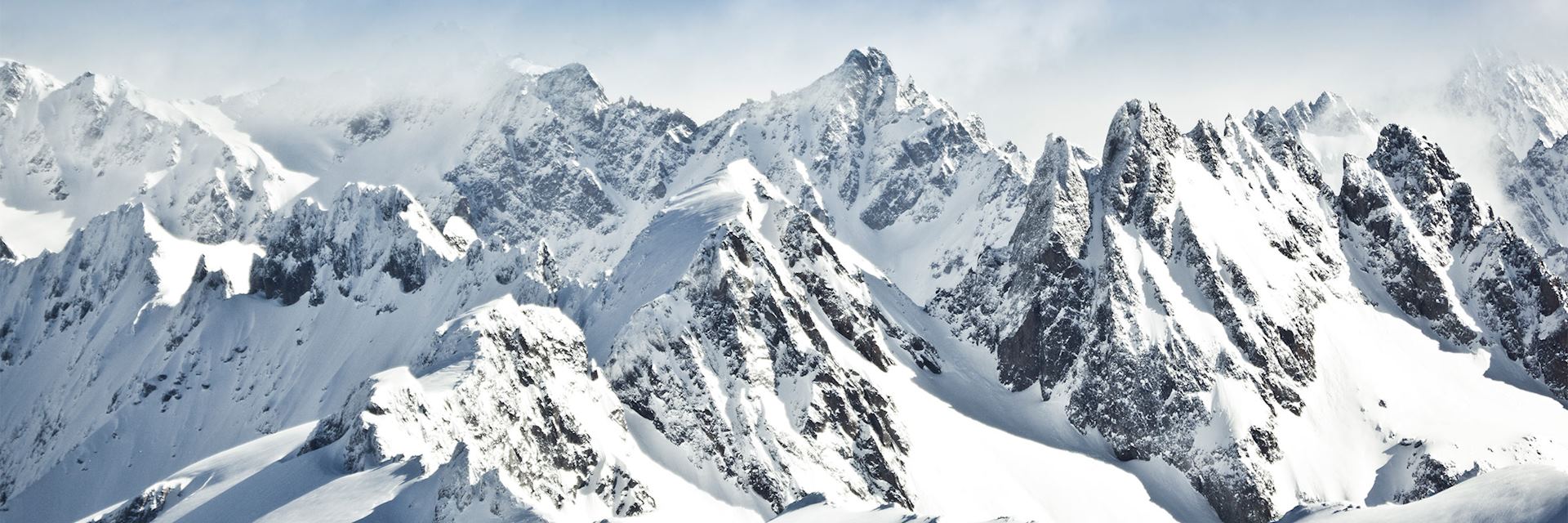
Visit the Swiss Alps, Switzerland
- Accommodation
Forbidding mountain faces, glacier-fed lakes, emerald-green pastures and conifer forests — Switzerland is home to some of the Alps’ highest peaks and most impressive panoramas. But there’s more to this country than just its Alpine scenery.
Our specialists have trekked the Swiss Alps from the shores of Lake Geneva to the easternmost peaks on the Italian border. They can guide you whether you want to relax in a mountain spa, sample the country’s renowned cheese and chocolate or take a panoramic train ride over stone-arched bridges and through mountain tunnels.
You can travel from lakeside vineyards to snowy glaciers in the space of a day. Taste the wines from the lowland valleys and walk the silent pine forests. Hike the grassy foothills above the treeline, then taste local cheeses subtly touched by each specific pasture’s bouquet of mountain flowers. Or venture toward the peaks: the shark-tooth of the Matterhorn, the glacier-lined wilds of Gornergrat or the heady views from Jungfraujoch, the Top of Europe.
The high Alpine resort towns of Zermatt, Gstaad and St. Moritz are known for some of Europe’s best winter sports, but are also havens for warm-weather activity and high-style relaxation. Whatever the time of year, the Swiss Alps invite you to wander.

Start planning your tailor-made trip to the Swiss Alps by contacting one of our Switzerland specialists
- 617-223-4521 617-223-4505
- Make an inquiry
Places to visit in the Swiss Alps
Featuring heavily on our experiences of visiting the Swiss Alps, these selected places are destinations that also prove consistently popular with our travelers. Our specialists can help you choose how to include them in your wider trip, based on your preferences.

Suggested itineraries featuring the Swiss Alps
Our itineraries will give you suggestions for what is possible when you travel in the Swiss Alps, and they showcase routes we know work particularly well. Treat them as inspiration, because your trip will be created uniquely by one of our specialists.
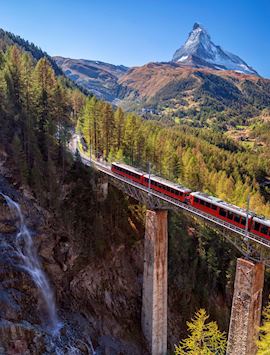
Panoramic Switzerland & Italy
11 days from $8,155pp
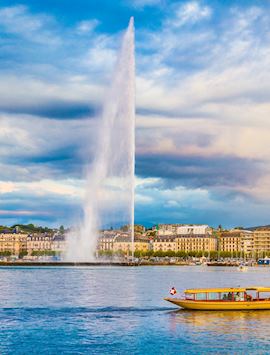
Lakes & mountains of Switzerland
8 days from $4,500pp
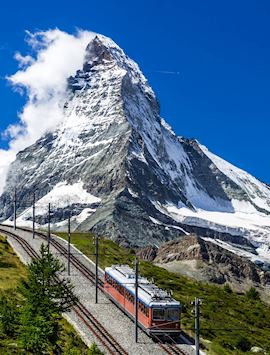
Grand tour of Switzerland
13 days from $7,655pp
Map of the Swiss Alps
Places & hotels on the map, places in and around the swiss alps.
- St. Moritz The Swiss Alps
- Zermatt The Swiss Alps
- Grindelwald 26 miles away
- Wengen 31 miles away
- Interlaken 35 miles away
- Bernese Oberland 35 miles away
- Lucerne 36 miles away
- Lugano 43 miles away
- Zürich 56 miles away
- Bern 60 miles away
- Montreux 80 miles away
- Lake Geneva 98 miles away
- Geneva 119 miles away
Photos of the Swiss Alps

Accommodation choices for the Swiss Alps
We’ve selected a range of accommodation options for when you visit the Swiss Alps. Our choices usually come recommended for their character, facilities and service or location. Our specialists always aim to suggest properties that match your preferences.
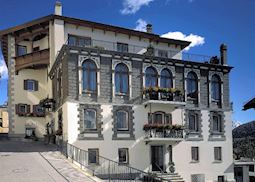
Unique Hotel Eden
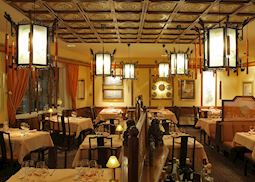
Hotel Steffani
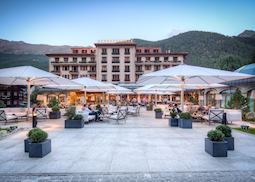
Grand Hotel Zermatterhof
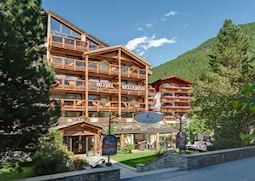
Hotel Bellerive

Hotel Daniela

17 Top-Rated Attractions & Places to Visit in Switzerland
Written by Becca Blond and Joni Sweet Updated Mar 20, 2024
Switzerland's natural beauty is as addictive as its mouthwatering chocolates – one taste and you'll be left craving more. Whether you are on the hiking trails outside Zermatt, laying eyes on the iconic Matterhorn for the first time, or marveling at the Eiger, Mönch, and Jungfrau mountains schussing down a ski trail beginning atop the Jungfraujoch, Switzerland seduces quickly.
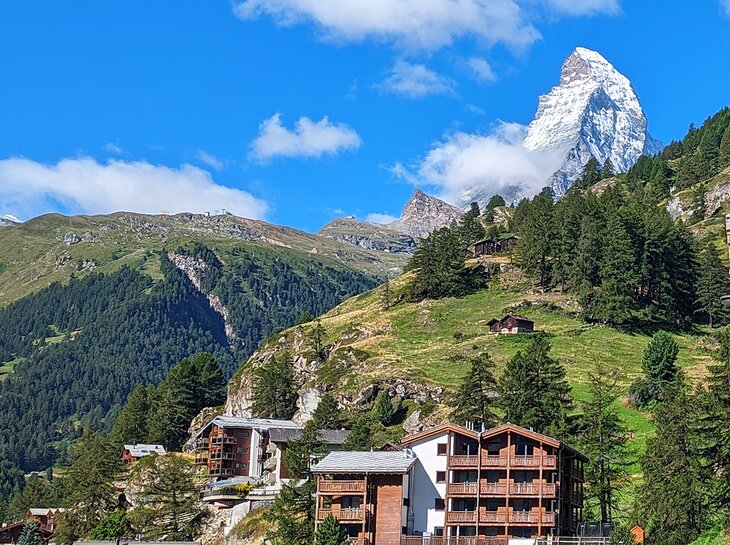
This landlocked central European country is home to two mountain ranges, the Alps in the south and the Jura in the northwest. But Switzerland's natural attractions don't stop with peaks and glaciers. You'll also find glimmering turquoise lakes, emerald valleys where tingling bell-wearing cows and sheep graze, charming chalets, and flower box-filled villages that look ripped from the pages of a fairytale storybook.
Amid all this natural beauty are also some fantastic urban diversions and places to visit. With four official languages (French, German, Italian, and Romansch), Switzerland has a multicultural sophistication to its cities, which all offer something different when it comes to history and culture.
French speaking Geneva is home to four major offices of the United Nations and has a large international population. German speaking Zurich is Switzerland's largest city and financial center, known for its shopping, museums, and nightlife. The capital city of Bern boasts a medieval old town with a famous moving puppet clock tower and a stunning riverfront locale.
Switzerland is a four-season destination with countless things to do for outdoor adventurists. In winter you can partake in snow sports at world-class resorts, while summers are perfect for hiking, biking, climbing, and paragliding.
Getting around Switzerland is easy. Although you can rent a car and drive, we recommend utilizing its excellent train system that goes almost everywhere in the country. Trains are fast, mostly on time, and allow you to just sit back and soak up the stunning scenery.
Explore in more depth by checking out our list of top attractions and places to visit in Switzerland
1. The Matterhorn
3. jungfraujoch: the top of europe, 4. interlaken, 6. lake geneva, 7. chateau de chillon, montreux, 8. st. moritz, 10. lake lugano and ticino, 12. the rhine falls, 13. swiss national park, 14. the albula/bernina railway line, 15. oberhofen castle, 16. swiss grand canyon, 17. gruyères, best time of the year to visit switzerland.
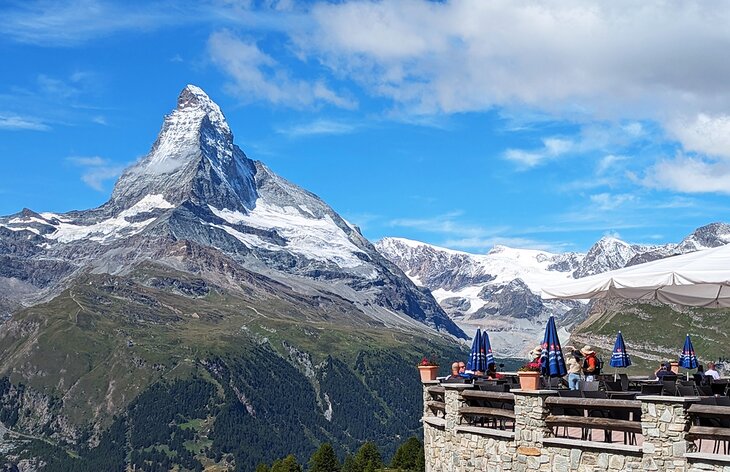
You'll never forget the first time you see Switzerland's most symbolic mountain, the Matterhorn. Maybe you arrive in the charming village of Zermatt, at its base , on a clear blue day and the 4,478-meter high , tooth-shaped mountain looms clearly in front of you. Or maybe it is spitting rain when you first set foot in the car-free town, and it isn't until the next morning that you witness the emblematic peak emerging from a sea of dissipating clouds. Whichever way you first see this legendary mountain, it will remain seared into your memory for years to come. It's that impressive.
One of the highest mountains in the Alps, the Matterhorn sits on the border with Italy. It has four steep faces rising to its craggy tip. Climbers have been intrigued by this mountain from the first successful summit in 1865 by British climber Edward Whymper and his team. The trip still ended tragically when four of the climbers fell to their deaths during the descent.
Today, thousands of experienced climbers come here in a summit bid each summer. There are several routes to the top of this mountain, which is not accessible by cable car. The easiest route is the Hörnligrat, which begins in Zermatt.
Things to Do at the Matterhorn
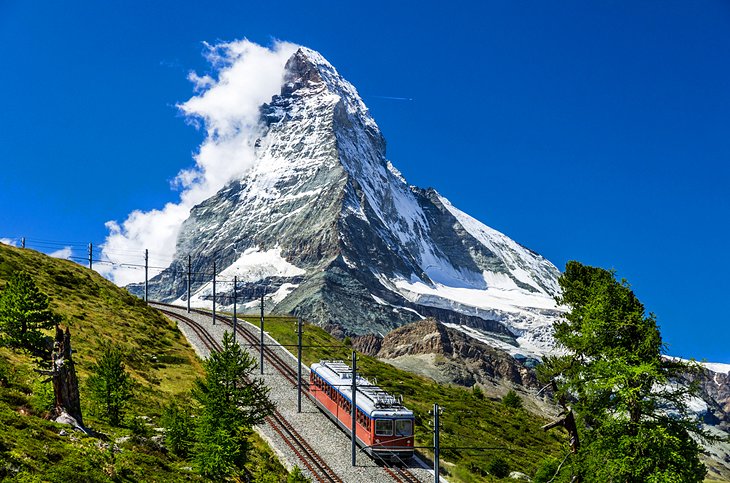
If you don't have the skills to summit the Matterhorn, there are still plenty of ways to experience the mountain. One top excursion is to ride the Gornegrat Bahn cog railway to the summit of the 1,620-meter Gornergrat mountain for stunning Matterhorn views. Europe's highest open-air cog railway, and the first fully electric train of its kind, departs from Zermatt station multiple times per day.
The ride itself is also bound to leave you speechless. Taking 33 minutes and climbing 1,469 meters it crosses dramatic bridges, passes turquoise-hued mountain lakes, and at times clings to the side of the mountain with views down into rocky ravines.
Once you reach the mountaintop, you'll find an observation deck with views in all directions including a view of Switzerland's highest mountain and the second biggest glacier in the Alps. Keep an eye out for wild ibex near the viewing platform in summer.
Europe's highest-altitude hotel, the Kulmhotel Gornegrat is also here. Besides lodging, it has a restaurant and shops open to the public. There is excellent hiking in summer, while Switzerland's highest sledding hill provides winter fun.
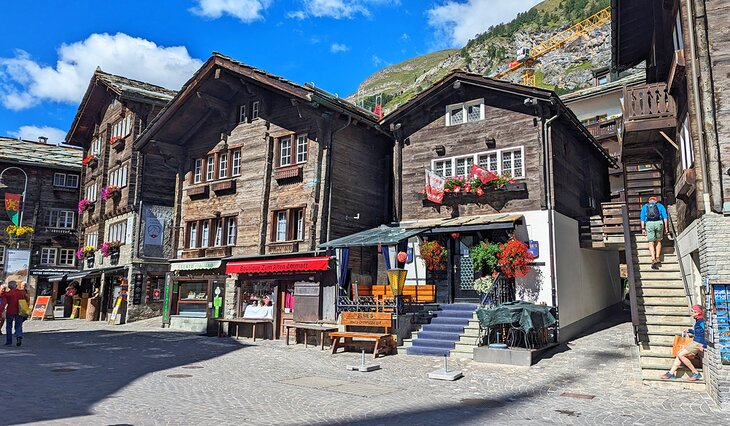
At the foot of the Matterhorn, lies the charming village of Zermatt, a top international resort that is one of the most popular ski destinations in Switzerland , and a hiking, biking, and climbing paradise in summer.
Laid out along just a few main streets with a surreal-looking blue river running through it, motorized vehicles except for official electric taxis are banned to preserve the air quality and the town's peaceful ambiance.
Zermatt can also only be reached via helicopter (very pricy) or the Matterhorn Gotthard railway via the towns of Visp or Brig. If you drive to the region, you'll need to park your car down the valley in the town of Tasch, and then continue by train. As such, staying in Zermatt truly feels like you hiked into a remote mountain paradise.
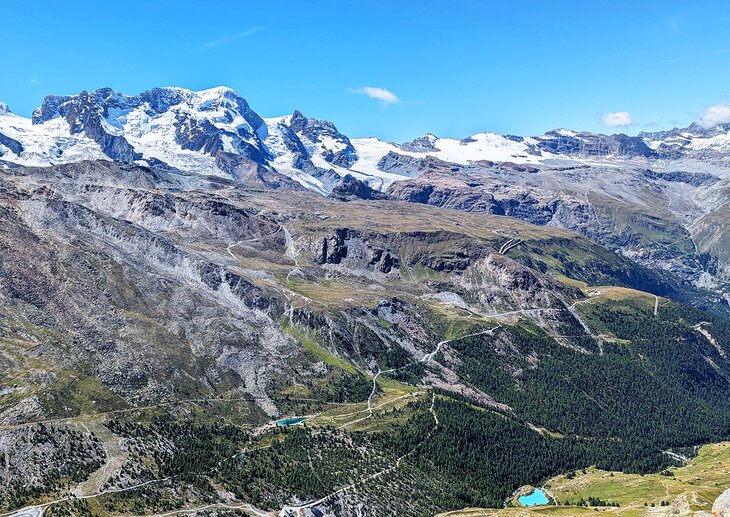
In the winter, skiers can play on more than 300 kilometers of slopes accessed via a funicular and the Blauherd and Rothorn gondolas. In the summer, these slopes turn into hiking and mountain biking trails.
The Five Lakes Trail is one of the most popular hikes, beginning at the top of the Blauherd gondola and eventually taking you back to town via a series of five lakes, three of which you can see the reflection of the Matterhorn in on a clear, windless day. If you want to paraglide, this is also available.
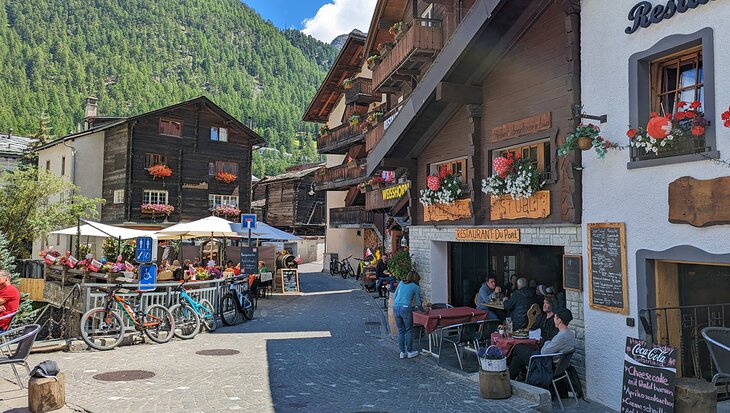
Back in town, you'll find dozens of shops, restaurants (order Raclette, a cheese and potato dish that is a regional specialty), and hotels. If you are interested in history, pay a visit to the Matterhorn Museum , which tells the story of the mountain village turned international holiday resort. It also provides facts and photos from the Matterhorn's first ascent.
- Read More: Top Tourist Attractions in Zermatt & Easy Day Trips
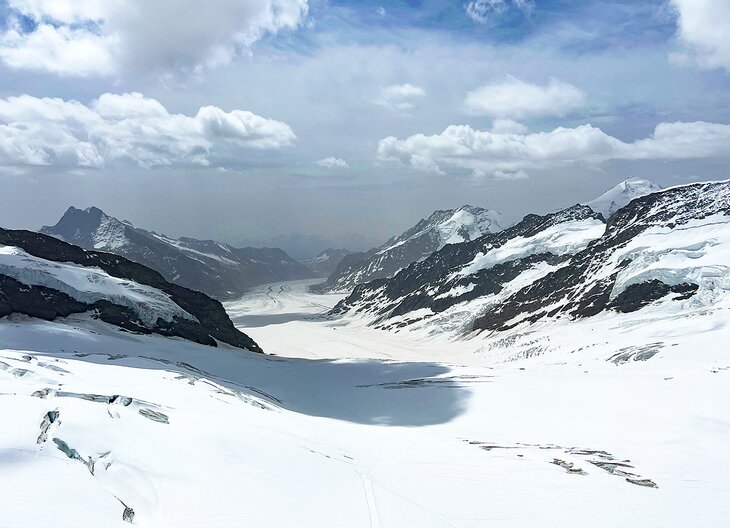
Since 1912, tourists have been making their way to the fairytale-like village of Grindelwald for an excursion to the Top of Europe (also known as Jungfraujoch). As its name suggests, it's the highest train station in Europe.
It offers panoramic views of the UNESCO-recognized Jungfrau region that will make your jaw drop. The Sphinx Observatory, an astronomical observatory that looks like a Bond villain lair perched 3,454 meters above sea level, is the best place to see the magnificent Aletsch Glacier and the 4,000-meter peaks that flank it. With snow 365 days per year, it's also a prime spot to get a break from Europe's heat in the summertime.
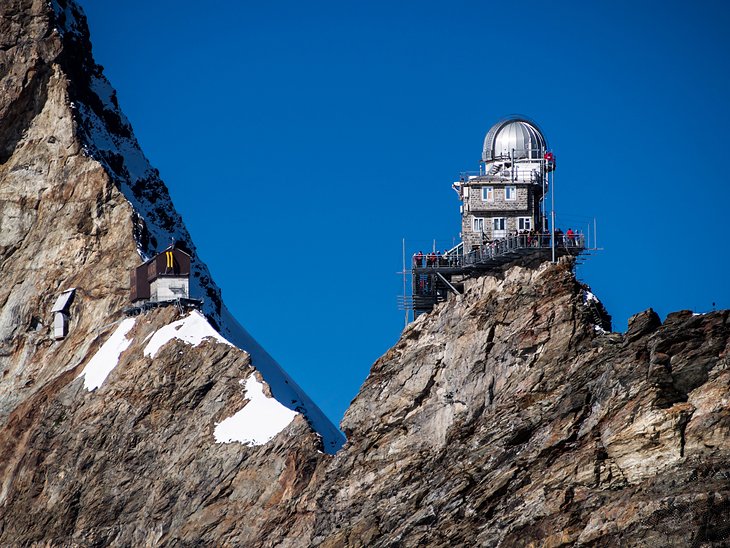
This famous attraction has come a long way in the last 100 years, giving tourists lots of things to do at the top. Step into the 360-degree cinematic experience room for a closer look at the glacier and the Swiss Alps (perfect for ensuring you still get a wonderful view on a foggy day). Walk through a 250-meter-long corridor with artifacts and exhibits on the history of the miners who built the railway to Jungfraujoch—the antique mining equipment hanging on the walls will give you a deeper respect for these early pioneers.
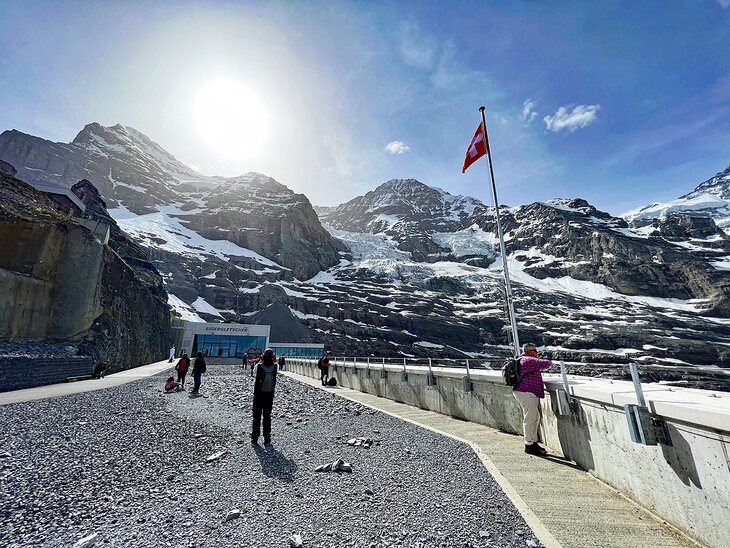
Peek inside a giant snow globe that depicts the region with charming moving figures, like yodelers and gondolas. Then, glide through the Ice Palace. Frozen from floor to ceiling, it features smooth, icy hallways filled with ice sculptures of animals, including several penguins around an igloo.
Jungfraujoach's highly sustainable cable car, the Eiger Express , shortened the journey between Grindelwald and Jungfraujoch from 45 minutes to just 15 minutes when it opened in late 2020. That makes it possible to summit the Top of Europe on a day trip from Interlaken or even Zurich, but if you have time, it's worth sticking around Grindelwald to hike for a few days .
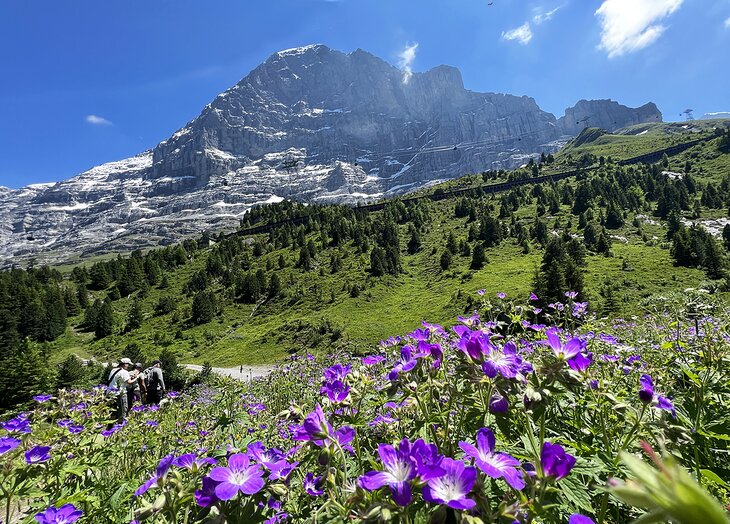
The trails here are among the most beautiful in the world and most trailheads are easily accessible through the town's network of cable cars and gondolas. The aptly named Panorama Trail takes you along paths lined by wildflowers with a backdrop of snow-capped peaks, while the Grindelwald First cable car station puts you on the path to the world-famous Bachalpsee lake.
You can also break up your days of hiking with adventure activities. Grindelwald First is home to a zip line that soars at 80 kilometers per hour and a mountain cart attraction that lets you race down winding gravel paths, plus a trail you can tackle on a "trottibike"—a unique cross between a scooter and a bike that's surprisingly fast.
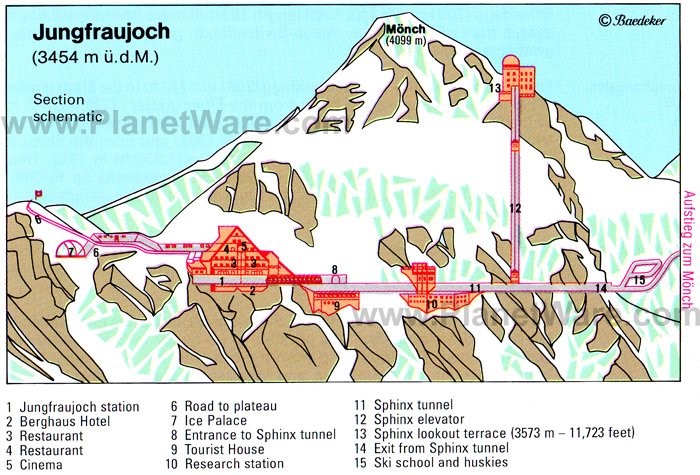
Nestled on a strip of land between two glassy lakes, Interlaken looks like a postcard brought to life. The enchanting resort town has been a popular vacation destination for centuries, giving tourists a home base to explore the Bernese Oberland. Visit in the spring or summer to take in the striking sight of the town's lush gardens blooming with the snow-dusted Eiger, Jungfrau, and Mönch towering in the background.
Interlaken's proximity to Lake Thun to the west and Lake Brienz to the east, along with soaring alpine mountains, has helped it become the "Adventure Capital of Europe" —and it offers thrills for any taste.
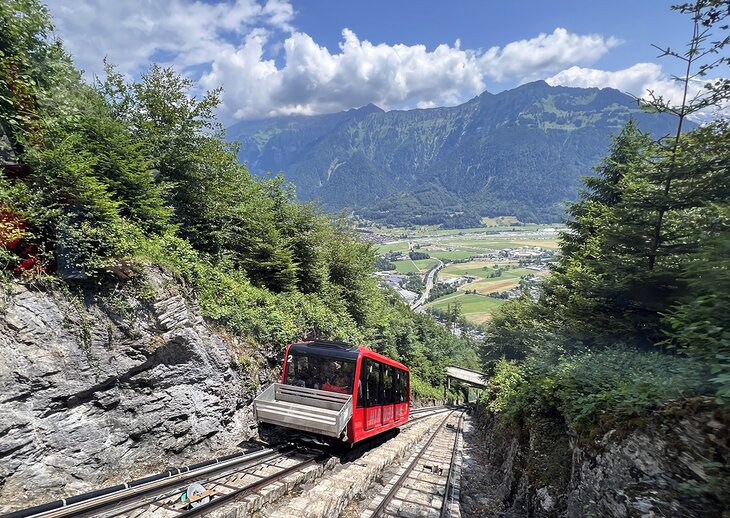
Want to hike? Take a 10-minute ride on the Interlaken Harderbahn, a funicular railway that's more than 100 years old, to the Harder Kulm (Interlaken's closest mountain). A brick path lined with quirky Swiss statues takes you to the trailhead for the Harder Kulm Circular Path , a relatively easy, forested path that opens up to panoramic views of Interlaken.
From mountainside slopes, you can also take the sky on a paragliding adventure in the summer, or slip on a pair of skis and zip down fresh powder in one of five winter sports areas around Interlaken. It's also a lovely place to get out on the water. Rent kayaks, row boats, and pedal boats for a serene experience on the lakes. Or challenge yourself to wakeboarding, windsurfing, or water skiing.
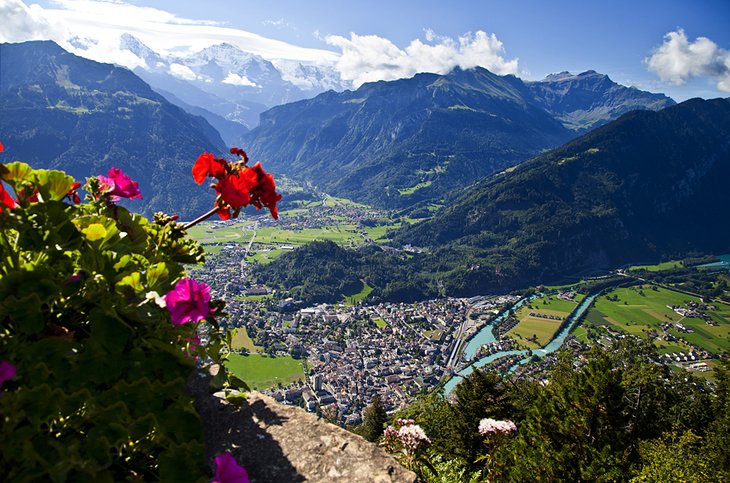
The beautiful part about Interlaken, though, is that it's as much a place for excitement as it is for a laid-back retreat. Once you've gotten your share of adrenaline, wind down with a stroll on the Höheweg , Interlaken's main boulevard, or find a moment of peace at the Garden of Friendship, the country's first Japanese garden.
- Read More: Top Tourist Attractions in Interlaken & Easy Day Trips
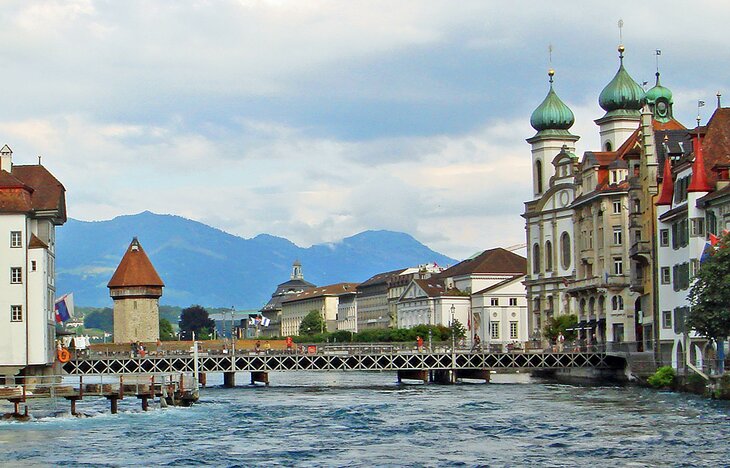
Imagine a sparkling blue lake surrounded by mountains, a car-free medieval old town, covered bridges, waterfront promenades, frescoed historic buildings, and sun-splashed plazas with bubbling fountains. No wonder Lucerne (in German, Luzern) is a top spot for tourists.
Famed for its music concerts, this quintessential Swiss town lures renowned soloists, conductors, and orchestras to its annual International Music Festival . The Culture and Convention Center is home to one of the world's leading concert halls.
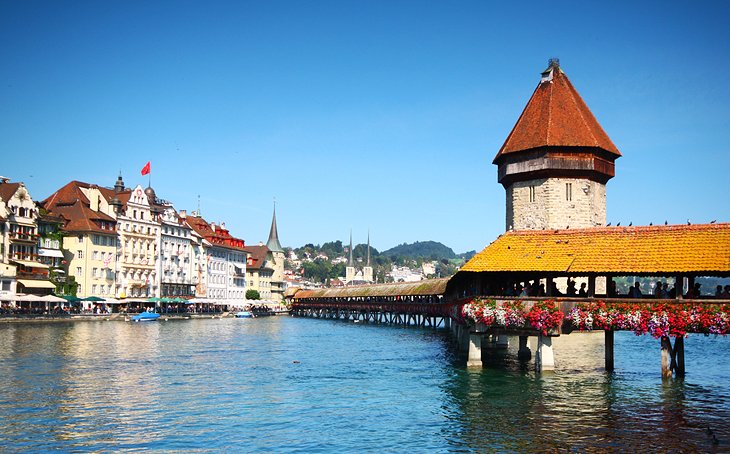
One of the city's most famous landmarks is the Chapel Bridge , built in the 14th century. In a small park, lies the famous Lion Monument , a poignant sculpture of a dying lion, which honors the heroic death of Swiss Guards during the attack on the Tuileries in the French Revolution. History buffs will enjoy the Swiss Transport Museum with extensive exhibits on all forms of transport, including air and space travel, railroad locomotives, and a Planetarium.
For beautiful views of Lucerne, the Alps, and the lake, ride the funicular to the Dietschiberg on the north side of Lake Lucerne; cruise up Mt. Pilatus on the cableway; or head to the Rigi , a famous lookout point.
- Read More: Top-Rated Tourist Attractions in Lucerne
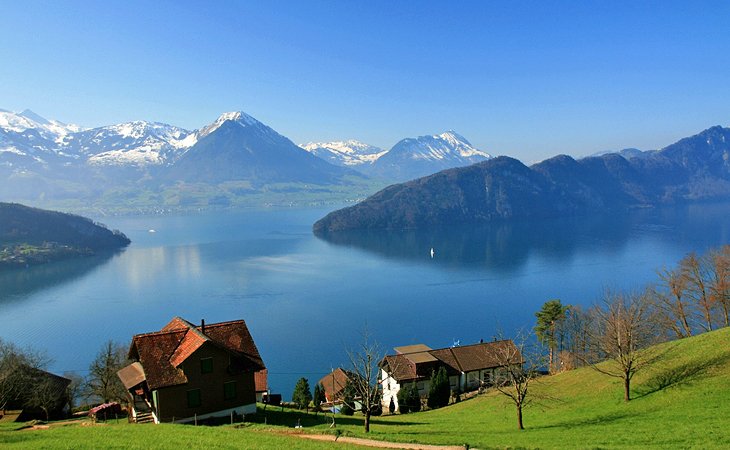
Lake Geneva, Europe's largest Alpine lake , straddles the Swiss/French border, and laps at the shores of some of Switzerland's most popular cities. The city of Geneva (in French Genève; in German Genf) sits between pretty snowcapped peaks at the point where the Rhône spills into Lake Geneva.
This French-speaking "capital of peace" is the European seat of the United Nations and exudes a pleasing blend of French joie de vivre and Swiss structure. Promenades, parks, and gardens surround the lake, and the old town is a lovely spot to stroll among the historic buildings. The Jet d'Eau , a fountain in Lake Geneva shooting water 150 meters into the air, is a famous landmark. Cultural attractions include the Opera House and the Grand Théâtre , which stages international acts.
Also on the lake, about 62 kilometers from Geneva, Lausanne boasts lovely views over the surrounding region and the lake, with the Alps rising in the distance. Take a stroll through the medieval old town with its cute cafés and boutiques and stunning Gothic cathedral. At the foot of the Alps, on Lake Geneva, Montreux hosts the world-famous Montreux Jazz Festival in June/July.
- Read More: Top-Rated Tourist Attractions in Geneva
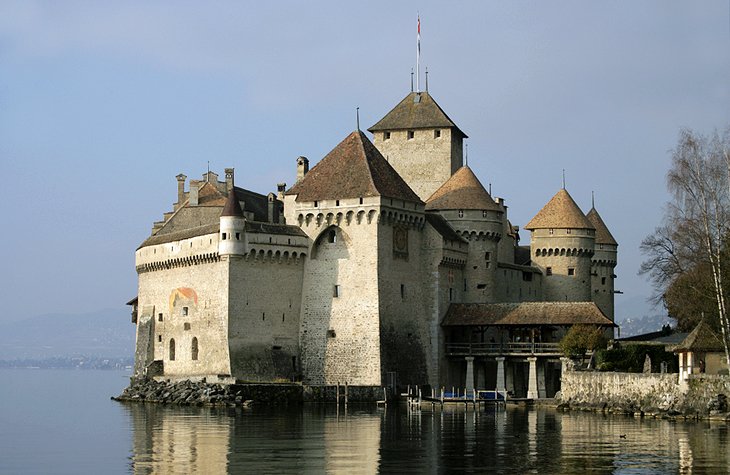
On the shores of Lake Geneva, near Montreux , the Chateau de Chillon (Chillon Castle) has inspired artists and writers for centuries. Lord Byron, Jean Jacques Rousseau, and Victor Hugo are among the luminaries who have written about this architectural treasure.
Once the stronghold of the Counts and Dukes of Savoy from the 12th century, the complex encompasses about 25 buildings clustered around three courtyards. Highlights include the Great Halls, with magnificent views of Lake Geneva; the Gothic underground rooms; the Chapel , adorned with 14th-century paintings; and the Camera Domini , a bedroom occupied by the Duke of Savoy decorated with medieval murals.
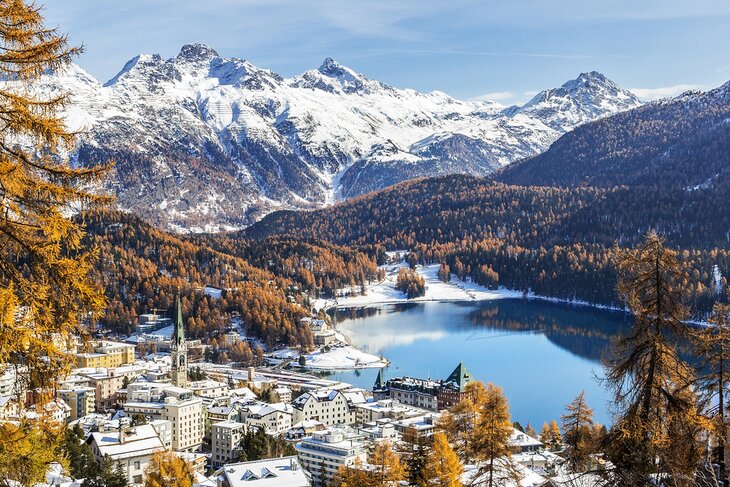
St. Moritz is a city of firsts. The world's first electric light clicked on here in December 1878. In 1889 it hosted the Alps' first golf tournament and in 1935 began operating one of Switzerland's first ski lifts. Additionally, the town is considered the birthplace of Alpine winter tourism after a hotelier convinced British summer guests to winter here in 1864. It went on to host the Winter Olympics twice (1928 and 1948).
In the Upper Engadin region in southeast Switzerland, in a valley surrounded by the Alps, today it is one of the world's most ritzy ski resorts , favored by billionaires and celebrities. It has 350 kilometers of ski and snowboard runs with some of Switzerland's steepest terrain.
Winter sports run the gamut, from skiing, snowboarding, skating, and bobsledding to tobogganing. One of the oldest natural ice runs for toboggans on the planet is found here, the famous 1.2-kilometer-long Cresta Run . There is also a snowboard fun park and 150 kilometers of winter walking and cross-country ski trails.
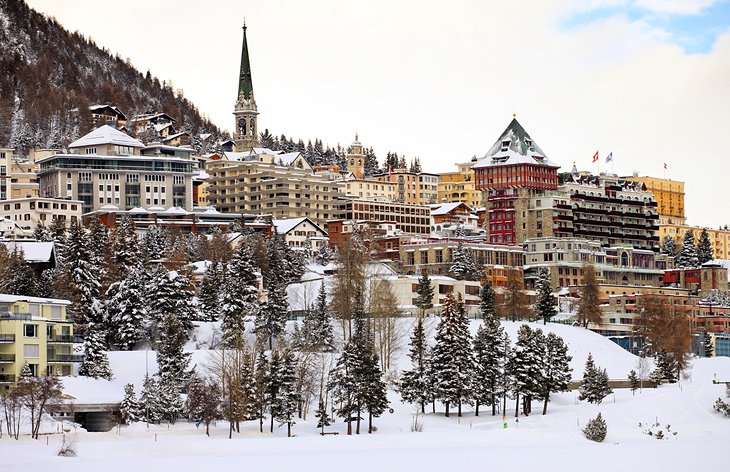
In summer, St. Moritz attracts hikers, bikers, horseback riders, and rock climbers. If you prefer to golf, you can play four courses with fantastic mountain views. You can also enjoy the iron-rich natural mineral hot springs here year-round. They were discovered about 3,000 years ago.
Adding to all this spectacular mountain scenery, St. Moritz is a cultural crossroads. Romansch, German, Italian, French, and English are all spoken in the surrounding areas, not to mention the different languages of the many well-heeled international visitors and expats.
The town is divided into two parts: St. Moritz Dorf sits on a sunny terrace overlooking the Lake of St. Moritz. The other part of town, lakeside St. Moritz Bad on the valley floor, is a health resort with less expensive lodging.
- Read More: Top Tourist Attractions in St. Moritz & Easy Day Trips
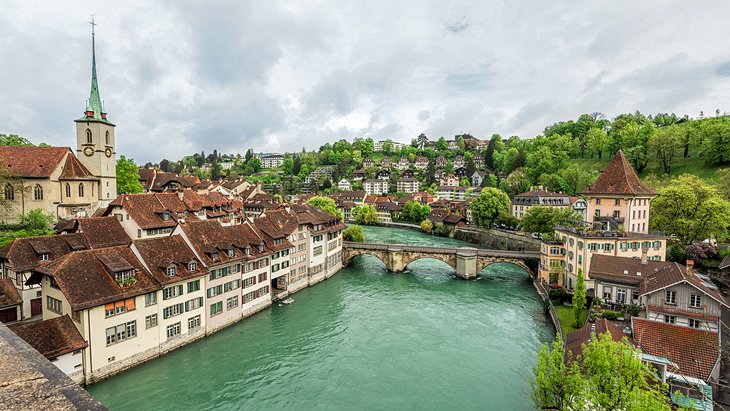
In a stunning location, perched on a peninsula of the River Aare, the Swiss capital of Bern exudes old-world charm, and the city's medieval old town is a UNESCO World Heritage Site. Strolling along the cobbled streets, visitors can explore the tallest cathedral in Switzerland, with panoramic views from its tower; 16th-century fountains; the Zytglogge medieval clock tower with moving puppets; and six kilometers of shopping arcades, called " Lauben " by the locals. The Rose Garden (Rosengarten) offers beautiful views of the old town center.
Bern has many tourist attractions waiting to be discovered, including excellent museums. Art lovers will appreciate the impressive galleries, including the Zentrum Paul Klee, the world's largest collection of works by this famous artist, and the Bern Museum of Art (Kunstmuseum).
Don't miss the markets, held in the Bundesplatz (parliament square) with views of the elegant Renaissance-style parliament building (Bundeshaus). Families will also enjoy a visit to the Bear Park.
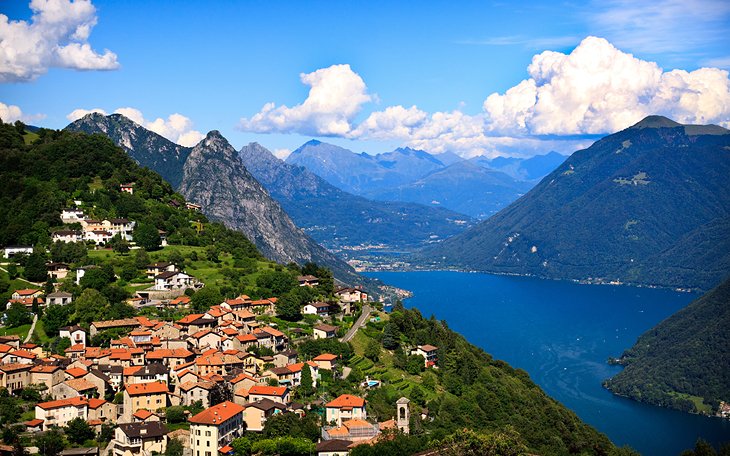
Lake Lugano lies on the Swiss/Italian border in Ticino, Switzerland's only official Italian-speaking canton, and offers a tantalizing taste of the Mediterranean. Citrus, figs, palms, and pomegranates flourish in the mild climate here–even as snowcapped peaks beckon in the distance.
In the towns around Lake Lugano and Lake Maggiore to the west, the feel of Italy is unmistakable in the architecture, the piazzas, and the passion for fine food, which spills over the Italian borders from the south, east, and west.
Visitors can explore the area by touring the lake on one of the white steamers or renting a boat. For a panoramic overview, Monte San Salvatore offers one of the most spectacular vistas of the surrounding countryside, lake, and snow-capped peaks.
Lugano , a financial center and the largest and most significant town in Ticino, is a popular summer resort. Northwest of Lugano, in sun-drenched Locarno on Lake Maggiore, Swiss lakeside living takes on a subtropical touch with warm days, blossoming gardens, and palm-studded estates. In Bellinzona , capital of the canton, three magnificent castles are UNESCO World Heritage sites.
- Read More: Top-Rated Tourist Attractions in Lugano, Locarno, and the Ticino Region
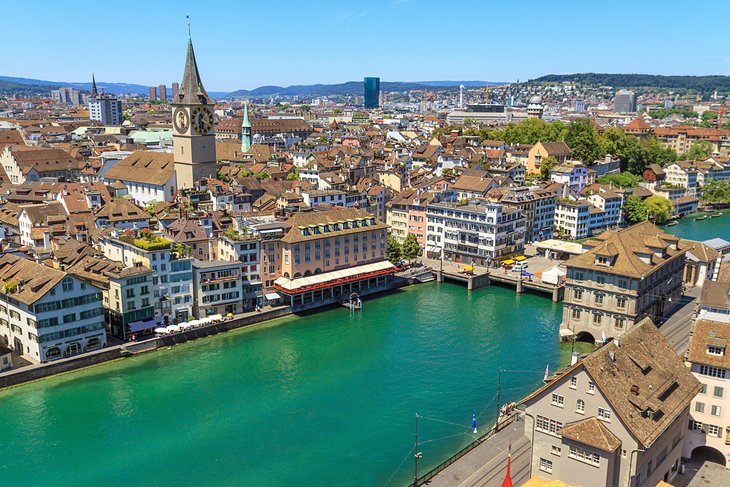
Zurich is Switzerland's largest city, a major transportation hub, and a top starting point for travelers. The city lies at the northwestern end of Lake Zurich astride the river Limmat. Beyond its buttoned-up façade, this affluent banking capital boasts a rich line-up of cultural treasures.
A great place to begin a walking tour is the cobbled streets of the Old Town with its quaint shops, cafés, and galleries. Mile-long Bahnhofstrasse , one of Europe's finest shopping strands, beckons with designer stores selling fashion, watches, and jewelry.
Venturing away from the boutiques, visitors will find more than 50 museums and 100 art galleries, as well as many other tourist attractions . A top pick is the Kunsthaus Zürich , the museum of fine arts, with an impressive collection of art from the Middle Ages to the present day. Another favorite is the Rietberg Museum , which focuses on non-European art with many works from China, India, and Africa.
A short stroll from Zürich's main station, the Swiss National Museum , in a Gothic chateau, spotlights Swiss cultural history. Families will love the Zurich Zoo with an elephant park, penguin parade, and Madagascar pavilion. From the city, take a train ride to Uetliberg Mountain for panoramic views of the city and countryside.
- Read More: Top-Rated Tourist Attractions in Zürich
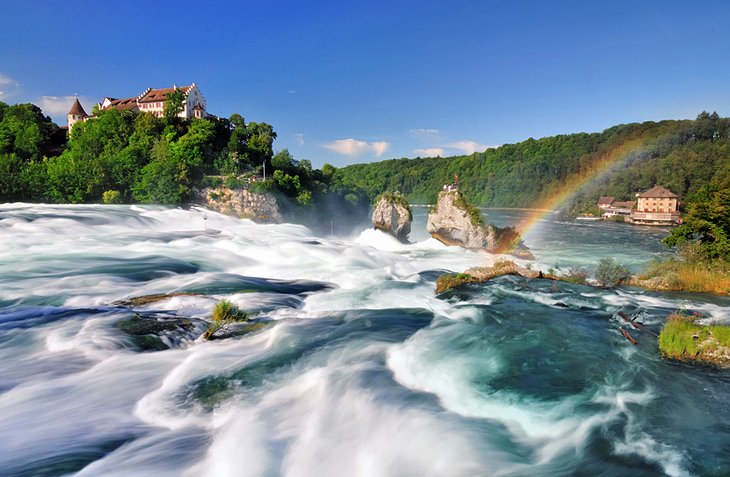
Spanning 150 meters, the Rhine Falls (Rheinfall) at Schaffhausen are the largest falls in Europe. The best time to visit is during June and July when the mountain snow melts, and the falls swell in volume to spill over a 21-meter-high ledge of Jurassic limestone.
Boat trips up the Rhine provide excellent views of the falls, as do the viewing platforms on both sides of the river.
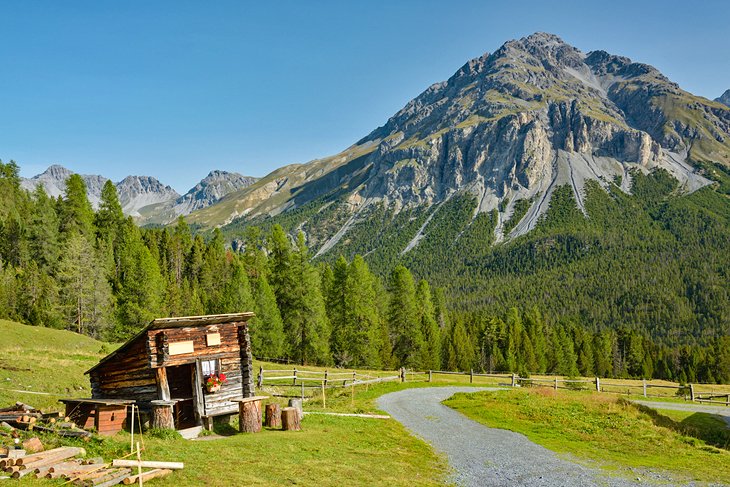
Founded in 1914, Swiss National Park in the Engadine Valley is the oldest reserve in the Alps. The park sits right on the border with Italy and encompasses more than 170 square kilometers of flower-dotted hollows, fast-flowing rivers, and limestone crags. The scenery is especially dramatic in winter when the forested mountains are covered in a blanket of snow, and the views from the cross-country ski trails are stunning.
Nature lovers can explore the region on the large network of trails, though veering off these paths is forbidden in an effort to preserve the natural ecosystems. More than 5,000 species of wildlife call the park home, including marmot, red deer, chamois, ibex, fox, and more than 100 species of birds.
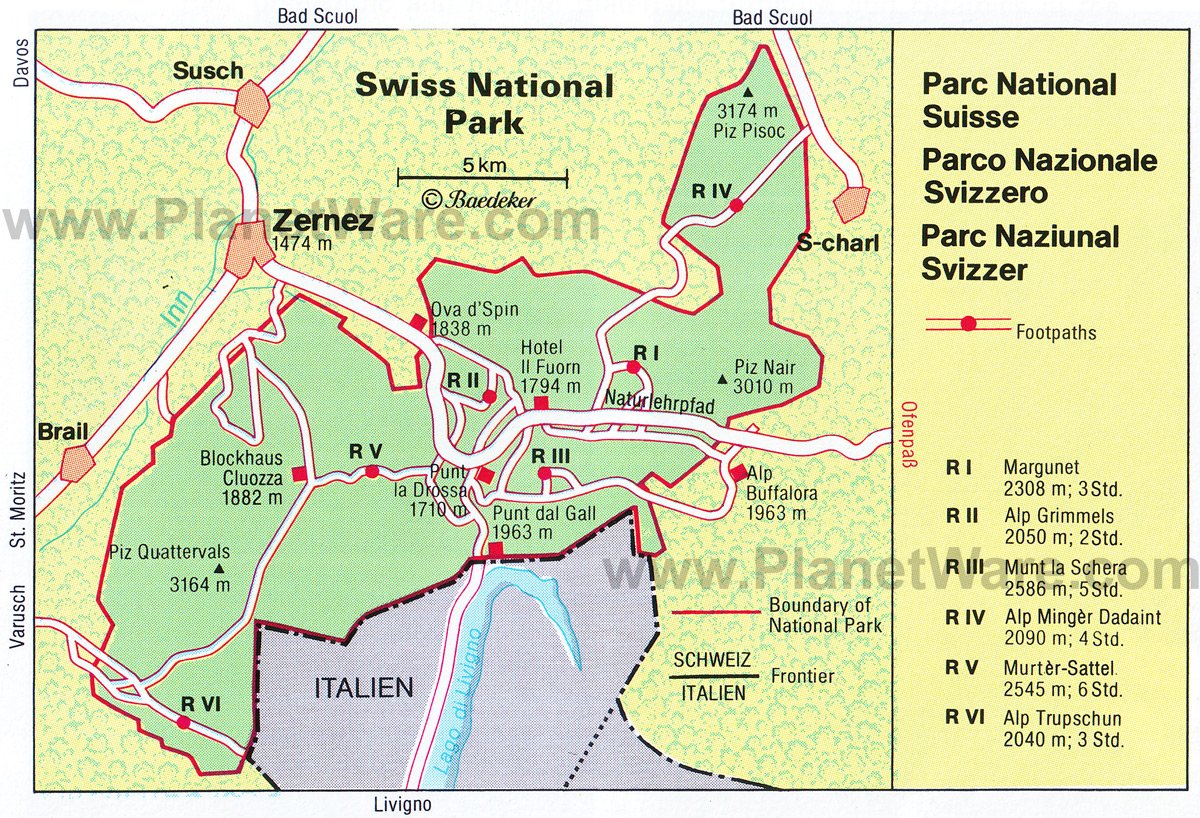
One of the very few railway lines in the world designated as a UNESCO World Cultural Heritage listing, the Albula/Bernina line on the Rheatian Railways offers a majestic ride not to be missed. The route extends throughout the Albula and Bernina landscapes, covering 122 kilometers and winding through almost 200 bridges, the Graubünden mountains, and a number of tunnels and viaducts along the way.
A ride on this train means panoramic seats that overlook unspoiled mountain landscapes, including the Piz Bernina, the highest mountain in the Eastern Alps at just over 4,000 meters tall. The train operates all year long, and the views are just as magical in summer as they are in winter.
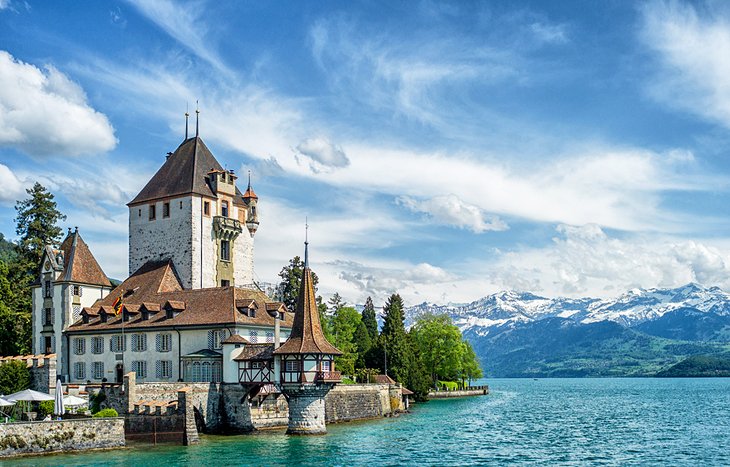
Right on the shore of Lake Thun and surrounded by a 2.5-hectare park, this 13th-century castle is one of the most breathtaking in Switzerland. Because Oberhofen Castle changed hands many times through the centuries, and new owners kept adding rooms to it, the result is a magical mix of many styles: Bernese Baroque-style buildings, Romantic-style facades, and Prussian-inspired exotic new areas (including a library and a smoking room).
The castle also houses a living museum showcasing the times and lives of feudal societies that called the castle (and its surroundings) home from the 16th to the 19th centuries.
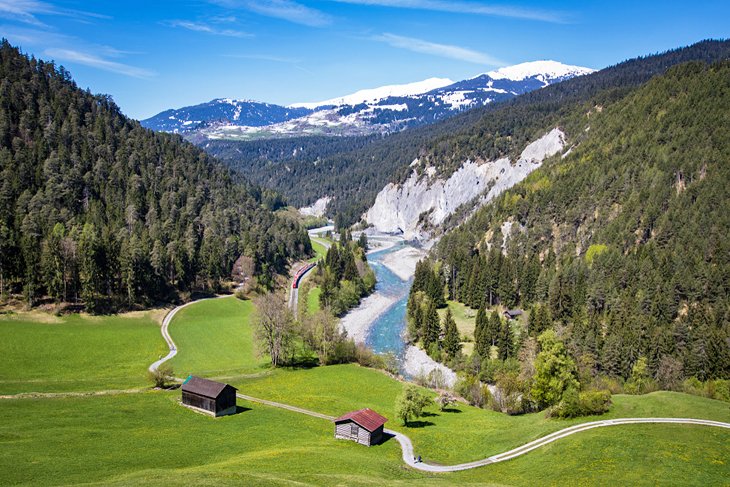
The Ruinaulta (also known as the "Swiss Grand Canyon") is a deep gorge surrounded by expansive meadows and forested cliffs. Located in Eastern Switzerland, it was created over 10,000 years ago–when the Ice Age Rhine Glacier retreated, it led to a chain of events that resulted in a massive rockslide in the Rhine Valley. As the Rhine River seeped through the rock walls, the gorge was filled with water.
Today, the Swiss Grand Canyon is not only one of the most beautiful areas in Switzerland, but also a preferred destination for hikers, bird-watchers, and nature lovers. It's possible to raft the rapids here between May and October, or rent a canoe or kayak for a gentler route with stunning views of the steep cliffs all around.
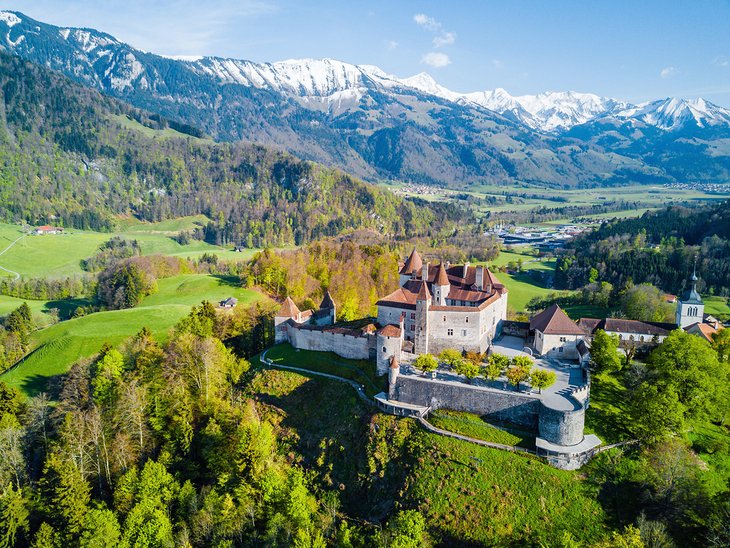
Even if you don't know anything about this small medieval town, you've probably heard about the hard yellow cheese that made its name famous. Today, that's one of the town's main attractions. Visitors can tour a cheese factory, sample the local specialties, and wave to the cows that call the surrounding green hills home. If cheese isn't enough, the Maison Cailler Chocolate Factory also operates in town.
Gruyères might be tiny – it covers an area of just 28.4 square kilometers and is home to around 2,000 permanent residents – but it makes up for it with plenty of things to do, including the 13 th -century Castle of Gruyères and its two small arts and regional museums, as well as Saint-Germain Castle, which was bought by Swiss surrealist painter and sculptor H. R. Giger, and it now houses a museum dedicated to his work. The Tibet Museum, housed in an old church in town, is also worth a visit.
Stunning landscapes surround Gruyères, including the Gorges de la Jogne (favorite with hikers) and the nearby Mont Moléson, popular with climbers in the warmer months and home to ski and snowshoe trails during winter.
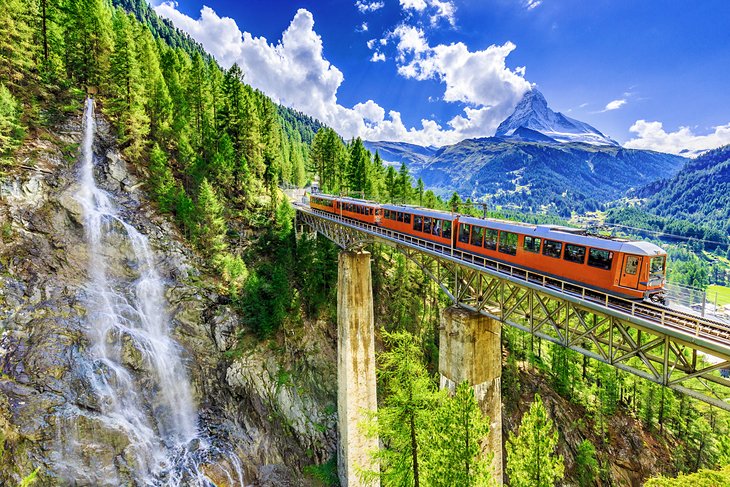
The best time to visit Switzerland depends partly on why you're going there. If you're going for the skiing, then of course winter is the best time to visit. For mountain hiking, summer is best, as it's warm even high up in the mountains, and you won't encounter much rain to disrupt your outdoor plans.
If your visit to Switzerland will include a bit of everything, then the months between April and June are your best choice . You'll still find some snow if you arrive early in this period, and warm days if you arrive later on.
Temperatures vary between 15 and 22 degrees Celsius, and you'll get a bit of rain, but you'll also see long days with plenty of sunshine, perfect for hiking and sightseeing . May is the most unpredictable month weather-wise – you might see rain and cold evenings or sunshine with temperatures in the low 20s.
Since the summer crowds don't arrive until July, and the winter crowds are long gone, you'll get more privacy and a chance to grab better deals on flights and accommodations .

More on Switzerland
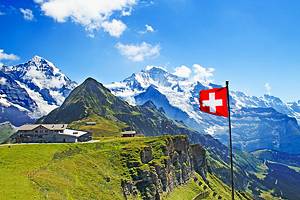

- Switzerland
- Travel Guides
Beauty In The Alps: 8 Best Places To Visit In Switzerland
Explore the best places to visit in Switzerland right from its natural attractions to cultural centres.

One of the most visited holiday destinations in the world, Switzerland is home to beautiful landscapes, active volcanoes, snowy mountains, and glistening lakes. Skiing, along with other winter sports like hang gliding, hiking, biking, and climbing make Switzerland the busy tourist destination it is. There is no particular time to visit Switzerland, as the country is enjoyable throughout the year offering different activities. Also suitable for a laid-back vacation, there are many places to visit in Switzerland. You can dive into the historic districts or take a train up the mountain or gorge on delicious chocolate.
8 Places To Visit In Switzerland
1. beauties from the past: lucerne .
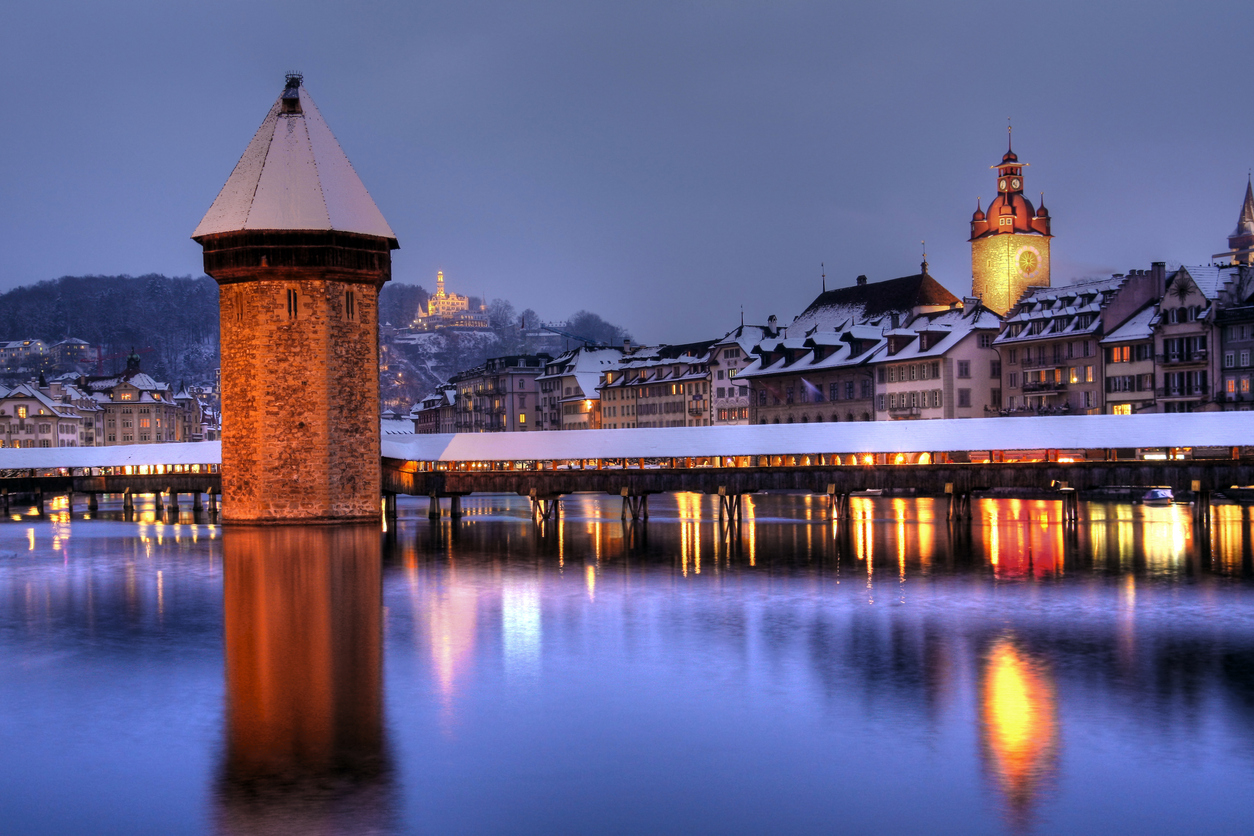
With the Alps in the background, the stunning city of Lucerne is popular because of its medieval Altstadt (Old Town) and Kapellbrücke, a 14th-century Chapel Bridge made of wood. Lucerne is one of the best cities to visit in Switzerland and a buzzing city that offers ethereal views of Lake Lucerne. Local delicacies like the Luzerner Chügelipastete made of mushroom, cream sauce, and veal, make Lucerne more enjoyable. Other attractions in Lucerne include the Water Tower, the Swiss Transport Museum, and Dying Lion. Lucerne is also famous for its festivals and music concerts making it one of the places to visit in Switzerland.
2. Where Einstein Lived: Bern

The medieval past of the city places Bern among the places to visit in Switzerland. The Old Town in Bern also called the Altstadt, is a UNESCO Heritage Site because of its 12th-century structures. Also, the capital city, Bern is famous for an astronomical clock with puppets called Zytglogge. It is believed that while coming up with his Theory of Relativity, Einstein studied this very clock. More attractions include Zentrum Paul Klee, Kunstmuseum, Einstein Haus, and Museum. Bern’s music scene is also very vibrant with Summer and Winter Jazz festivals and other festivals like the Gurten festival making the city a very exciting place to visit.
3. Where The Money And Museums Are: Zurich

One of the most famous, largest, and best cities to visit in Switzerland, Zurich is the business capital. Zurich is filled with thriving locations like the Old Town, Zurich Opera House, Uetliberg, Paradeplatz, and more. The city is adorned with natural attractions like Lake Zurich, the Chinese Garden, and more. Zurich also overflows with culture and has many museums like the Swiss National Museum, Kunsthaus Zurich, and Money Museum and churches like Grossmunsterand St Peter’s Church with a great legacy attached to them. The city also offers some of the best restaurants and shopping areas like Bahnhofstrasse.
4. Between Countries: Lake Geneva

Among the mighty Alps, Lake Geneva lies on the border of Switzerland and France. Tourist cities of Geneva, Lausanne, and Montreux lie on the Swiss side of the lake. In the north, Lake Geneva is also surrounded by the Jura mountains which give tourists a lot of hiking, skiing, and trekking options. You can take regular boats to enjoy the lake but travelling on a cruise is recommended.
5. Take The Ride To The Elevation Of 2033 Metres: St Moritz
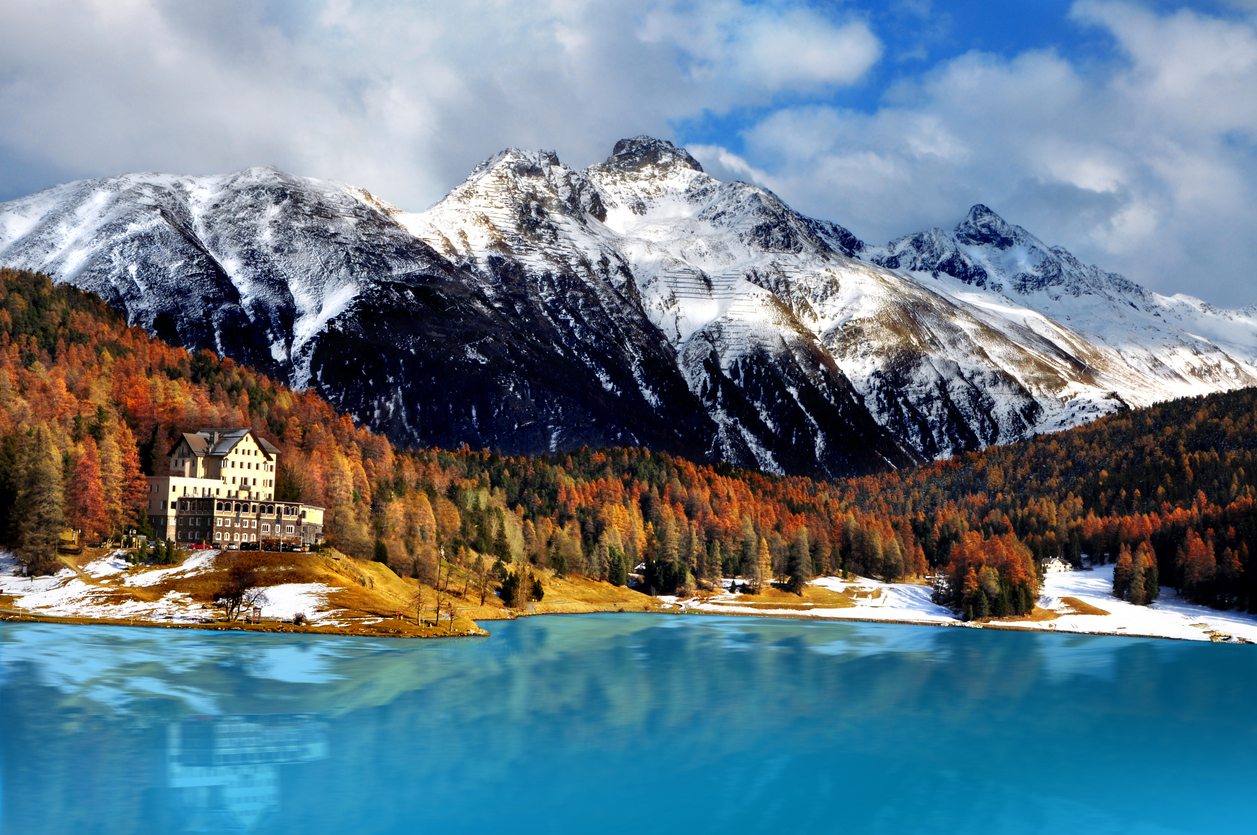
A natural treasure, St Moritz is surrounded by glaciers, forests, 25 mountain lakes, and peaks like Piz Surlej, Piz Rosatsch, Piz della Margna, and Piz Corvatsch. They are most well-known for outdoor activities and winter sports like skiing and snowboarding. What makes it one of the best places to visit in Switzerland is the Glacier Express that runs between St Moritz and Zermatt. The ride goes through deep valleys, mountains, and gorges, crosses 291 bridges, and lasts seven hours. The train travels up to an elevation of 2,033 metres. Other attractions include St Moritz Lake, Engadine Museum, and Silvaplana.
Also Read: Why St Moritz Is The Ultimate Ski And Spa Getaway
6. Green Everywhere: Geneva

One of the most expensive cities to live in Europe, Geneva is the second largest city in Switzerland. The city was the centre of the Swiss Reformation and has a strong history. Some of the most visited tourist attractions are Jet d’Eau, Temple de Saint-Pierre, Jardin Botanique, and more. The city has an abundance of green spaces as 20 percent of Geneva is made up of parks. Geneva also has spectacular views of Lake Geneva and promenades. This is also where the International Red Cross and the United Nations European Headquarters have their homes.
7. Train Ride Up The Glacier: Jungfrau

One of the best places to visit in Switzerland, Jungfrau has four towns namely Grindelwald, Murren, Lauterbrunnen, and Wengen. Situated in the Alps, the entire region was not very accessible in the past but now the railway networks and biking and walking paths have made travelling to Jungfrau easy. The train ride called the Jungfraubahn starts from the Kleine Scheidegg peak, passes the Eiger and Mönch, and goes to Jungfraujoch. The highest railway station in Europe, Jungfraujoch is home to Great Aletsch Glacier, the longest in Europe. You can indulge in skiing, explore the Ice Palace (Eispalast), and visit different peaks.
8. Home To One Of The Highest Peaks: Zermatt

Another town famous for skiing, the Matterhorn towers over Zermatt. The town has great views and ice-climbing in winter and hiking in the summer. The Matterhorn, one of the highest mountains in Switzerland, attracts crowds to Zermatt. It is among the places to visit in Switzerland because it is ideal for winter sports with altitudes like 2,500 and 3,900 metres. The city is also car-free where vehicles fuelled by gasoline are not allowed.
Country For All
Home to various snow-capped mountains, glaciers, lakes, and international resorts, the best places to visit in Switzerland offer a wide range of activities and views. Along with modern galleries and cafes, there are historic quarters in the country. Other places to visit in Switzerland include the Swiss National Park, Lugano, Interlaken, Lausanne, and more.
LEAVE A REPLY Cancel reply
Save my name, email, and website in this browser for the next time I comment.
Unveiling the wonders of culture and tradition!

Are you ready to embark on a journey filled with adventure, culture, tradition, and exciting attractions? Let your explorer's spirit soar and make unforgettable memories as you explore the beauty of our diverse world.

Unearthing Switzerland’s Charm: The Top Spots Every Adventurer Needs to Visit
T raveling to Switzerland and feeling overwhelmed with all the beautiful places to choose from? We're here to make your Swiss expedition easier and unforgettable.
According to Switzerland Tourism, 60% of tourists head straight for the Swiss Alps, and while it's undeniably a breathtaking spectacle, there's so much more to the picturesque nation than just its snow-capped peaks. Let's dig deeper and unmask the allure of the less trodden paths alongside the renowned attractions.
TL;DR: Key Takeaways
- The Swiss Alps is the most popular destination in Switzerland, but there's so much more to explore.
- Discover the grandeur of Europe's largest waterfall, The Rhine Falls.
- Embrace the unique Swiss architecture as described by Ernest Hemingway.
- Dive into the lesser-known gems of Switzerland.
Marveling at the Majestic Swiss Alps
While Switzerland is much more than just the Alps, ignoring the allure of this magnificent mountain range would be a disservice. Home to several peaks over 4,000 meters, it offers a plethora of hiking, skiing, and sightseeing opportunities. The Matterhorn, particularly, is a sight to behold .
The Rhine Falls: A Spectacle of Nature
Positioned near the town of Schaffhausen, the Rhine Falls is Europe's largest waterfall, attracting millions of travelers every year. Feel the splash, hear the roar, and witness the raw power of nature. A boat ride close to the falls is highly recommended for an exhilarating experience.
Switzerland's Architectural Aesthetics
As Ernest Hemingway once said, "Switzerland is a small, steep country, much more up and down than sideways, and is all stuck over with large brown hotels built on the cuckoo clock style of architecture." Wander through quaint towns like Interlaken and Zermatt to appreciate the unique Swiss charm reflected in its architectural style.
Switzerland’s Hidden Treasures
Want to venture beyond the typical touristy spots? Head to the medieval town of Gruyères for its famed cheese, or explore the Lauterbrunnen Valley with its cascading waterfalls and rustic charm.
The Vibrant Swiss Cities
If you think Switzerland is all about its natural landscape, you're in for a pleasant surprise. The country's vibrant cities offer a blend of historical charm and contemporary chic. Start your journey in Geneva, the "City of Peace". It is home to the European headquarters of the United Nations and offers a beautiful amalgamation of French elegance and Swiss efficiency. Visit the Jet d'Eau, the world's tallest water fountain, and stroll around the Old Town to discover the city's rich history. Zurich, the largest city in Switzerland , is another must-visit spot. It’s the heart of the country's financial sector and also a thriving hub for arts and culture. From exploring the Old Town with its medieval houses and cobblestone streets to appreciating art at the Kunsthaus museum, there's a lot to keep you engaged. Not far from Zurich, you'll find Lucerne, renowned for its well-preserved medieval architecture. The city is set amidst snowcapped mountains on Lake Lucerne. Its landmark, the Chapel Bridge, is a covered wooden footbridge spanning diagonally across the Reuss River.
The Tranquillity of Swiss Countryside
One of Switzerland's hidden charms is its serene countryside. For a tranquil escape, head to Appenzell. This region is known for its rolling hills, lush meadows, and traditional Swiss farms. Here, the way of life remains untouched by the hustle and bustle of city life. Take a leisurely stroll, soak in the tranquillity, and you might even catch a traditional Swiss folk music performance. Remember, the real joy of travel lies in the journey and not the destination. So, don't just rush from one place to another. Take time to embrace Switzerland's beauty, and each moment will become a cherished memory.
Whether you're an adrenaline junkie, a nature lover, a foodie, or a history enthusiast, Switzerland has something for everyone. It's a country that beautifully blends tradition with modernity, the ordinary with the extraordinary. All that's left is for you to pack your bags and embark on your Swiss adventure.
What is the best time to visit Switzerland?
Switzerland can be visited year-round, depending on what you want to do. For skiing and winter sports, December to April is ideal. For hiking and sightseeing, June to September is perfect.
What language is spoken in Switzerland?
Switzerland has four official languages: German, French, Italian, and Romansh. English is also widely spoken.
What's unique about Swiss cuisine?
Swiss cuisine is a mix of German, French, and Italian influences. Famous dishes include fondue, raclette, and Swiss chocolate.
Is Switzerland expensive to visit?
Switzerland is known to be one of the more expensive European countries to visit, but with proper planning, it can fit a variety of budgets. Sources: Switzerland Tourism Rhine Falls Ernest Hemingway
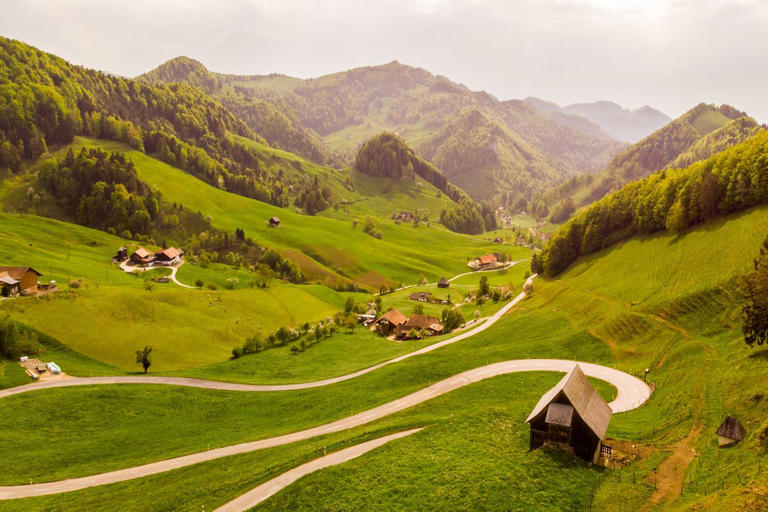
Which Austrian Alpine region is right for you?
With epic scenery and fresh mountain air guaranteed, Austria’s Alps offer travellers an inviting mix of culture, relaxation and adventure. Find out which area would suit you this summer.

One of Europe’s top skiing destinations in winter, the Austrian Alps are sometimes overlooked as a place to visit in summer. But once the snow seekers go into hibernation and the ski schools shut up shop, the mountains, meadows and valleys here take on a different look — and other activities take centre stage. You’ll find hiking, climbing and biking routes across the Alps, as well as beautiful lakes to swim in. Travellers chasing an action-packed break can try cycling in Kitzbühel or paragliding in St Anton, while those in search of peace and quiet could venture to the nature park in Zillertal. For culture and food, visit the bustling city of Innsbruck or head to Paznaun-Ischgl. Here, discover the right Austrian Alpine region for you.

Best for: a city break This mid-Alpine urban centre in the west of the country is the gateway to the Tyrolean mountains. For many, it offers the best of both worlds, with an attractive old town, interesting sights — such as the Goldenes Dachl (Golden Roof) — and the Nordkette Cable Car that cruises up to the surrounding peaks. Summer brings a fun programme of events, including a series of open-air concerts held in the courtyard of the Kaiserliche Hofburg (Imperial Palace). Learn about local history and culture while paddling on the River Inn on a city rafting tour with Stubai Rafting or try Up Stream Surfing , a fun combination of river surfing and wakeboarding.
Best for: mountain biking A place that holds many accolades for its skiing facilities, glitzy Kitzbühel also flexes its muscles in summertime. Take biking, for example — the area has hosted a cycling marathon, Der Kitzbüheler Radmarathon , since 2021 and boasts one of the most challenging road ascents in Austria: the Kitzbüheler Horn. Mountain bikers will love the recently opened Sonnenrast trail or the single-track Hahnenkamm route, which runs all the way back to the town.

Paznaun-Ischgl
Best for: Alpine cuisine Cool air and rocky peaks see cyclists flock to the 25-mile-long Paznaun Valley in summer for events such as the E-Bike World Championship , but there's another draw here, too. Alongside Ischgl’s high-end restaurants are a number of rustic mountain huts, which from July to October offer seasonal dishes developed by local chefs. Traditional cooking is combined with gourmet flair, with last year’s highlights including Alpine beef with wild herbs, and nettle ravioli with barley, cheese and chicory. Also, be sure to taste the region's signature cheese, Paznauner almkäse (mountain cheese), which gets its distinct taste from alpine herbs.
Schladming-Dachstein
Best for: views With more than 300 lakes and 100 waterfalls, the Schladming-Dachstein region is one of the most water-rich in Austria — take a short hike to Spiegelsee on the Reiteralm to see the mountains mirrored on the glass-clear water of the lake. The region's standout feature, however, is the majestic Dachstein Mountain . The mountain station at 2,700m above sea level is easily reachable by cable car and offers views as far as the Czech Republic and Slovenia. A suspension bridge, a viewing platform and the snappily titled ‘Stairway to Nothingness’ await visitors here, while a shiny new cable car station is scheduled to open in May 2024.

St Anton am Arlberg
Best for: outdoor activities Known as the birthplace of Alpine skiing, St Anton am Arlberg has a fascinating history that’s shared with visitors year-round at the local Museum of St Anton am Arlberg . In warmer months, the town provides the perfect base from which to try a whole host of outdoor activities. Adrenaline-seekers can try paragliding or canyoning, while those seeking relaxation can unwind at the Mountain Yoga Festival St Anton — and those wanting a bit of everything can make for the action-packed Mountain Sports Festival . Whatever you go for, St Anton am Arlberg is easy to reach by train thanks to regular high-speed connections from Vienna and Zurich.
St Johann in Tirol
Best for: local charm St Johann in Tirol sits at the foot of the impressive Wilder Kaiser Mountains, alongside the charming villages of Oberndorf, Kirchdorf and Erpfendorf. There are ample activities on offer in the region, including hiking, road cycling and mountain biking, golf and swimming. For a true taste of the area, check out the many local farm shops and cafes to pick up outstanding fresh produce or visit the traditional St Johann Weekly Market to sample regional specialities such as brodakrapfen (a pasty-like snack filled with potato and cheese).

Zell am See-Kaprun
Best for: swimming and watersports On a calm day, the mountains around Lake Zell are reflected in the clear water below. Refreshing water temperatures and lakeside lidos make this Salzburgerland spot popular for swimming, as well as stand-up paddleboarding, windsurfing and sailing. Not far away is the modern Tauern Spa , with 12 pools and a selection of wellness areas including 10 saunas and steam rooms — try the rock crystal sauna with different infusions such as mint and citrus or lemongrass and eucalyptus, and be sure to set aside ample time to take in the surrounding scenery.
Best for: nature The wide Zillertal valley is located to the east of Innsbruck. There are plenty of areas dedicated to outdoor sports here, including an extended ski season and year-round activities on the Hintertux Glacier , but also parts that remain almost untouched. The High Mountain Nature Park Zillertal Alps covers a 160sq-mile area and is home to thousands of animal species, including 500 kinds of butterfly, and more than 1,000 plant varieties. From May to October, themed hiking tours led by the experienced park guides — such as the ‘herb walk’ or wildlife watching — provide fascinating insights into the local flora and fauna.
Related Topics
- ADVENTURE TRAVEL
You May Also Like

6 wild ways to take to the water in Austria

What to pack for a cruise

The best Easter gift ideas for adults who love travel

Comedian Dom Joly on his quest to find the end of the earth in Atlantic Canada

The best gifts for women who love travel and adventure

The top 3 adventures in The Florida Keys & Key West

How to plan a trip to Bali, Indonesia
- Terms of Use
- Privacy Policy
- Your US State Privacy Rights
- Children's Online Privacy Policy
- Interest-Based Ads
- About Nielsen Measurement
- Do Not Sell or Share My Personal Information
- Nat Geo Home
- Attend a Live Event
- Book a Trip
- Inspire Your Kids
- Shop Nat Geo
- Visit the D.C. Museum
- Learn About Our Impact
- Support Our Mission
- Advertise With Us
- Customer Service
- Renew Subscription
- Manage Your Subscription
- Work at Nat Geo
- Sign Up for Our Newsletters
- Contribute to Protect the Planet
Copyright © 1996-2015 National Geographic Society Copyright © 2015-2024 National Geographic Partners, LLC. All rights reserved

COMMENTS
Switzerland is relatively small, but in spite of this, it is bursting at the seams with natural attractions and boasts some of the most beautiful destinations in the world. With more than two hundred peaks higher than 3,000 meters above sea level, many of the best places to visit in Switzerland are dominated by glaciers and soaring alps.
2. Gornergrat. 5,240. Mountains. The Gornergrat (3,089 m) is one of those places that everyone should visit at least once in a lifetime. The mountain panorama and the glorious view of the Matterhorn are unforgettable. With its sunny observation platform accessible all year, the Gornergrat, at an altitude of 3,089 m, has been one of Switzerland ...
2. The Charming Village of Zermatt and the Iconic Matterhorn. Experience Switzerland in style at this unique place to visit in the Swiss Alps. Zermatt, a picturesque village nestled at the foot of the mighty Matterhorn, is a must-visit.This charming village is a top international resort that offers a unique blend of quaint chalets, world-class restaurants, and hotels.
Hut to hut hiking in the Swiss Alps is a popular summertime activity ©AscentXmedia/Getty Images 4. Hike hut to hut. Switzerland's mountains are strewn with overnight cabins in such amazing places - on mountain tops, overlooking glaciers, in remote spots hours from anywhere - that it's hard to imagine how on earth they were built in the first place.
Top Things to Do in Swiss Alps, Switzerland. Places to Visit in Swiss Alps. Explore popular experiences. See what other travellers like to do, based on ratings and number of bookings. See All. Rail Tours (91) Day Trips (64) Mountains (63) Full-day Tours (146) Nature and Wildlife Tours (119)
Found in the Engadin valley in Switzerland, St Moritz is another notable sporting town. And if you're wondering where the Swiss Alps are at their most striking, this place is definitely up there, with unbeatable views of Europe's majestic mountain range. The Winter Olympics have been held twice in St Moritz, first in 1928 and again in 1948.
The Alps are the most extensive and highest mountain range in Europe covering 1,200 kilometers. There are eight countries in Europe that have mountains in this range - France, Switzerland, Monaco, Italy, Liechtenstein, Austria, Germany, and Slovenia. This stretches from Nice in France all the way to Vienna in Austria.
Enjoy 11 relaxed days of picturesque scenery, breathtaking views, romantic towns, eternal ice and snow, rural villages and historic buildings. Visit Zurich, Lucerne, Interlaken, Geneva and many other highlights. view trip ⤍. 7 days / from2700 USD. Lakes and mountains for the whole family in Italy & Switzerland.
Aletsch Glacier. 38. Covering a total area of over 45 square miles (72 square kilometers, the Great Aletsch Glacier is the largest glacial landscape in Europe. It's located in the eastern Swiss Alps flanked by the Eiger, Mönch, and Jungfrau mountains. More.
The Alps cover a significant portion of Switzerland, with over 200 peaks reaching heights of over 3,000 meters (9,800 feet) above sea level. Some of the most famous peaks include the Matterhorn, the Eiger, and the Jungfrau. Best Time to Visit the Swiss Alps. The Swiss Alps are a year-round destination, with each season offering unique experiences.
The Swiss Alps is easily one of my favorite regions in the world. Enjoy this 4K travel guide across Switzerland's iconic mountains. From the magical landscap...
3. Geneva and Lake Geneva. Best for a cosmopolitan city experience. In Switzerland's western crook, crescent-shaped Lake Geneva (Lac Léman to Francophones) is a joy to behold with its mountain backdrop, spirit-lifting views, vineyards and shoreline necklaced with handsome cities and castle-crowned towns.
Day 4: Drive to Engadine Valley Adventures. Visiting the Engadine Valley is an essential part of any Swiss Alps Switzerland itinerary. The Engadine is one of the highest inhabited valleys in Europe. For your stay, consider either Sylvaplana or Pontresina, each offering its unique charm. In Sylvaplana, we recommend Conrad's Mountain Lodge, known ...
Thun. Situated at the northwest end of its eponymous lake, Thun is considered the gateway to the Bernese Oberland. In addition to stunning views of the Aare River and Lake Thun, one of Switzerland's largest and loveliest lakes, the town boasts a dazzling white 12th-century castle. The castle itself is reason enough to visit the town of Thun.
St. Moritz. #13 in Best Places to Visit in Switzerland. Considered "the birthplace of Alpine winter tourism," St. Moritz welcomes travelers with world-class skiing, swanky hotels, renowned après ...
Nestled in central Europe and dominated by the Alps, the best places to visit in Switzerland are downright sublime. When it comes to jaw-dropping landscapes, quaint small towns, and enchanting cities that perfectly blend the past, present, and future, nowhere does it quite like Switzerland.
1. Bring Layers. The weather in the bucolic valleys of Switzerland vary dramatically from the weather at the top of the mountains and peaks in this region. Because the Swiss Alps straddle the northern European climate and the warmer southern European climate, the weather can be both cool and warm at the same time.
What You'll Need For A Hiking Trip In Switzerland. Subscribe to We Are Travel Girls. 8 Day Switzerland Hiking Trip Itinerary. Day 1: Wengen - Männlichen Trail. Day 2: Mürren - Gimmelwald Trail & The Mürren Flower Trail. Day 3: Schynige Platte - First. Day 4: Männlichen - Kleine Scheidegg - Wengen.
5. Mont Blanc. Altitude: 4,806 metres (15,768 feet) No round-up of Alpine peaks would be complete without Mont Blanc, the highest mountain in the Alps. Straddling the border between France and Italy, and reaching over 4,800 metres (15,748 feet) above sea level, Mont Blanc is an awe-inspiring sight.
Lucerne to Interlaken: 2 hours by train. Interlaken to Zurich Airport: 2 hours 15 minutes by train. As you can see with the travel times above, Zurich Airport to Lucerne is a fairly short trip, but once you add Interlaken into the mix (even if you skip Lucerne) the travel time starts to add up for a weekend visit.
Zermatt. First Class. Speak to a certified Switzerland specialist to start planning your tailor-made vacation... Call one of our experts or arrange a video appointment for ideas and advice. 617-223-4505. Make an inquiry. Samantha.
6. Lake Geneva. Lake Geneva. Lake Geneva, Europe's largest Alpine lake, straddles the Swiss/French border, and laps at the shores of some of Switzerland's most popular cities. The city of Geneva (in French Genève; in German Genf) sits between pretty snowcapped peaks at the point where the Rhône spills into Lake Geneva.
7. Train Ride Up The Glacier: Jungfrau. Sphinx Observatory, Jungfrau Plateau, Top of Europe, Swiss Alps, Switzerland. One of the best places to visit in Switzerland, Jungfrau has four towns namely Grindelwald, Murren, Lauterbrunnen, and Wengen.
According to Switzerland Tourism, 60% of tourists head straight for the Swiss Alps, and while it's undeniably a breathtaking spectacle, there's so much more to the picturesque nation than just its ...
One of Europe's top skiing destinations in winter, the Austrian Alps are sometimes overlooked as a place to visit in summer. But once the snow seekers go into hibernation and the ski schools ...